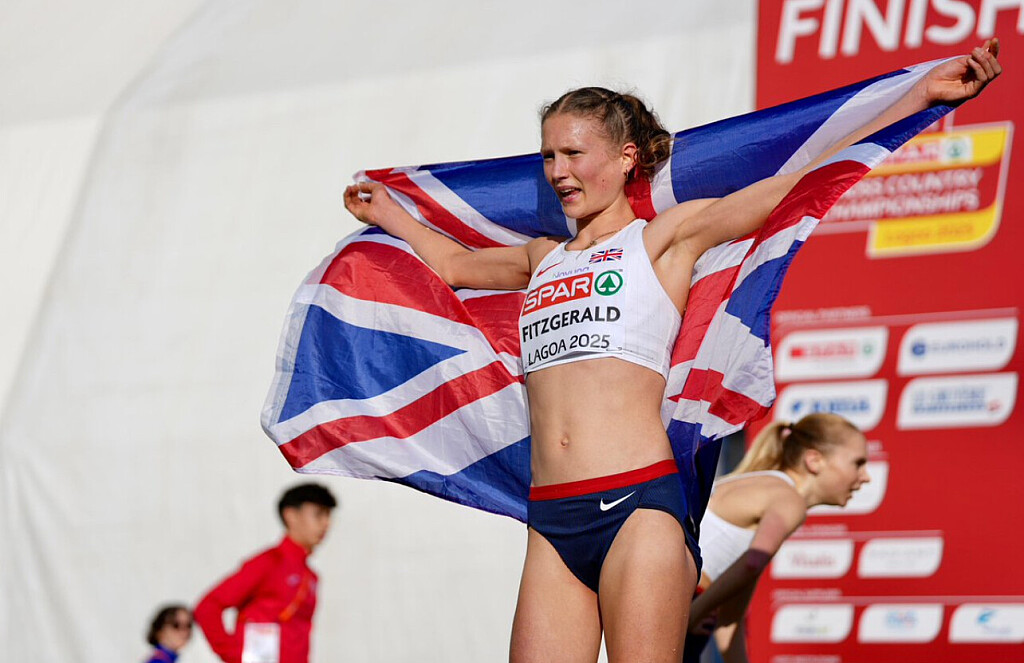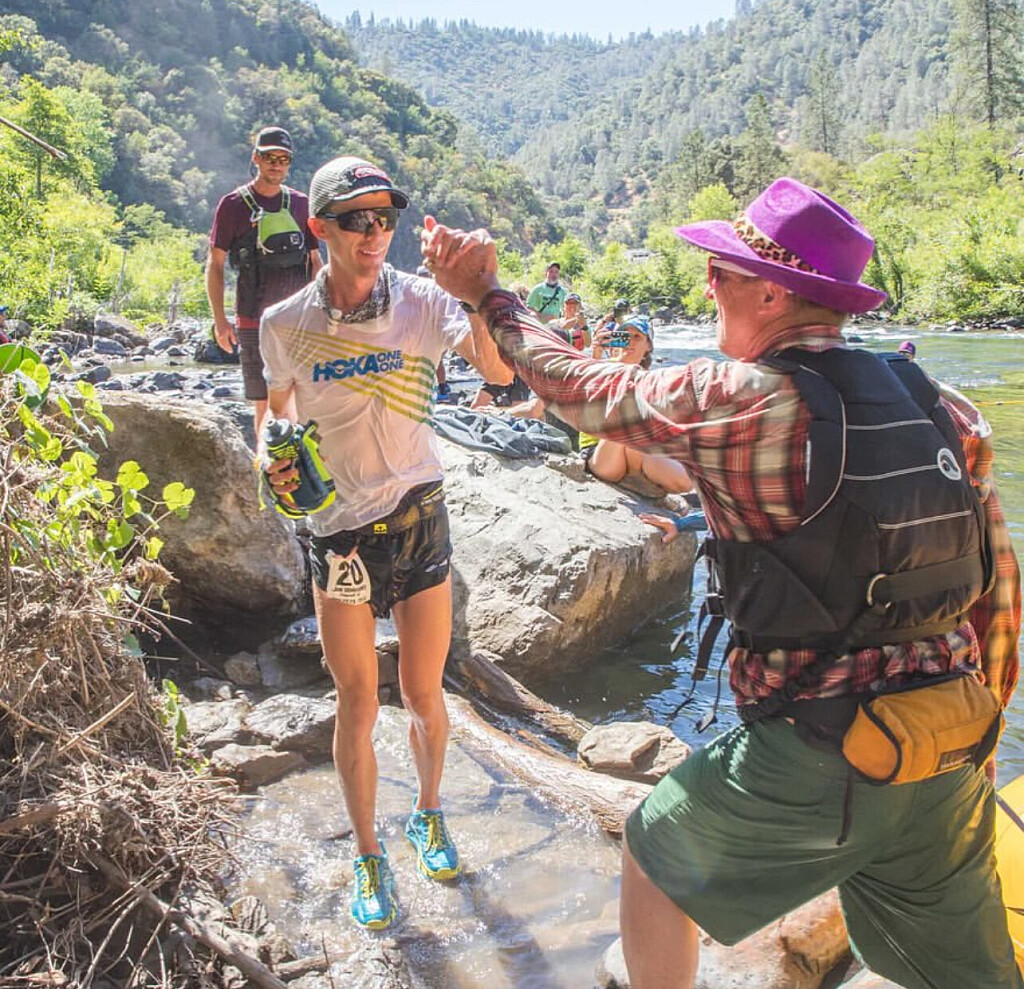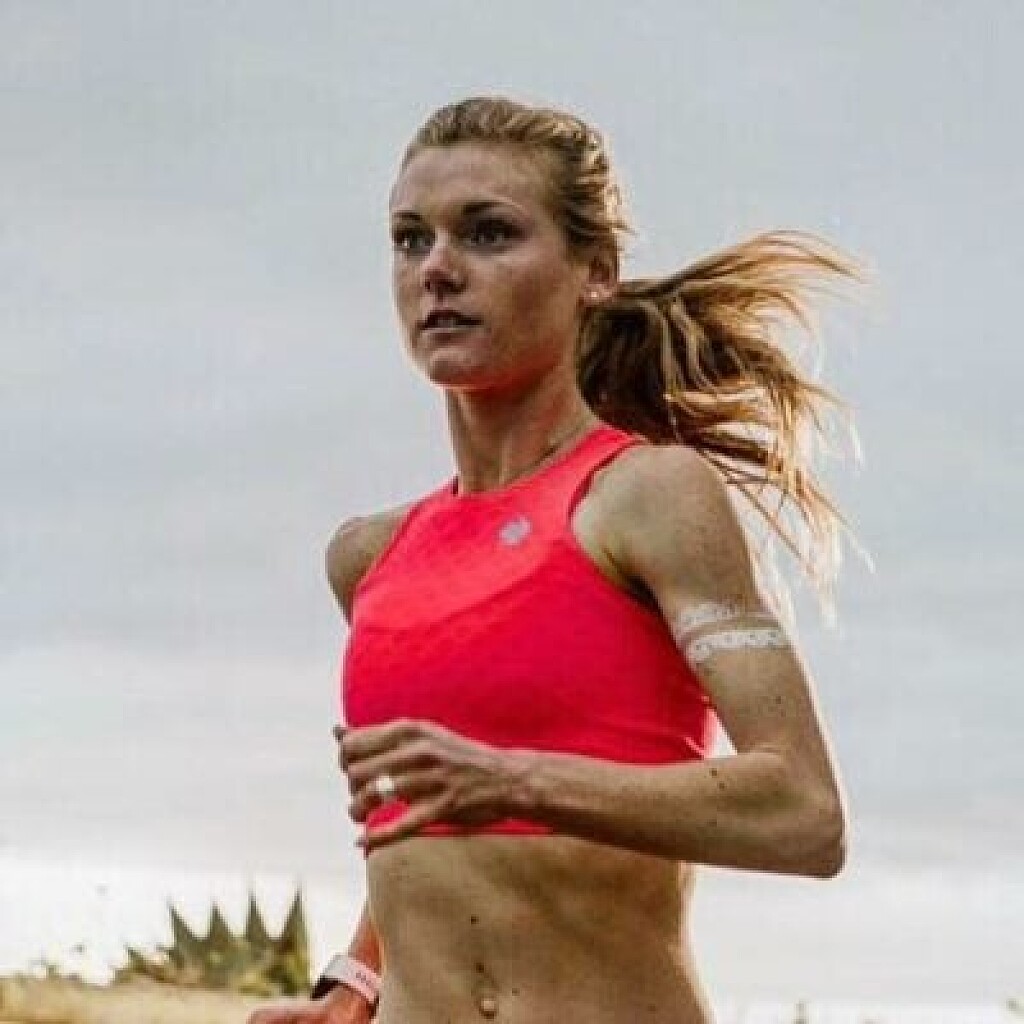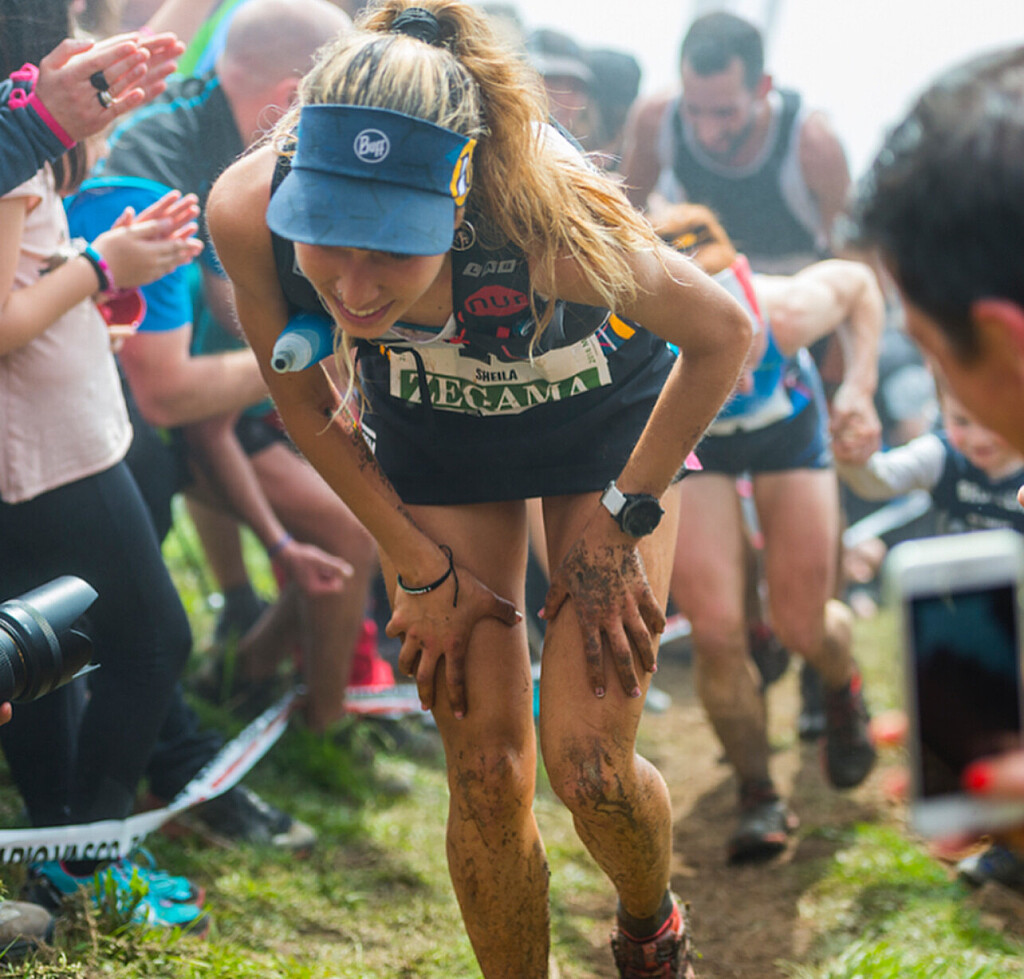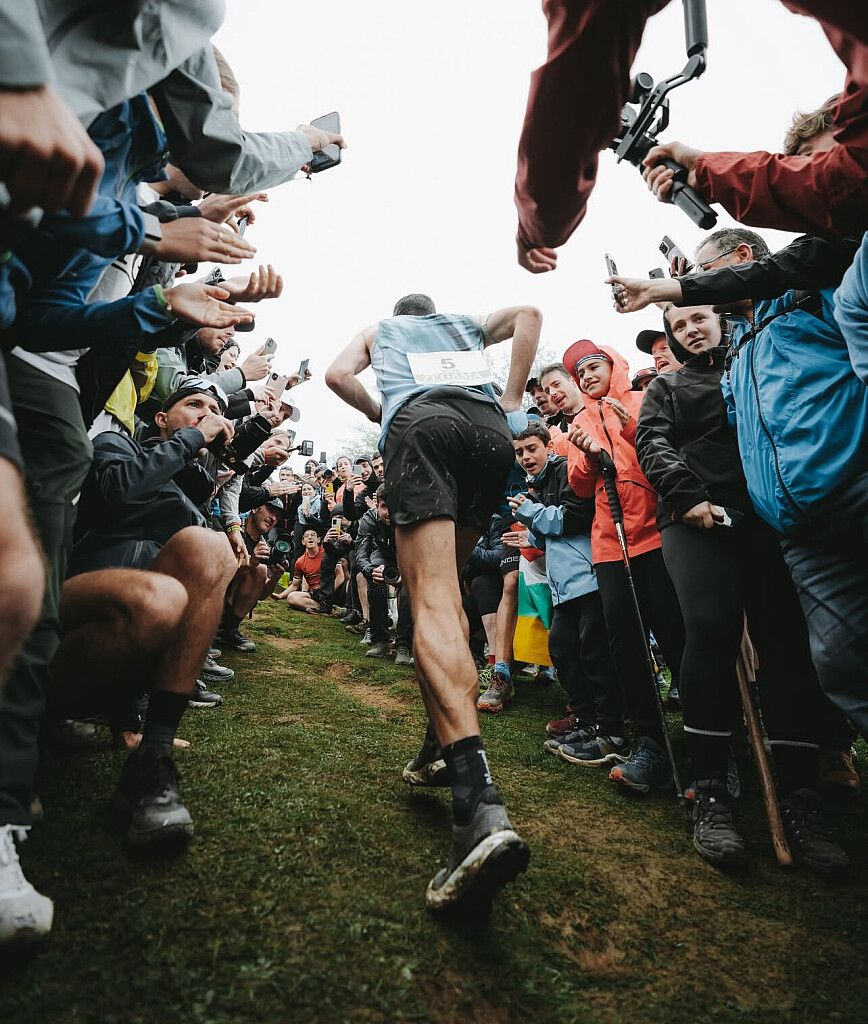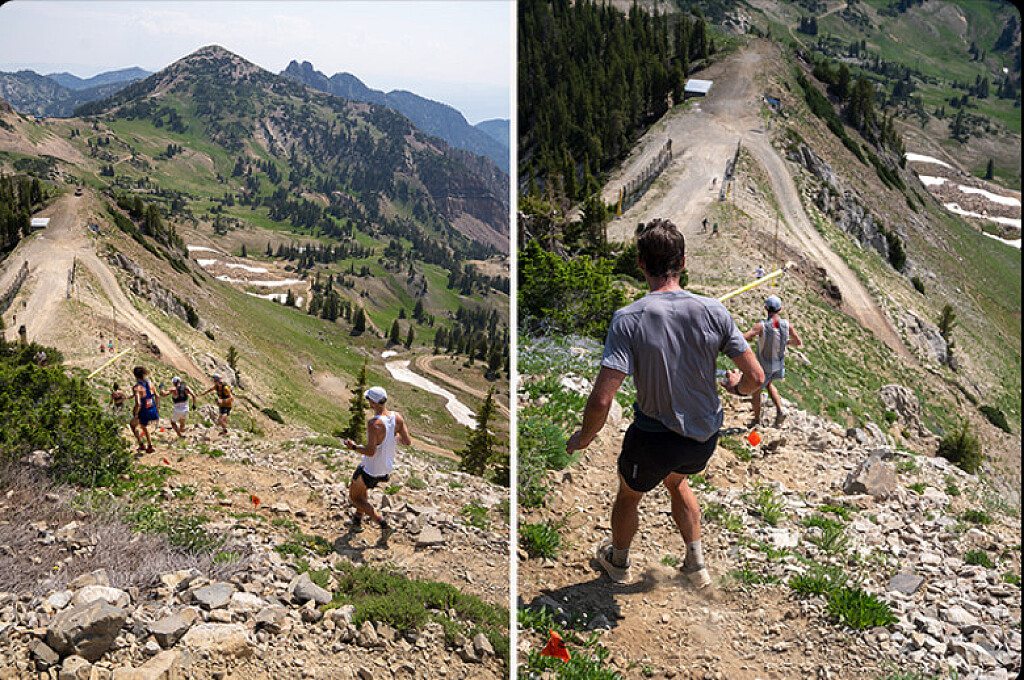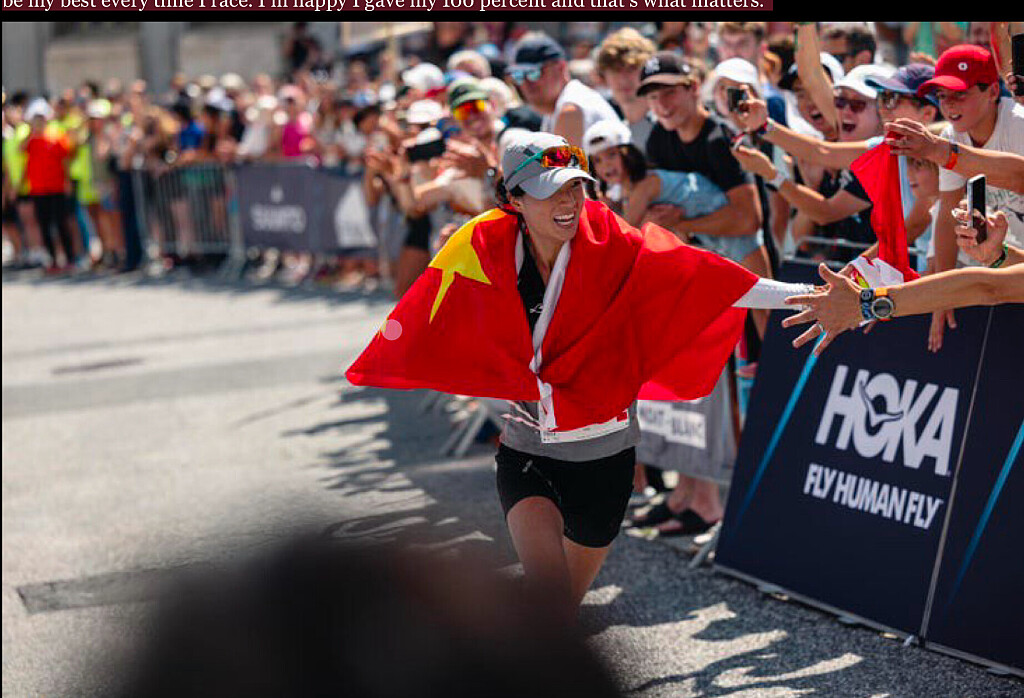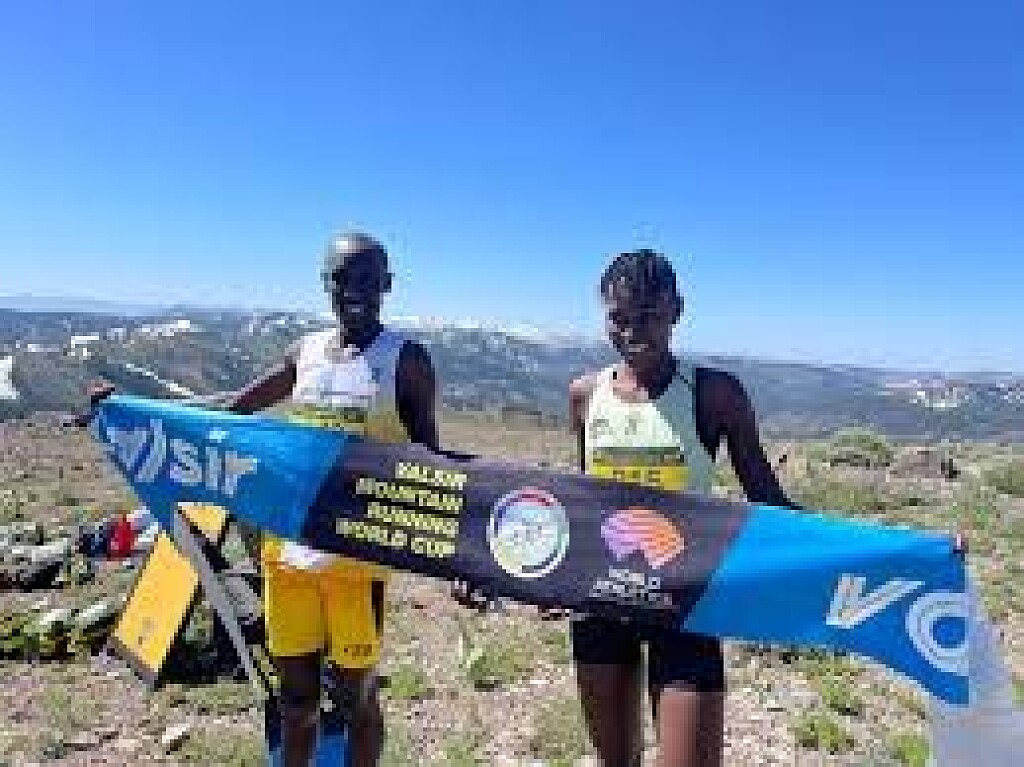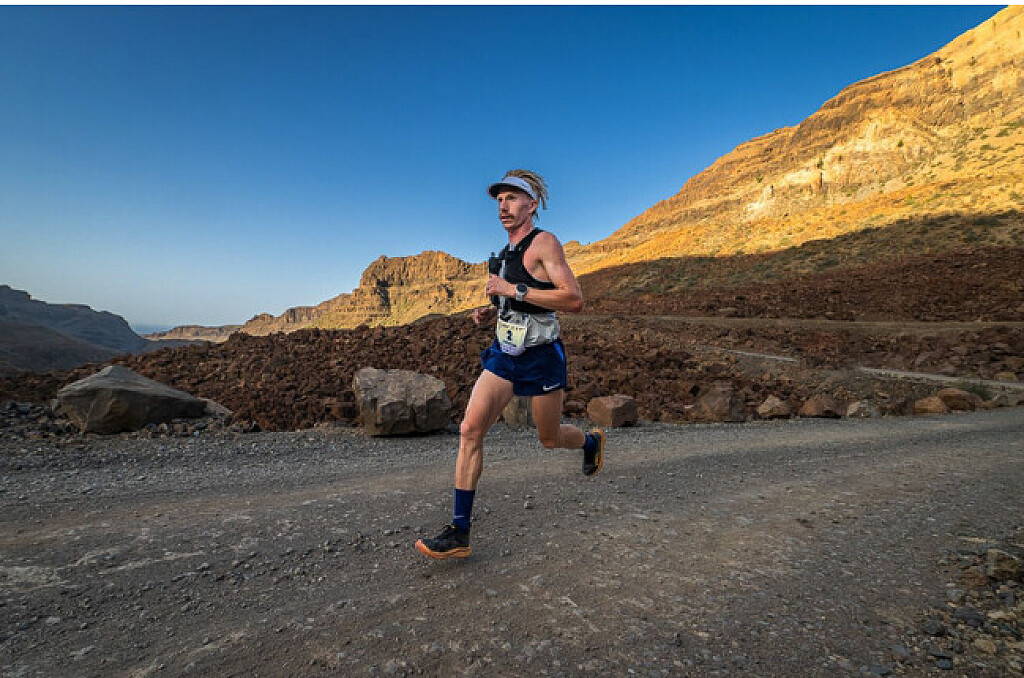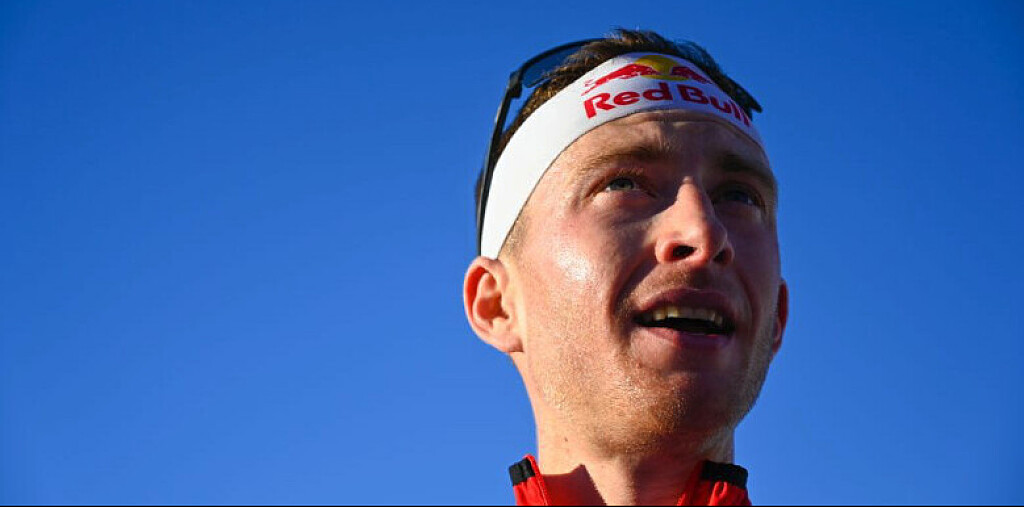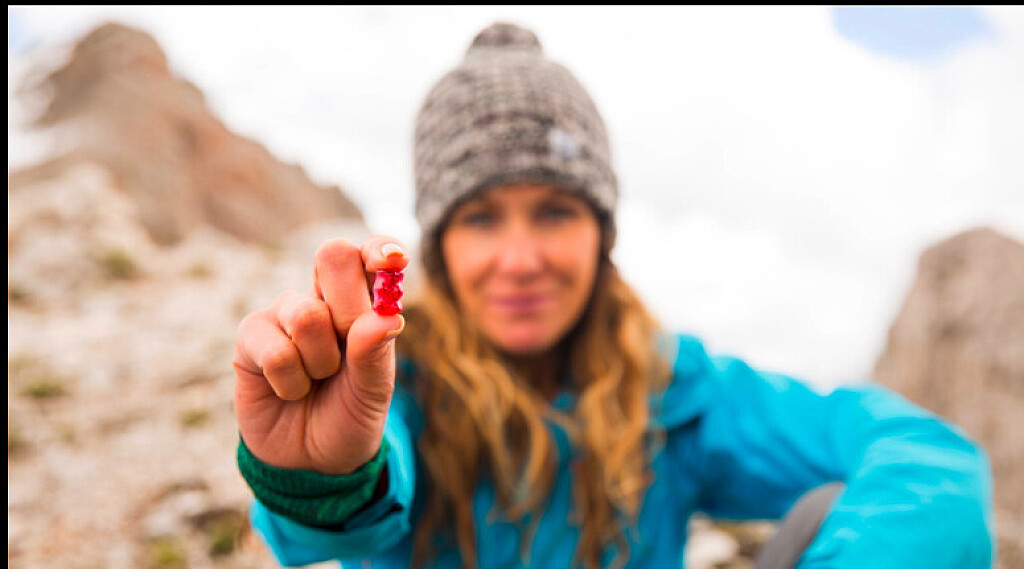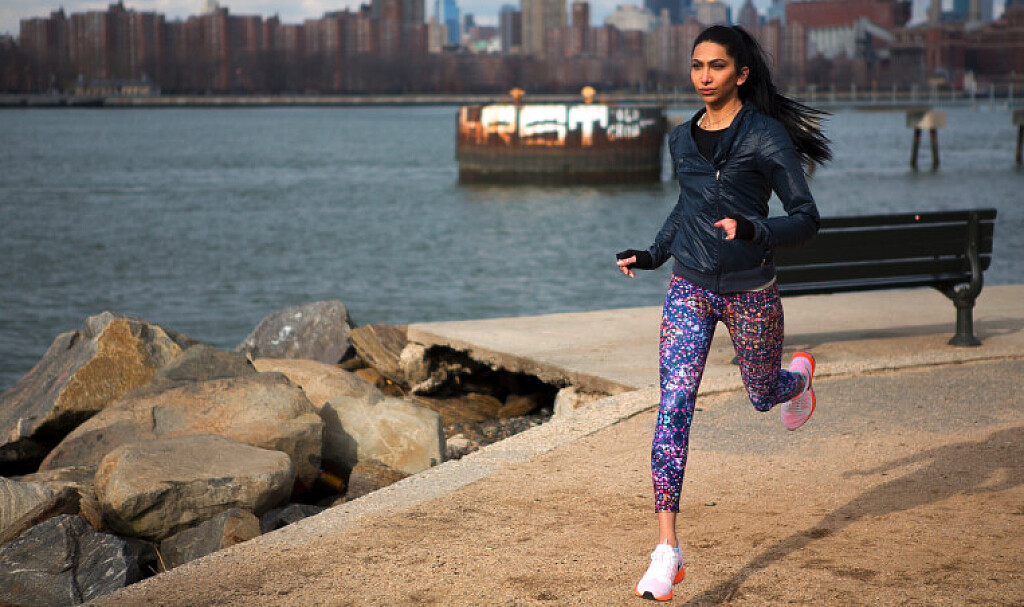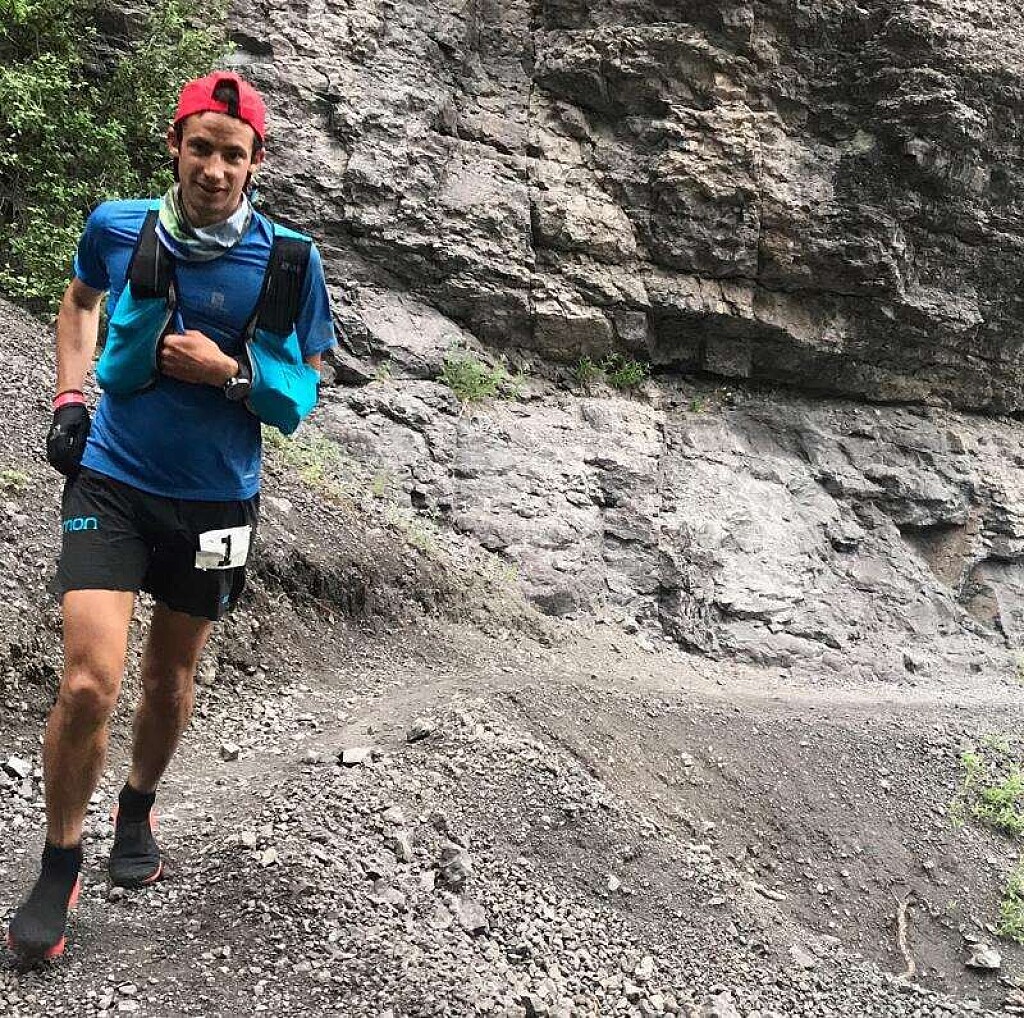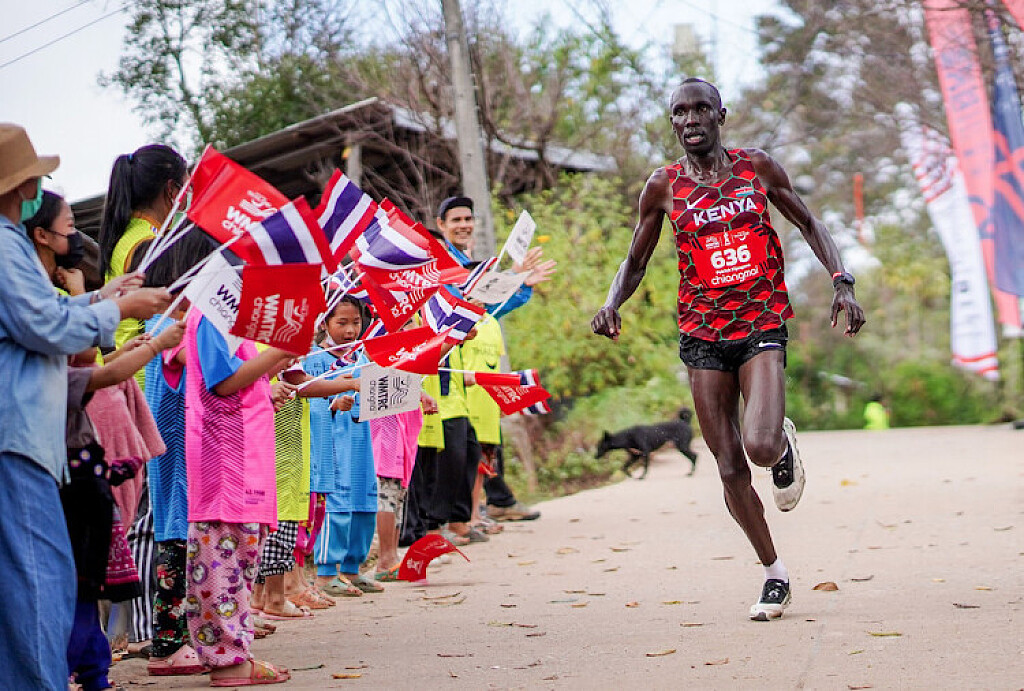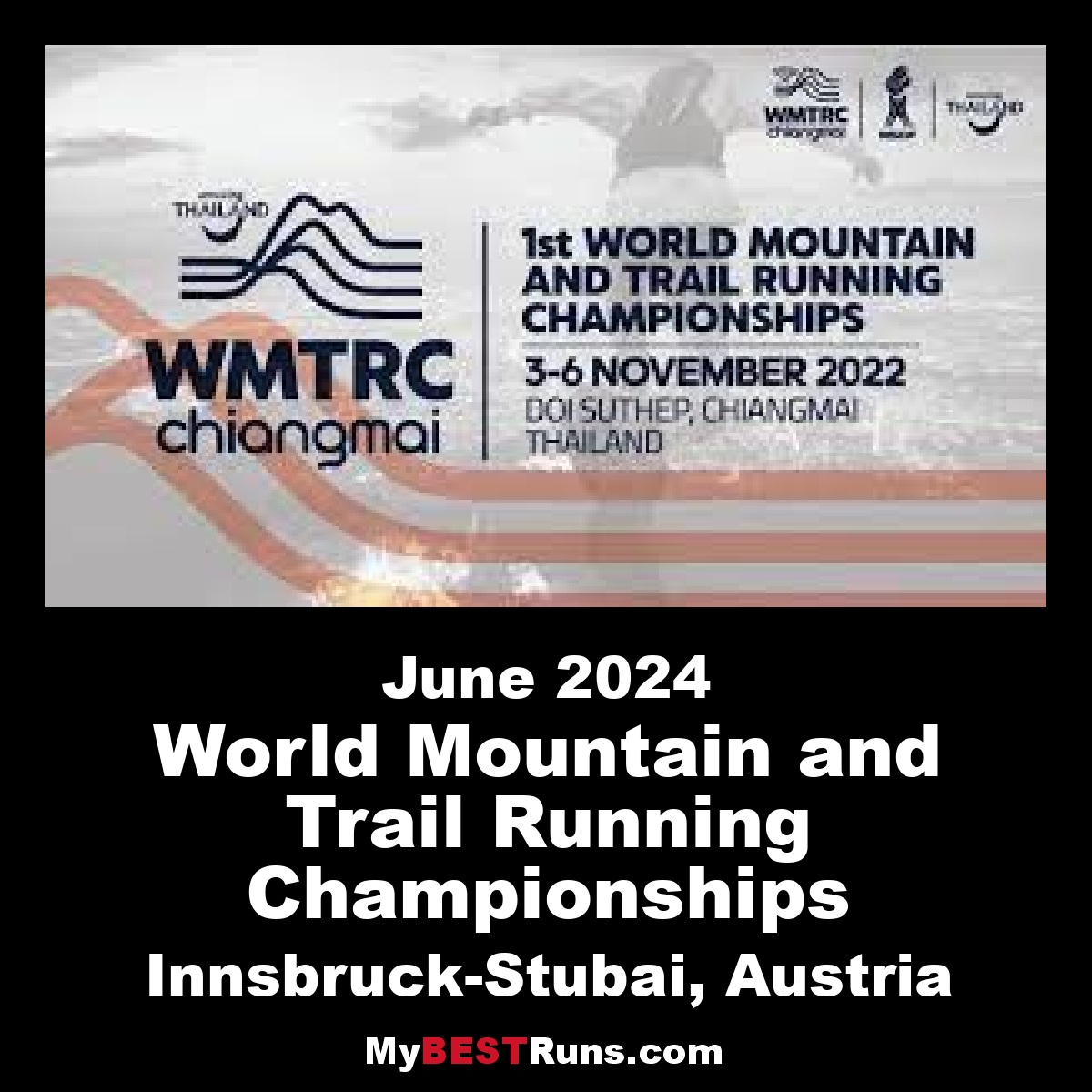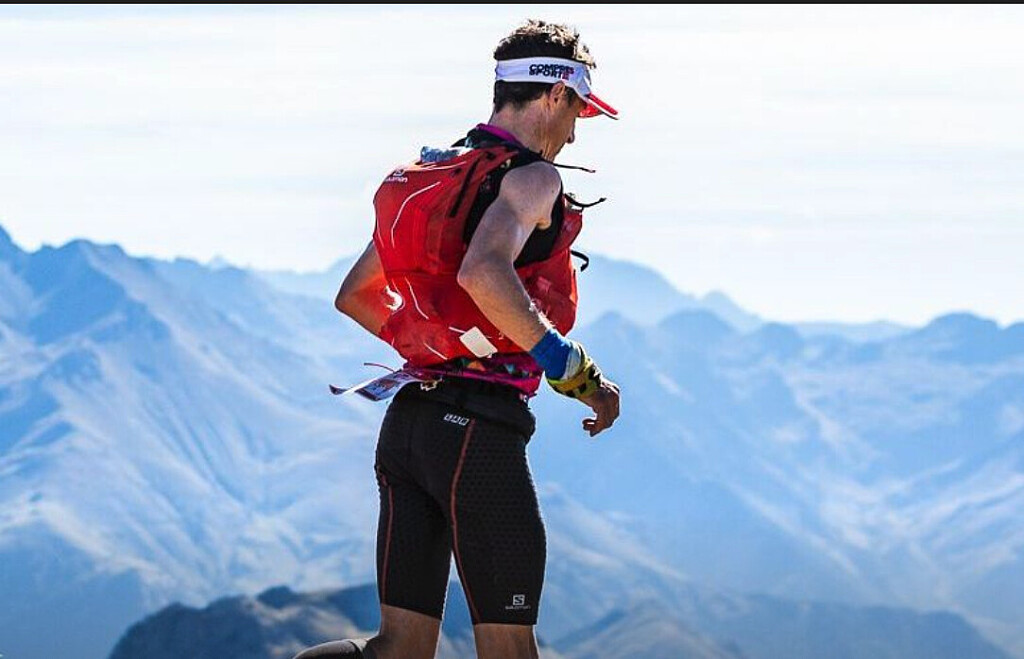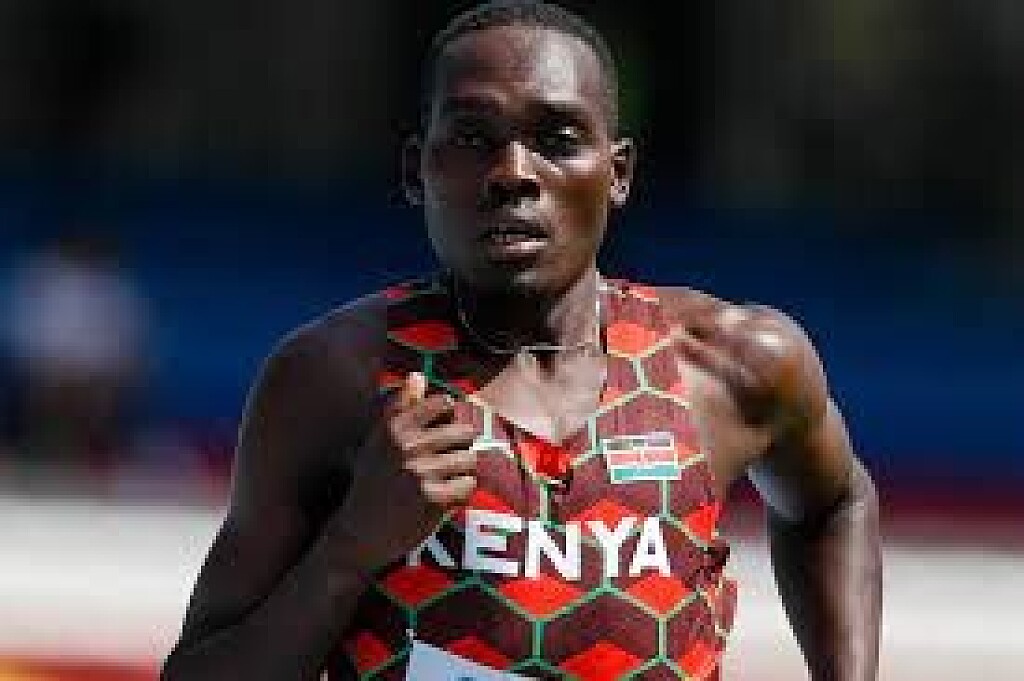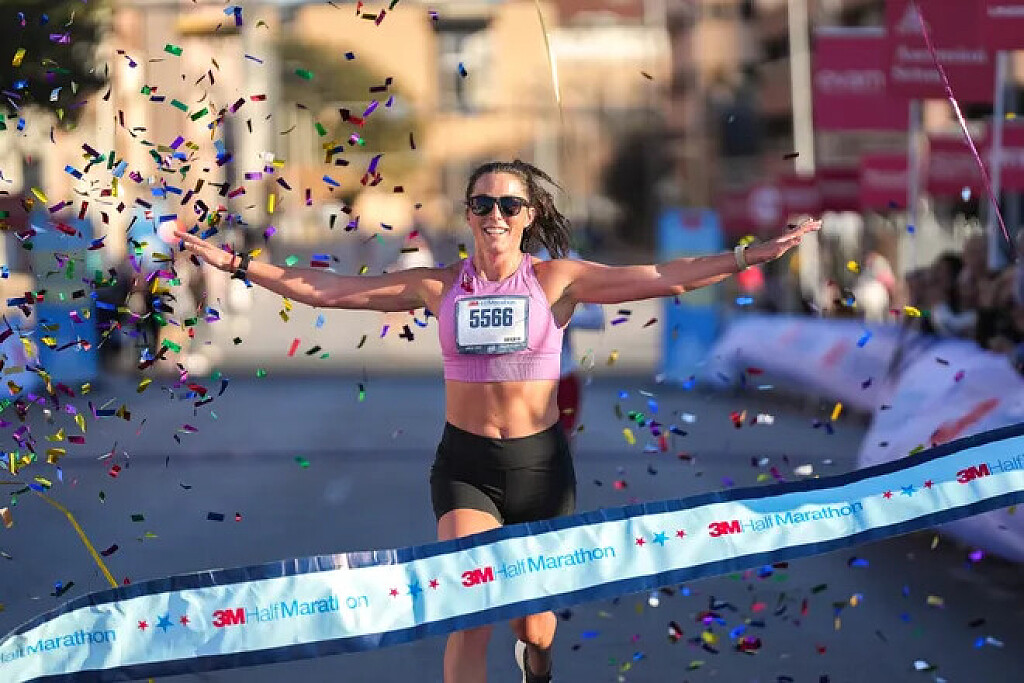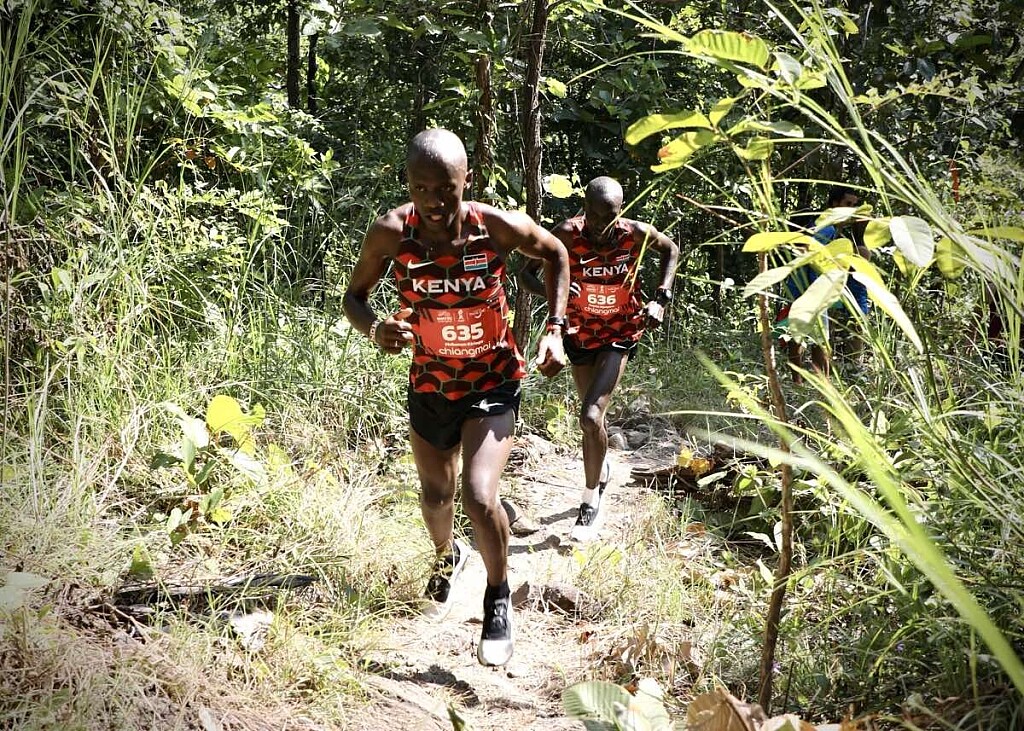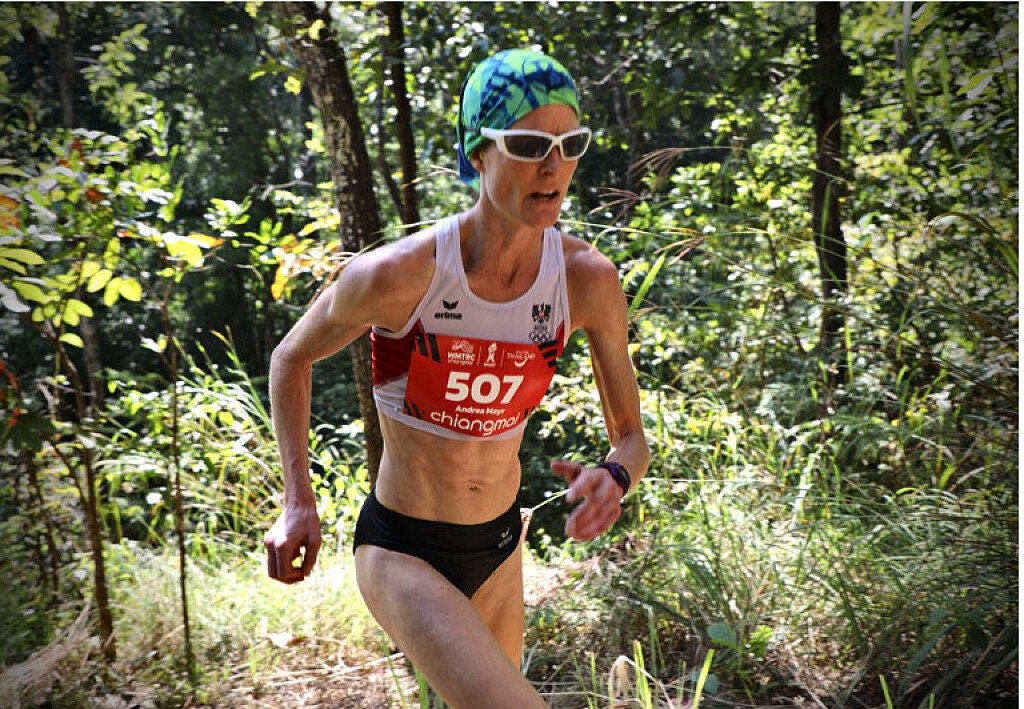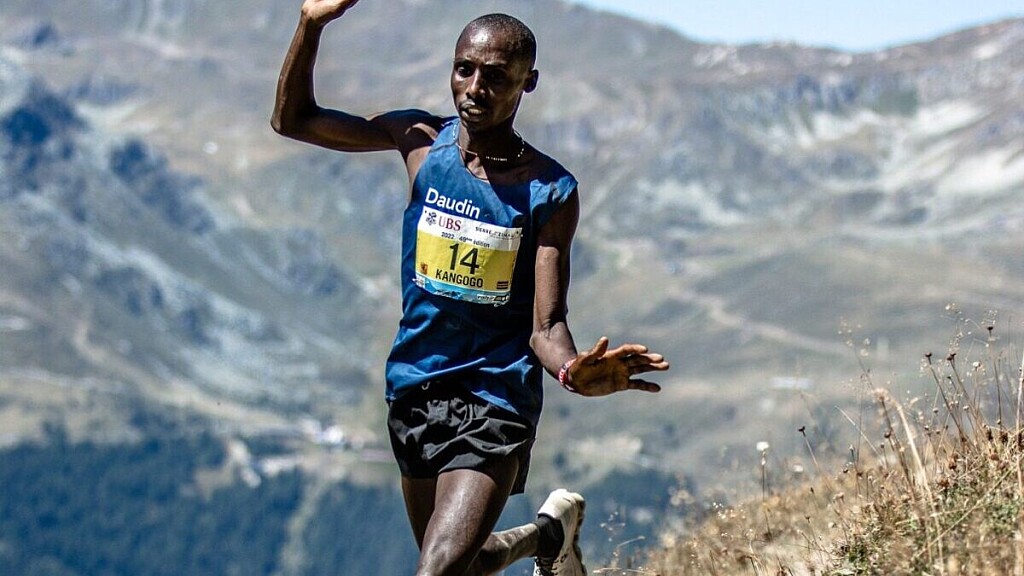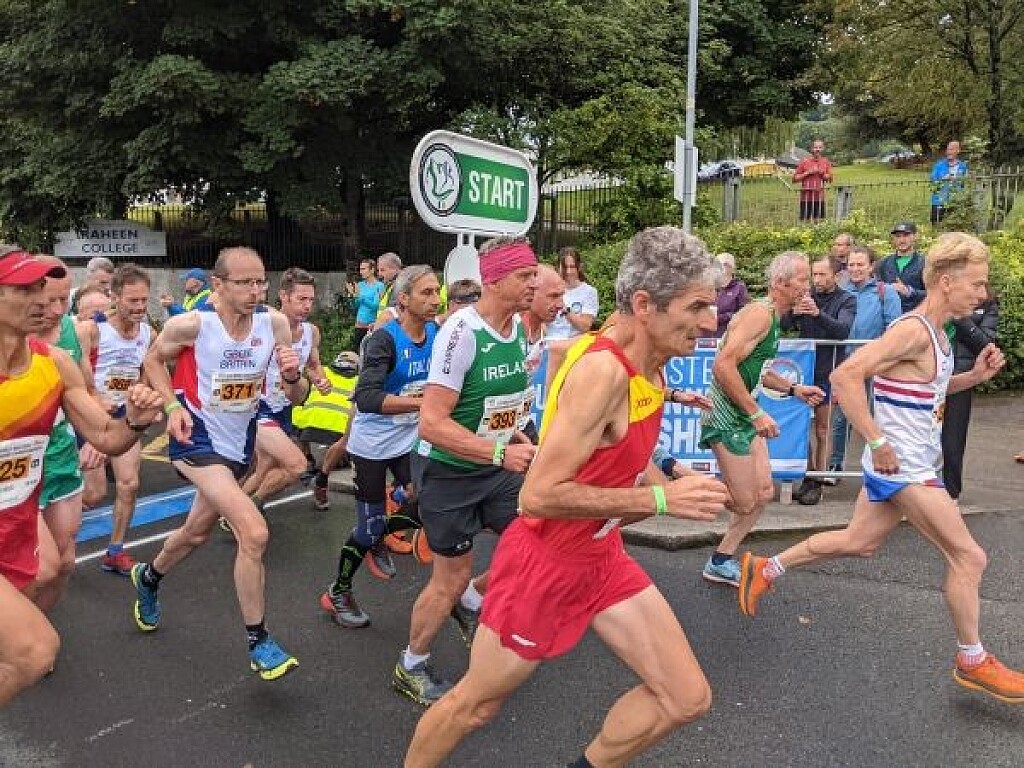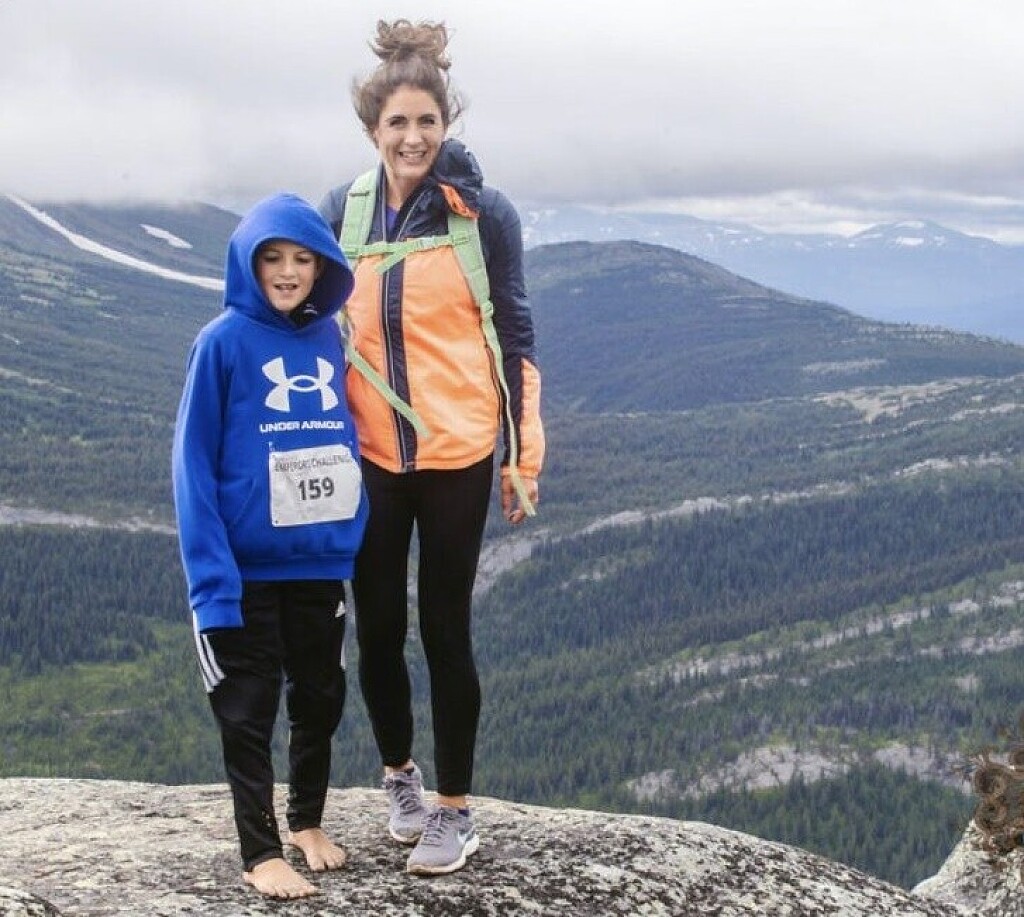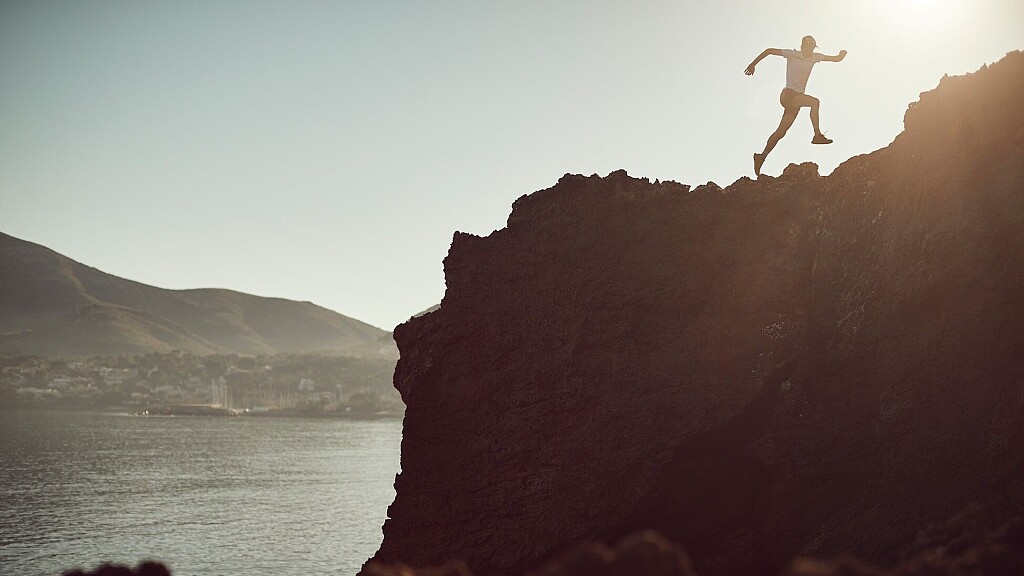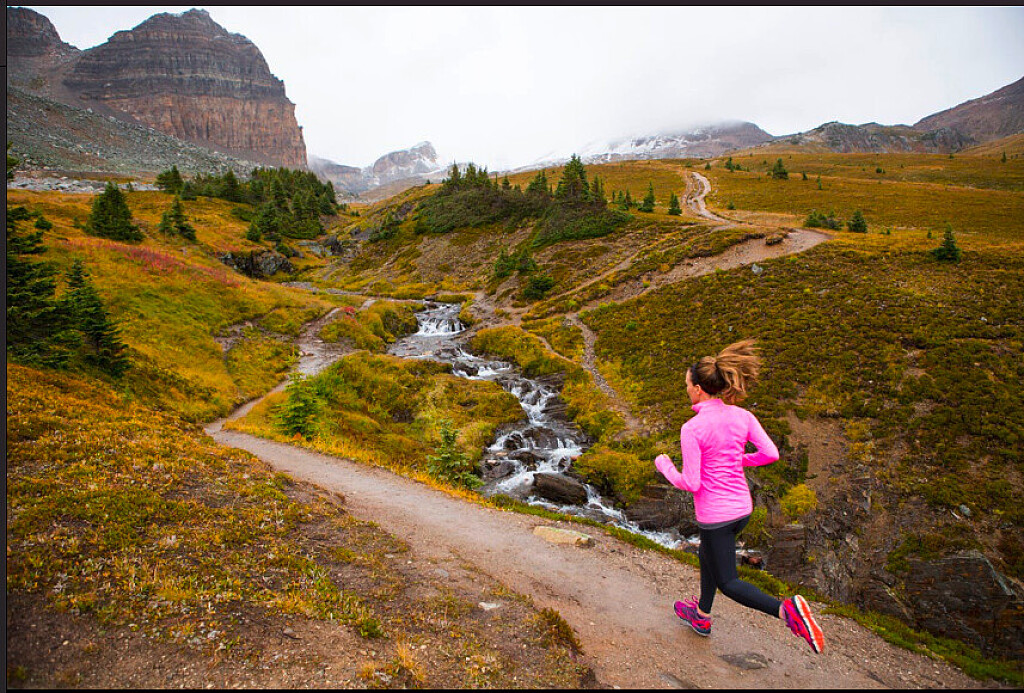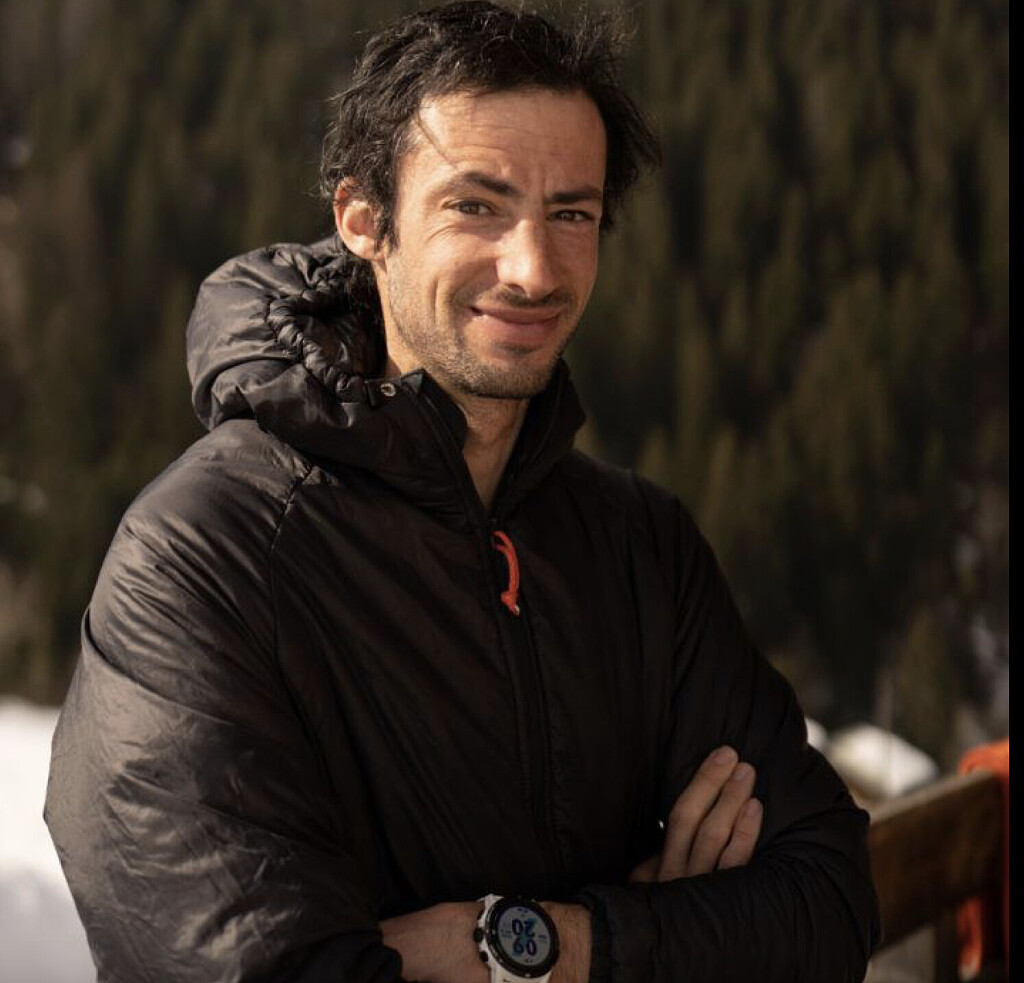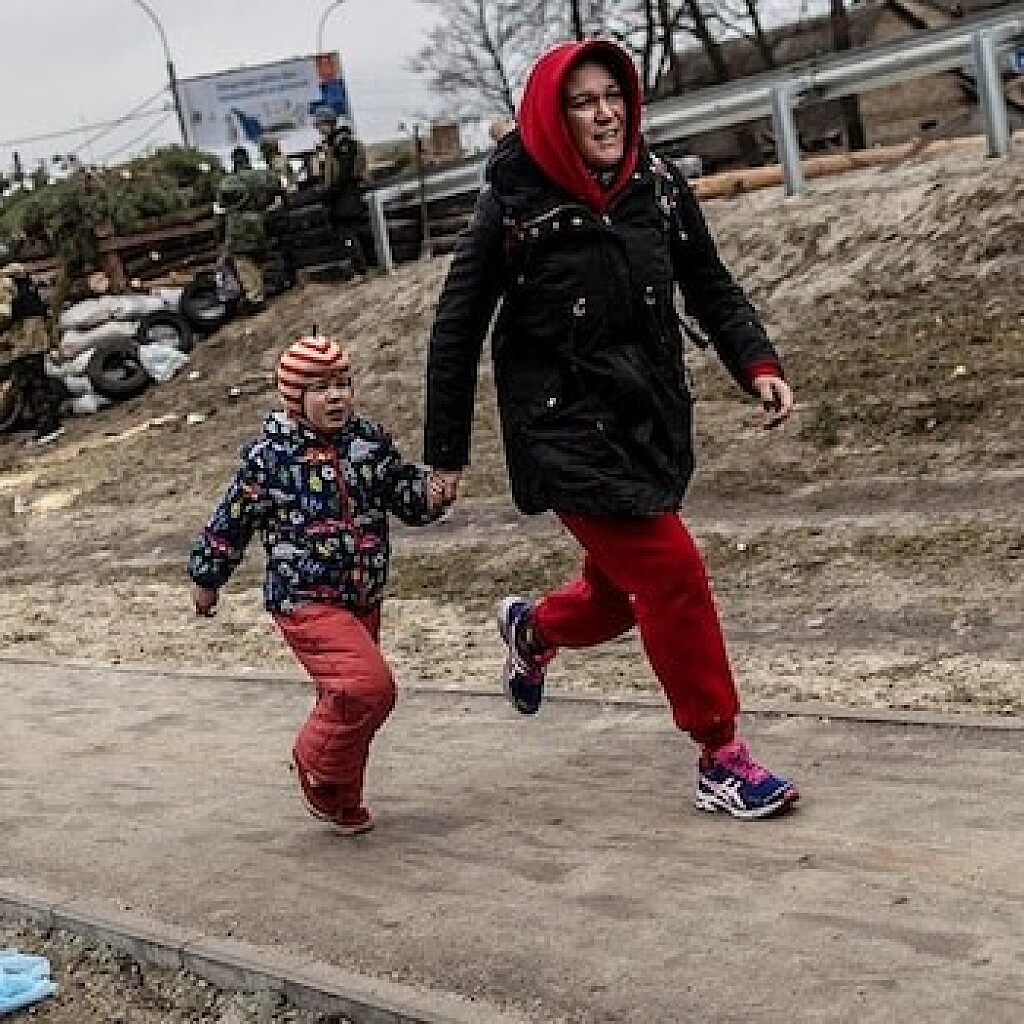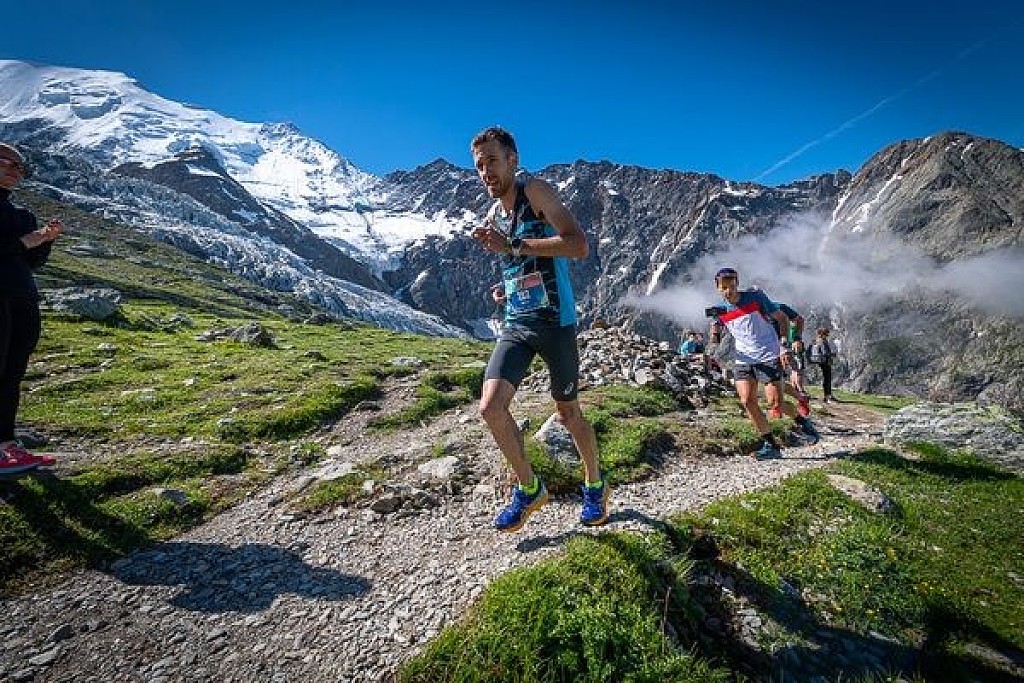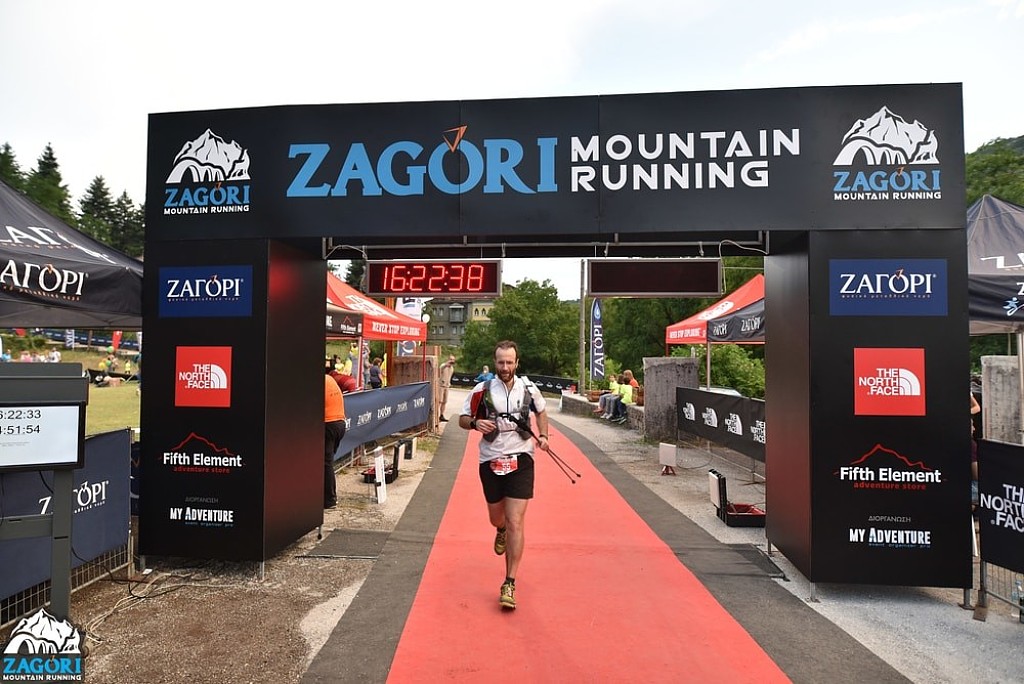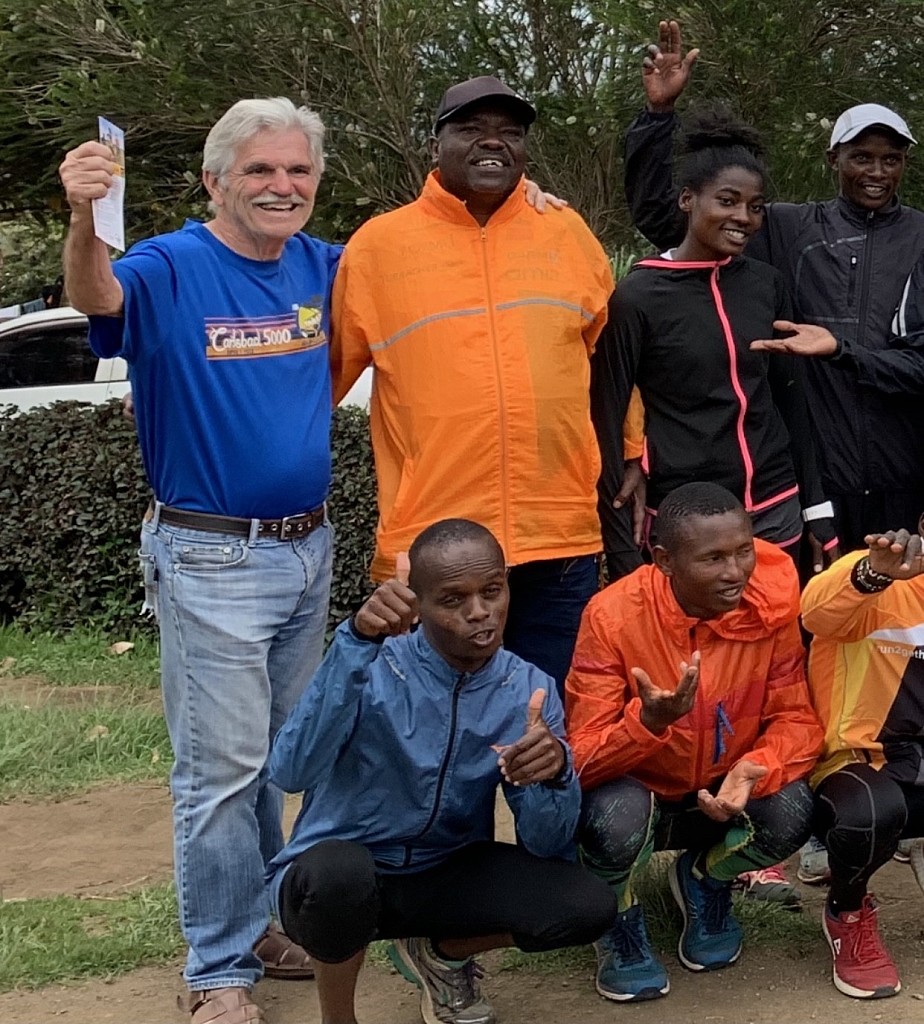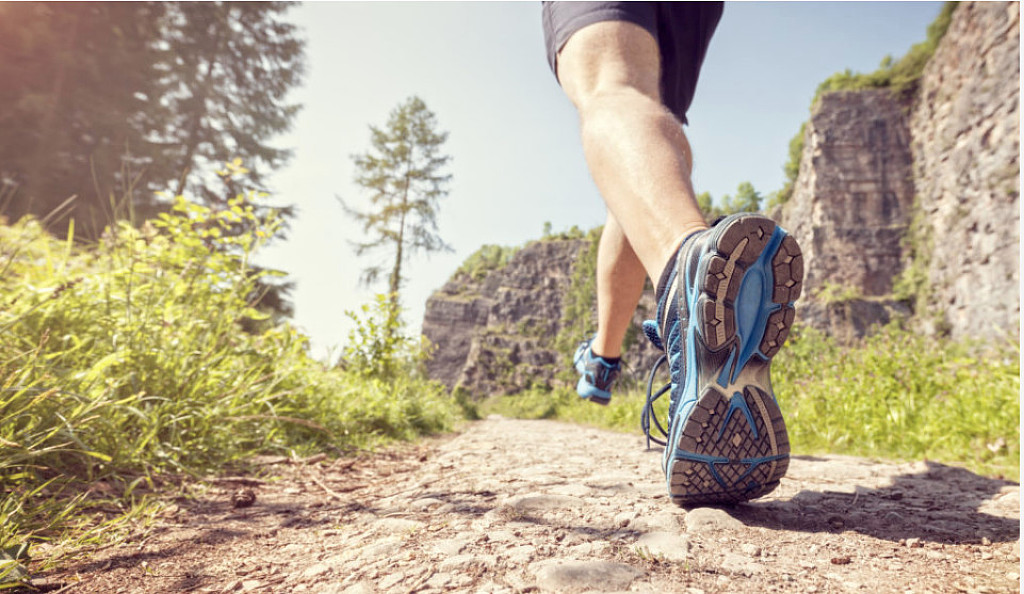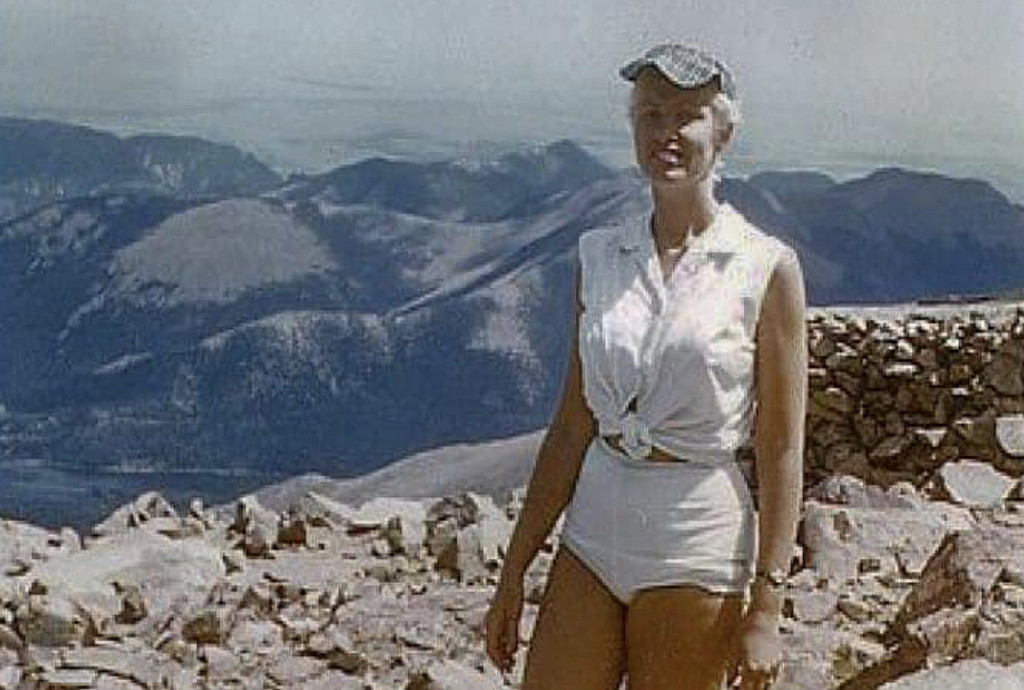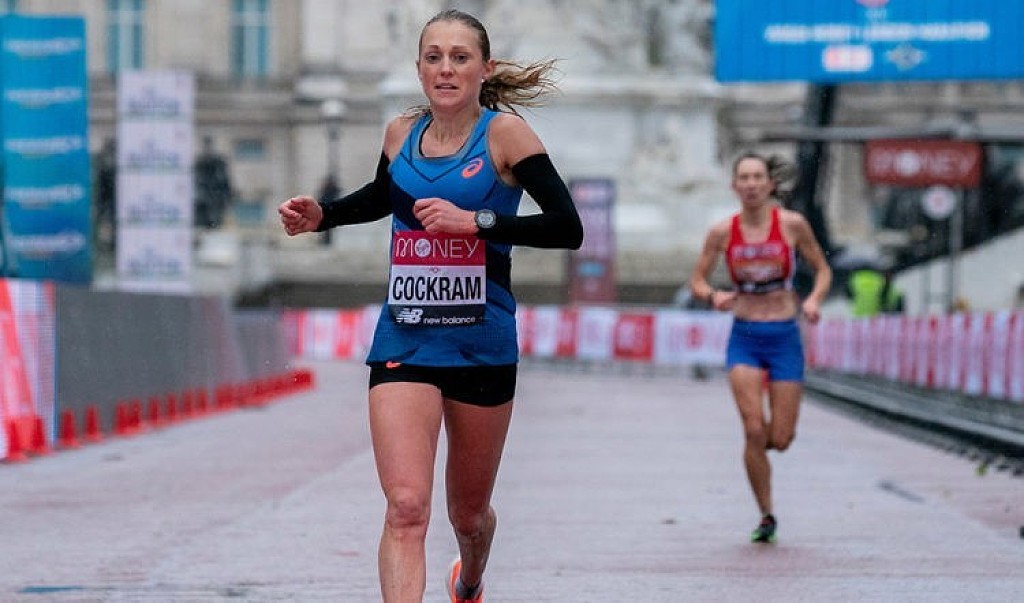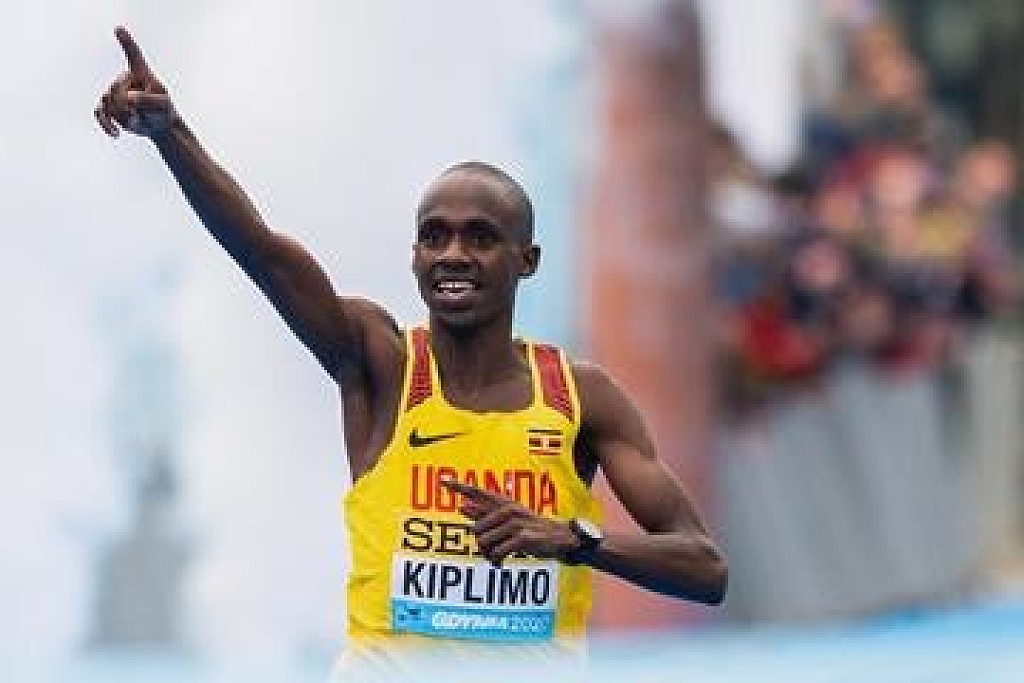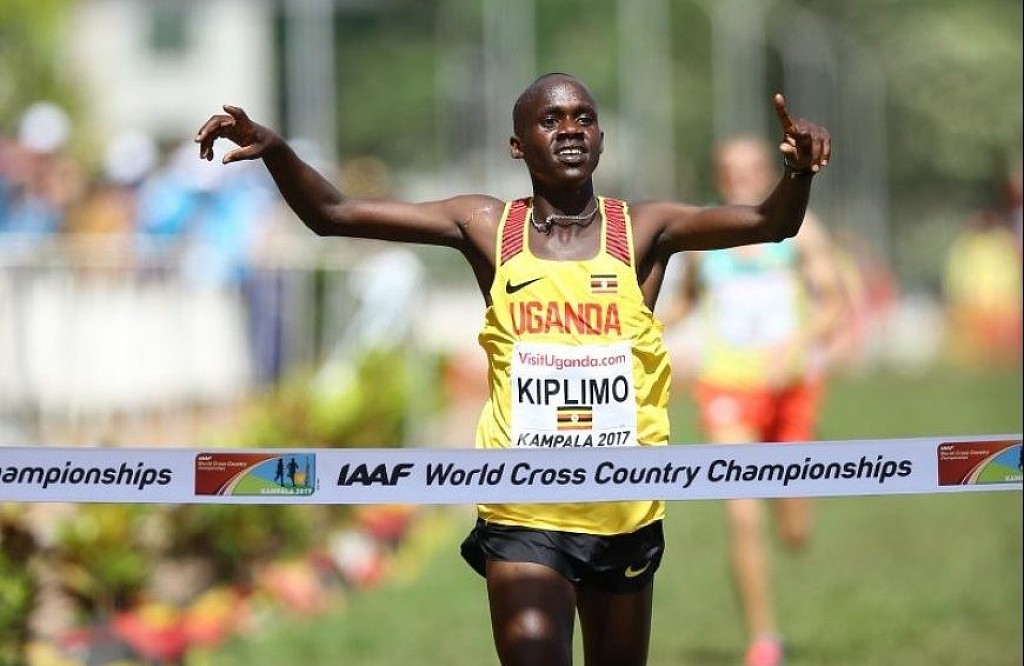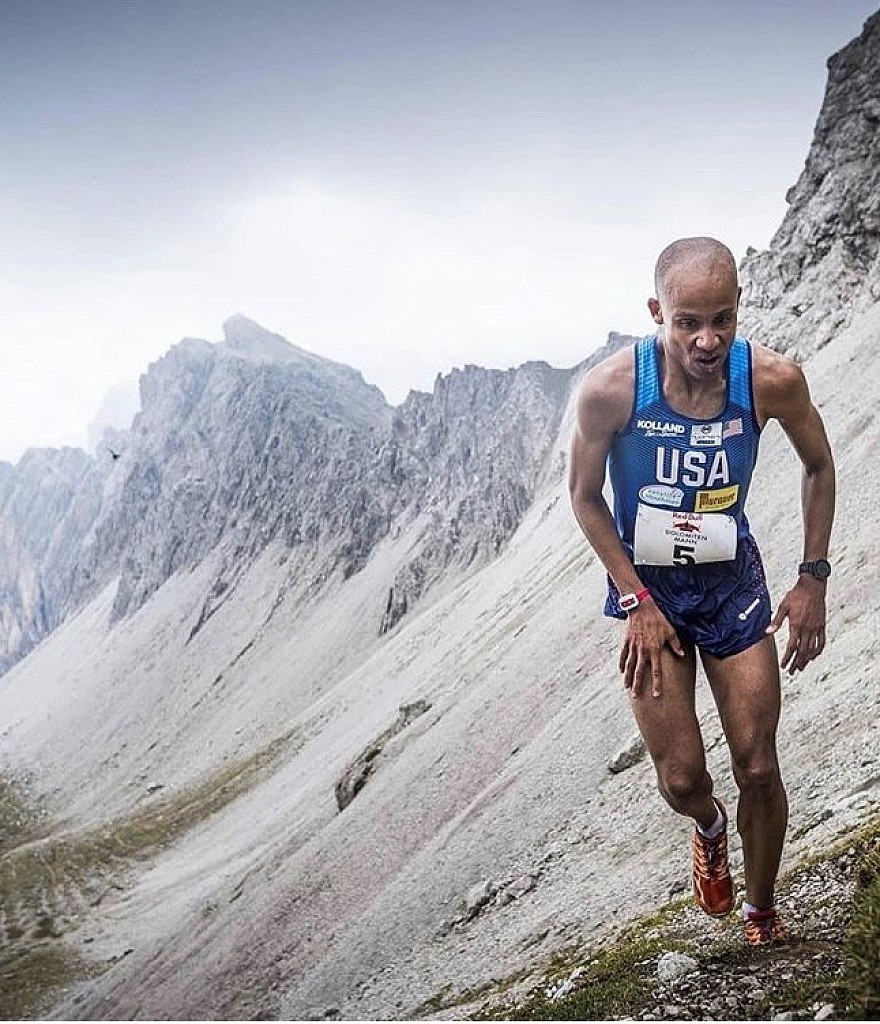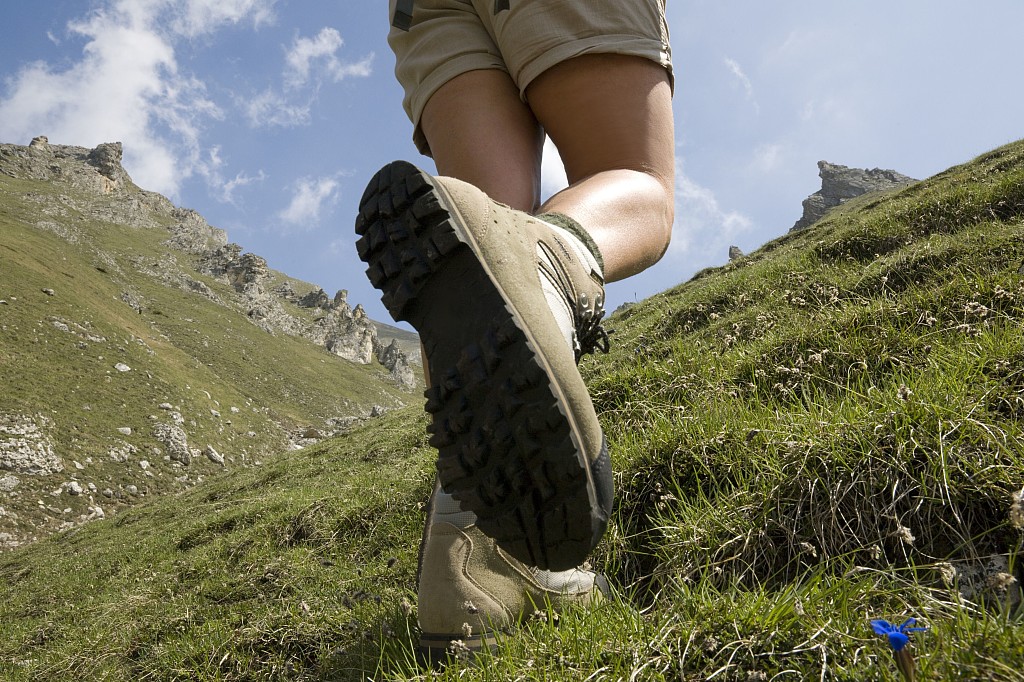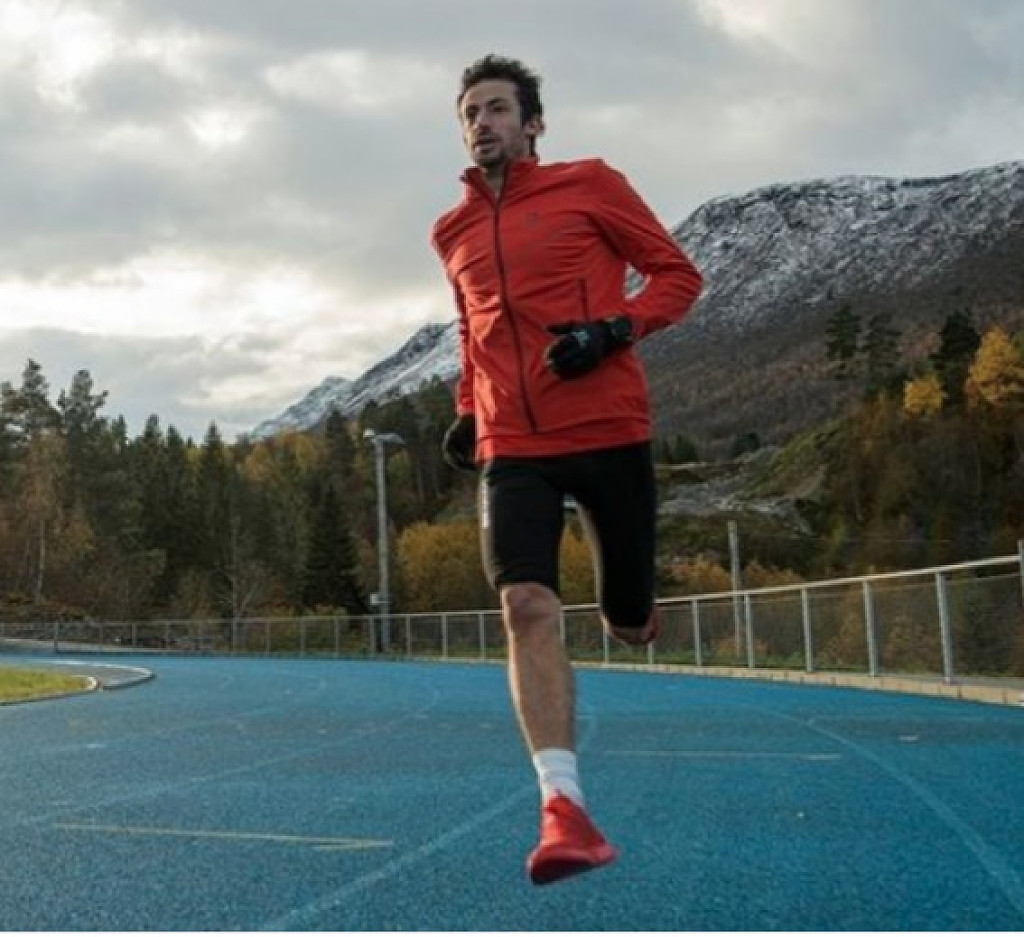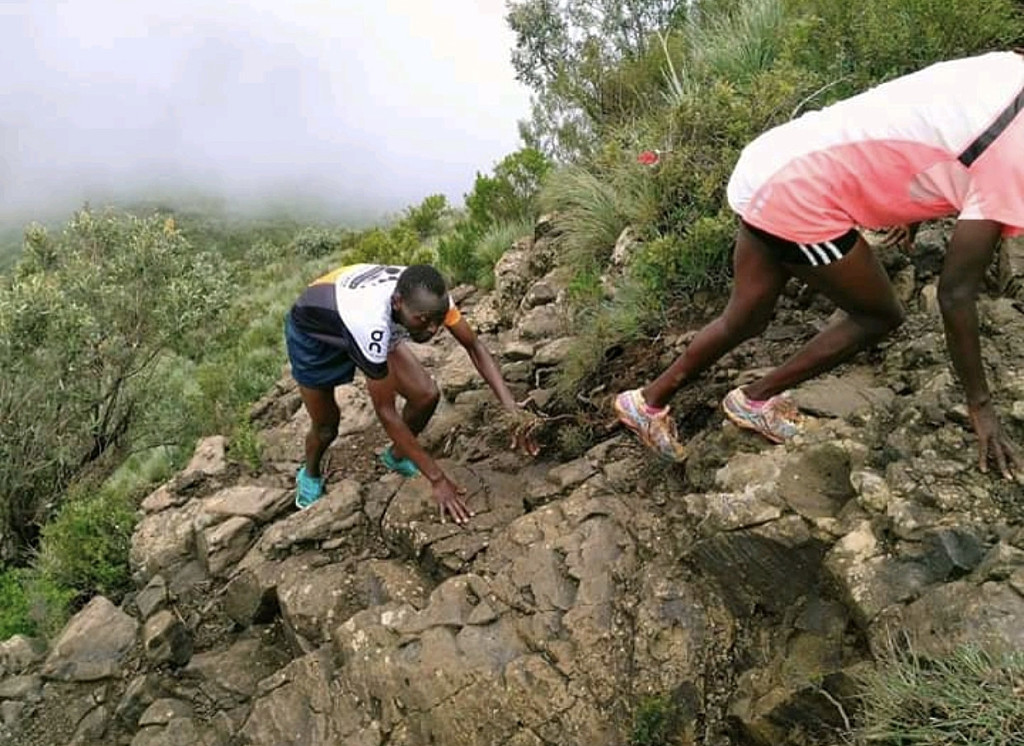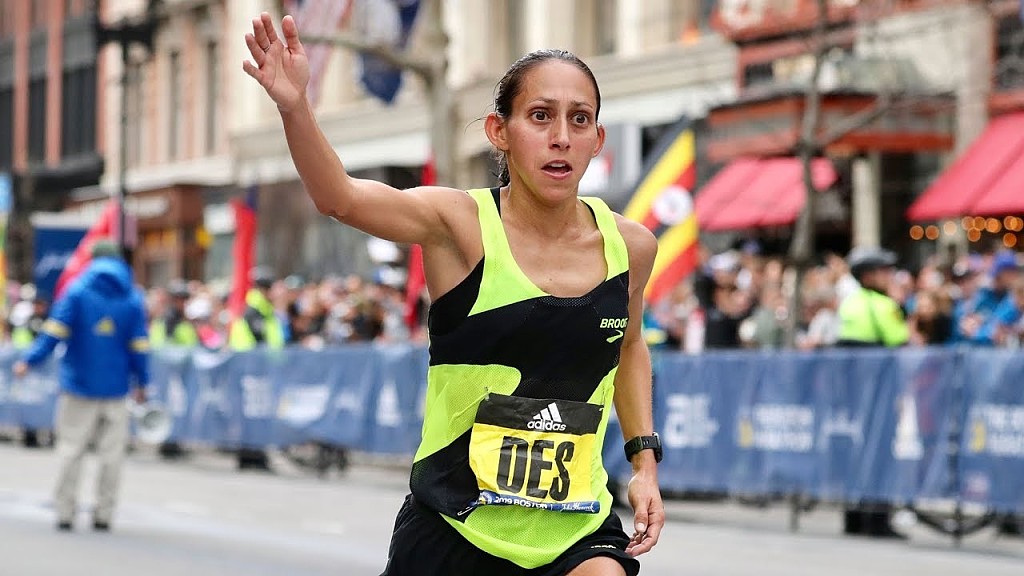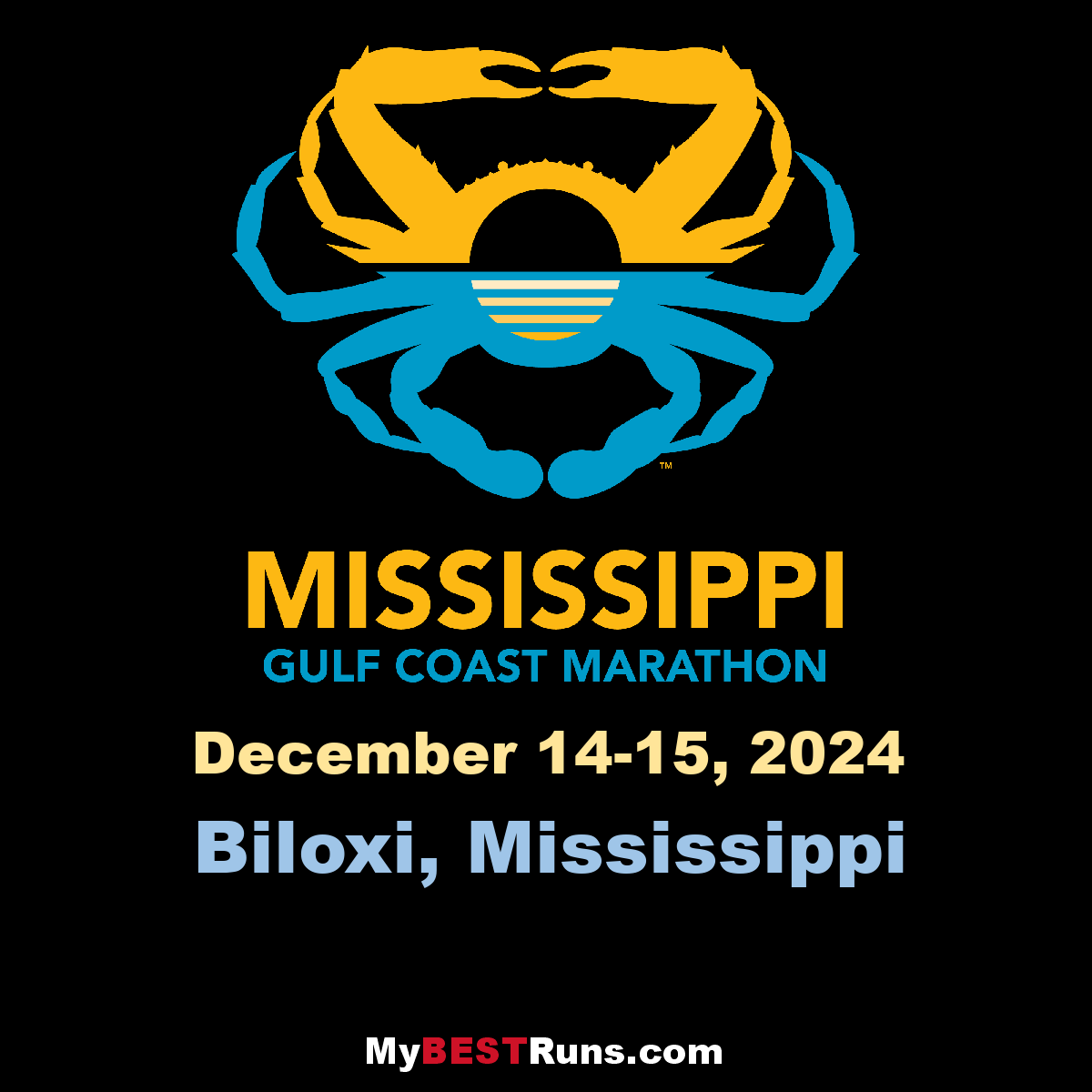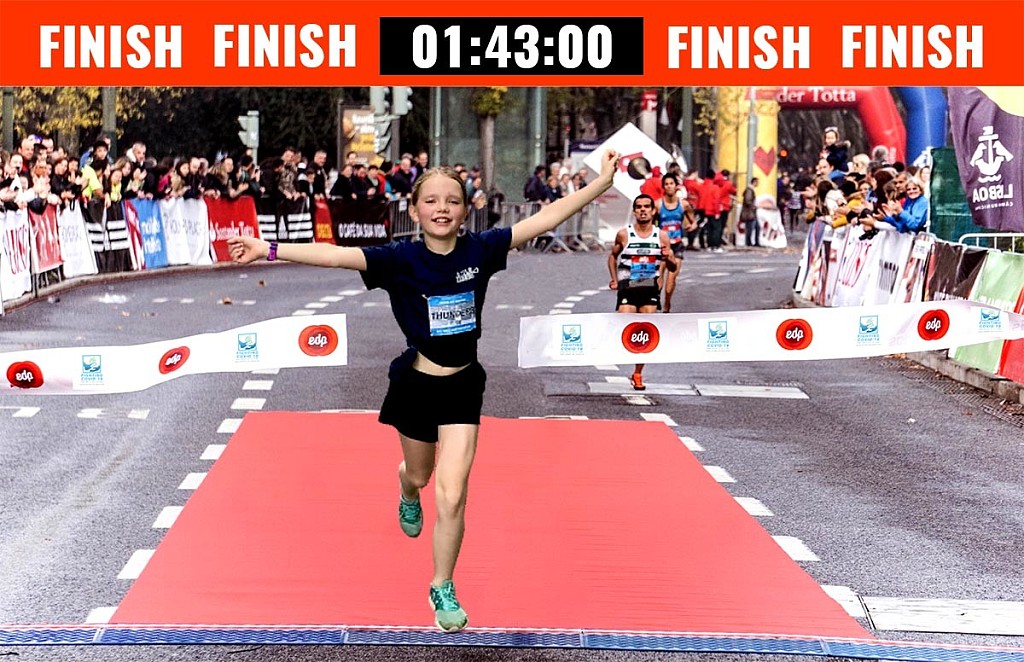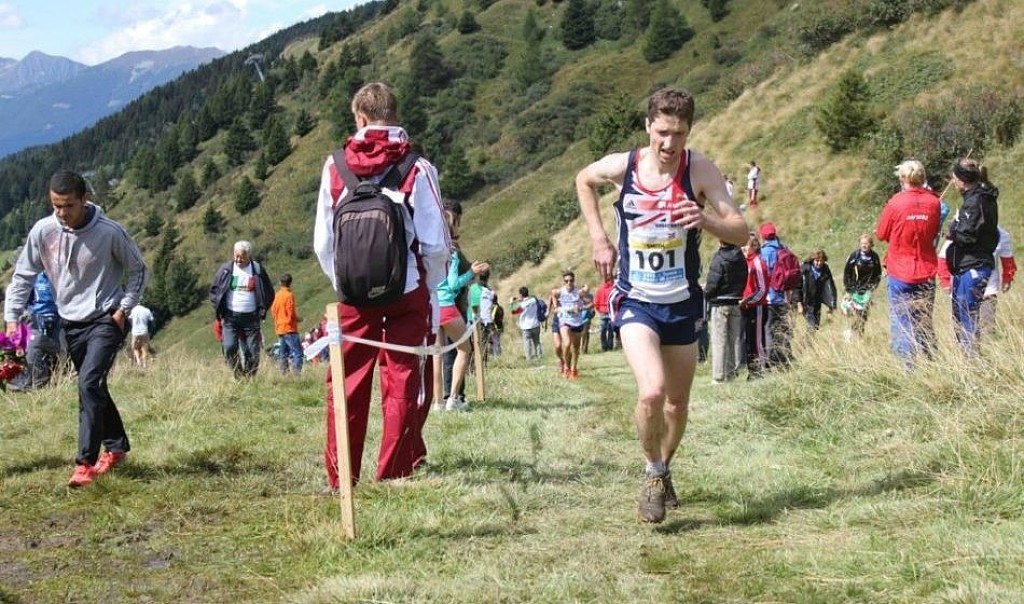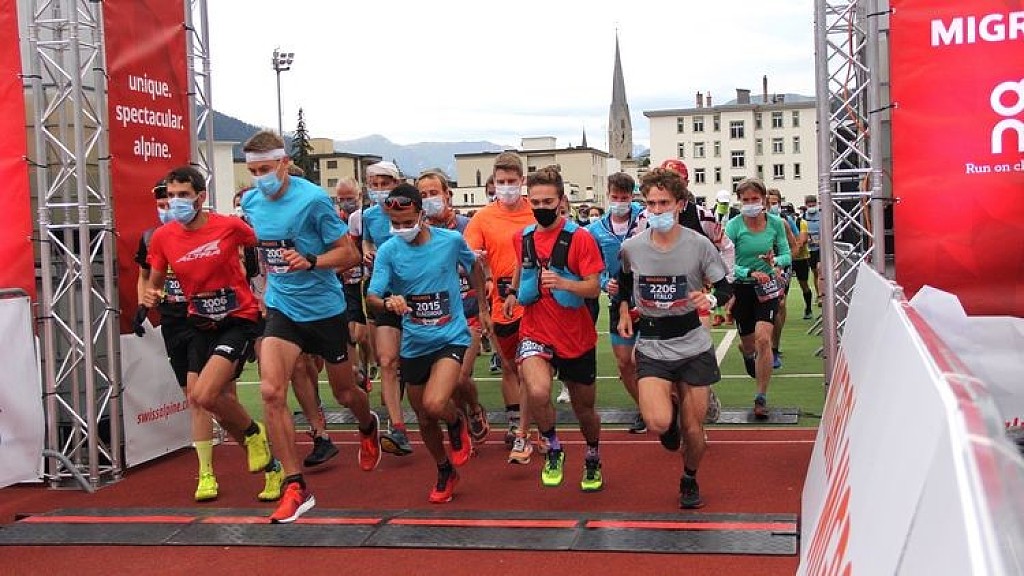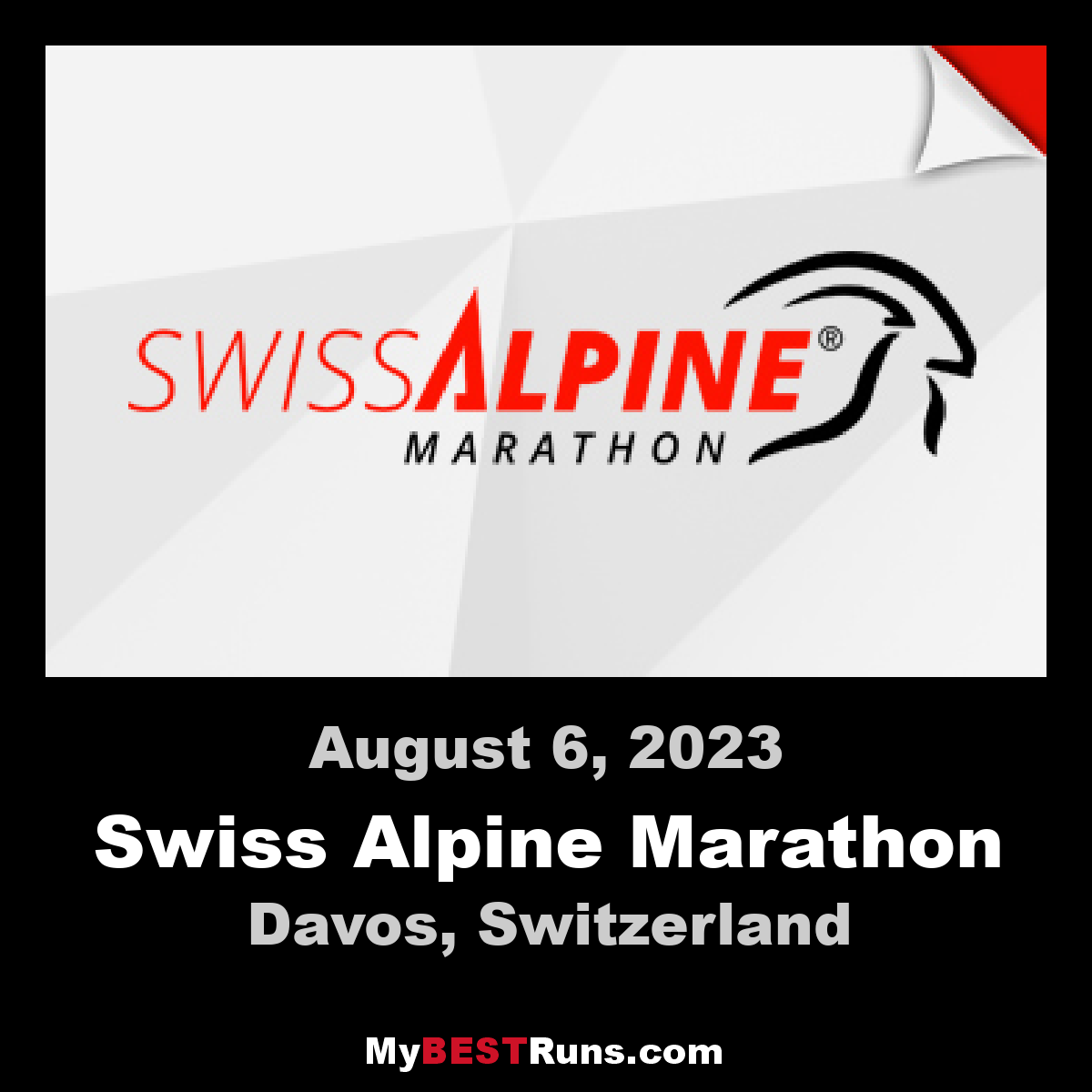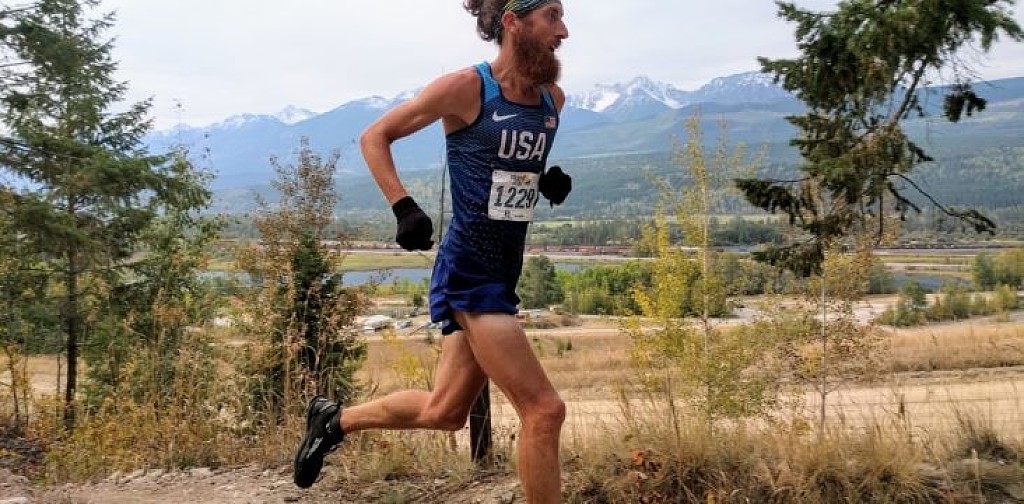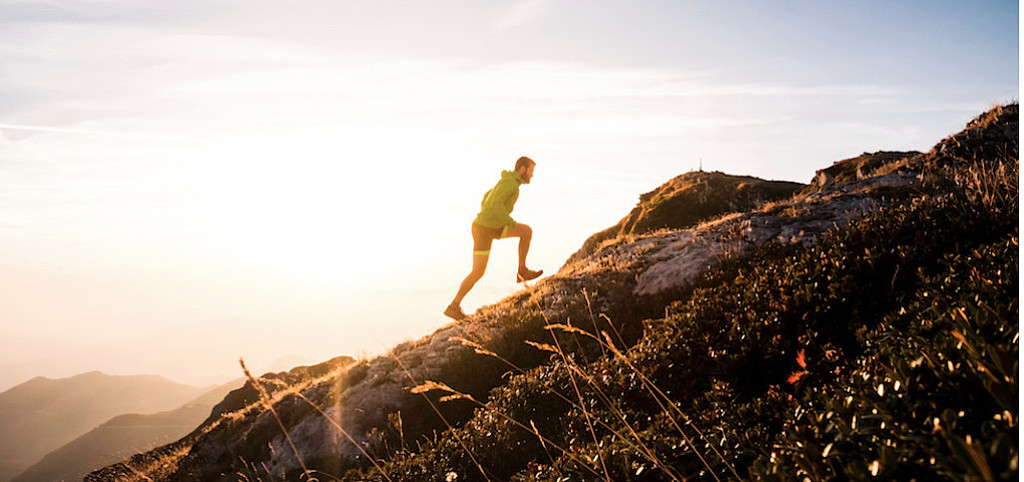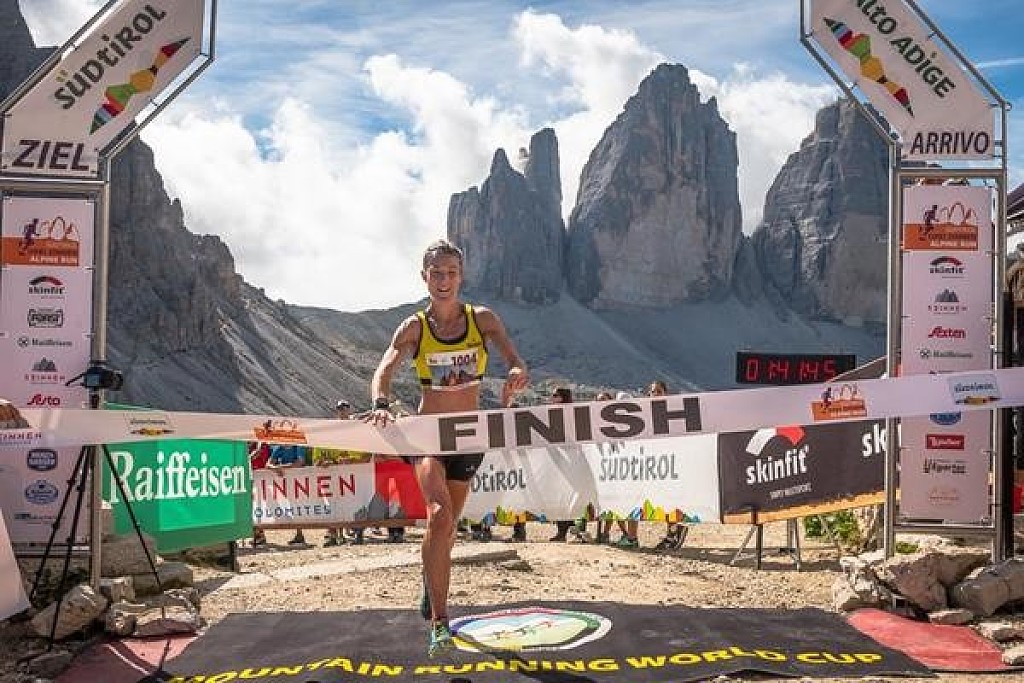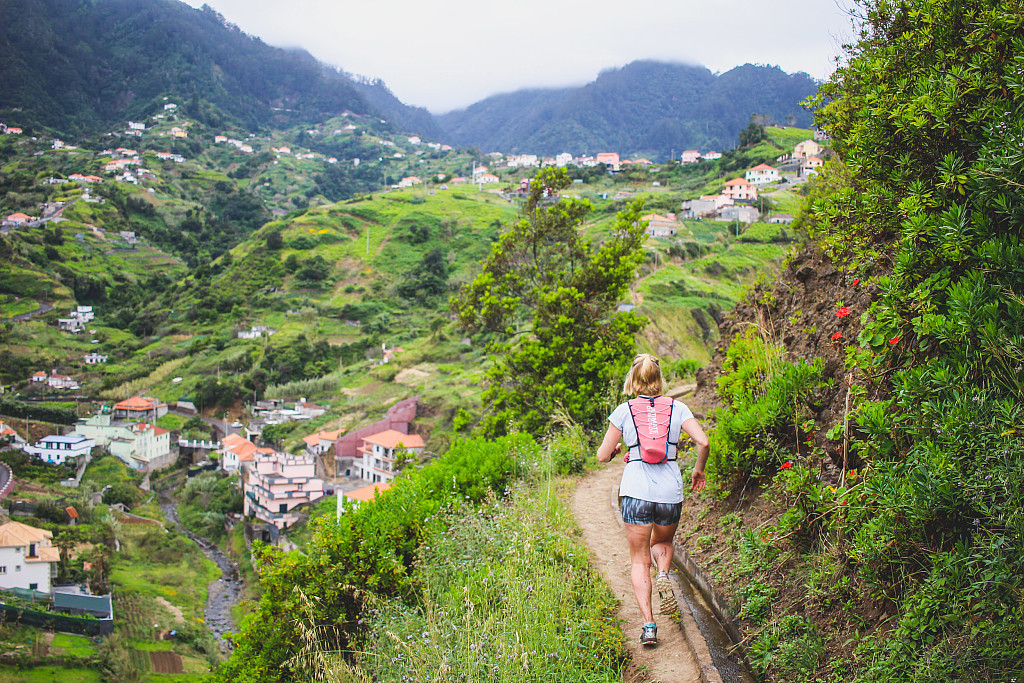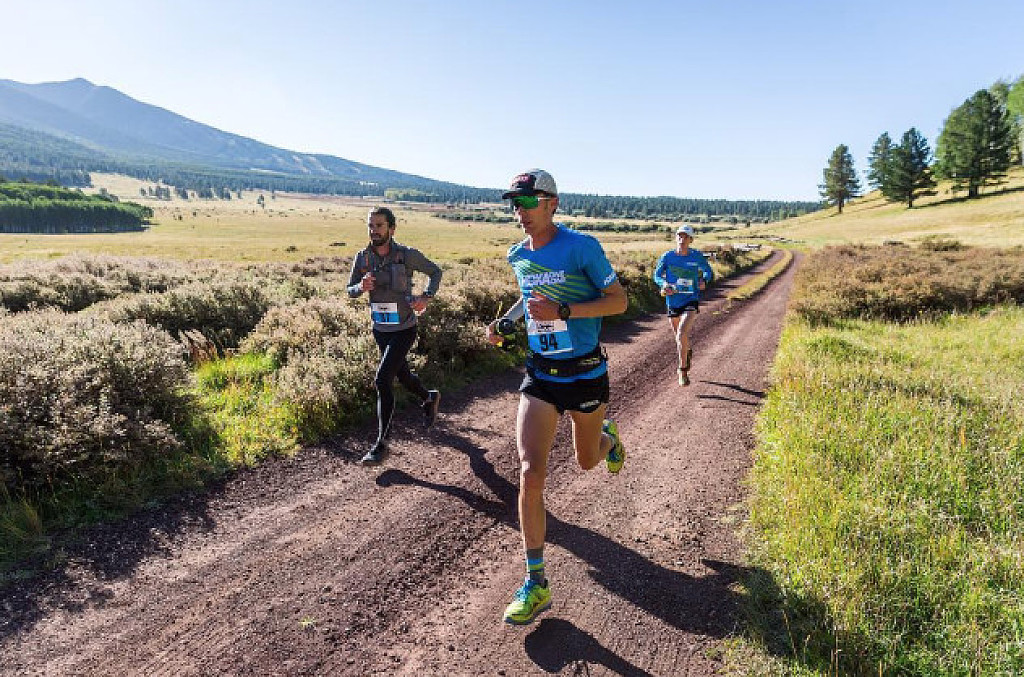Running News Daily
Running News Daily is edited by Bob Anderson. Send your news items to bob@mybestruns.com Advertising opportunities available. Train the Kenyan Way at KATA Kenya and Portugal owned and operated by Bob Anderson. Be sure to catch our movie A Long Run the movie KATA Running Camps and KATA Potato Farms - 31 now open in Kenya! https://kata.ke/
Index to Daily Posts · Sign Up For Updates · Run The World Feed
Articles tagged #Mountain Running
Today's Running News
Fitzgerald Completes Historic U20 Hat-Trick as Lagoa’s Brutal Course Breaks the Field
Innes Fitzgerald dominates European Cross Country Championships, while Ireland claims a breakthrough medal
A Course Built to Punish, A Champion Built to Endure
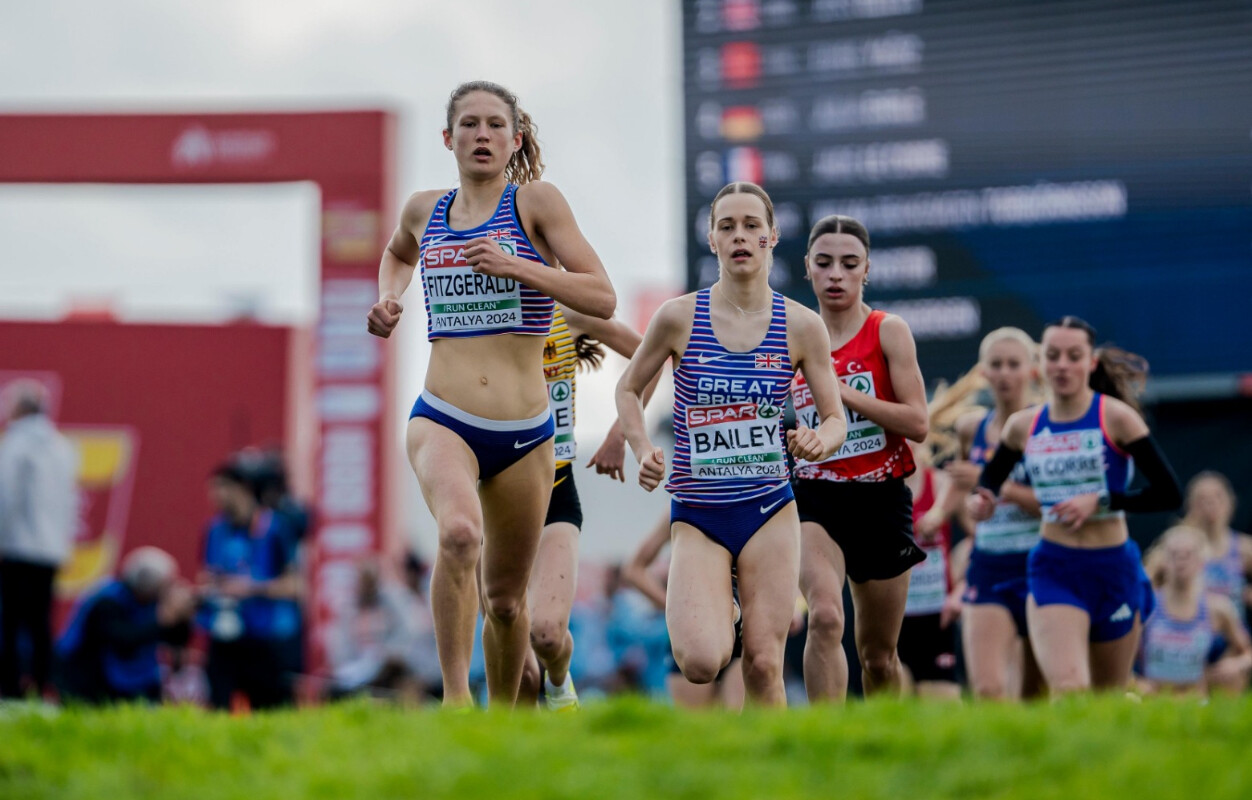
The European Cross Country Championships delivered both spectacle and separation in Lagoa, Portugal, where Great Britain’s Innes Fitzgerald stormed to a historic third consecutive victory in the women’s Under-20 race on one of the most demanding courses the event has seen in recent years.
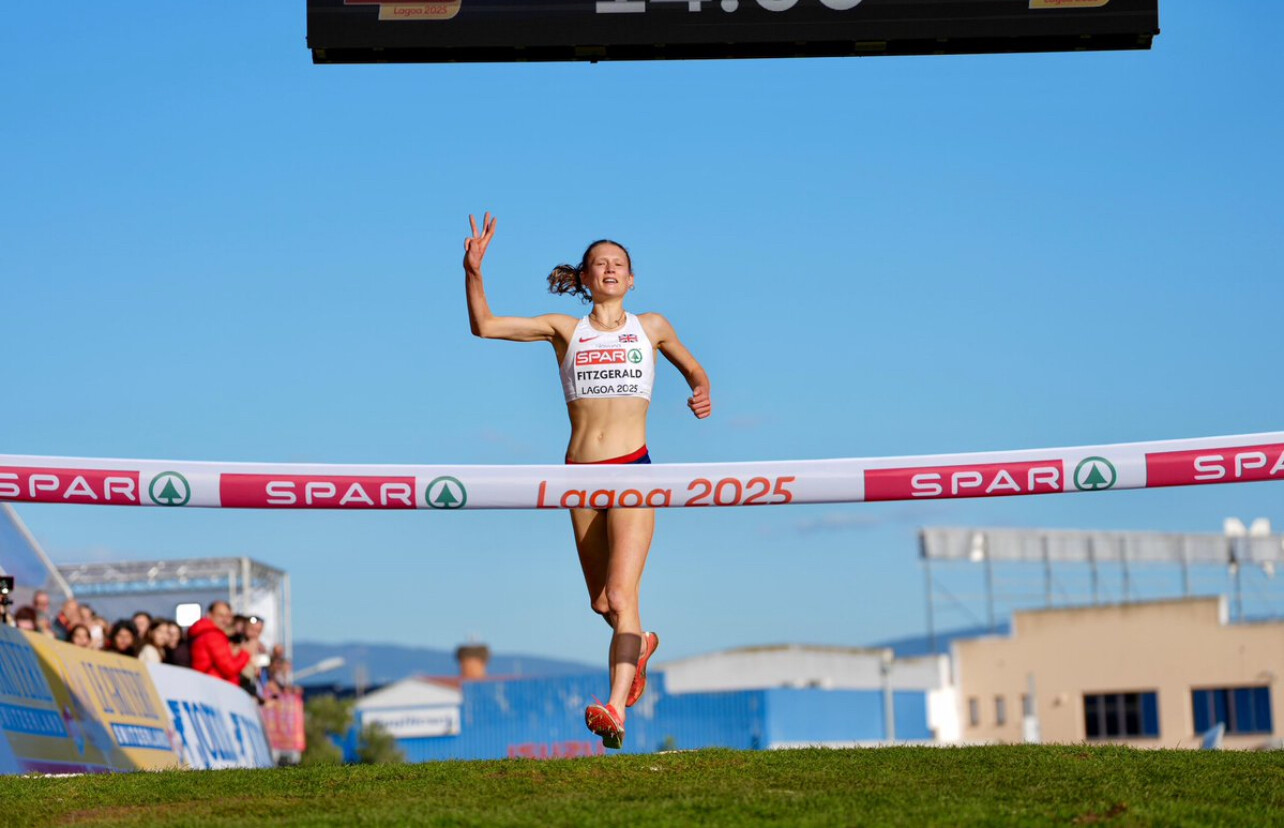
Set on a punishing 4.45km loop carved into the Algarve terrain, the course offered little rhythm. Sharp divots, twisting turns, and short but unforgiving climbs forced constant adjustment, rewarding strength, patience, and race intelligence. Commentators noted it was a circuit suited to steeplechasers and mountain runners—and from the opening strides, it shaped the race.
Early Aggression Tests the Field
Germany’s Julia Ehrle, a world mountain running champion, set the tone with an aggressive surge in the opening kilometre, immediately stretching the field. Several athletes attempted to respond, but the cost was clear early on as runners throughout the top 20 were already operating on the edge.
Fitzgerald, however, remained calm.
By the end of the first lap, the British teenager had moved decisively to the front, opening daylight behind her. Gaps widened quickly as she increased the tempo, forcing an early reckoning. Spain briefly led the team standings after one lap, but the individual contest was already tilting firmly in Fitzgerald’s favor.
Control Through Chao
There was no relief from the terrain. Turf laid specifically for the championships softened the ground but added unpredictability, with awkward divots repeatedly disrupting stride patterns. Ehrle, so fluent early, began to lose momentum as a coordinated chase pack formed behind her.
Midway through the race, Fitzgerald’s lead had grown beyond 13 seconds. Her expression told a story of controlled suffering—this was no cruise. Commentators reflected on her evolution as a championship racer, recalling earlier setbacks before she refined her front-running approach through successive wins in Brussels and Antalya.
This time, experience guided aggression.
The Race Ignites Behind the Leader
As the bell signaled the final lap, Fitzgerald’s advantage had stretched to 24 seconds, placing her on course for the largest winning margin ever recorded in the women’s U20 race.
Behind her, the medal fight erupted.
Ireland’s Anna Gardiner and Emma Hickey surged together with impeccable timing, their patient approach paying dividends as others faltered. France’s Lucie Paturel—whose modest track credentials masked exceptional endurance—moved smoothly through the field, judging her effort to perfection.
Those who attacked early paid the price. Those who waited were rewarded.
A Champion Alone at the Front
At the front, Fitzgerald ran alone—visibly exhausted, yet relentless. With a kilometre remaining, her lead had surpassed 30 seconds, a staggering margin in a race lasting just over 14 minutes.
As she entered the finishing straight, she raised three fingers in celebration, joining Steph Twell as the only athlete to win three European U20 cross country titles. Fitzgerald crossed the line in 14:35, collapsing moments later after an all-out effort.
Breakthroughs and Team Drama
Thirty seconds later, Paturel claimed a superb silver medal, while Hickey secured bronze—Ireland’s first-ever individual medal in this category—following a courageous, perfectly paced run.
The drama continued in the team standings, where every position mattered. Athletes sprinted through exhaustion on the finishing straight, and when the unofficial scores were confirmed, Great Britain emerged team champions with 33 points, ahead of Spain (38) and Sweden (43), underlining the depth behind Fitzgerald’s brilliance.
Germany’s Ehrle, whose bold opening gambit shaped the race, finished tenth—her ambition acknowledged even as it proved unsustainable.
The End of an Era, The Start of Anothe
For Fitzgerald, this was more than a victory. It marked the end of her Under-20 career. Already a senior international, a European record-holder on the track, and a proven championship racer across disciplines, she leaves the junior ranks having redefined them
For three years, the question in this race has remained the same: who dares to go with Innes Fitzgerald—and who can survive it?
In Lagoa, once again, there was only one answer.
Women’s U20 – Top 10 Results
European Cross Country Championships, Lagoa, Portugal
1. Innes Fitzgerald (Great Britain) – 14:35
2. Lucie Paturel (France) – 15:07
3. Emma Hickey (Ireland) – 15:10
4. Carmen Cernjul (Sweden) – 15:14
5. Edibe Yağız (Türkiye) – 15:15
6. Anna Gardiner (Ireland) – 15:17
7. Fanny Szalkai (Sweden) – 15:21
8. Evi Falkena (Netherlands) – 15:23
9. Shirin Kerber (Switzerland) – 15:25
10. Julia Ehrle (Germany) – 15:29
by Robert Kibet for My Best Runs
Login to leave a comment
Western States 100 Gears Up for an Epic Showdown Across Sierra Trails
The legendary Western States 100-Mile Endurance Run returns June 28–29, 2025, promising one of the most competitive and compelling editions in its storied history. Known as the world’s oldest 100-mile trail race, this ultra begins in Olympic Valley (formerly Squaw Valley) and finishes 100 rugged miles later at Placer High School in Auburn, California.
With more than 18,000 feet of climbing and 23,000 feet of descent, the race tests every aspect of a runner’s will and endurance. From snow-capped ridges to sweltering canyon floors, the course traverses remote backcountry, river crossings, and punishing climbs—all under the clock, with the coveted silver belt buckle awaiting those who finish under 24 hours.
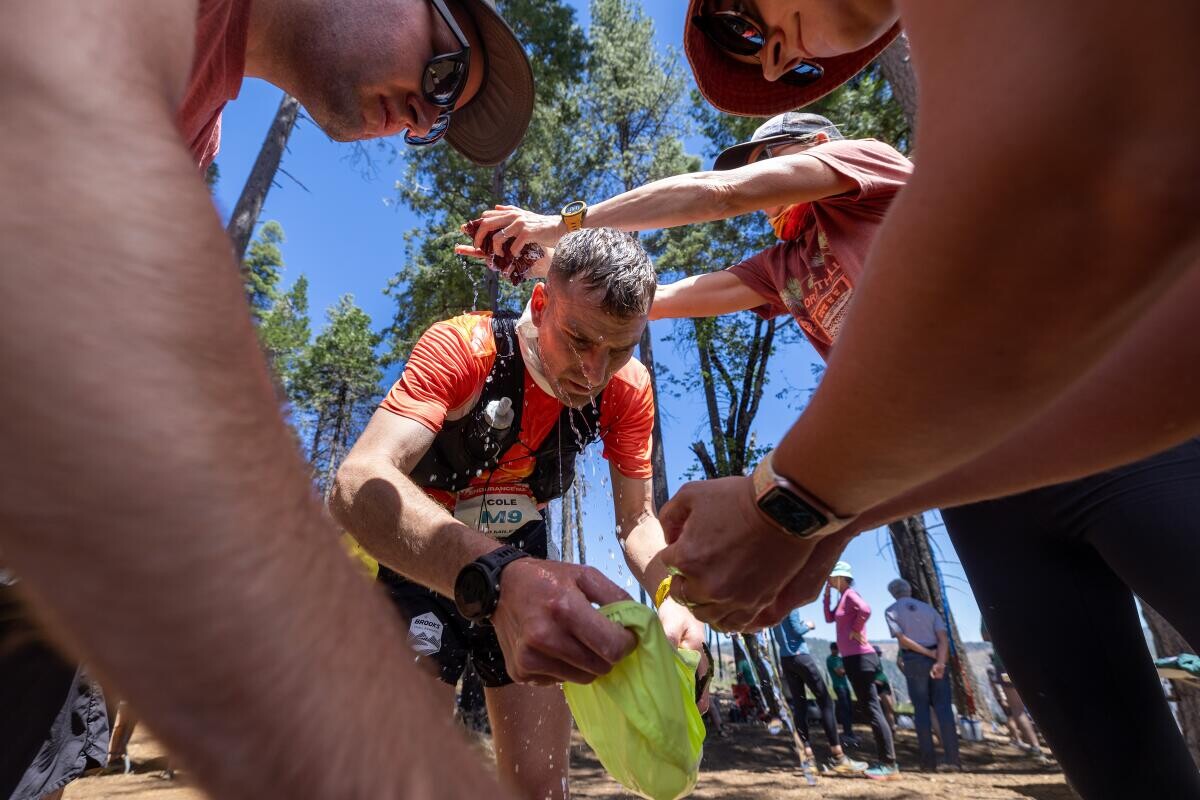
Who’s Racing?
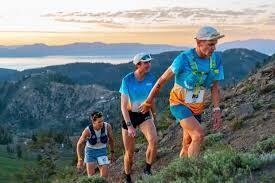
This year’s field is packed with elite talent, resilient veterans, and powerful storylines.
Top Men’s Contenders:
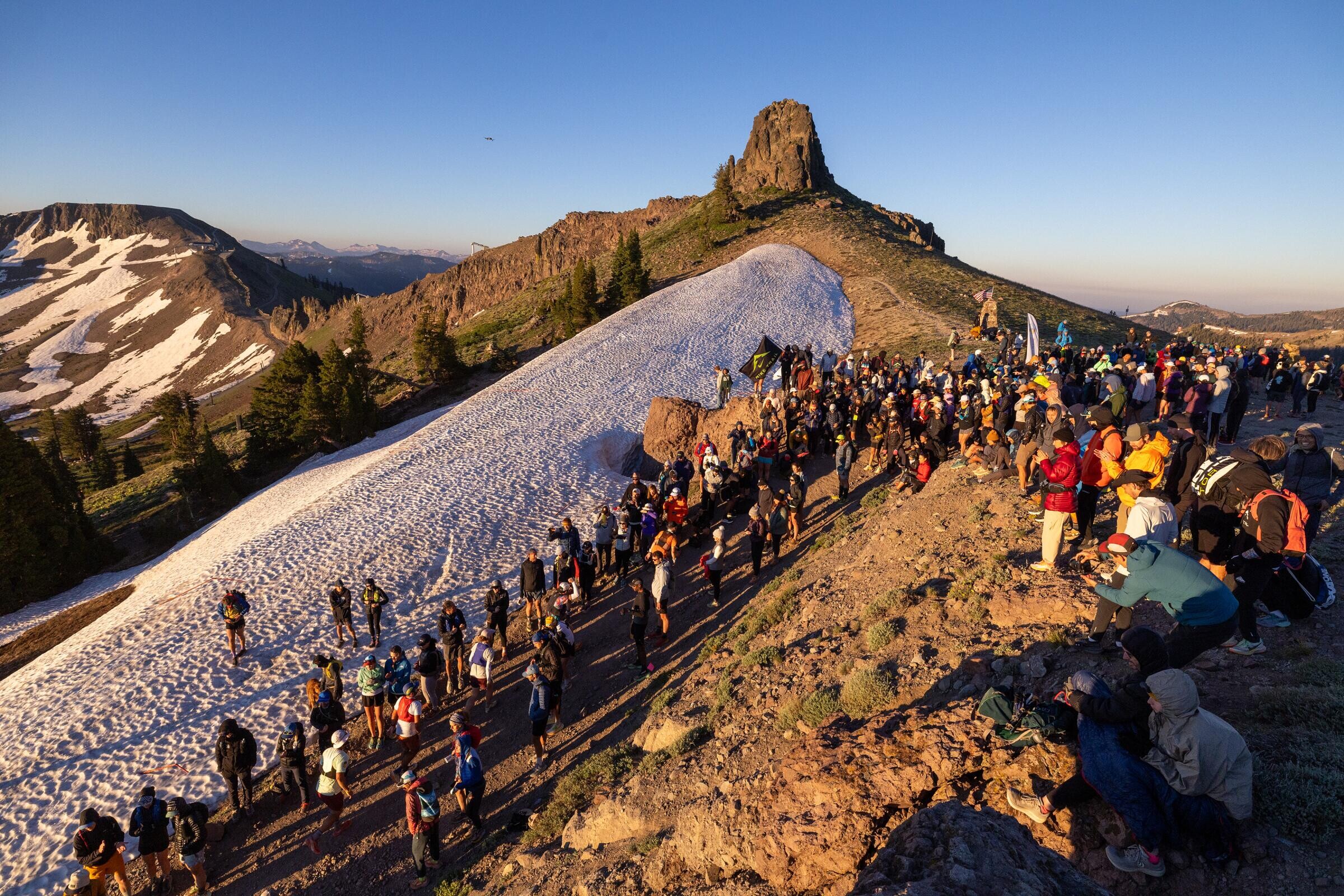
• Rod Farvard (USA) – One of the fastest Golden Ticket winners this season.
• Dan Jones (New Zealand) – Former Olympic Trials marathoner.
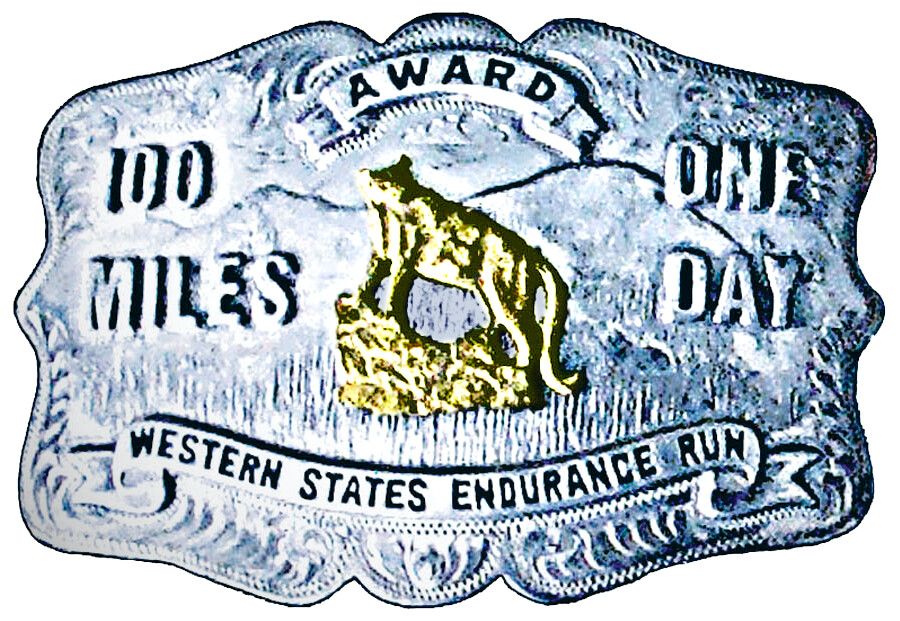
• Caleb Olson (USA) – Rising talent on the ultra scene.
• Chris Myers (USA) – Strong performances across the trail circuit.
• Jia-Sheng Shen (China) – Brings international prestige to the field.
Leading Women:
• Emily Hawgood (Zimbabwe) – Regular top-10 finisher with unfinished business.
• Eszter Csillag (Hungary) – One of Europe’s most consistent mountain runners.
• Heather Jackson (USA) – Former pro triathlete turned ultra star, back after a win at Unbound Gravel XL.
• Fu-Zhao Xiang (China) – Dominant at multiple global ultras.
• Ida Nilsson (Sweden) – Former European mountain running champion.
Notable Golden Ticket Winners:
• Riley Brady, Hannah Allgood, Rosanna Buchauer, Hậu Hà, Tara Dower, Abby Hall, Lin Chen, Caitlan Fielder, Nancy Jiang, Fiona Pascall, Johanna Antila
A Field That Crosses Generations
One of the most heartwarming developments this year is the record-setting six athletes aged 70 or older toeing the line.
Among them is Jim Howard, a two-time Western States champion (1981, 1983), who is making an inspiring return at age 70—running with two artificial knees. “I want to go out there one more time and be part of this incredible race,” Howard told Canadian Running.
Also returning is Jamil Coury, founder of Aravaipa Running, looking to build on his strong performance 15 years ago.
The Course
• Start: Olympic Valley (elevation: ~6,200 ft)
• Highest Point: Emigrant Pass (~8,750 ft)
• Finish: Auburn (elevation: ~1,200 ft)
• Snow is often a factor in the early miles, with extreme heat common in the canyons. Aid stations are spaced roughly every 4–8 miles, supported by over 1,500 volunteers.
Runners cross rivers, climb ridgelines, descend technical single-track, and are cheered into the stadium at Placer High—often in the dead of night.
Media and Spectator Access
• Live coverage, tracking, and video will be available on the Western States Endurance Run website.
• Key aid stations will allow crew and spectators, including Foresthill (mile 62) and Robie Point (mile 99).
A Race Like No Other
• One of the five races in the Grand Slam of Ultrarunning
• A UTMB World Series qualifier
• Historic, grassroots feel with world-class competition
Whether you’re cheering for a podium contender, an age-defying legend, or simply following the passion of runners determined to finish within 30 hours, this year’s Western States 100 is poised to deliver drama, beauty, and inspiration.
Let the countdown begin.
by Boris Baron
Login to leave a comment
Western States 100
The Western States ® 100-Mile Endurance Run is the world’s oldest and most prestigious 100-mile trail race. Starting in Squaw Valley, California near the site of the 1960 Winter Olympics and ending 100.2 miles later in Auburn, California, Western States, in the decades since its inception in 1974, has come to represent one of the ultimate endurance tests in the...
more...Addi Zerrenner’s Second Wind: From Track Star to Trail Warrior
For years, Addi Zerrenner chased speed on the track and roads. As an NCAA standout at Arizona and one of the top U.S. prospects in distance running, she seemed destined for marathon greatness. But after years of pushing, something shifted. The joy dimmed. The pressure mounted. And like many elite athletes, Addi hit a wall — not physically, but mentally.
What came next wasn’t a retreat — it was a reinvention.
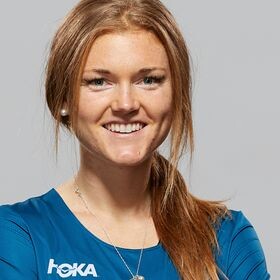
Trading Pavement for Peaks
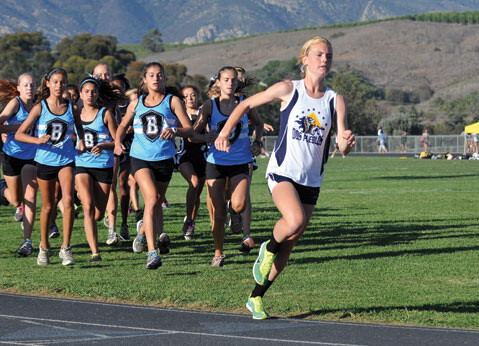
Addi left the regimented world of splits and lap counts behind and found herself drawn to the mountains. There, she discovered something that had been missing: joy.
“It was like breathing again,” she said in a recent interview. “Out there, it wasn’t about pace. It was about movement, freedom, and reconnecting with why I loved running in the first place.”
That shift wasn’t just emotional. Addi began to thrive. She posted strong performances at mountain and trail races across the West, including podium finishes at high-profile events like the Broken Arrow Skyrace and strong showings on technical terrain that would leave most road runners gasping.
From Burnout to Breakthrough
Her story resonates far beyond elite circles. In a sport that too often burns out its best too early, Addi Zerrenner shows what’s possible when an athlete listens to their body — and more importantly, their heart.
Trail running, with its slower pace and wilder spirit, gave her the space to heal and rediscover competition on her own terms. It’s a reminder that success in running isn’t a straight line — and sometimes, leaving the track is the only way to find your lane.
What’s Next for Addi?
With momentum behind her and a growing presence in the trail and ultra world, Addi’s future could include anything from the UTMB series to U.S. Mountain Running Team bids. And with her platform, she’s also becoming a voice for runners navigating transitions — from injury, burnout, or even just life’s next phase.
“I still run hard. I still want to be great. But I’m doing it for me now,” she said. “And that’s more powerful than any PR.”
by Boris Baron
Login to leave a comment
Why Zegama Remains the Most Revered Mountain Marathon
Zegama-Aizkorri 2025: The Mountain Marathon That Defines Grit and Glory
ZEGAMA, SPAIN — On Sunday, May 25, 2025, the world’s most electrifying trail marathon returns to the rugged peaks of the Basque Country. The Zegama-Aizkorri Mountain Marathon, now in its 24th edition, is more than a race—it’s a rite of passage for mountain runners.
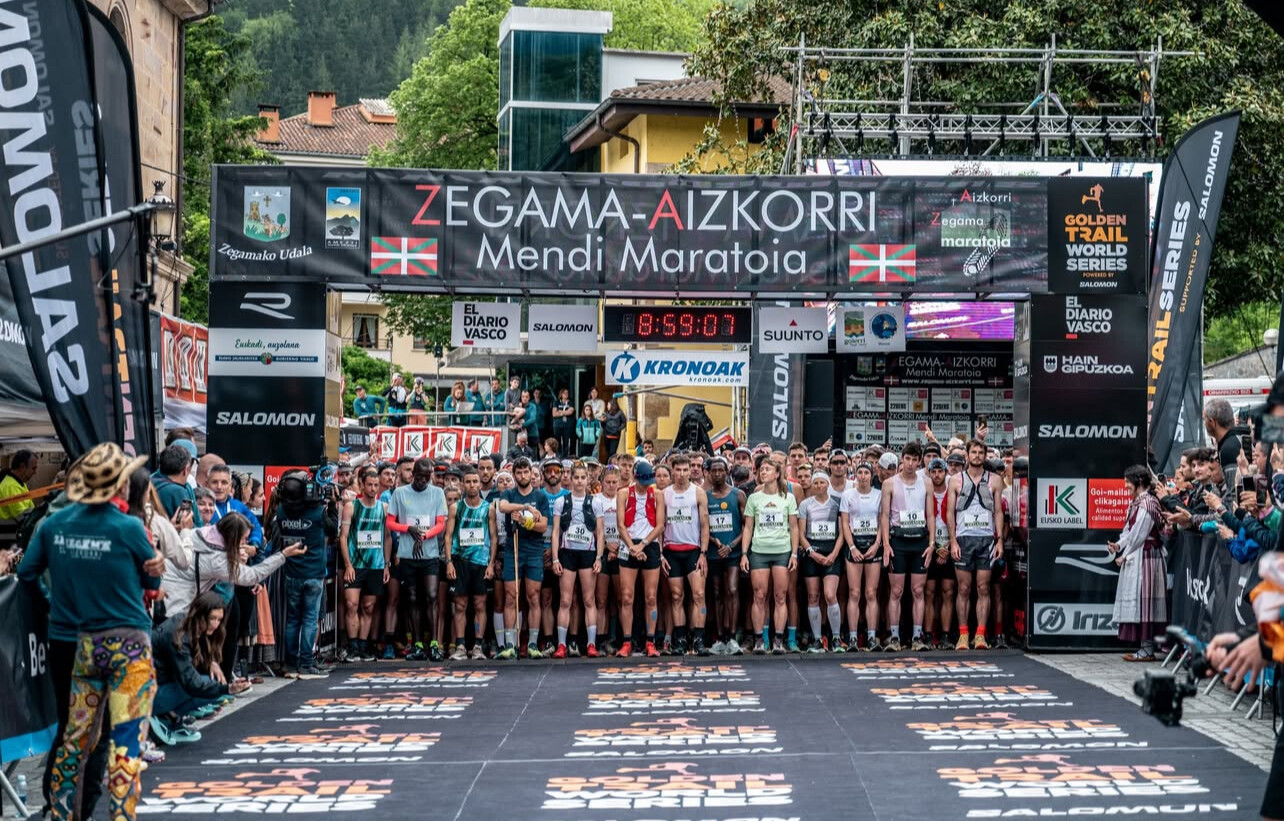
Each year, hundreds of elite and amateur athletes are drawn to the small village of Zegama to test themselves on a course that is as breathtaking as it is brutal. With 42.195 kilometers (26.2 miles) of steep, technical terrain and 2,736 meters (8,976 feet) of vertical gain, the challenge is legendary.
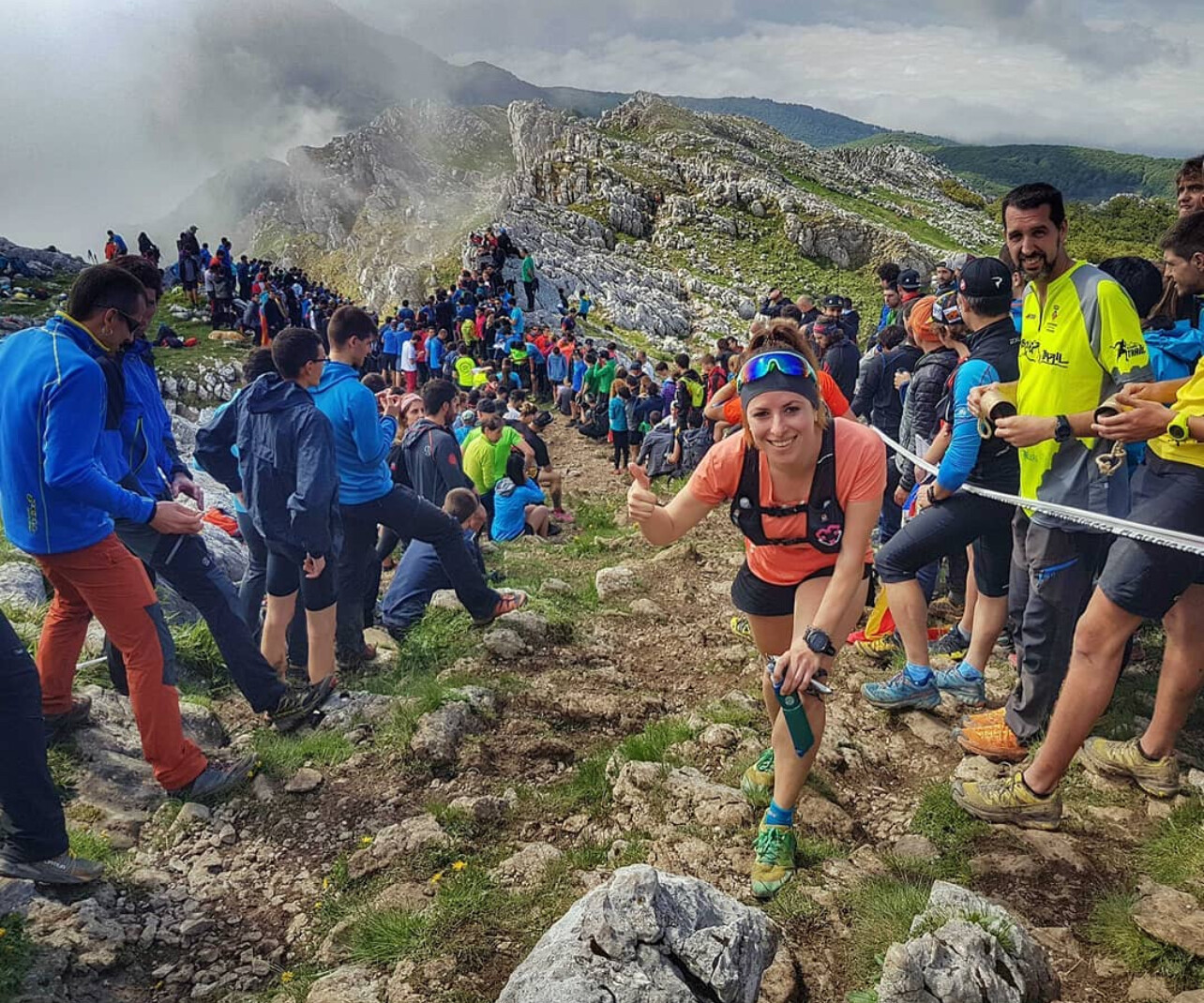
A Look Back at 2024: Jornet and Nordskar Shine
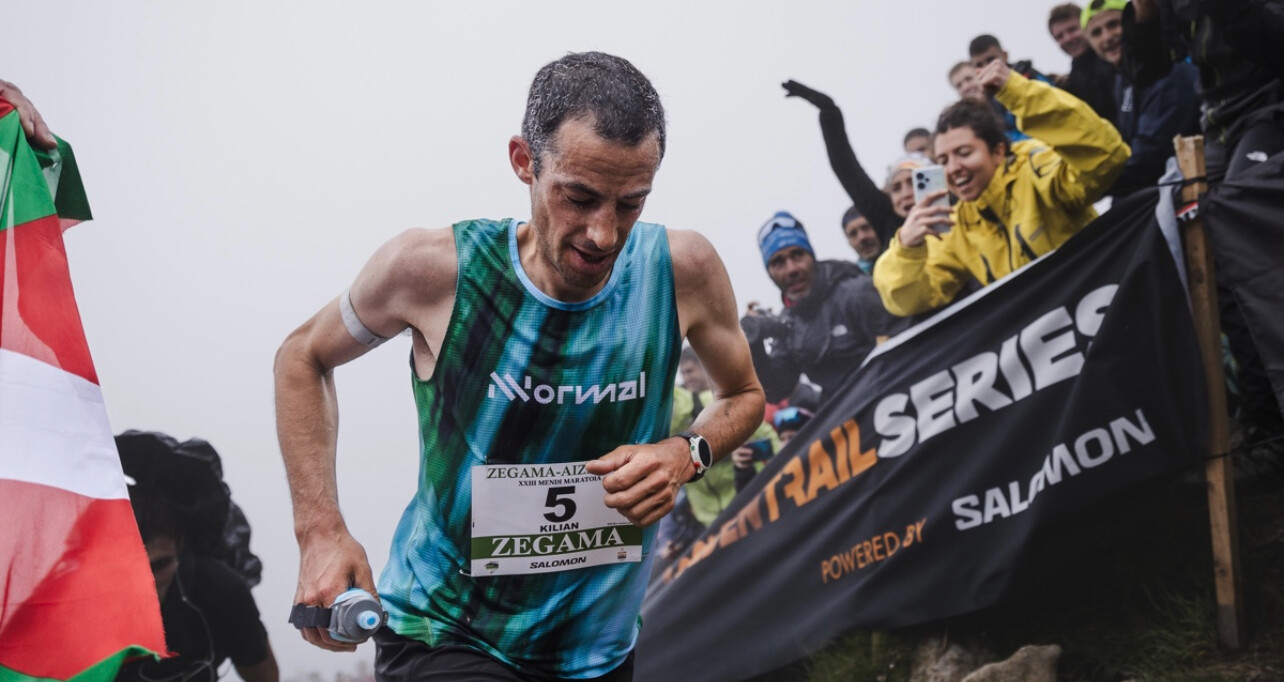
In 2024, trail running legend Kilian Jornet claimed his 11th Zegama title, completing the course in 3:38:07, the second-fastest time in the race’s history. The Spaniard’s unmatched mastery of this terrain—where weather, altitude, and technicality collide—continues to amaze.
On the women’s side, Norway’s Sylvia Nordskar delivered a breakthrough performance, winning in 4:29:12. Her victory came after years of chasing a podium finish, cementing her place among the world’s best mountain runners.
What Makes Zegama So Unique?
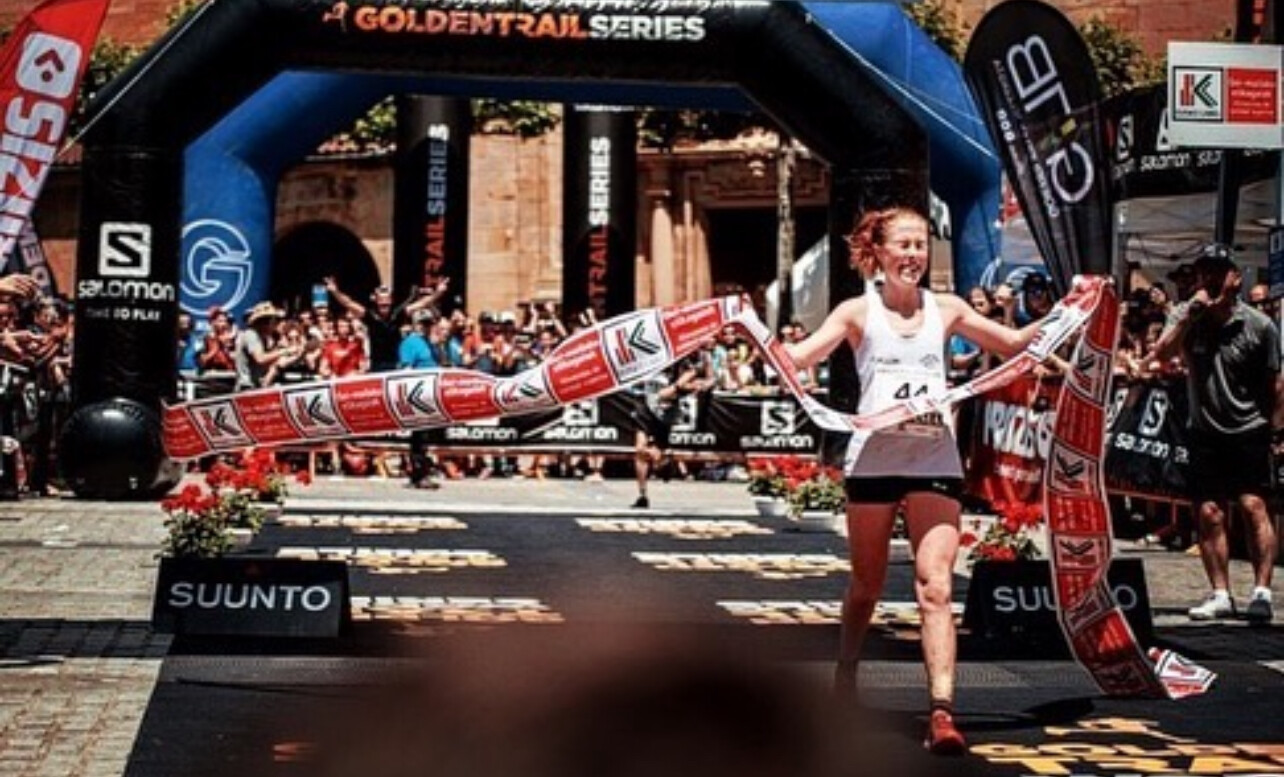
Zegama's course runs through the Aizkorri-Aratz Natural Park, an untouched alpine landscape of jagged ridges, mossy forests, and sweeping vistas. But it’s not just the scenery that defines Zegama—it’s the intensity of the terrain:
• Brutal Climbs: Runners face punishing ascents like Sancti Spiritu, where fans line both sides of the narrow path, turning the mountain into a human tunnel of noise and encouragement.
• Technical Descents: Slippery rock faces and steep downhills test a runner’s balance and nerve, often under unpredictable weather that can shift from fog to freezing rain in minutes.
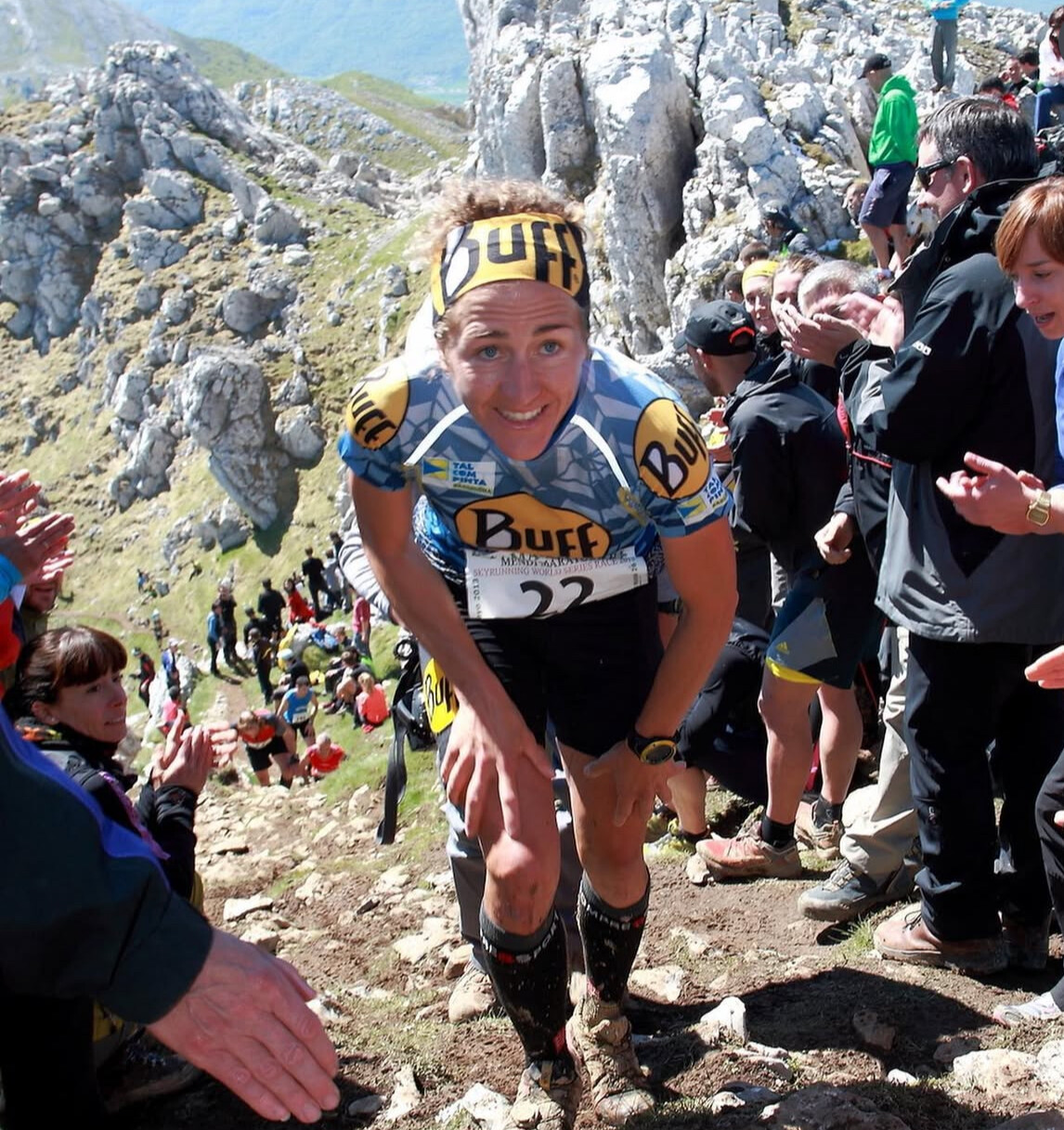
• Unmatched Atmosphere: Thousands of passionate Basque fans hike deep into the mountains to cheer with cowbells, flags, and chants. It’s been compared to the Tour de France on foot.
In Zegama, you’re not just running against the clock—you’re running with the crowd, through weather, over stone, and into history.
2025 Expectations
With another stacked field expected for 2025, the stage is set for drama. Can Jornet make it 12 wins? Will Nordskar defend her title? Or will a new name rise through the mist?
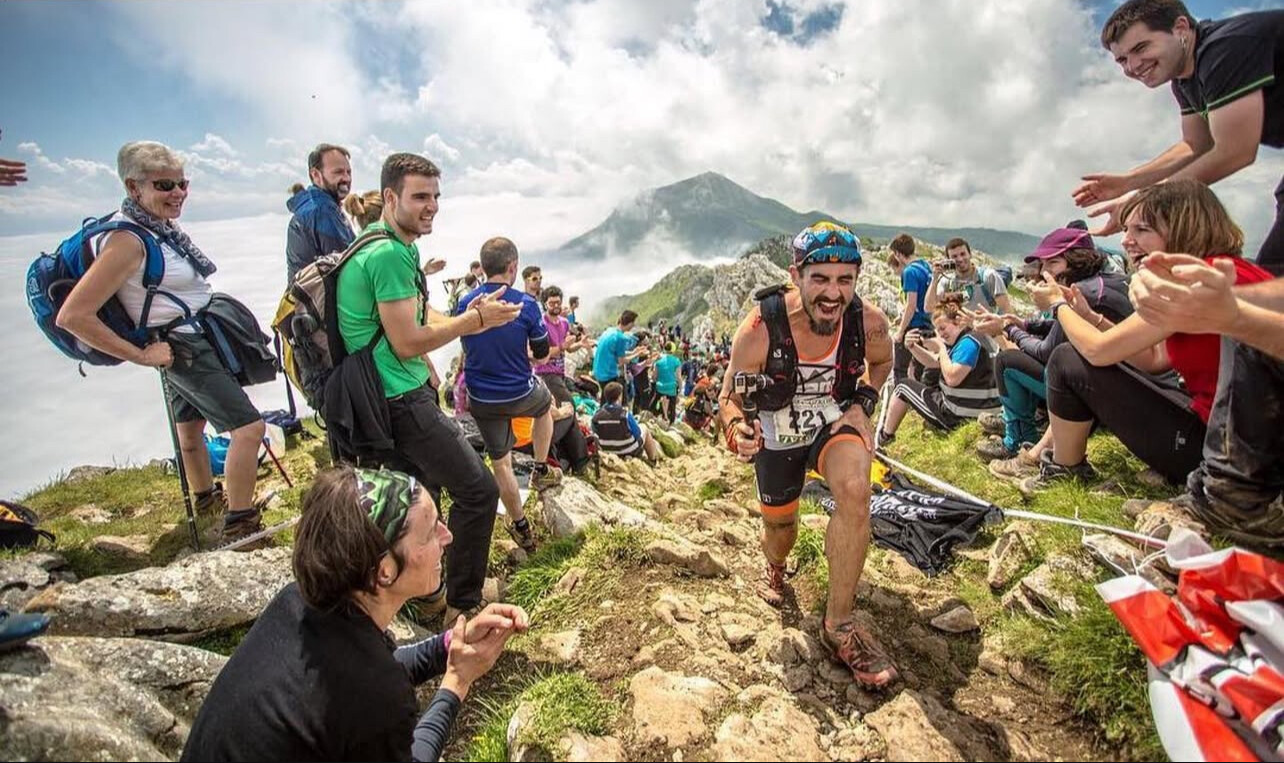
One thing is certain: Zegama es Zegama. No other race captures the raw essence of mountain running like this one.
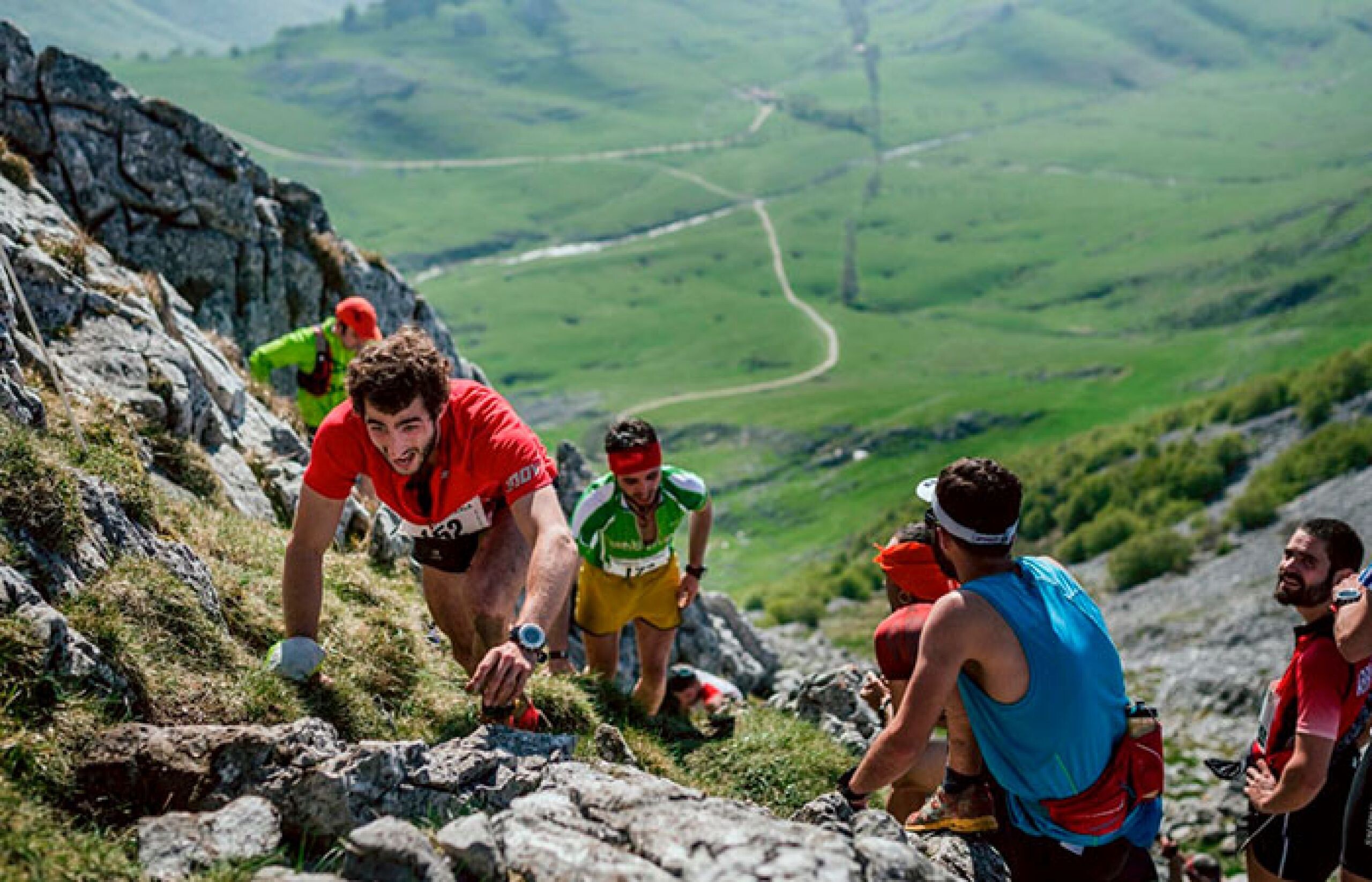
by Boris Baron
Login to leave a comment
Myth Meets Mountain: Adkin and Machoka Conquer Romania’s Zmeu X-Fest
The 2025 World Mountain Running Association (WMRA) World Cup commenced on Saturday, May 3, with a dramatic and demanding debut at the Zmeu X-Fest in Câmpulung Moldovenesc, Romania. Set against the mystical backdrop of Bukovina’s pine forests and steep alpine meadows, the 19.6 km course featured a punishing 1,750 meters of elevation gain, including the infamous “Runc” climb—ominously nicknamed “The Wall.”
Women’s Race: Adkin Ascends to Victory
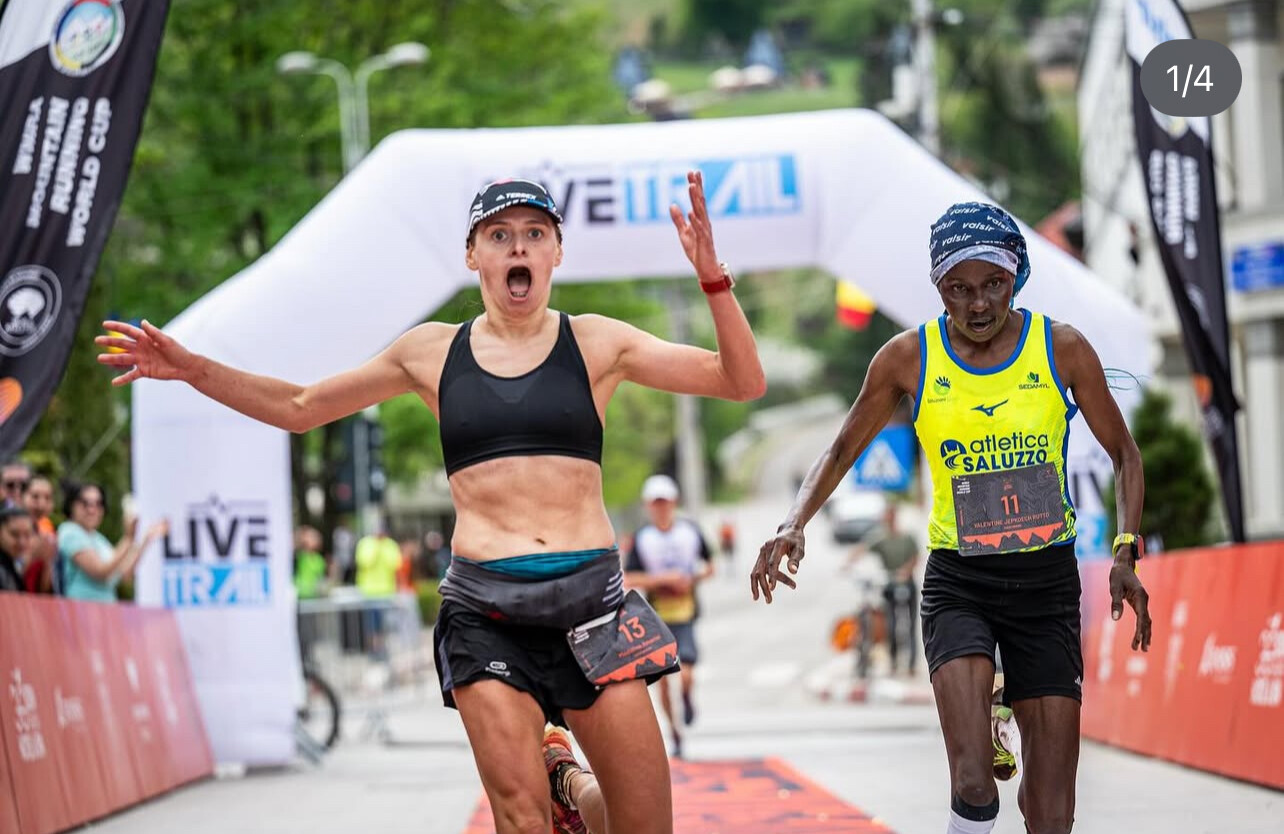
Britain’s Scout Adkin launched her World Cup campaign with a commanding performance, claiming the women’s title and finishing eighth overall. After pacing herself through the early climbs, Adkin surged ahead on the Runc ascent, pushing at an astonishing 1,700 meters per hour. She maintained her lead through the technical descents, crossing the finish line with a comfortable margin.
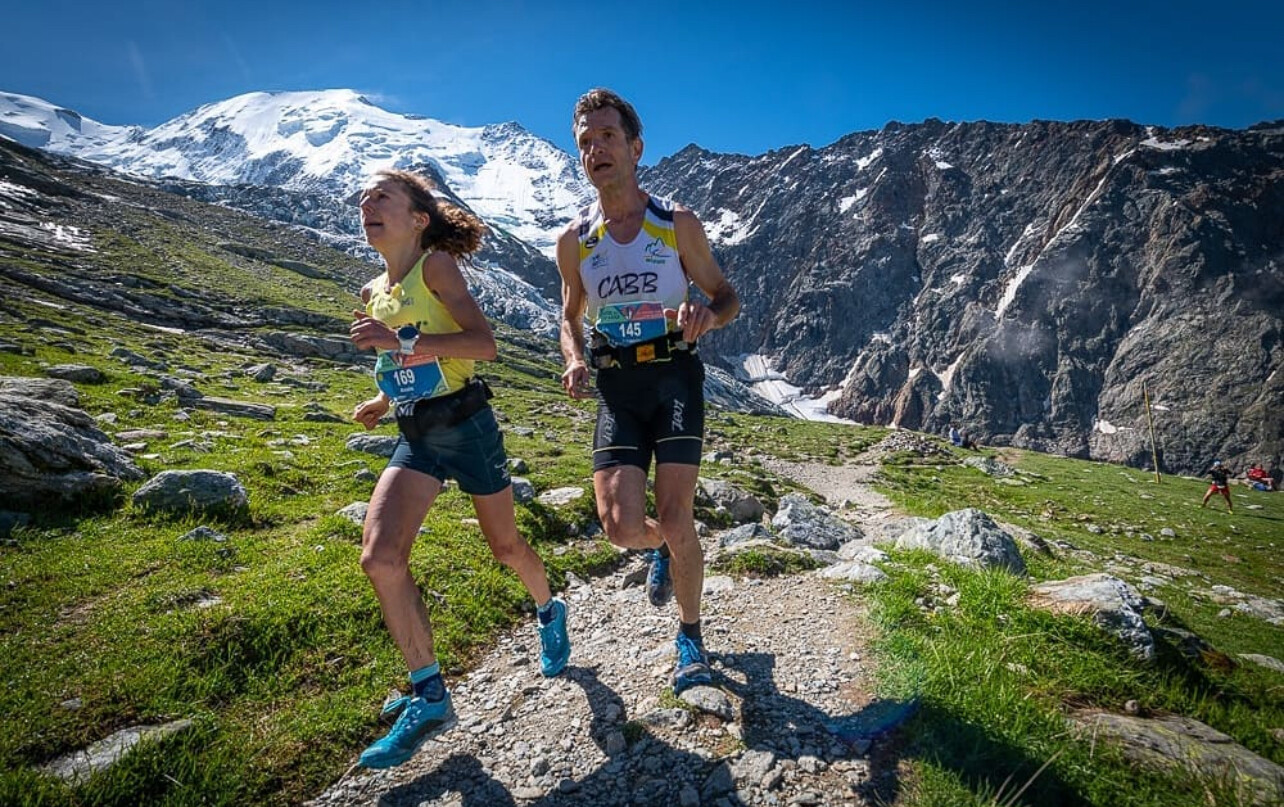
“The course is savage—but spectacular,” Adkin remarked post-race, praising both the terrain and the crowd support.
The battle for second place culminated in a rare photo finish between Kenya’s Valentine Rutto and Romania’s Mădălina Amăriei, both delivering gutsy performances on home soil.
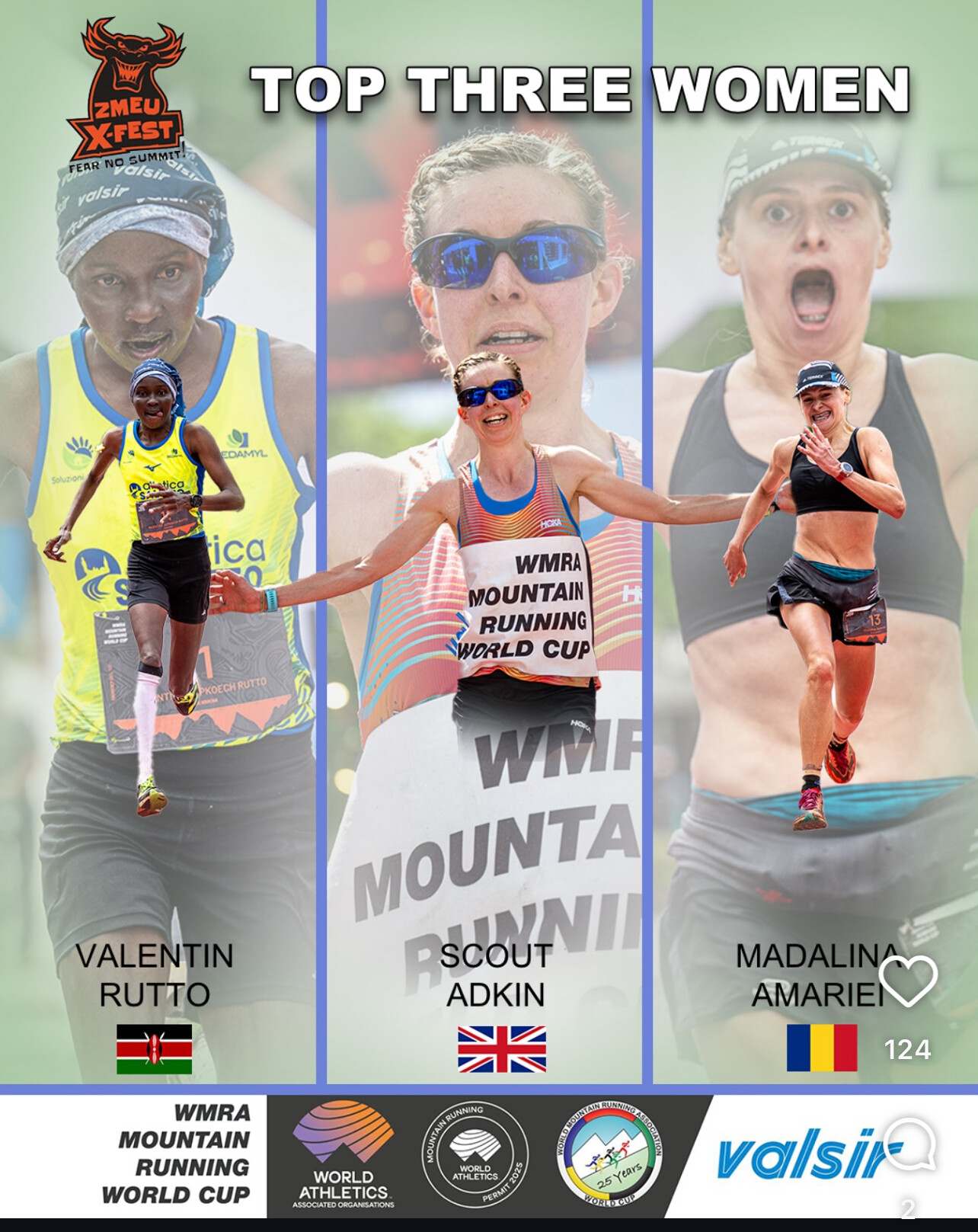
Top 3 Women’s Results:
1. Scout Adkin (Great Britain) – 2:03:18
2. Valentine Rutto (Kenya) – 2:03:33
3. Mădălina Amăriei (Romania) – 2:03:33
Men’s Race: Machoka Holds Off Late Surge
In the men’s race, Paul Machoka of Kenya delivered a masterclass in pacing and grit. Alongside compatriot Kevin Kibet, Machoka set a blistering early tempo, ascending at 2,200 meters per hour. Italian veteran Henri Aymonod mounted a fierce comeback over the final 5 km, closing a 30-second gap and nearly catching the Kenyan duo. However, Machoka held firm to secure the win in a thrilling finish.
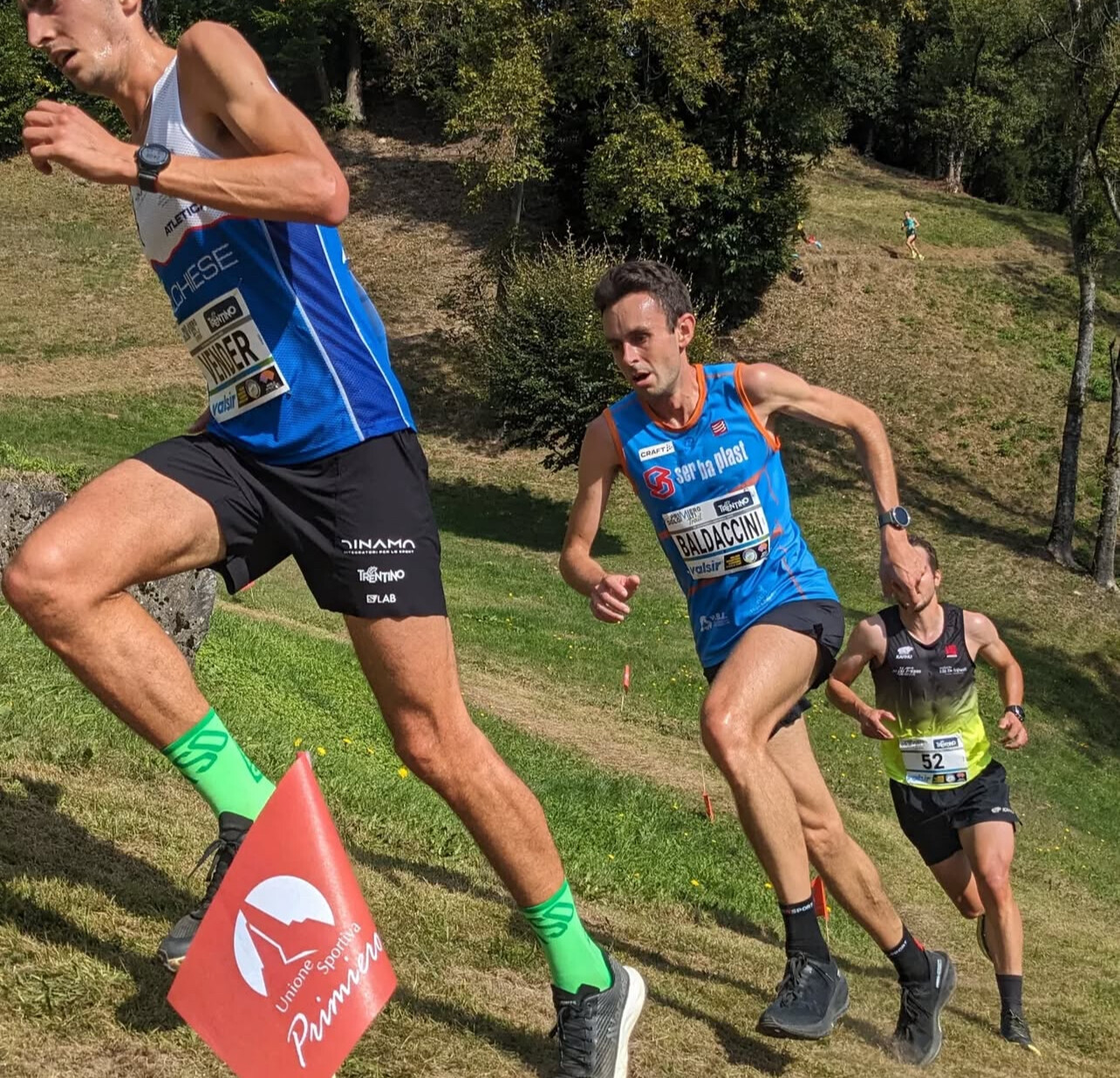
Top 3 Men’s Results:
1. Paul Machoka (Kenya) – 1:48:52
2. Kevin Kibet (Kenya) – 1:49:13
3. Henri Aymonod (Italy) – 1:49:15
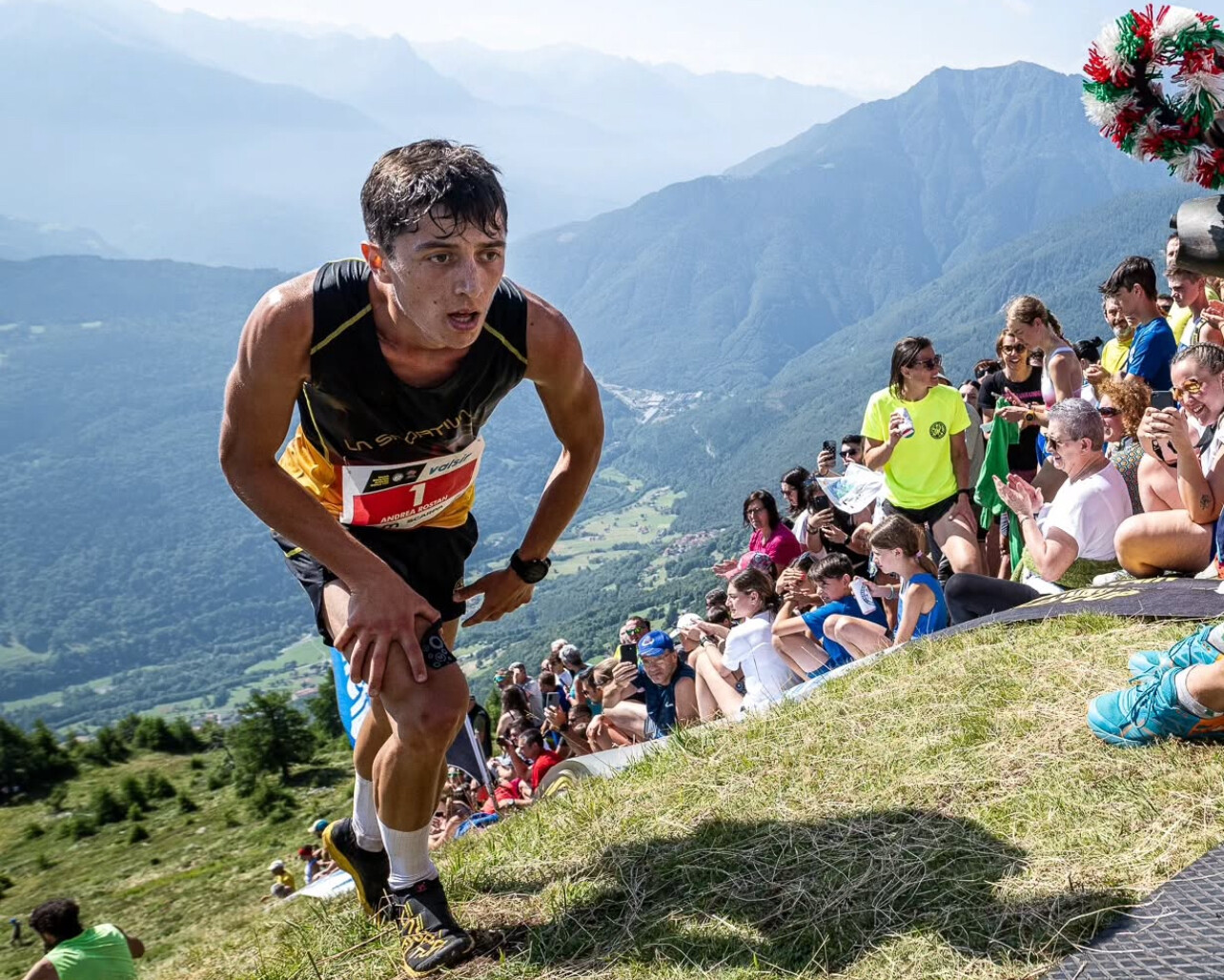
The Zmeu X-Fest, named after a dragon-like figure from Romanian folklore, proved a fittingly epic start to the 2025 WMRA World Cup. With its blend of cultural heritage and extreme terrain, the race set a high bar for the season ahead. Next, the series moves to Italy for the Vertical Nasego and Trofeo Nasego events on May 24–25.
by Boris Baron
Login to leave a comment
Kilian Jornet is The Laid-Back Legend of the Mountains and Ultramarathons
Kilian Jornet is one of the most decorated endurance athletes in history, yet you wouldn’t know it from speaking with him. He carries his accolades with a shrug and a smile, displaying the kind of calm confidence that comes from years of pushing human limits at extreme altitudes and distances. Whether he’s setting records on towering peaks or dominating the world’s most grueling ultramarathons, Jornet approaches every challenge with an almost playful ease.
Breaking Records in the Mountains
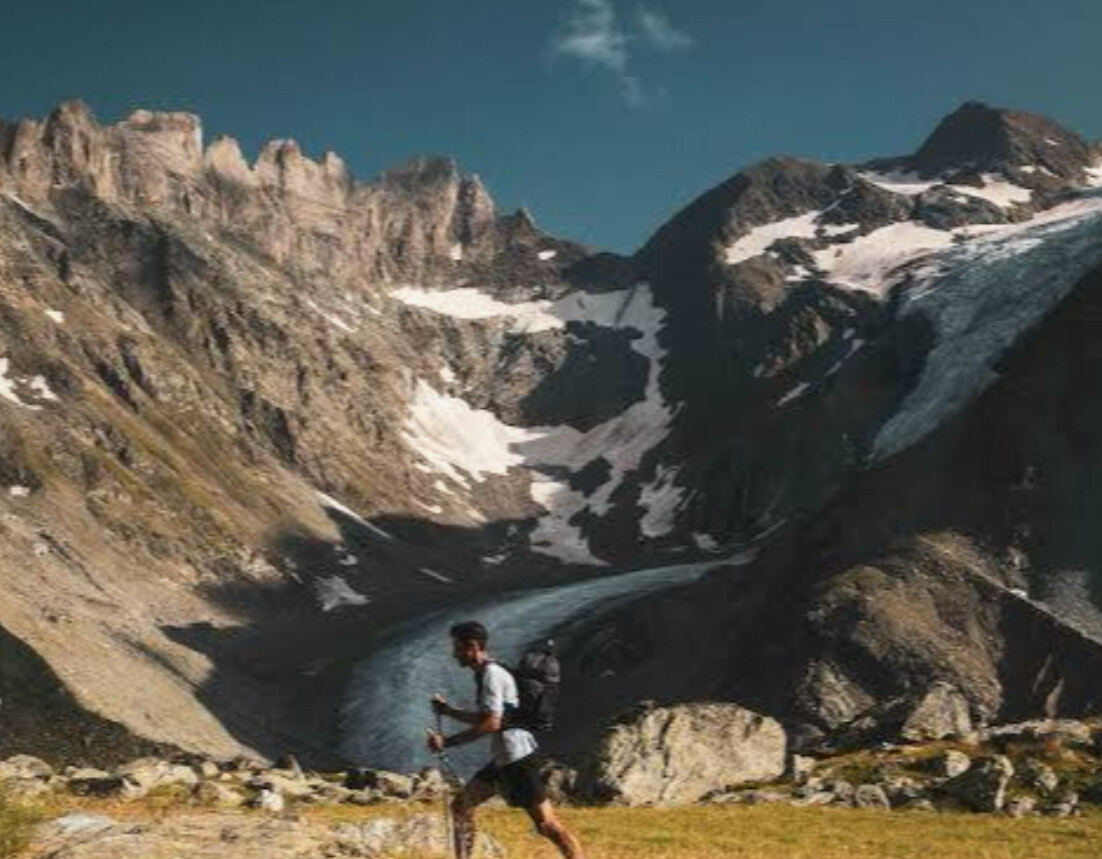
Jornet’s list of accomplishments reads like something out of a mountaineering legend’s biography. He holds the fastest known time (FKT) for ascent and descent of some of the world’s most iconic peaks, including Mont Blanc, the Matterhorn, and Denali. His 24-hour uphill skiing record—a staggering 23,864 meters (78,312 feet) of elevation gain—stands as a testament to his extraordinary endurance.
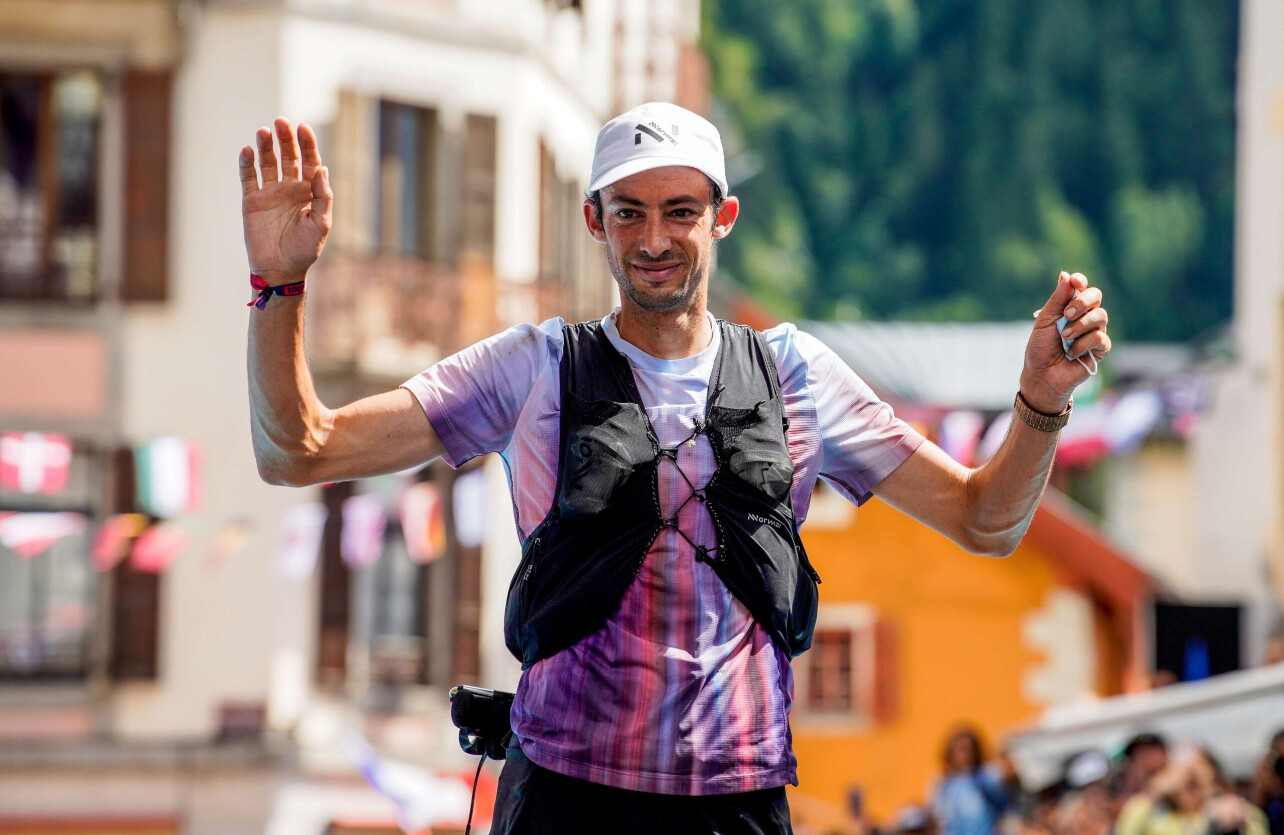
For Jornet, mountains aren’t just a competitive arena; they are home. Growing up in the Pyrenees, he was introduced to skiing and mountain running at an early age. By his teens, he was already an elite ski mountaineer, but his ambitions stretched far beyond the competition circuit. He set his sights on redefining speed and endurance in the world’s most rugged terrains.
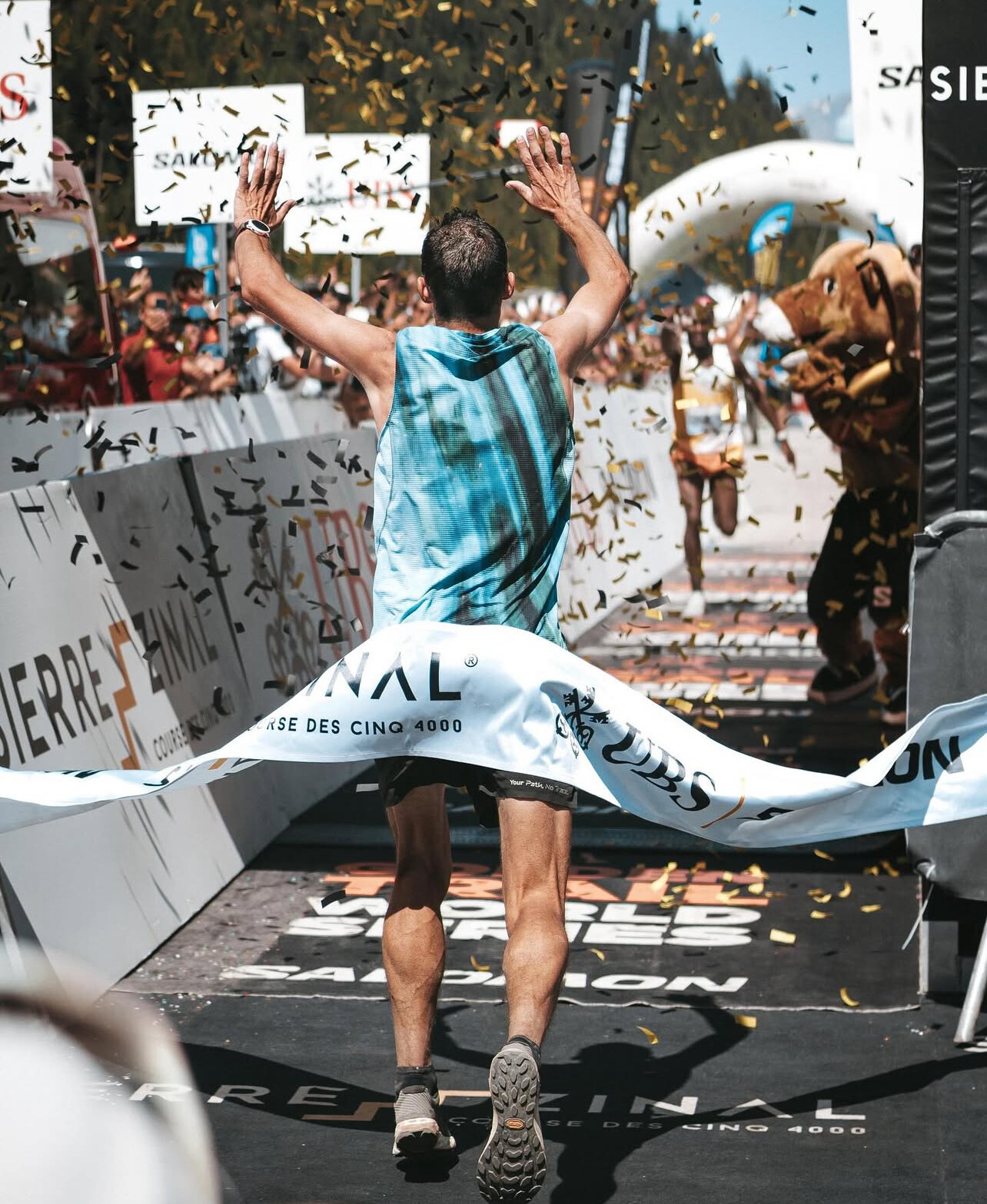
Dominating Ultramarathons
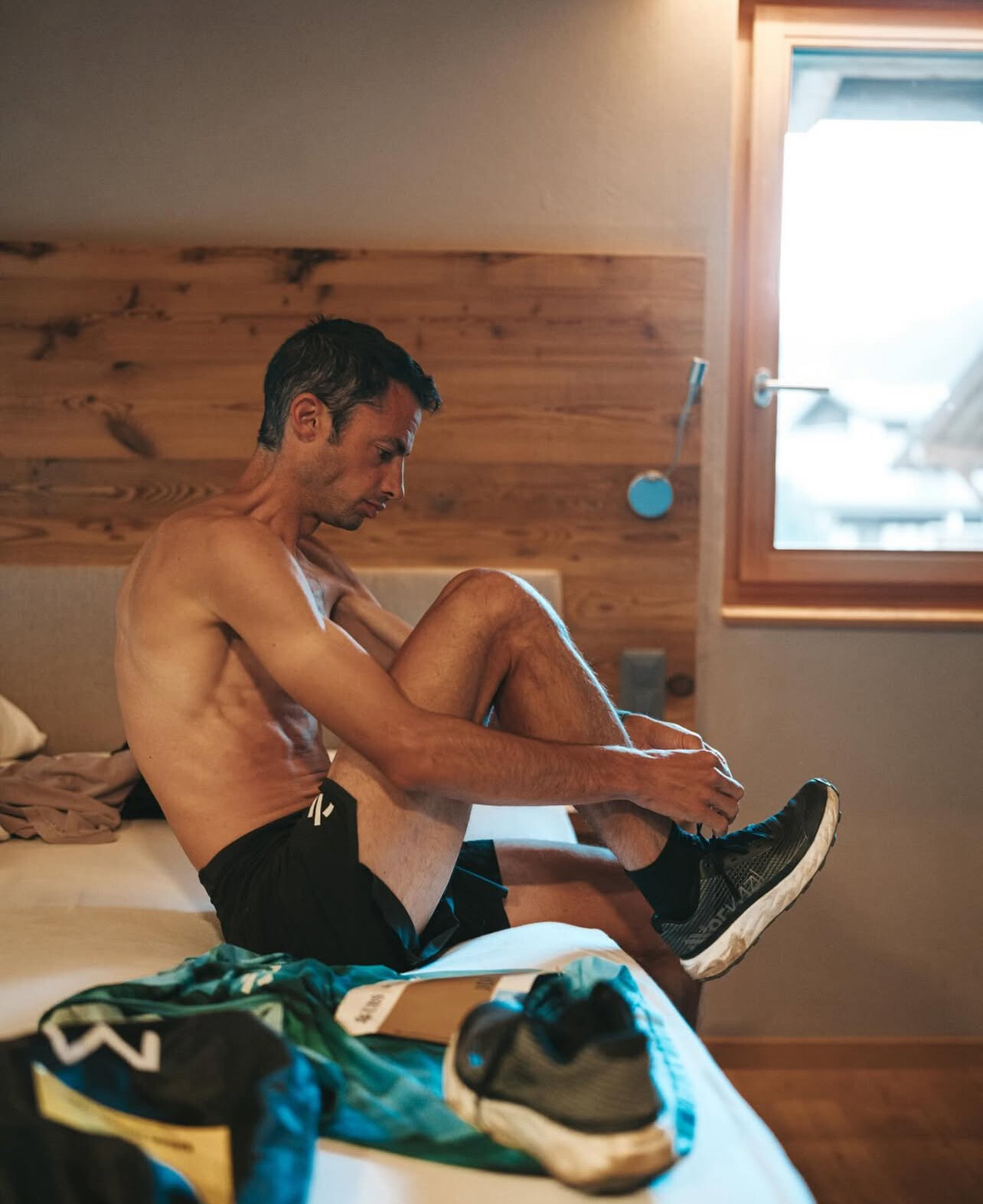
Beyond mountaineering, Jornet has excelled in ultramarathons, often obliterating world-class competition. His wins include victories at:
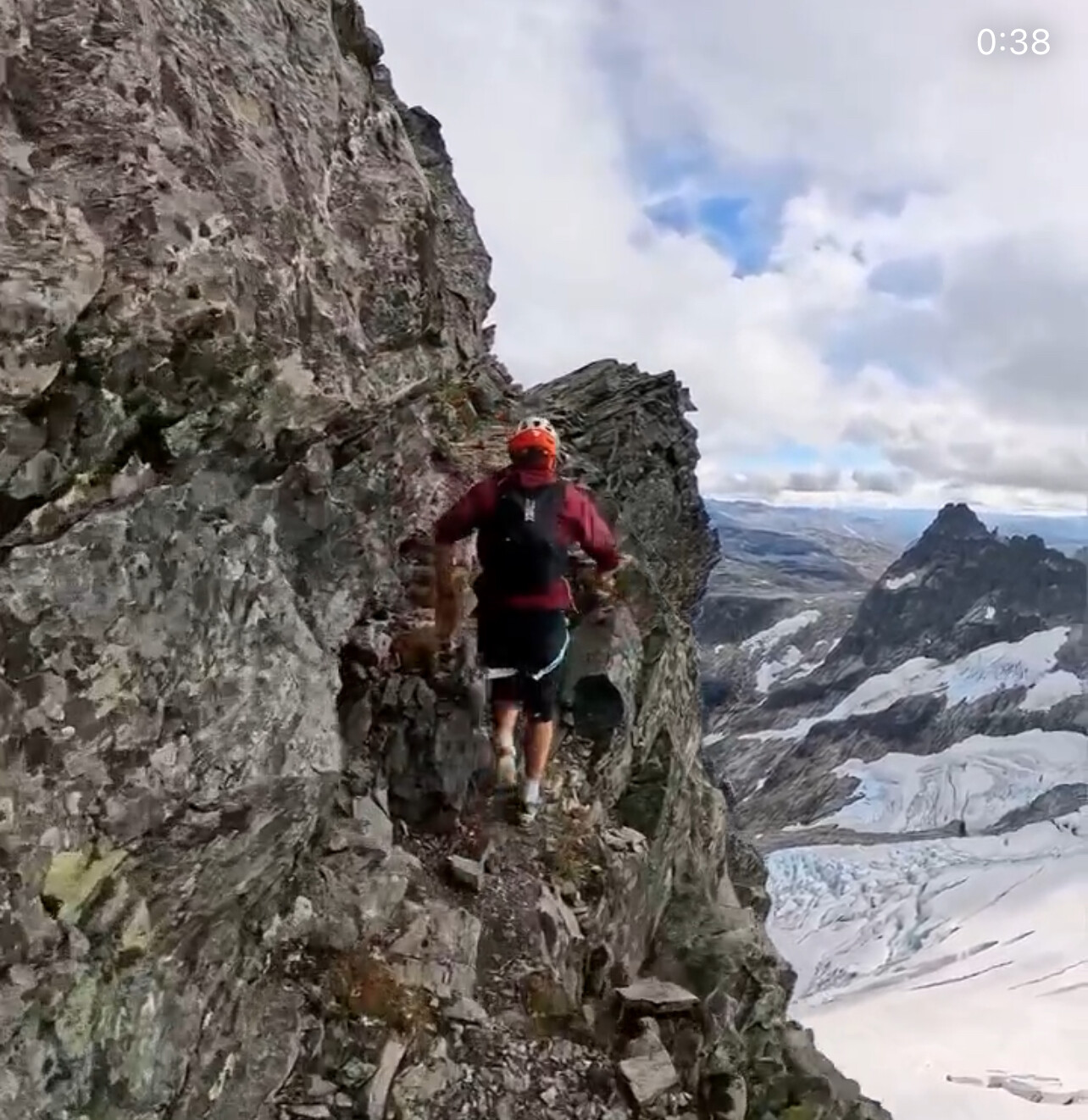
• Ultra-Trail du Mont-Blanc (UTMB) – Arguably the most prestigious ultramarathon in the world, where Jornet has claimed multiple titles.
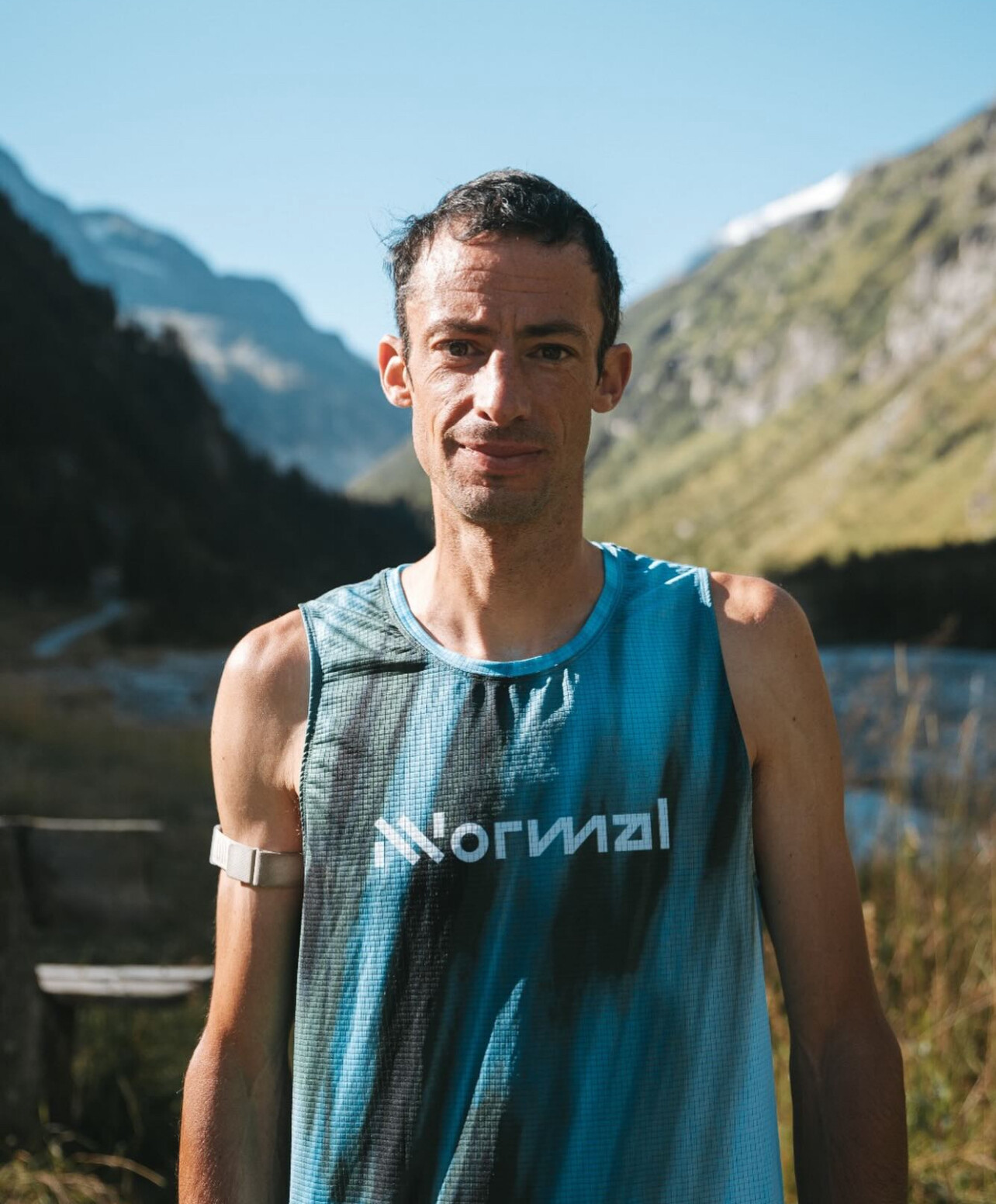
• Hardrock 100 – He’s won this brutally tough race in Colorado multiple times, including running it with a dislocated shoulder in 2017.
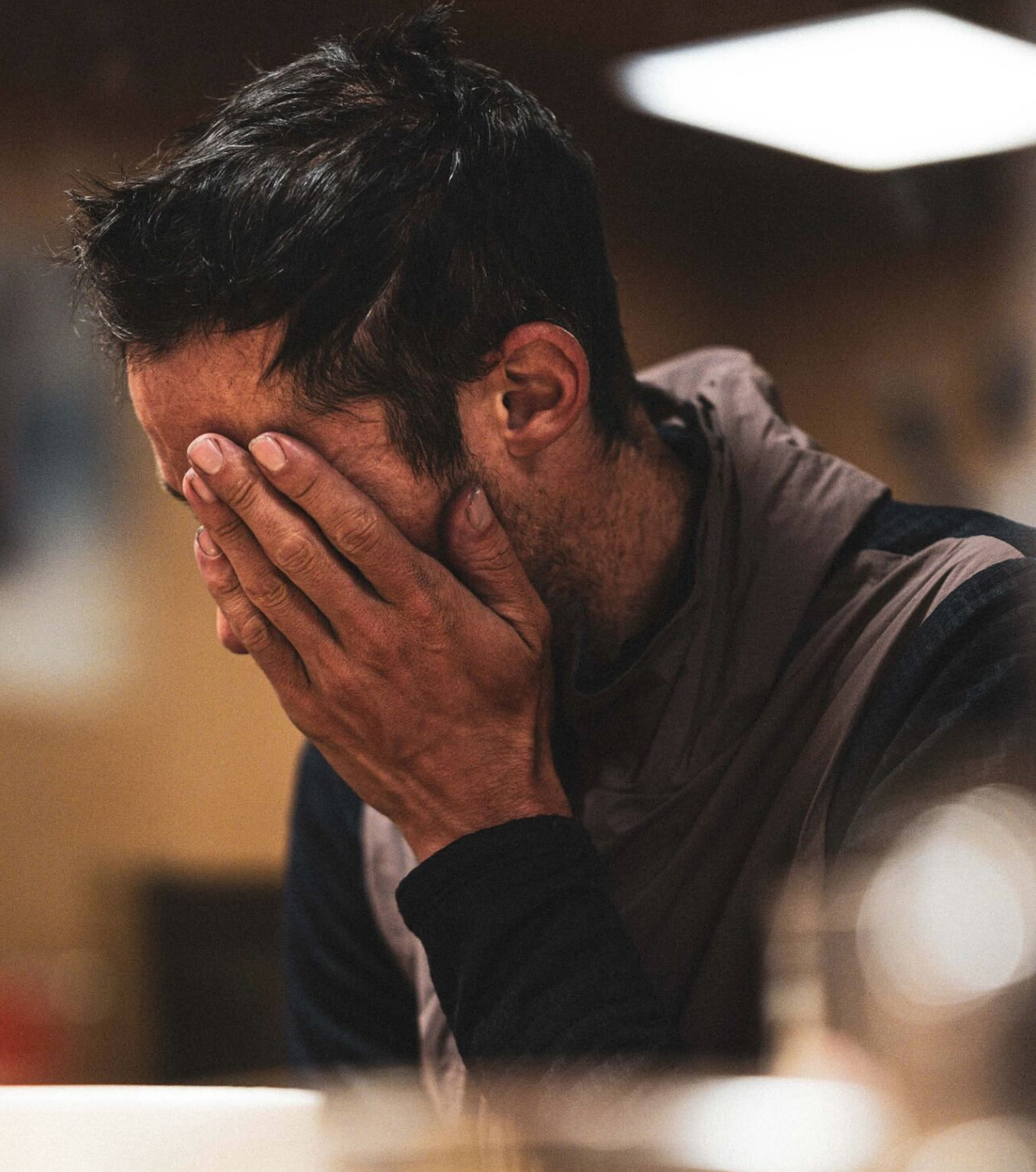
• Western States 100 – A race where his performance cemented his status among the world’s best ultrarunners.
• Zegama-Aizkorri Marathon – A mountain marathon in the Basque Country where he has thrilled fans with record-breaking runs.
Jornet’s dominance is not just about physical strength. His ability to read the mountains, understand his body, and adapt to extreme conditions gives him an almost supernatural edge.
The Mindset of a Champion
Despite his mind-blowing achievements, Jornet remains humble. When asked about his records, he often downplays them, focusing instead on the experience rather than the numbers. His approach to training is unconventional by traditional standards—he listens to his body, adapts his workouts based on how he feels, and prefers to spend as much time as possible in the mountains rather than following rigid training plans.
This laid-back mindset might seem at odds with his high-performance results, but it’s exactly what makes him great. He thrives in uncertainty, adapting in real time and trusting his instincts rather than fixating on data.
Looking Ahead
Jornet continues to push boundaries, not just in racing but in exploring human potential in extreme environments. His recent projects have included minimalist alpine expeditions and self-supported endurance challenges rather than traditional competitions. He is also an advocate for environmental sustainability, working to preserve the mountains he loves.
At 36 years old, Jornet is still redefining what’s possible in endurance sports. Whether he’s racing, breaking records, or simply enjoying a day in the mountains, he remains one of the most inspiring athletes the world has ever seen.
For those who dream of reaching their own endurance goals, there’s a lesson to be learned from Jornet: approach every challenge with passion, stay adaptable, and never lose sight of the joy that brought you to the sport in the first place.
by Boris Baron
Login to leave a comment
He Fell 200 Feet During a Trail Running Race—And Lived to Tell the Tale
Not all trail races are created equally: 22-year-old collegiate trail running champion Stuart Terrill learned the very hard way at the U.S. Mountain Running Championships last summer
Stuart Terrill’s life forever changed in a blink of an eye during a competitive mountain running race this past summer.
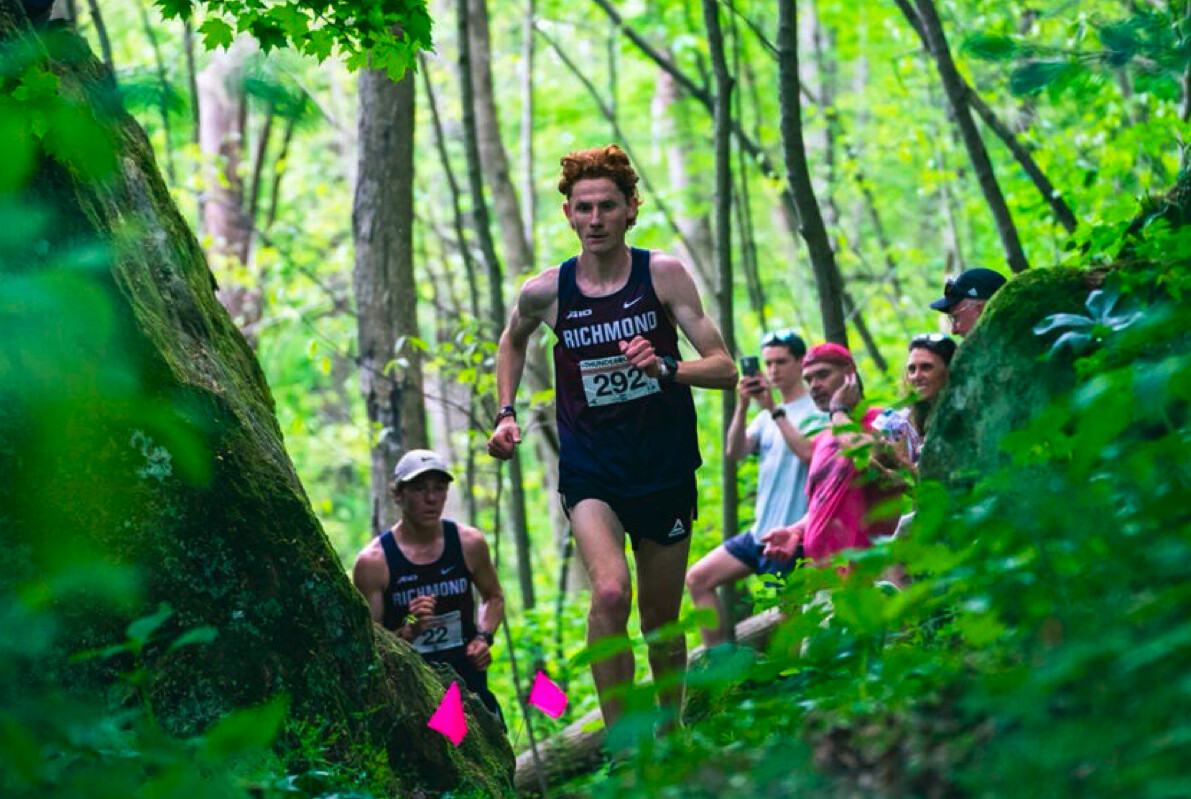
On July 13, the 22-year-old from Crozet, Virginia, summited 11,000-foot Hidden Peak at Snowbird ski resort above Salt Lake City. He was an hour into the 8.7-mile Cirque Series race serving double duty as the 2024 USA Track and Field Mountain Running Championships.
Terrill had just graduated from the University of Richmond, where he ran cross country and track and double-majored in leadership and communication. But he was no stranger to the trails. He won the Collegiate Trail Running Championship in Fairfax, Virginia, in May, besting the competition by nearly a minute over the 10K course to earn his second straight collegiate trail running championship title.
As he crested Hidden Peak and started bombing down the other side, Terrill passed a competitor and lost control, sending him careening towards a cliff. Photographer Matt Johnson watched in horror, pivoting to try to catch Terrill before he fell. But he was too late. Terrill toppled over the edge and tumbled more than 200 feet down the jagged unforgiving terrain below.
“He swung wide to pass a runner. His momentum sent him barreling down towards me and I dropped my camera to try and grab him,” Johnson recalled in the resort’s incident report. “I heard his terrified screams as he went out of sight down the rocky gully. At this point I screamed for a medic and life flight because I wasn’t sure if he was going to even survive. It was rough. It was one of the most horrifying things I’ve ever witnessed.”
Terrill suffered numerous broken bones—eight vertebrae, four ribs, his right collarbone, left wrist, right kneecap, and several bones in each of his feet—and was lucky to be alive. As his mangled body was taken away in a medical helicopter, all those on the scene could do was wonder: how did such a perilous
Mountain Running: A Contact Sport?
While many may be initially attracted to running (on the track and roads) precisely because of its relatively low-risk profile—no contact that could lead to a concussion, no explosive movements that could result in an acute injury—trail running, and in particular mountain running, is another matter. In fact, mountain running, a fast, explosive trail running discipline that usually involves running over rocky, uneven terrain and climbing and descending peaks, comes with considerable risk.
Many mountain running races take competitors along high cliffs and ridgelines with exposure, and down steep, off-trail descents through technical terrain. Minor falls are common, and sprained ankles, broken collarbones, and skin-devouring trail rash are among the most typical injuries.
Injuries are common enough that some races, including the Pikes Peak Marathon in Manitou Springs, Colorado, give out an award for the bloodiest runner. Mount Marathon, a short mountain race in Seward Alaska, reports several minor injuries in a typical year. In 2012, it suffered its first presumed death when 66-year-old Michael LeMaitre, fell on a steep section of the course and, inexplicably, was never found.
Although it wasn’t a super-fast shorter-distance mountain running race, American runner Hillary Allen survived one of the worst known trail running accidents in 2017 at the 57K Hamperokken Skyrace in the mountains outside of Tromso, Norway, after she tripped and ragdolled 150 feet down a ridge and broke both arms, two vertebrae, several ribs, and numerous bones in her feet. Like Terrill, she was lucky to have survived.
“We acknowledge the inherent dangers of producing races in the high alpine, injuries are rare, but do happen unfortunately,” Julian Carr, the race director of the Cirque Series event at Snowbird, wrote in an email. “This is, by far, the most serious injury at a Cirque race since we started our races in 2015.”
“We come from a much more dangerous world of ski mountaineering and climbing, so trail running might seem pretty vanilla compared to that, but you have to be organized and prepared,” Madigan says. “You’ve got to make sure you’re protecting everyone and have a consistent level of safety.”
Not All Trails Are Created Equally
Terrill isn’t new to trail running. In fact, he ran his first trail race in middle school—a mile and a half course with 100 feet of elevation gain in central Virginia. While running cross country and track at the University of Richmond, he also went on to win the Collegiate Trail Running National Championships in both 2023 and 2024.
As a junior in 2023, he took the national title at the Thunderbunny 11K trail race in Athens, Ohio, in 41:27, setting the course record by a minute and a half. That’s when he knew he had a thing for off-road running. Then this past May he repeated as national champ by winning the Fountainhead 10K++ Trail Run in Virginia, obliterating the course record by six and a half minutes in 44:55.
“I’ve always trained in hilly locations, and my stride worked well
Login to leave a comment
USA’s Eli Hemming and China’s Miao Yao Make History at 2024 OCC
It’s the first time an American or Chinese runner has won the prestigious 57K trail race that serves as a de facto global trail running championship. All year, Eli Hemming said his primary focus was charging up and over the La Flégère ski resort on the last climb of the Orsières-Champex-Lac-Chamonix (OCC) race at the UTMB World Series Finals to then break the finish line tape in Chamonix, France, as the champion.
That’s almost exactly how it played out on Thursday afternoon. The 29-year-old runner from Kremmling, Colorado, fended off the world closing in around him as he overheated under a humid, sunny 80 degree day, as well as a hard-charging Francesco Puppi, to win the 57K (36-mile) race in 5 hours, 11 minutes in 48 seconds. In doing so, he not only claimed a UTMB-Mont Blanc Finals title and the 13,000 euro (about $14,400) prize, he became the first American ever to win the prestigious race that serves as the de facto global championship at the shorter ultra distances.
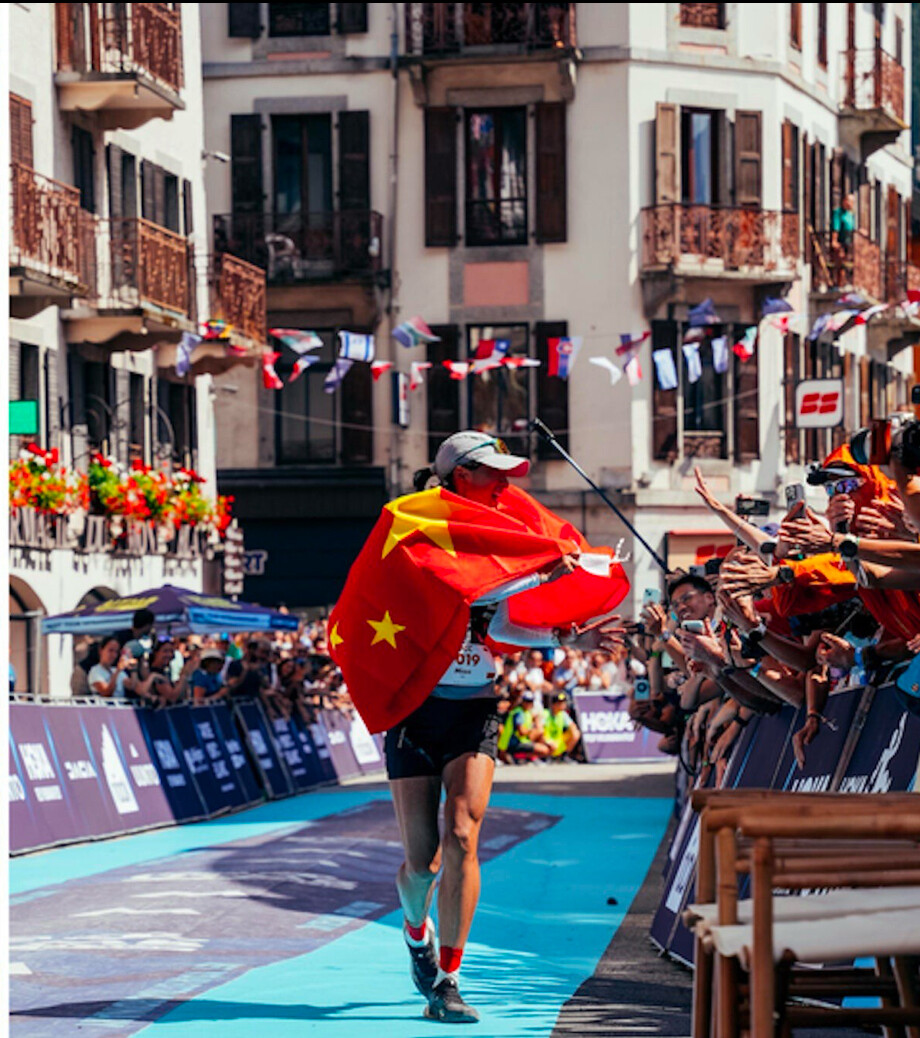
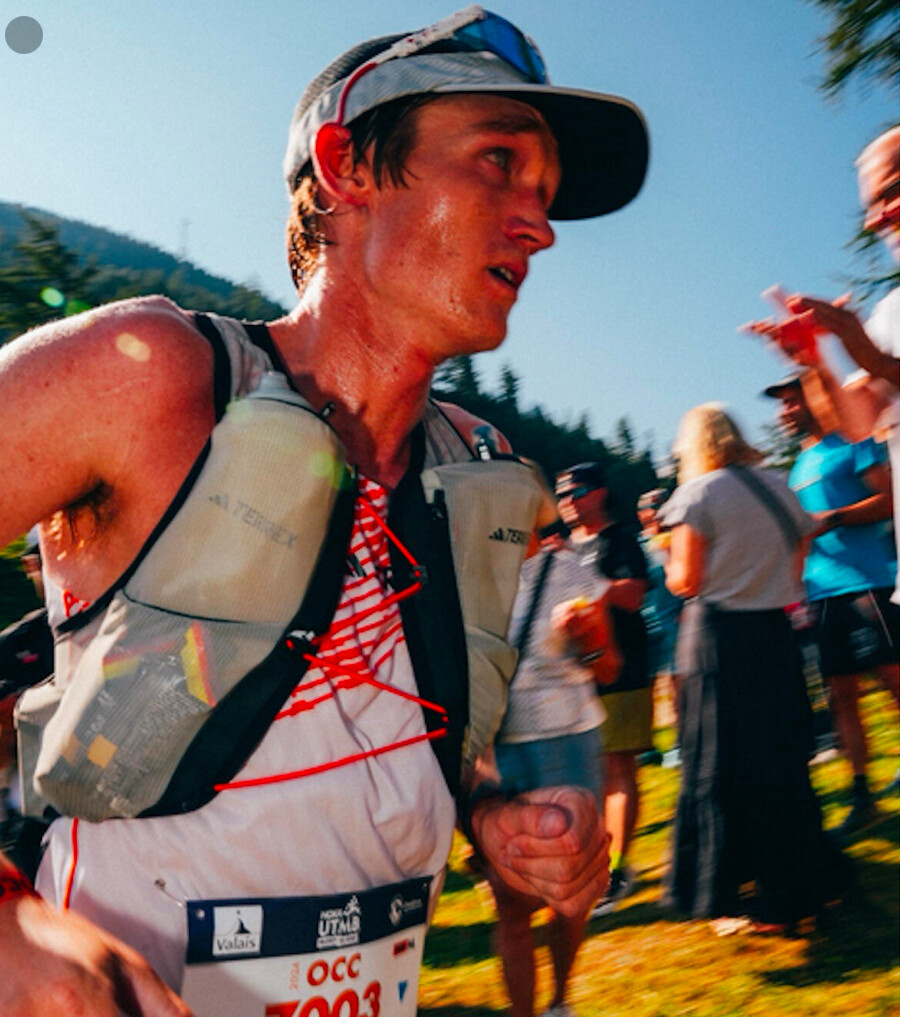
But the race was a dastardly tilt, and Hemming had to turn himself inside out to get the win. It figured to be a grueling battle, both because of the 11,500 feet of elevation gain and descent but also because of the strong field of international runners and hot, humid weather with sunny skies soaring into the 80s under the early afternoon sun. Hemming went out hard early in the race, but he didn’t feel compelled to challenge for the lead up the first two climbs over the first 9 miles. That’s because fellow American Christian Allen was absolutely flying off the front, as the 26-year-old runner from Orem, Utah, surged to the lead from the gun and led by more than 2 minutes through the 15-mile mark as he passed through Swiss the village of Trient. But that’s where the runners faced the toughest test of the race, a spikey 4-mile, 2,300-foot technical climb to the Chalet des Grands before continuing upward on slightly less steep terrain to the Col de Balme mountain pass. In all, it’s a 3,000-foot ascent over about 6 miles to the 7,200-foot high point on the course.
That was the first crux of the race, and that’s where Hemming took charge. As Allen faded, Hemming surged up the big climb as several other speedy runners gave chase, including Swiss runner Remi Bonnet who is known for his uphill running abilities. But Hemming had been waiting for this all year and specifically trained on long mountain ascents near Breckenridge, Colorado. He continued to surge across the Swiss-French border and up to the pass, building a nearly 7-minute lead over Spanish runner Antonio Martinez Perez.
From there, Hemming extended his lead to 10 minutes on the 7-mile, 3,000-foot descent to the French village of Argentière. But with one more big climb—a 3.5-mile, 2,000-foot technical grind to 6,200 feet atop the ski resort—he was anything but home free. Early in the climb, he slowed from a run to a walk, and even stopped at one point midway through the climb, bent over and rested his hands on his knees. He looked in distress, but eventually gathered himself and started running slowly up the hill again.
Perez had been charging up the mountain behind him and there was a brief moment where it looked like Hemming’s lead might be in jeopardy. But he managed to reach the final checkpoint at the 50K La Flégère aid station in first, and immediately looked better as he began the 4-mile descent down to Chamonix. Although he had gained ground, Perez felt the impact of the climb, too, and was caught by Italian runner Francesco Puppi before reaching the ski resort aid station. After a cordial acknowledgement as he passed, Puppi suddenly had a new spring in his step. He surged up the final 200 meters to reach the checkpoint about 4 minutes after Hemming then began bombing down the rocky, rooty dirt trail in pursuit of the leader.
Up front, Hemming had recovered slightly, running smoothly albeit without the intensity of a couple hours earlier. Puppi was clearly running faster. What had been a 10-minute lead at the 28.2-mile mark had greatly diminished with less than 3 miles to go. But with every stride, Hemming was one step closer to his year-long goal of winning OCC and he wasn’t going to let it slip away.
When he reached the edge of the Chamonix pedestrian village, he was quickly re-energized by the throngs of cheering spectators and increased his pace briefly as he dashed through the winding 200-meter section before slowly slightly on the final blue-carpeted approach to the finish line.
“I was trying to pace it as well as I could, and I knew if I made it over Col de Balme with a good gap, unless I blow up—which I did a little bit—I knew I could hold up pretty well to the end,” Hemming said. “It ended up being a bit of a grind. I knew I had about a 10-minute lead at Argentière, but I was very much overheated and the walls started closing in a bit. I tried to take a little time to cool down, but I knew I had to keep moving and just make it to the top.”
Still running hard, Puppi dashed through the village three minutes later to finish second in 5:14:46, followed by Perez in third at 5:17:56, China’s Juwei Zi in fourth (5:22:17), and Aritz Egea Caceres in 5th (5:27:07). Nick Handel, a 32-year-old runner from San Francisco, was the second American runner in the men’s race, finishing 13th in 5:41:08. The victory is the first big international win for Hemming, who transitioned into trail running in 2021 after several years as a professional triathlete. Hemming has won several domestic 50K races in the US, including the Canyons Endurance Runs 50K on April 26 in Auburn, California. Last year, he placed second to Bonnet in the Mont-Blanc Marathon and also finished fifth in the Golden Trail World Series Final 20K championship in Noli, Italy. For a while, it looked like Hemming, and his 27–year-old wife, Tabor, might be on the verge of one of the best trail running stories of the year. They decided to part ways with sponsor Salomon, in the offseason, and sign with the Adidas-Terrex team at the start of the year. While they both raced well early in the season—Tabor took third at the Canyons 50K in April and third at the Broken Arrow Skyrace 25K in June—they opted not to race as much this year as they’ve been known to. They also decided not to join their new teammates at an extended Chamonix training camp in late July and instead stay home and train at high-altitude in central Colorado.
Knowing what they’d be facing on the course, they sought out long climbs near Breckenridge and Frisco that topped out between 12,000 and 13,000 feet—including Wheeler Pass between Copper Mountain ski resort and the community of Blue River. “The course is fast and steep, but it’s also very runnable,” Tabor said. “We knew we could get quality training at home, so we used those climbs to train, so we were happy to stay at home and run the places we know best.”
Tabor looked great early in the race, running with a strong pack of lead women that included Judith Wyder of Switzerland, Clementine Geoffray of France, and Miao Yao of China, plus Spain’s Sara Alonso, New Zealand’s Caitlin Fielder, and fellow Americans Dani Moreno and Allie McLaughlin.
Wyder was the early leader and figured to be tough to beat—despite a recent bout of COVID. She had earned the silver medal in the 50K race at last year’s World Mountain and Trail Running Championships in Austria, and more recently took second in the 20K mountain running race at the European Championships and first at the Mont-Blanc Marathon in early July. Wyder led Geoffray, Moreno, McLaughlin, and Yao through the initial 4.5-mile climb to Champex, then expanded her lead to the top of the second climb at the 6,200-foot summit of La Giete as Yao and Alonso maneuvered into the second and third spots. But following a similar strategy as her husband, Tabor took the lead on the long downhill into Trient and began to surge on the technical climb up to Chalet des Grands with Yao, Wyder, Alonso and McLaughlin in tow. Hemming ran in the lead for part of the climb, but she paid for the aggressive move. Wyder and Yao overtook her and those two separated from the rest of the field. They dueled back and forth but Yao took the lead over Col de Balme and would never relinquish it. She seemed to get stronger as the race went on and she extended the gap on Wyder to 4 minutes at La Flégère ski resort.
From there, Yao cruised into Chamonix to secure the first win by a Chinese athlete at OCC in 5:54:03. With a 2018 CCC win already under her belt, she also enters the rarified air of having two UTMB World Series Finals championship titles to her name. Wyder was second in 6:00:05, followed by Geoffray in third at 6:02:10, Alonso in fourth (6:05:15), and Fielder in fifth (6:05:46). Moreno, who was third in the OCC in 2022 and dropped out last year, ran a strong second half to finish sixth as the top American in 6:06:59. Tabor Hemming continued up and over Col de Balme but slowed significantly and eventually dropped out at Argentière.
“I’m really happy about my race. It was really fun out there to compete with such strong ladies,” Wyder said, “Miao Yao was flying in the end. I’m so proud of myself to be back and to be able to be racing healthy. I didn’t think about [having COVID recently]. Today I was really happy with my performance and with my legs today.”
Login to leave a comment
In His First 100-Miler, David Roche Demolishes the Legendary Leadville 100 Course Record
Matt Carpenter’s record stood for 19 years.
In his first 100-mile race of his career, trail runner and coach David Roche took down a legendary record in the sport. On Saturday, the 36-year-old broke Matt Carpenter’s storied Leadville 100 course record from 2005, winning in 15:26:34—over a 16-minute improvement of the record.
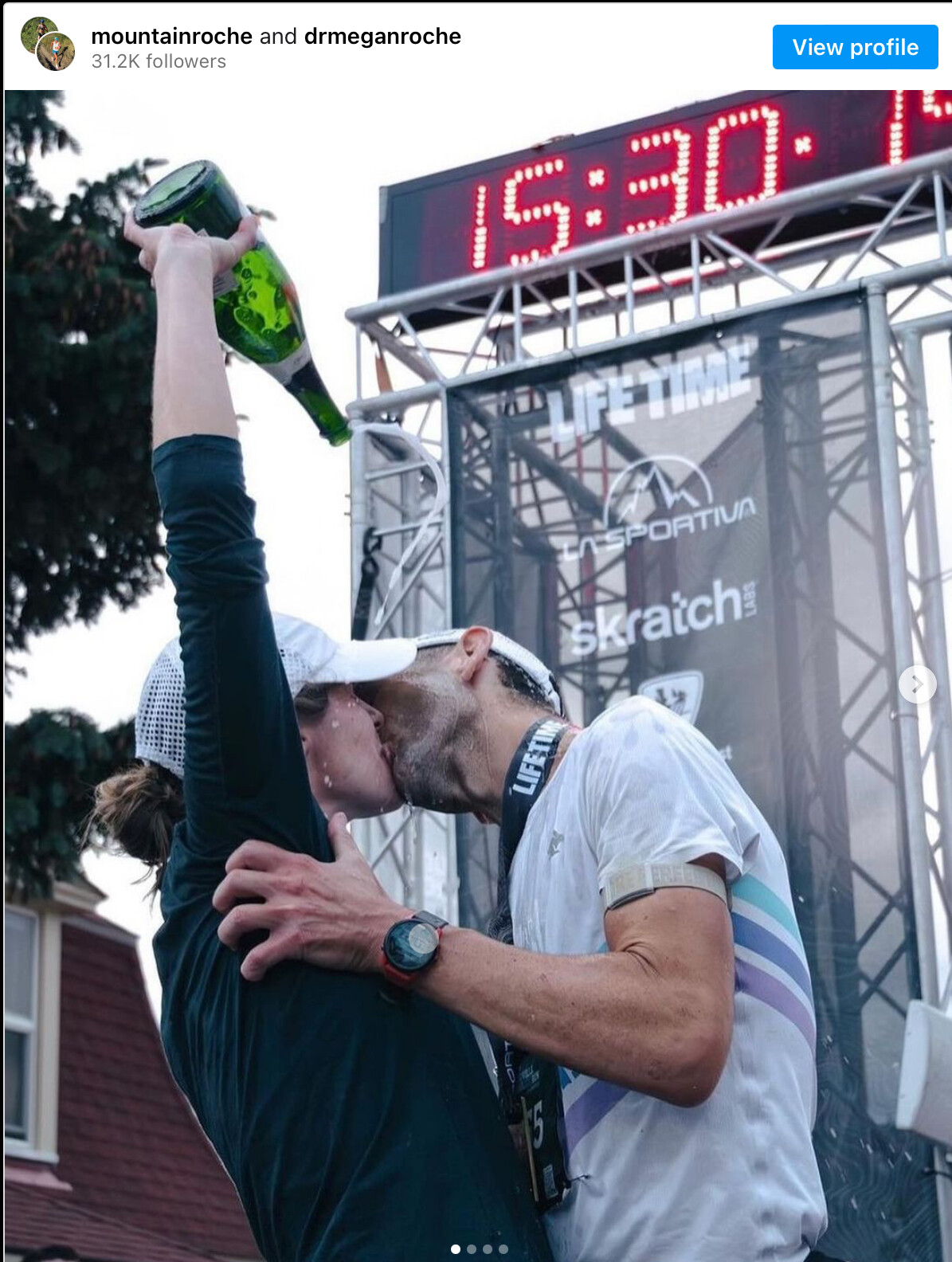
Roche won the men’s race by 30 minutes, on the dot. Adrian Macdonald was second in 15:56:34, and Ryan Montgomery placed third with a time of 16:09:40. In the women’s race Mary Denholm dominated, winning in 18:23:51. Zoë Rom took runner-up honors (21:27:41) while Julie Wright rounded out the podium in 21:48:57.
The Leadville course is notoriously difficult, primarily due to its situation at high altitude. The town of Leadville, Colorado—where the race starts and ends—sits at 10,119 feet above sea level. The “Race Across the Sky” covers more than 18,000 feet of vertical gain and at its highest point, runners reach an elevation of 12,600 feet. (For context, “high altitude” is generally considered to begin around 5,000 feet above sea level.)
Roche went out aggressively and built a sizable cushion on Carpenter’s record of 15:42:59. At the halfway mark, Roche was ahead of course-record pace by over 25 minutes, according to iRunFar. By the 87.4 mile split, the gap had decreased to 15 minutes, but it was enough of a buffer for Roche to maintain.
After the race, Roche posted on Instagram recapping the feat and noting some prerace nerves.
“I put a big scary goal out there early this year: chasing the historic 15:42 Leadville 100 course record by one of the GOATs, Matt Carpenter,” he wrote. “Approaching my first 100 miler, though, I’m not sure I truly believed. I kept joking about where I’d drop out and what my order would be at the Leadville Taco Bell.”
While Roche is an accomplished trail runner, he’s historically had the most success at shorter distances, like the half marathon and 50K. In 2014, he was named the 2014 USATF Sub-Ultra Trail Runner of the Year, and he’s represented Team USA internationally.
Roche, along with his wife, Megan, are well-known in the running community for their coaching business and podcast: Some Work, All Play (SWAP). According to its website, SWAP’s professional roster includes athletes like mountain running world champion Grayson Murphy, three-time Barkley Marathons finisher John Kelly, and steeplechaser/mountain runner Allie Ostrander.
Login to leave a comment
Mountain Running World Cup opens at Broken Arrow
The 2024 Valsir Mountain Running World Cup kicks off in style on Friday (21) at the Broken Arrow in Palisades Tahoe, California. The season launches with the Broken Arrow VK, a short uphill gold label race, and continues with the 23km Broken Arrow Skyrace, a long gold label race, on Sunday.
With a base elevation of 1890m and stunning peaks all around, including the prominent 2700m Washeshu Peak, Broken Arrow has the perfect credentials for mountain racing.
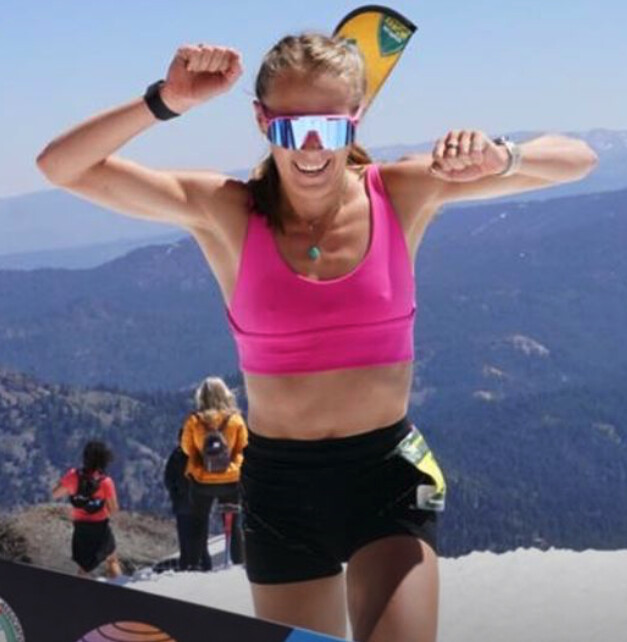
Many of the athletes from last year’s podiums return. In the women’s VK, last year’s winner Anna Gibson is back to defend her title. The 2023 runner up, Jade Belzberg, also returns, as do Annie Dube and Anna Mae Flynn, who finished fourth and fifth respectively last year. But they will face stiff competition in the form of Allie McLaughlin, the uphill champion at the World Mountain and Trail Running Championships in 2022, and Tabor Hemming.
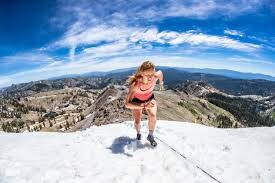
The men’s VK is also looking incredibly competitive. Darren Thomas, second last year, is back, as is last year’s fifth-place finisher Abraham Hernandez Cruz. Joining them will be some big names, including 2023 World Cup winner Philemon Kiriago, Jim Walmsley, Eli Hemming and Christian Allen.
Many runners are contesting both the VK and the Skyrace, with a day in between to recover. Last year the Skyrace was severely affected by snow, but the snowline is not set to be as low this year.
Memorably McLaughlin battled with Gibson last year, taking the lead and stretching it out to win. McLaughlin is doing the double here, as are Tabor Hemming, who was third last year, and Dube. Janelle Lincks, fourth last year, also returns. Sophia Laukli, a breakout star in last year’s World Cup, also looks to be toeing the line and will be one to watch.
In the men’s Skyrace, defending champion Eli Hemming returns, along with the rest of last year’s podium, Chad Hall and Meikael Beaudoin-Rousseau. Allen, Kipngeno and Thomas will double up, which should make things interesting. To shake things up even further, former world champion Joe Gray is on the start list. Zak Hanna, who finished fourth in last year’s VK, is just taking on the Skyrace this year.
The VK on Friday starts on the valley floor and climbs its way up 914m over 4.8km to the summit of Washeshu Peak at 2708m. Despite some changes to the course this year, along the way it still takes in some brutally steep terrain, leading up to the iconic Headwall Ridge and the ‘stairway to heaven’ bolted ladder to the summit of Washeshu Peak. Runners will experience steep rock slabs, snow and scree, which is guaranteed to deliver an exciting race.
On Sunday the Broken Arrow Skyrace is held on a loop which climbs 1533m over the course of 23km. It starts in Palisades Tahoe Village and most of the race takes place above the tree line on technical and demanding trails. Runners will be treated to views of Granite Chief Wilderness and they will experience Emigrant Pass, KT-22 and, like the VK runners, the ‘stairway to heaven’ ladder to Washeshu Peak.
The Broken Arrow offers the first two of 12 races that form part of the Valsir Mountain Running World Cup in 2024. The season closes with the World Cup Final Val Bregaglia Trail on 13 October. There will be a livestream of the Broken Arrow action available on the event website.
Login to leave a comment
Adkin and Allen among winners at Mountain Running World Cup final
Great Britain’s Scout Adkin and Joe Steward opened the Valsir Mountain Running World Cup Finalissima at Sky Gran Canaria with victories in the uphill race on Friday (13), while the long distance race on Saturday (14) was won by USA’s Christian Allen and Spain's Ikram Rharsalla Laktab.
Pace adjustment is key to successful mountain running as conditions, terrain and – as it turned out – even distances can change in the blink of an eye.
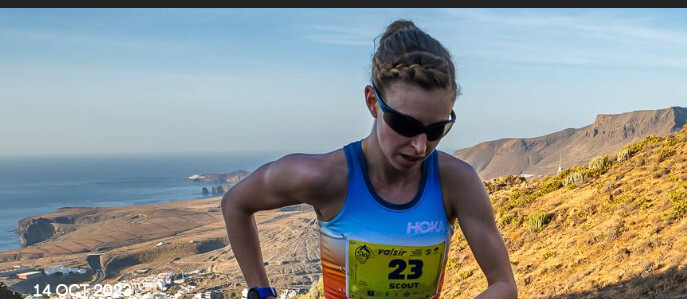
A weather alert was issued for the heat and possibility of forest fires and this meant the 6km uphill race – traditionally the opening event on this action-packed weekend – was reduced to 4km on a significantly altered route. Not only was the race shorter, it also didn’t climb above 400m due to the restrictions.
In the brutally hot conditions, with the temperature at 36°C at the start, it was Steward who quickly made the best of a tough situation as he raced to victory in the Sky A4Uphill event in 17:42. Steward placed eighth at the World Mountain and Trail Running Championships in Innsbruck earlier this year, but his recent results included wins at Canfranc and the Challenge Stellina mountain race in Italy, so he lined up as the man to beat.
Kenya’s Patrick Kipngeno, who is in the running for the overall men’s World Cup title, finished 11 seconds behind Steward’s winning time and secured second place. Allen was third in 18:00, Italian Henri Aymonod finished fourth in 18:18 and Philemon Kiriago – who led the men’s World Cup standings going into the event – was fifth in 18:33.
The women’s race was equally exciting as Adkin once again demonstrated her superb form. An early starter in a race that spanned 40 minutes from the first gun, she had to watch as the field tried – and failed – to match her 21:17 finish time. Looking incredibly strong on the technical section going into the final climb, it would clearly take something special to beat the Scot, the bronze medallist in last year’s European Off-Road Running Championships on the neighbouring island of La Palma.
As for the race in Gran Canaria, it featured a fast opening kilometre as the runners eased out of the coastal village of Agaete and then climbed steadily before the tough final ascent to Lomo del Manco on the volcanic rock paths the Canary Islands are so well known for.
With athletes starting every 30 seconds, the race was a superb spectacle and the results were in doubt all the way to the finish line. With no specific order, it was a case of hitting the climbs flat out. Tactics were for another day and for the two longer races (35km and 22km) taking place on Saturday and Sunday.
Adkin, who finished 15th overall, won the women’s race ahead of Finland’s Susanna Saapunki, who clocked 21:30.
Kenya’s Joyce Muthoni Njeru, who leads the overall women’s World Cup standings, placed third in 22:12, with her compatriot Philaries Kisang – currently second in the standings – finishing fourth in 22:58. Britain’s Sara Willhoit was fifth in 23:13.
Allen and Rharsalla Laktab prevail
Day two featured the longest race of the weekend, the Sky TPT38 Long. It was a demanding 38km, which had to be changed from the original 2736m of ascent and the sections of steep, technical ground due to the weather alert. However, it remained a great course, one that saw runners start down on the coast of Maspalomas before traversing a series of volcanic canyons.
If day one and the uphill-only race over 4km was all about flat-out power, this was very much a story of tactics, endurance, fuelling strategies and grit, not to mention the superb descending skills required for the final 12km.
Fortunately for the competitors, conditions had cooled slightly and the canyon walls provided much needed shade, so it was possible to really push hard from the gun.
It was the USA’s Christian Allen who did just that to seize the early initiative to open up a commanding lead of more than three minutes by 22km.
Allen has been in great form this year as his 2023 race programme demonstrates. The 28-minute 10km track runner has posted a string of impressive results all over the world, highlighted by a seven-minute victory in the Speedgoat 50km in the Wasatch Mountains, USA, an impressive second place at Vertical Nasego, and a third place at the Trofeo Nasego this Valsir Mountain Running World Cup season.
Allen, who is also a member of a newly formed Trail Team created to help athletes progress in the world of off-road running, crossed the line in 2:29:29, comfortably ahead of his compatriot Andrew Wacker, who clocked 2:35:52. Czechia's Ondrej Fejfar was third in 2:36:50.
"I’m tired, but I’m glad to be done," said Allen after his second race in two days, which began with a third place in the uphill race on Friday. "I was a little tired after yesterday and didn’t get much sleep because of the caffeine I’d taken, but competing is all about adapting and going out there and having fun."
A strong race on Sunday over the classic distance could see him move to as high as third in the overall World Cup rankings, but speaking after the long race, he was not sure if he will be on the start line for the third race of a packed weekend. “But you never know,” he laughed. “We’ll see how I sleep tonight.”
In the women’s race, a superb final 12km from Spain’s Ikram Rharsalla Laktab saw her haul back a four-minute deficit to win by more than a minute. At first glance it appeared to be down solely to her sensational running over the closing stages, given Italy’s Camilla Magliano had passed 22km more than four minutes ahead of Rharsalla Laktab, the Spanish representative in the World Mountain and Trail Running Championships in Innsbruck earlier this season.
Unfortunately for Magliano, however, the Italian had taken a wrong – and costly – turn in the final canyon and it was Rharsalla Laktab who crossed the line first in 2:27:26 with Magliano close behind in 2:59:01. After her fifth place in the uphill race, Britain’s Sara Willhoit was third in 3:17:14.
“I’m happy with the win,” said Rharsalla Laktab. “It was a very runnable course, although I do like a bit more of a technical course with a touch more climbing."
Now it is all about Sunday and the Sky A21 Classic, which starts and finishes at the Muelle Viejo de Agaete. Initially, this race was going to be over 50km, but the extreme weather conditions in Gran Canaria means this will now be a shorter two-lap race over 22km.
by World Athletics
Login to leave a comment
Rémi Bonnet Breaks Longtime Pikes Peak Ascent Record
The Swiss runner scaled the 14,115-foot Colorado peak in just over two hours, taking down a 30-year-old record.
It was a record-breaking attempt 30 years in the making, but over the weekend, Matt Carpenter’s long-standing record for the fastest ascent up Pikes Peak was finally broken by Swiss runner Rémi Bonnet. The 28-year-old navigated the famous 14,115 peak in just 2:00:20, breaking Carpenter’s record of 2:01:06 from the 1993 Pikes Peak Marathon. Bonnet set the record at this year’s Pikes Peak Ascent on September 16. The 13.3 mile race set off in Manitou Springs, Colorado, with a grueling incline of 11 percent over the 7,800 feet to the summit. The last 3 miles were littered with snow (in addition to his running pursuits, Bonnet is also an accomplished ski mountaineer).Bonnet was the defending champion from the event, winning last year’s race in 2:07:02. He knew it would take a special day to unseat Carpenter, whose record was considered one of the toughest in the sport.
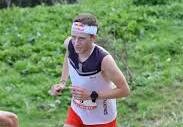
“I’m really pleased to have beaten this record! People thought it was impossible, but I did it, and I’m really proud to show who the world’s best climber is,” Bonnet told Run247. “Now I need to come back and go under the 2-hour barrier!”
Bonnet won the $3,000 first-place prize in this year’s Golden Trail World Series race but failed to get the $10,000 time bonus for finishing under two hours—though toppling the record is probably a grand consolation prize.Bonnet has made a name for himself in recent years for uphill running, re-setting his own fastest time on the Manitou Springs Incline, a 2,000-foot climb, the week before his record-breaking run at Pikes Peak.
Patrick Kipngeno of Kenya, a two-time World Mountain Running Championships Uphill race winner, placed second with a time of 2:04:09, the third-best time on the course behind only Carpenter and now Bonnet. American Eli Hemming was third in the event with a time of 2:07:40 after placing fourth last year.
American Sophia Laukli won the women’s race in 2:35:54, followed by Judith Wyder (2:39:35) and Anna Gibson (2:43:59).
by Runner's World
Login to leave a comment
Are Energy Chews Actually Better Endurance Fuel Than Gummy Bears?
Our tester sacrifices her teeth to find out
I personally used gummy bears as endurance fuel for a solid ten years. These adorable chewy candies have long been a solution for athletes seeking an inexpensive and sugar-rich fuel for prolonged endeavors. But with more sport-formulated gummy options like Clif Bloks and Honey Stinger Chews on the market than ever, I wondered if there was much of a difference in how they make me feel during hearty efforts. So I decided to put them to a head-to-head test.
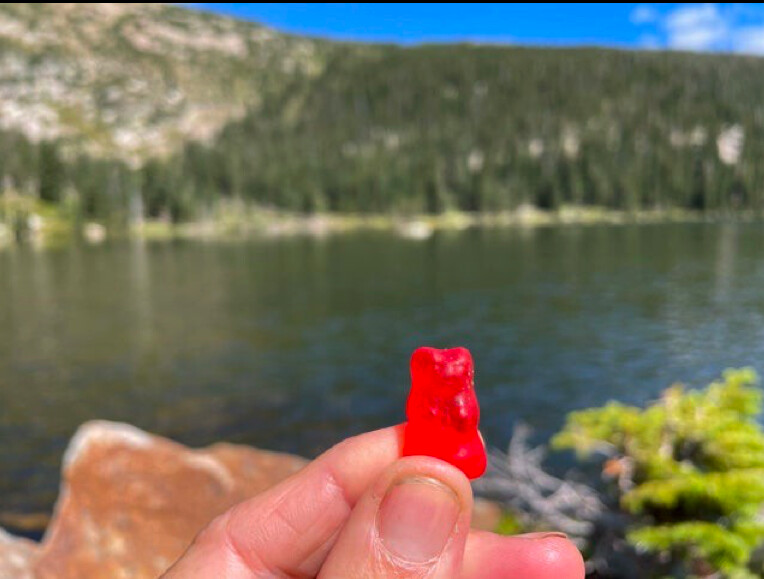
It was 10 a.m. at a pristine mountain lake in Colorado when I ate my first convenience store gummy bears, and—no surprise here—they were delicious. I’d packed a reusable plastic bag with a heartier serving (read: more than the recommended nine bears) of Albanese Gummi Bears, and another reusable bag of Haribo Goldbears and shoved them in my hydration pack. This type of candy is usually made of corn syrup and sugar, with “natural and artificial flavors.”
I was a couple rugged mountain miles to a lake with my dog. I sat on a rock and ingested the candy, noting how the Albanese Gummi Bears, which a friend had raved about to me, were insanely soft and chewy. Maybe too soft and chewy—I ate all of them within 30 seconds. They don’t require a lot of masticating, which is a bonus while running, but a negative if you don’t want to inhale a giant bag of gummy bears in one sitting.
I also ate a few (again more than nine) Haribo Goldbears. This is the brand I used to carry and eat during multi-day adventure races. They are, in a word, gummier. They take more effort to chew, which is fine while hiking or paddling, but can be a pain (and a choking hazard) while running or cycling. They too, are delicious (I’m personally partial to the pineapple flavor).
The consumption left my teeth feeling slimy, like they do whenever I eat something super-sugary. My stomach felt OK—not great—on the steep and rocky descent, but I felt a little jittery, like I’d had too much coffee.
I didn’t crash and burn afterward, but it was only a five-mile outing. I didn’t feel great the rest of the day, though.
Since energy chews hit the scene some years ago, I’ve relied on them to both satiate my love of gummy candy while exercising and to keep me going. I’ve used them on countless mountain running adventures, ski tours, hikes with kids, and more. But for this gummy-to-gummy comparison, I took them on a mountain run three days after the initial gummy bear test.
I ate a sleeve full of Salted Watermelon Clif Bloks about six miles into a rugged run towards another alpine lake. And I pounded a bag of Honey Stinger Pink Lemonade Energy Chews around mile 11.
Both served my needs: I was fatigued and hungry, sweating profusely, and borderline depleted. I ate more on that 15-mile run than just chews—some nuts, pretzels, zucchini bread with walnuts—but the chews were my on-the-go snacks while the others I ate sitting at a lake or walking to warm-up.
I didn’t get the sugary coating on my teeth; I don’t from chews. And I didn’t get the weird jitters. I also didn’t feel the guilt-cheating sensation I had on my Gummy Bear Run. The ingredients of both Clif Bloks and Honey Stinger Energy Chews include feel-good sugars like organic tapioca syrup, organic sugar, and organic honey, plus organic color from black carrot juice.
Aside from the better sugars and ingredients in general of energy chews, what both packs of chews have that gummy bears do not are a substantial amount of electrolytes. I feel like I need the extra sodium provided by chews when I exert myself; replacing it helps me feel balanced.
There is less sugar in the full bag (two servings) of both Clif Bloks and Honey Stinger Energy Chews than in two servings of gummy bears. (Those two servings would be a count of 18 bears.) I’m not sure why the sugar of chews doesn’t make me feel jittery and gross like the sugar of gummy bears. Maybe it’s partially psychosomatic, but maybe it has to do with the good things chews have that bears do not.
Honey Stinger chews also provide 70 percent the recommended dietary allowance of Vitamin C, and their new Caffeinated Chews (Strawberry Kiwi, Cherry Cola, and Stingerita Lime) contain 50 milligrams of caffeine (100 milligrams for whole pack) from tea for sustained energy. Black Cherry, Tropical Punch, and Orange Clif Bloks contain 50 milligrams caffeine per serving, 100 milligrams per pack. And Clif Bloks have 18 milligrams of potassium, also beneficial electrolytes. (Strangely, Haribo Goldbears have two grams of protein per serving.)
Where Haribo and Albanese have an edge is in cost and availability. You can buy bears from those brands in a variety of stores and cost less than half per ounce than any of the chews, which are more of a specialty item.
I feel better eating energy chews over gummy bears, both on an endurance/performance level and on a guilt level, not that I, or anyone, should feel guilty eating candy once in a while. The only thing I might feel guilty about is the extra cost that I might incur during a race or an intense training cycle.
I find energy chews just as delicious as gummy bears, and both feel like a treat while out on an adventure of any sort. The energy chews don’t coat my teeth in sugar or threaten a sour belly, something I get when I ingest too much sugar on a run. Eating energy chews on a run or any outing that requires endurance just makes more sense than eating gummy bears.
Our veteran gear maven, Lisa Jhung, has been testing gear for 25 years. She’s sprayed herself down with a hose to test the waterproofness of rain jackets, set up treadmills in her yard for weeks of testing, and stashed shoes in bushes to change mid-run.
In this column, Vetted, she inspects, tests, and muses on all things outdoor gear.
by Outside Online
Login to leave a comment
Do Women Need Gender-Specific Running Shoes?
Hint: It’s not a yes or no answer—it’s about having options
I’ve been wearing running shoes for 30-plus years, and still, when I lace up a new pair that fits me just right, it makes me want to take them for a spin right then and there—but finding perfectly fitting running shoes can be a challenge, even for someone like me who has access to innumerable pairs as a running shoe reviewer.
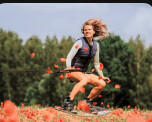
Because I test shoes, people always ask me, “What’s the best running shoe?” And while my male counterpart, Cory Smith, and I vet, test, and write up all the best shoes on the market each season for the Outside Gear Guides and other roundups throughout the year, I always respond with some version of: “There are a lot of great ones out there, but what’s most important is that those great shoes fit your specific feet.”
Much of the running experience depends on comfort, and so much about comfort depends on how well a running shoe fits the individual person’s foot. Yes, other factors differentiate running shoes from each other—midsole compounds, traction, upper materials, lacing systems—and all of them matter in creating a comfortable and effective ride for individual runners and their technique and preferences. But none of it matters if the shoe rubs, bites, or binds your feet uncomfortably. Fit should never be overlooked, and it is linked to the shape of your foot, which is tied to your gender.
So how big a role does gender play in finding your ideal running shoe? Most brands offer men’s and women’s sizes and colorways in each of their shoe models, with both size ranges based on the same last, or, the shape/mold around which the interior of the shoe is built. Some shoes come in men’s sizes only (usually shoes from smaller brands and “niche” models, like weatherized mountain running shoes). Women buy those shoes, but the fit isn’t always right. Many of them have a higher-cut heel cup than women’s models, which can put pressure on a woman’s Achilles. And most often, a men’s shoe fits wider than a women’s.
A handful of brands (Altra, Asics, Hoka, New Balance, Saucony) offer some of their shoe models in widths for both men and women, which offer a broader range of choices. But a select few brands (Altra, Adidas, Hoka, Under Armour) offer all or some of their models in truly gender-specific fits—shoes molded off of gender-specific feet to create gender-specific lasts. And a few brands have come to market with models meant just for women: Lululemon’s Blissfeel and Blissfeel Trail, Hilma’s road-to-trail shoe, UnderArmour’s Flow Synchronicity road shoe, and Puma’s Run XX Nitro road shoe are some examples.
Brian Beckstead, co-founder of shoe company Altra—a brand that’s offered men’s and women’s-specific fits in all of their models since the brand launched in 2011—explains how the differences between men’s and women’s-specific lasts are found around three main places in the foot. One: Women’s lasts are generally narrower in the heel than men’s or gender-neutral lasts, because women tend to have narrower heels. Two: Women’s lasts generally have more support around the midfoot, or arch, because ladies generally have higher arches than men. And three: Because men and women tend to have different “Q-angles”—the angle drawn between the hip, the patella, and the upper shin, which differs genetically for the purpose of child-bearing, according to the National Library of Medicine—most women’s lasts are built up slightly around the interior of the heel or calcaneus bone, with more room on the lateral side of that bone.
But gendered fits aren’t always black and white. “I know women who like to buy the men’s fit [of Altras] and I know men who like to buy the women’s shoes just because they have a really narrow heel,” says Beckstead. “It’s a matter of having options. It’s just a matter of having more variations for a dialed-in fit.”
Regardless of brand preferences and gender designations, some women have wide feet and flat or fallen arches, and some men have narrow feet and high arches. Not all women have more pronounced Q-angles than men. (Personally, I have narrow feet with fallen arches, and appreciate a little space in the toe box, but a secure midfoot wrap.)
And what if you don’t identify as either male or female? That’s a question the running shoe development team at Salomon has been asking lately, as they’ve relaunched a handful of their trail running shoe models as “unisex,” with what aims to be inclusive color palettes (though the fit is based off a men’s last).
It’s a trend we may see continuing throughout the footwear space.
What really matters, regardless of your gender or how you identify, is that you find a running shoe that fits your particular foot. Ill-fitting shoes can create blisters and discomfort, which can make you alter your gait and lead to injury. Great fitting shoes, on the other hand, can excite you to head out for a run and make that experience as enjoyable as possible.
So head to a local running shop with good reviews where you can get to know your feet with some professional help and assess the options available to you. The perfect shoe for you is out there.
by Outside Online
Login to leave a comment
Five wins, a dislocated shoulder and the course record – Kilian Jornet at Hardrock 100
Kilian Jornet has dominated several races throughout his career and Hardrock 100 is one of the many where he has left a significant impression.
The Spaniard, widely regarded as mountain running’s GOAT (Greatest Of All Time), has triumphed five times at the iconic 102.5-mile race in the San Juan Mountains in Colorado, USA.
Jornet is the joint-most successful runner in Hardrock 100 history – which dates back to 1992 – alongside Karl Meltzer and Betsy Kalmeyer. He has won the race each time he has entered, with his first triumph coming in 2014.
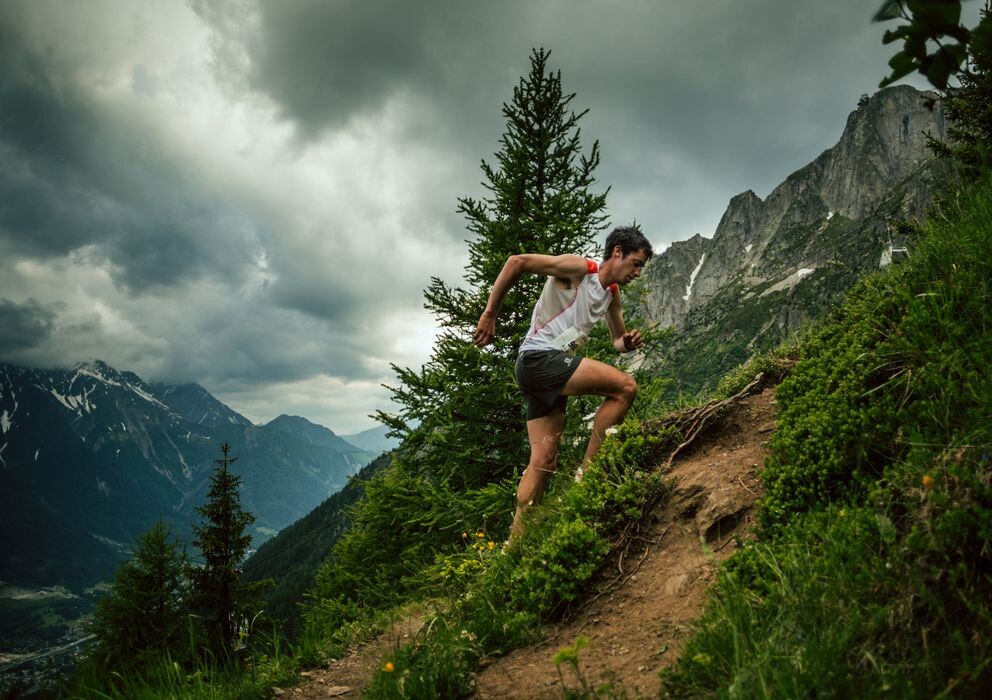
Four-time Ultra-Trail du Mont-Blanc (UTMB) winner Jornet also holds the course record at Hardrock 100, completing the clockwise route in 21:36:24 last year.
Having been raised in the Spanish Pyrenees, Jornet has thrived at high-altitude races, and that ability has been apparent at Hardrock 100, which features a total elevation gain of 33,195ft and boasts a highest point of 4,048ft.
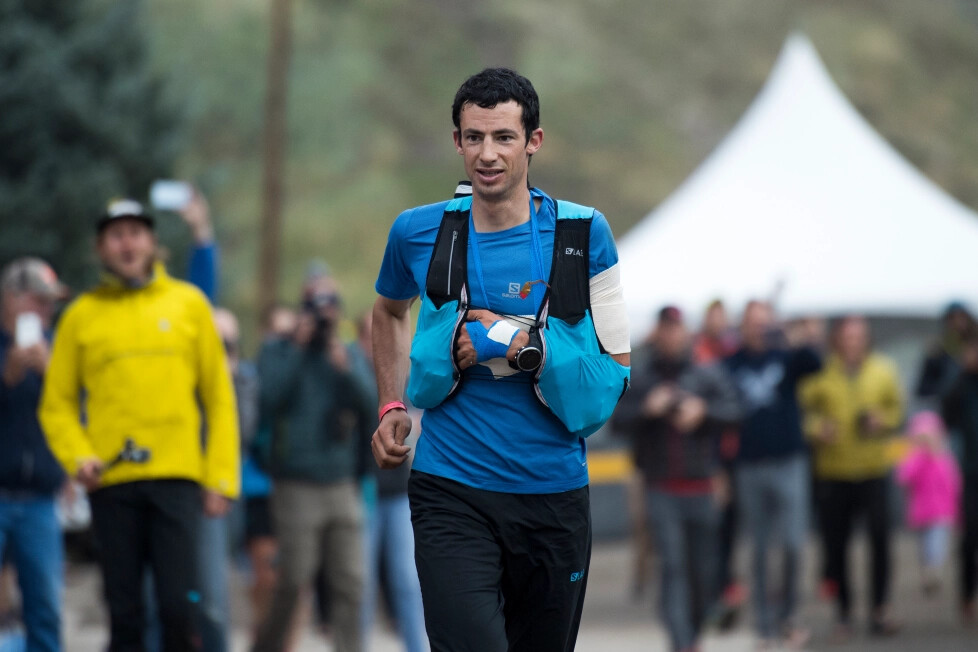
Instant impact
Jornet debuted at Hardrock 100 almost a decade ago, coming into the race off the back of wins at Zegama-Aizkorri and Marathon du Mont-Blanc in the two months prior.
He would lay down an instant marker as he romped to victory in a clockwise-record time of 22:41:00, finishing nearly two and a half hours clear of France’s Julien Chorier, the 2011 winner.
It was the first time a runner had managed sub-23 hours at Hardrock 100, with USA’s Kyle Skaggs having recorded the previous best of 23:23:10 in 2008.
The next year, Jornet claimed victory again – this time more than two hours ahead of USA’s Mike Foote – eclipsing the counter-clockwise course record on that occasion. He clocked 23:28:00, shaving just under an hour off Frenchman Sebastien Chaigneau’s 2013 effort.
He made it three in a row in 2016, sharing the title with Jason Schlarb after an incredible duel with the American. Having worked together and battled for hours, the pair agreed to finish together, coming home in 22:58:28.
Dislocated shoulder
2017 would bring a fourth successive Hardrock 100 victory for Jornet, but it was far from straightforward as he took a fall and suffered a dislocated shoulder around 14 miles into the race.
He powered on regardless, popping his joint back into place before medics wrapped his damaged limb in a sling later on in the day.
Incredibly, despite being forced to use a single trekking pole and facing a vicious hail storm, Jornet clinched the win again as he finished in 24:32:20, 23 minutes clear of Foote.
Record obliterated
Jornet didn’t race at Hardrock 100 for five years after his four back-to-back victories, and France’s Francois D’Haene beat both his overall and counterclockwise records when he put up a staggering 21:45:50 in 2021.
But a sensational return came last year as Jornet improved the record further, finishing in 21:36:24 and overcoming second-place D’Haene by around 15 minutes.
Weird and wonderful
Jornet has often spoken of his affection for Hardrock 100, hailing its remarkable setting and quirky traditions, a trait shared with some of the world’s craziest ultramarathons.
To complete the event, runners are required to ‘kiss the Hardrock’, a picture of a ram’s head painted on a large block of stone mining debris – a nod to the origins of the race.
“Leaving a rock with a mountain goat painted on it, to run around the San Juan mountains with a bunch of other runners, aiming to get back to that rock to give it a kiss,” Jornet wrote in an Instagram post.
“Ultra running can be as weird as beautiful and I love it!”
The Rocky Mountains provide a stunning landscape for Hardrock 100, and Jornet, who is dedicated to environmental sustainability, has spoken of his affection for the area and the people who make the race possible.
“The wilderness and landscapes of San Juan Mountains are so breathtaking,” he added in another post. “I feel so fortunate to know this part of the world.
“The race is attractive because of its beautiful landscapes and the hardness of the challenge – high elevation, several times above 4,000m, the route often on steep narrow trails.
“What makes one want to come back it’s its community. The volunteers, the crewing and pacers, the people doing trail work, and the runners celebrating together the love for trail running and this mountains.”
by Olly Green
Login to leave a comment
Hardrock 100
100-mile run with 33,050 feet of climb and 33,050 feet of descent for a total elevation change of 66,100 feet with an average elevation of 11,186 feet - low point 7,680 feet (Ouray) and high point 14,048 feet (Handies Peak). The run starts and ends in Silverton, Colorado and travels through the towns of Telluride, Ouray, and the ghost town...
more...Kenyan Patrick Kipngeno bags gold for Kenya on Day One of the World Mountain and Trail Running Championships
Team Kenya started their World Mountain and Trail Running Championships on a high with Patrick Kipng’eno bagging gold in the 7.3 km vertical race —featuring 1020m of elevation gain.
Kipng’eno, who became the first Kenyan to win a mountain running world title last year, clocked 40:18 to win gold on Day One of the championship being held in Innsbruck-Stubai Austria. He beat 130 athletes who entered the race.
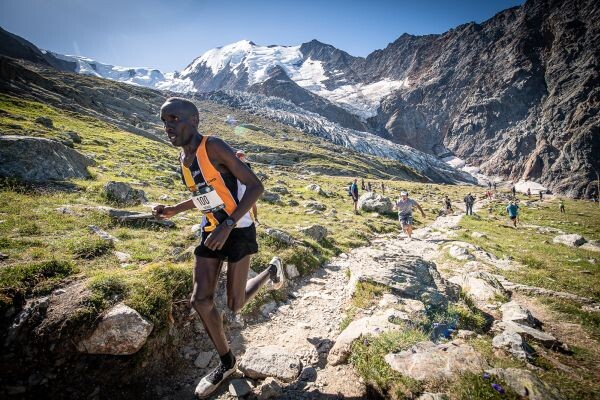
He beat Uganda’s Levi Kiprotich (41:51) to silver while Kenya’s Josephat Kiprotich (42:04) completed the podium finish.
Kenya’s other representatives—last year’s silver medalist Philemon Kiriago (42:54) and Hillary Maiyo —settled for the 7th and 12 positions respectively.
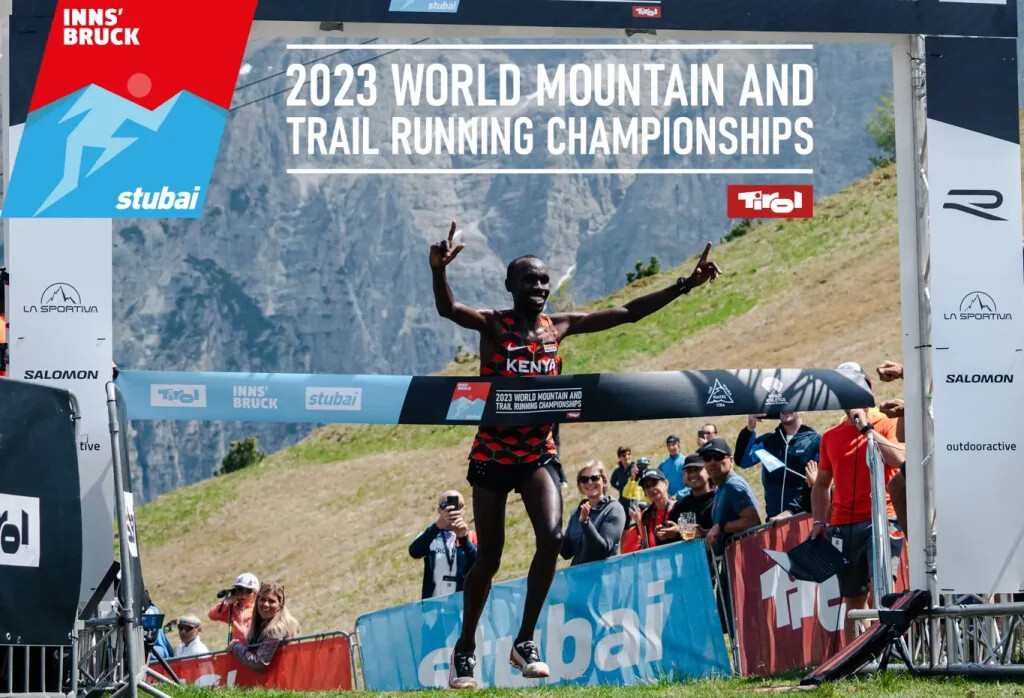
They will be in action again on Saturday when they take part in the Mountain Classic event, featuring looped 15.5km races for senior men and women.
In the women’s category, Kenya’s Philaries Kisang was beaten to gold by Austria’s Andrew Mayr.
The home girl, who won silver in last year’s championships, clocked 48:14 to win gold while Kisang settled for silver in 48:51. USA’s Grayson Murphy claimed bronze in 49:22. Valentine Ruto (49:59) and Joyce Muthoni (52:09) were 5th and 10th respectively.
Kenya is represented by seven athletes after two Geoffrey Gikuni and Ezekiel Kirui missed out due to visa hitches. Kirui was scheduled to compete in the 85 km long trail while Gikuni was to take part in the 45km short trail.
Athletics Kenya mountain Running chairman Peter Angwenyi accompanied the team to Austria.
More than 1,100 of the world’s top runners from 68 countries are participating in the second edition of the World Mountain and Trail Running Championships in the Austrian Alps. The inaugural event was held last November in Chiang Mai, Thailand.
Alessio Punzi, Head of Running and Mass Participation at World Athletics said: “The World Championships are a dream come true started in 2017. In the future, we want to attract more and more athletes and make it more and more difficult for everybody to ignore.”
by Angwengyi Gichana
Login to leave a comment
World Mountain and Trail Running Championships
Welcome all athletes, officials, coaches, and families to THE AMAZING THAILAND WORLD MOUNTAIN & TRAIL RUNNING CHAMPIONSHIPS 2021 (WMTRC2021). The event will feature 80km and 40km trail races, classic up and down and uphill only mountain races. It replaces World Championships previously hosted with World Athletics, WMRA (mountain running) and IAU and ITRA (trail). The Amazing Thailand World Mountain and...
more...Canfranc to host 2025 World Mountain and Trail Running Championships
The third edition of the World Mountain and Trail Running Championships (WMTRC) will take place in Canfranc-Pirineos, Spain, between 25-28 September 2025.
The awarding of the event to Canfranc in the Pyrenees follows a successful bid by the Government of Aragon, the Canfranc Town Council, the Huesca Provincial Council, the Higher Sports Council and the Royal Spanish Athletics Federation (RFEA) to event partners the International Association of Ultrarunners (IAU), the International Trail Running Association (ITRA) and the World Mountain Running Association (WMRA), alongside World Athletics.
As well as the four-day elite race programme, the event will include a summer-long cultural and leisure festival to promote the Pyrenees Mountain Range.
Around 1700 athletes from 70 countries are expected to meet in September 2025 in Canfranc-Pirineos, which takes over from Innsbruck in Austria – host of the next edition of the championships, taking place this year between 6-10 June.
The race programme will feature uphill mountain running, classic up and down mountain running, short trail, long trail and U20 classic up and down mountain events.
“On behalf of the LOC, we are thrilled to be hosting the 2025 World Mountain and Trail Running Championships in our country and look forward to welcoming the best mountain and trail runners from all corners of the globe,” said RFEA President Raul Chapado.
“As a team, we express our deep satisfaction and appreciation to World Athletics and its partners WMRA, IAU and ITRA for choosing our beautiful region of Canfranc and the stunning Aragonese Pyrenees as the venue for this world-class event.
“The championships offer a unique opportunity for fans to witness the best mountain and trail runners from around the world compete in an unparalleled natural environment. We are excited to collaborate with the public administrations, sponsors and volunteers to leave a permanent legacy and create an unforgettable experience for all participants.”
The Aragonese proposal was backed by great experience in the organisation of sporting events such as the Canfranc-Canfranc, an annual event that features two Gold level Valsir Mountain Running World Cup races.
Canfranc-Pirineos offers a superb sporting environment, which will allow each athlete to perform to the best of their ability and create a complete competitive experience for athletes, teams, federations and international associations. That is proven by the list of world champions who have run and won at the Canfranc-Canfranc: from Kenya’s Joyce Muthoni Njeru to USA’s Grayson Murphy and Britain’s Charlotte Morgan, as well as Spain’s Oihana Kortazar, Manuel Merillas, Luis Alberto Hernando and Daniel Osanz.
In 2024, the Canfranc-Canfranc will host the World Masters Championships, before the region welcomes athletes for the World Mountain and Trail Running Championships in 2025.
Events due to take place as part of the associated festival include a series of awareness days, with emphasis on respectful use of the environment, and a natural running congress on the technical history and future convergence between the disciplines of athletics in nature: cross country, mountain running and trail running.
“It is our great pleasure to see the joint initiative to organise the World Mountain and Trail Running Championships continue its great momentum and we are excited that the third WMTRC will take place in Canfranc, Spain, in 2025 in the beautiful Pyrenees – a paradise for mountain and trail running,” said ITRA President Janet Ng, IAU President Nadeem Khan and WMRA President Tomo Sarf in a joint statement.
“It will be the second time that the championships have been held in Europe. The initial event took place in Chiang Mai, Thailand, and was a huge success. We are confident that the second edition in Innsbruck and Stubai will build on that in the coming days and that the third edition in Canfranc will reach even greater heights.
“We would like to thank the bidding committee, the Spanish athletics federation and World Athletics for all the cooperation and support during the application process to host the championships. The bidding committee worked extremely hard to prepare a compelling and impressive bid and we are all very much looking forward to being in Canfranc with the world’s best athletes in 2025.”
Innsbruck-Stubai entries confirmed
A total of 1122 athletes from 67 member federations are entered to compete in the next edition of the World Mountain and Trail Running Championships, taking place in Innsbruck-Stubai in Austria between 6-10 June.
That number includes 506 athletes entered into 574 women’s events and 616 athletes entered into 710 men’s events, with the programme featuring uphill mountain running, classic up and down mountain running, short trail and long trail. U20 men and women will compete in classic up and down mountain running.
USA’s Allie McLaughlin and Adam Peterman, Kenya’s Patrick Kipngeno, Norway’s Stian Angermund, Romania’s Denisa Dragomir and Blandine L'Hirondel of France were among the winners at the inaugural World Mountain and Trail Running Championships, held in Chiang Mai, Thailand, in November.
by World Athletics
Login to leave a comment
WXC Bathurst 23 U20 men's preview: Cheruiyot looks to regain crown for Kenya
More than a decade has passed since a Kenyan athlete won the U20 men’s title, but there’s a good chance that drought could end at the World Athletics Cross Country Championships Bathurst 23.
The 2019 edition was the first World Cross since 1984 in which a Kenyan athlete didn’t make it on to the U20 men’s podium, and Kenya didn’t achieve a top-two finish in the team standings, so this year’s squad – led by Ishmael Kirui and Reynold Kipkorir Cheruiyot – will want to ensure the same doesn’t happen again.
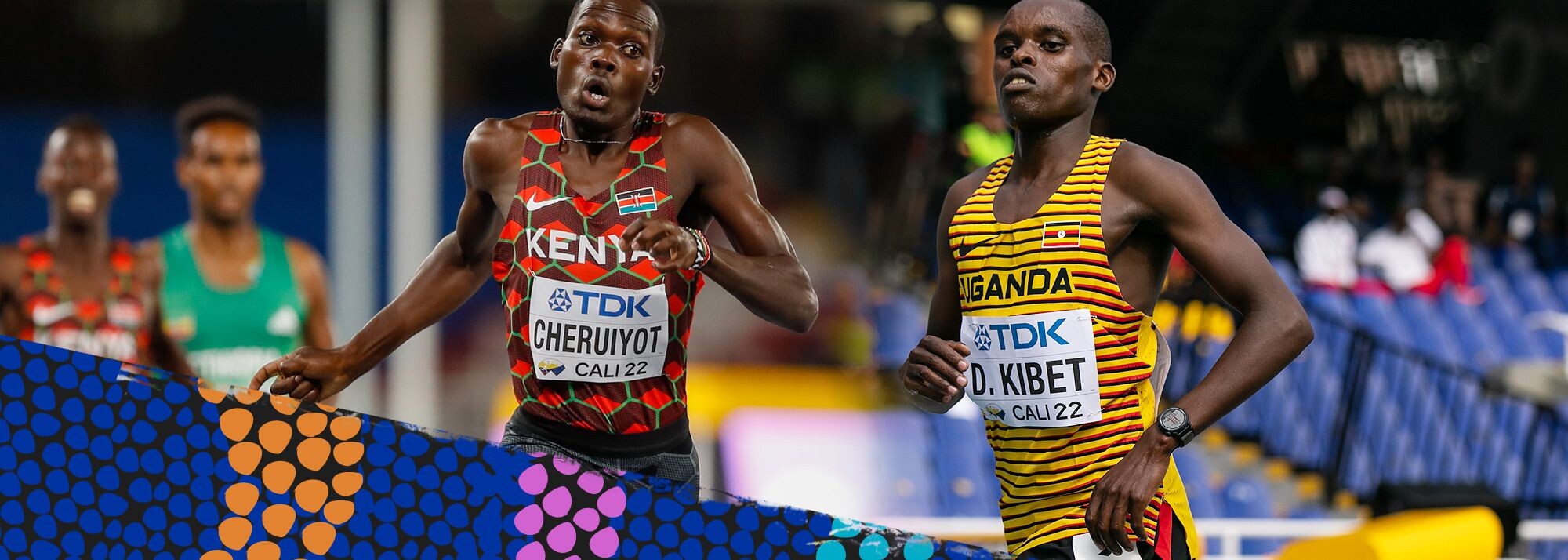
Kirui was a convincing winner of Kenya’s trial race in December last year. Although he turned 18 just earlier this month, he has already represented Kenya on the senior stage, placing sixth over 5000m at the African Championships last year. He set PBs of 7:52.74 for 3000m and 13:26.98 for 5000m last year, both at altitude in Nairobi.
This will be his first race outside of his home continent, and possibly his first cross-country race at sea level, but he will be somewhat accustomed to running in the kind of heat that is forecast for race day.
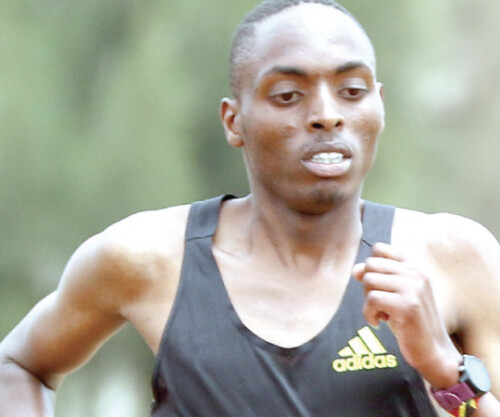
Cheruiyot, who finished four seconds behind Kirui in Kenya’s trial race, has already displayed remarkable range – a trait which often goes hand-in-hand with being a good cross-country runner. Last year he won the world U20 1500m title in Cali, having set a PB of 3:34.02 over the distance one month prior, the fastest time in the world last year by an U20 athlete. He also clocked PBs of 7:38.83 for 3000m and 28:36 for 10km on the roads, showing he has remarkable endurance as well as great foot speed.
The Kenyan team also includes Dennis Kipkirui and Daniel Kinyanjui, both of whom have international racing experience.
Ethiopia – winners of the past two team titles, and three of the past four U20 men’s titles – will be tough to beat.
Bereket Zeleke won the U20 men’s race at the prestigious Jan Meda Cross Country last month, which doubled as Ethiopia’s trial event for Bathurst. Boki Diriba finished a close second on that occasion, as Zeleke avenged his defeat from the Ethiopian U20 Championships on the track in 2022. Diribi has already produced some impressive performances at home and abroad; he clocked 28:32.8 for 10,000m at altitude in Hawassa, Ethiopia, and later in 2022 he finished third at the New Delhi Half Marathon in 1:00:34.
The unheralded Abel Bekele was only two seconds behind Diriba at the Jan Meda Cross Country. Bereket Nega was further back in sixth, but he has proven his form in a range of overseas races.
Uganda is the only nation to have consistently broken up the Kenya-Ethiopia hegemony in recent editions of the World Cross, and in Kenneth Kiprop they have a genuine medal contender.
Kiprop was an impressive winner of Uganda’s trial race, which was meant to have been held over 8km, but due to the athletes’ speed in the race, officials were confused over how much distance had been covered and so instructed the athletes to complete an extra lap. They ended up covering 10km and Kiprop won by almost a minute in 29:29 – faster than the winning time in the senior men’s race.
Silas Rotich finished one place short of the podium at last year’s World Mountain Running Championships, so he will be determined to return to Uganda with a medal of some form. Dan Kibet, a world U20 finalist over 3000m in 2021 and 2022, is another one to watch.
The US team is led by national U20 cross-country champion Emilio (aka ‘Leo’) Young, who in 2022 ran the fastest mile by an U18 athlete, 4:00.77. Sam Mills and Luke Birdseye, who finished fourth and fifth respectively at the European Cross and formed part of Britain’s gold-medal-winning team, are also in the field. Australia’s Logan Janetski and Archie Noakes, meanwhile, will be flying the flag for the host nation.
by World Athletics
Login to leave a comment
World Athletics Cross Country
Athletes from across the globe will descend on Australia for the World Athletics Cross Country Championships Bathurst 2021. Mount Panorama is better known as the home of Australia’s premier endurance motor race, but in one year from now, it will welcome the world’s best endurance runners for what will be Australia’s first World Athletics Series event in...
more...Allie Kieffer makes quick work for her 3M Half Marathon win, while Joseph Gray wins a close one
World-class runner Allie Kieffer keeps a low racing profile here in Austin, but when she does race, she wins.
A last-minute entry in this year's 3M Half Marathon, Kieffer took advantage of ideal running conditions Sunday morning — mid-40s and clear — to add another victory to her Austin racing résumé, while Joseph Gray, a World Mountain Running champion, topped the men’s field.
Even though Kieffer has a perfect record in Austin, Sunday's 3M win was somewhat of a redemption for her. Running in the highly competitive Barron Collier Companies Naples Half Marathon last week in Florida, she went off course, losing her lead and placing fourth.
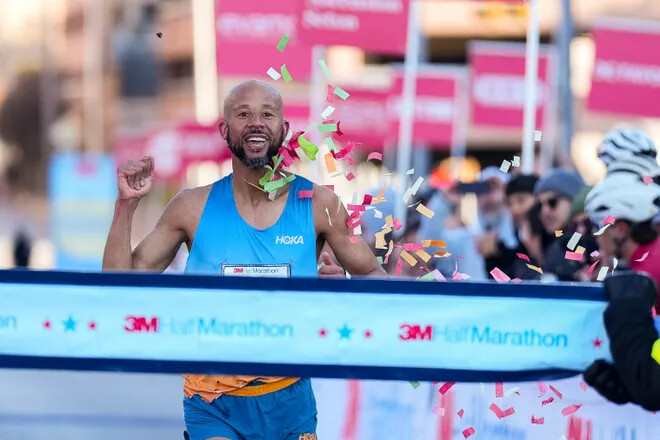
“I took a wrong turn at the Naples Half, so I couldn’t cross the line first,” Kieffer said. “So today I was thinking, ‘I want to win.' I was feeling pretty competitive.
“I wasn’t intending to race today,” she added. “Initially I was just going to pace it with a friend, but I couldn’t find him at the start.”
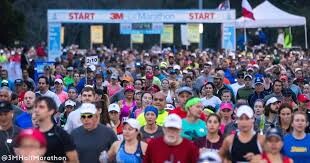
Kieffer took off from the starting line on Stonelake Boulevard in North Austin at a brisk pace of 5 minutes, 52 seconds per mile, with Karen Bertasso-Hughes and Shannon Gaden about 50 yards back. Kieffer hit the 5-kilometer split in 18:14, with Bertasso-Hughes just nine seconds behind.
The 3M race is known for its “downhill to downtown” course, and Kieffer worked every downhill. By the 10K mark (36:31) on Great Northern Boulevard, she had a 23-second lead on Bertasso-Hughes.
“When I took the lead around 3 miles, I just didn’t look back,” Kieffer said.
She stepped on the gas after the 15K mark (9.3 miles) on Shoal Creek Boulevard, dropping the pace to 5:50 a mile, gaining more than a minute ahead of Bertasso-Hughes in the process. Kieffer crossed the finish line on San Jacinto Boulevard in 1:16:24, leaving Bertasso-Hughes and Gaden to battle for second. Gaden prevailed 1:17:00 to 1:17:49. Caroline Brooks came in fourth in 1:17:53, with Elizabeth Laseter rounding out the top five in 1:18:04.
“Allie was so far ahead that we were just racing for second place,” said Gaden, a newcomer to Austin by way of Denver. “I was able to catch her (Bertasso-Hughes) around 10 miles.”
“I’m really happy. … I felt surprisingly good. I needed to win this race,” said Kieffer, who plans to run the Ascension Seton Austin Half Marathon next month and is looking to run an Olympic Marathon Trials qualifying time next fall at the BMW Berlin Marathon.
The men’s race featured a stirring duel between Colorado Springs’ Gray and Austin’s Mitch Ammons, a 2024 Olympic Marathon Trials qualifier.
Gray, Ammons and University of Texas ace Kobe Yepez formed the lead pack in the early miles, passing through the 5K mark together in 15:17. But after that it was a two-man race as Gray and Ammons pulled away. Ammons took the lead at 10K, passing the mark in 30:33, just six seconds ahead of Gray. But by 15K (45:52) they were stride for stride, with 2019 3M champ Michael Morris moving into third place ahead of Yepez.
In a sprint to the finish line, Gray edged Ammons 1:04:23 to 1:04:27. Morris, the track and cross-country head coach at San Marcos High School, took third in 1:06:07, with Al Maeder fourth in 1:06:31 and Yepez fifth in 1:06:51.
“This was my first race of the year. Actually my first race in a while, so I wanted to be smart and run a progressive effort,” said Gray, a dominant figure in Colorado’s mountain running scene. “Mitch is a strong runner and made it an honest effort.”
Approximately 4,500 runners finished the race, the fifth in the Austin Distance Challenge. The sixth and final event is the Austin Marathon on Feb. 19.
“I found out two minutes before the race that there was a champion mountain runner entered, who’d gone 1:03 for the half-marathon," Ammons said. "We were yo-yoing back and forth the whole way. He’d pull ahead on the uphills, and I’d lead on the downhills. It was a lot of fun. My time was a personal best for me by more than a minute, and I wouldn’t have run this fast if it weren’t for Joe. He pushed me a lot. I really, really tried to catch him on the final straight. I gave it everything I had.”
by Brom Hoban
Login to leave a comment
3M Half Marathon
Welcome to the 3M Half Marathon! This year join over 7,000 fellow runners in Austin, Texas to run a personal best at the 3M Half Marathon. 3M Half is a fun and fast stand-alone half marathon boasting one of the fastest half marathon courses in the country. You’ll enjoy a point-to-point course with mostly downhill running that takes you past...
more...More Prize Money Is Flowing Into Trail Running. What Does That Mean for the Sport?
Annie Hughes, one of the top trail runners in the U.S. for the past two years, had another amazing season running ultra-distance races in 2022. On September 17, the 24-year-old Hoka-sponsored runner and part-time college student won the Run Rabbit Run 100 in Steamboat Springs, Colorado, her fourth win of 100 miles or longer since April. Earlier this year, she won the Coldwater Rumble 100 in January, Cocodona 250 in April and the High Lonesome 100 in July.
Those were all exceptional efforts in really challenging races, but the big difference she experienced after crossing the Run Rabbit Run finish line, 21 hours and 26 minutes later, was that she won $17,500. (And yes, she was handed one of those cartoonish, oversized checks at the awards ceremony.)
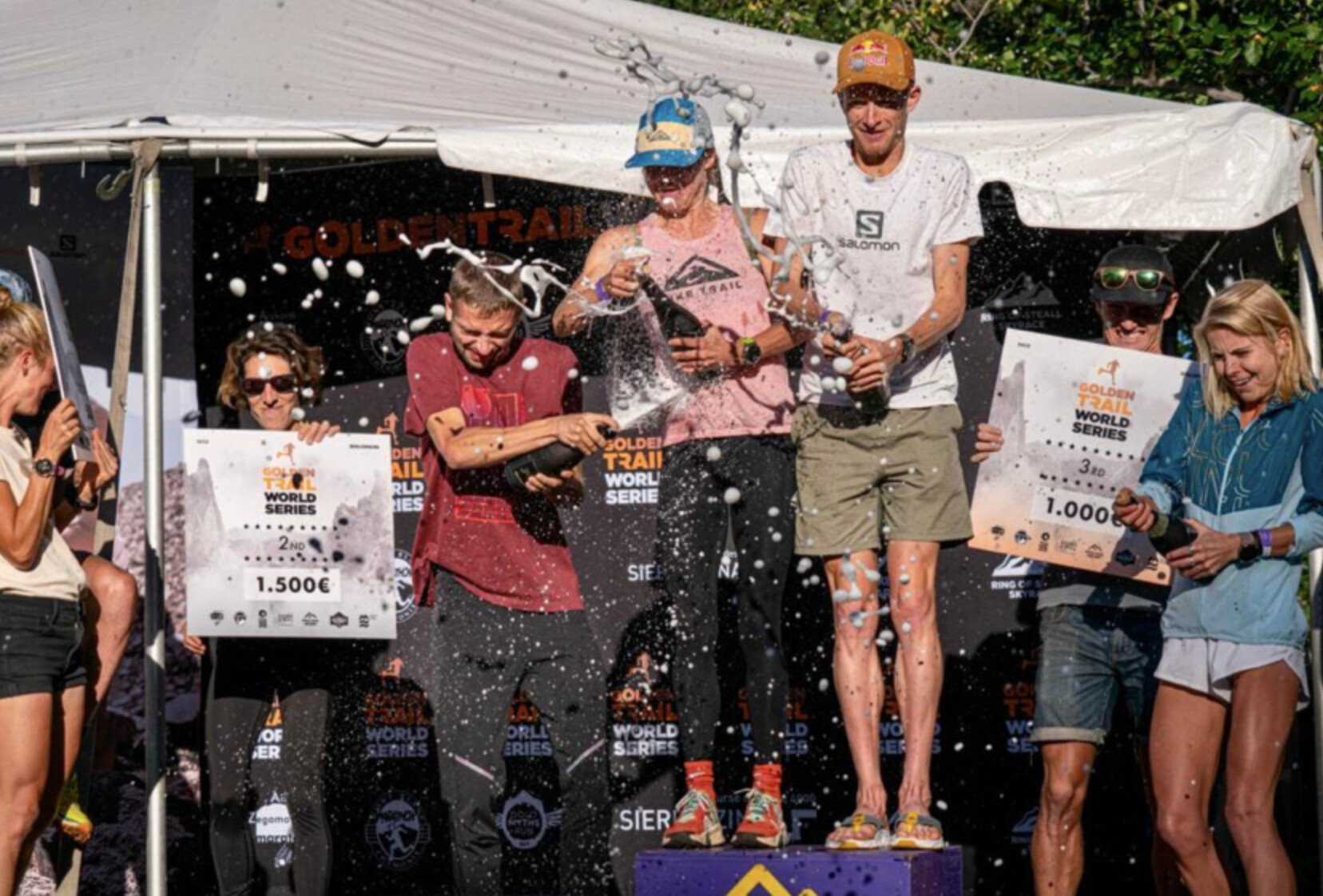
Run Rabbit Run is one of the rare American trail races that offers a relatively large prize purse, and for a decade, it's been the largest in the sport. Hughes earned $15,000 for winning the women's race and split another $5,000 with Arizona trail runner Peter Mortimer (who placed 12th overall) as part of the event's new team competition.
"That wasn't the reason I was drawn to the race, but it was definitely pretty cool to win that much money," Hughes said. "I'm glad I did it, because it wound up being a really great race with an amazing course on a beautiful day."
The origins of trail running were always more about the joy and freedom of ambling through the natural world, and less about the specific time and pace of any run or race, which is why winning big cash prizes is mostly uncommon in the sport, even for top-tier runners like Hughes. Over the past two years, Hughes has won 10 races of 50 miles or longer, yet her Run Rabbit Run victory was the first time she's ever earned money for her efforts.
More sponsorship money and bigger cash prizes are flowing into the sport, helping the top athletes earn a full-time living in the sport and become global stars. But that evolution has also created a desperate need for a unified governing body and more consistent drug-testing as doping becomes a more acute concern.
A Windfall of Prize Money
Historically, America's biggest and most notable trail running races haven't offered any prize money at all-Western States 100, Hardrock 100, Dipsea Trail Race, Leadville 100, Mount Marathon Race, Seven Sisters, Black Mountain Marathon/Mount Mitchell Challenge-partially because races simply couldn't afford to pay it, and also because, at the soul of the sport, that's not what the races were historically about or why most top runners were competing.
But with the continued growth of the sport-trail running has grown by 231 percent over the past 10 years, according to one report-and the dawn of a new level of professionalization over the past decade, there is a lot more money being injected into the sport. That includes more high-profile events and race series, more brands investing in the sport, more sponsored runners and trail running teams, as well as a growing expectation that prize money should be part of the equation as it is in road running, triathlon, and even obstacle course racing.
For many years, The North Face 50 near San Francisco was one of the only ultra trail races in the world to offer a significant prize purse. From its inception in 2006, until it disappeared after 2019, that race famously awarded $30,000 in prize money, which included $10,000 to the top finishers in the men's and women's races, plus $4,000 for second and $1,000 for third. It was a race to look forward to at the end of the calendar year, both for the cash awards and the prize-induced competition that drew top runners from around the world.
During that span, Run Rabbit Run, though a lower-profile race, quietly began dishing out some of the biggest payouts in the sport, in part because race organizers Fred Abramowitz and Paul Sachs believe in rewarding its top athletes for their efforts (as well as giving back to the community via even bigger charitable contributions). The race winnings come primarily from entry fees of the 600-runner event and sponsors, if and when the race has them. That wasn't possible back in the early days of the sport, when entry fees were minuscule and cash sponsors were mostly non-existent, but things have started to change.
Abramowitz and Sachs, who both earn their living as attorneys, are unique in that they want to give back to the elite athletes and the Steamboat Springs community, but they also want to help grow the sport. Abramowitz outlined what he calls "A Blueprint for Sponsors of Ultra Running," a three-page document that explains how and why trail ultrarunning-both as a sport and as individual races-can connect to more casual runners, sports fans, and the general public.
He points to the rampant growth of NASCAR, Professional Bull Riding, and professional poker over the past 20 years from their roots as fringe sports, relatively speaking, to mainstream spectacles with massive fan bases, TV contracts, and social media followings. Trail and ultrarunning aren't there yet, Abramowitz has noted, but they've certainly been growing rapidly.
"Today millions watch those events, though the actual number of participants is minuscule," Abramowitz wrote in his missive. "Ultrarunning can learn from these events: it needs new ideas, new ways of attracting the already committed runners and the casual sports fan to our terrific sport. Fields need to be competitive and races [need to be] dramatic; there are hundreds of 100-mile races, but those that offer competitive fields are a handful at most. Most ultra-races offer spectacular scenery in interesting venues."
Abramowitz said sponsors should support races such as Run Rabbit Run that offer prize money not merely because it's good for sport, but also because prize money can attract competitive fields, and competitive fields attract interest-from spectators, participants, potential sponsors, and the general public. He also points out that having prize money at more domestic races is a way to keep the sport from becoming entirely Euro-centric, which has been an increasing trend in the past several years.
The trend of cash purses seems to be increasing, and on the face of it, that's good for elite athletes capable of podium finishes. But it's a complex topic and one that certainly will simultaneously increase the competitiveness of the sport while, some argue, continue to pull the sport away from its organic, racing-in-nature roots that was mostly viewed as the antithesis of competitive road racing.
On the same day Run Rabbit Run paid out $75,000 in total prize money, the Pikes Peak Ascent awarded $18,000 in prize money for its top 10 finishers-including $3,000 apiece to the men's and women's winners-while the Pikes Peak Marathon, on September 18, had an additional $10,500 in total prize money for the top five runners. The races also offered $2,000 (Ascent) and $4,000 (Marathon), respectively, as course-record bonuses, and a $10,000 premium to any runner surpassing a pie-in-the-sky time well ahead of the course records. None of those records were broken, but the $28,500 in total prize money-partially backed by the Salomon-sponsored Golden Trail Series-was one of several large prize purses offered at U.S. races this year.
Other big American prize purses were also primarily tied to the Golden Trail Series events-the $50,000 spread over four races at the mid-June Broken Arrow Sky Races in Olympic Valley, California, and the September 25 Flagstaff Sky Peaks 26K race in Flagstaff, Arizona, where runners competed for $18,000 in prize money and a chance to compete at the Golden Trails World Series Final, and the $15,000 winner's earnings at the Madeira Ocean & Trails 5-Day Stage Race in October.
Also of note, the November 18-20 Golden Gate Trail Classic paid out $25,000 in total prize money to the top five finishers in both the 100K and half-marathon races, which were part of this year's nine-race $270,000 Spartan Trail World Championship Series.
Meanwhile, the Cirque Series, sponsored by On, paid out $3,600 in total prize money at each of its six sub-ultra mountain running races in the U.S., including $1,000 for the men's and women's winners. The Mt. Baldy Run-to-the-Top on September 5 in Southern California offered $3,000 to runners who broke the event's longstanding course records, and Joe Gray and Kim Dobson obliged by taking down each mark.
Most U.S. Trail and Mountain Running Championships have a minimum of $2,000 in prize money. Typically that comes from regional sponsors eager to support the local race organizations, such as the case with Northeast Delta Dental's contributions behind this year's Loon Mountain Race in Lincoln, New Hampshire, which hosted the U.S. Mountain Running Championships. That event had a $1,500 total prize purse that was paid out to the top three men and women in each race, but it also had an additional $1,500 for an Upper Walking Boss premium that was spread among the top three fastest times in each gender on the super-steep upper part of the course.
Meanwhile, the 2022 World Mountain and Trail Running Championships in Thailand paid out $66,000 to the top five finishers over four races, including $4,000 to the winners of each event.
"(The prize money) is way better than it's ever been, both for the athletes earning it and the number of sponsors who are contributing to it," says Nancy Hobbs, executive director of the American Trail Running Association and the chairperson of the USATF Mountain Ultra Trail Council that oversees national championship races and the U.S. Mountain Running Team.
From a longer view over the past decade or so, Joe Gray agrees there is more money coming into the sport than ever before. As a top-tier pro since 2008 and 21-time U.S. champion, he's regularly won more prize money at high-level races in Europe for more than a decade. But more than the growth of prize money, he has seen more brands interested in putting money behind athletes, races, and the sport in general.
"I think there has always been prize money there, and if you're successful you could make a lot more money really quickly," said Gray, a two-time World Mountain Running Champion. "I do think there is more money coming from the sponsors paying out better contracts and bigger bonuses, which I think will wind up being more beneficial to athletes overall."
Most elite trail runners get annual stipends from their sponsoring brands and bonus money for top performances. Gray is backed by Hoka, but he also has sponsorship deals with Fox River Socks, Kriva, Never Second, Knockdown, Tanri, Momentous, Casio, and GoSleeves. In addition to Hoka, Annie Hughes gets additional support from Ultraspire, Coros, and Tailwind Nutrition. But the life of professional trail runners-independent contractors who don't get healthcare and retirement program benefits-can get expensive with the growing cost of travel, regular bodywork/physio treatments, and private health insurance.
The sport's top-tier elite athletes-Joe Gray, Kilian Jornet, Courtney Dauwalter, Jim Walmsley, Maude Mathys, and Scott Jurek, among others-make a good living from their sponsorships. But there are really only a handful American trail runners making more than about $50,000 a year from shoe brand sponsorships. (Most "sponsored" trail runners are making somewhere between $10,000 to $30,000 per year.) The bottom line is that winning prize money, for those who are fast enough to consistently finish on the podium in big races, certainly helps make ends meet and is necessary to keep the sport's top athletes from having to work other jobs so they can focus entirely on training, recovery, and racing.
"This [2022] is the first year I've gone all-in on trail running," said Hughes, who worked as a waitress in Leadville the previous two years. "I'm able to live off what I make, but I'm not really saving anything. So it was really nice to win that money because then I can put some away in savings."
Higher European Standards
So far, Abramowitz appears to be right about the sport shifting to more of a European focus, and it's, at least in part, tied to the increased prize money that has attracted competitive athletes. While many top-tier European events have paid out modest prize purses for years, some of those races have also helped out visiting runners by way of travel stipends, hotel accommodations, or appearance fees. That's partially because European races are generally larger (500 to 1,000 participants or more) than U.S. races (typically fewer than 500 participants).
Unlike Hughes, who only raced in the U.S. this year, American runner Abby Hall, who runs for the Adidas-Terrex team, raced three times in Europe and earned prize money each time. She placed second in the Transgrancanaria 126K in the Canary Islands in March (which doubled as the Spartan Trail World Championship), finished third in the CCC 100K in Chamonix in August, and won the Transvulcania by UTMB 72K back in the Canary Islands in October.
Like Hughes, Hall receives an annual stipend and race bonuses from her sponsor, but admits it's been nice to have more opportunities to win money-both because it helps her make a living wage and because it's consistent with other professional endurance sports.
"In the past, it hadn't even been a consideration before, for how income would work out as an athlete," Hall said. "But this year it actually added up to be a decent amount. I'm grateful for the opportunities."
In 2022, American runner Hayden Hawks won an off-the-radar 100K a race in Krynica, Poland, and brought home the 100,000 zloty winner's prize ($26,000), one of the bigger individual purses ever awarded in trail running. In 2017, when Hawks won the CCC race, he didn't win anything because UTMB had refused until 2018 to offer prize money at its races, partly because race founders Catherine and Michel Poletti have believed that increased prize money will bring more incentive for some athletes to consider doping or that agents would take too big of a cut.
UTMB finally began offering prize money to podium finishers in 2018 with a total purse of about $34,000 (35,000) and continued that through 2021. But after forging a business relationship with Ironman and launching the new UTMB World Series, it has increased the prize money awarded in Chamonix. In 2022, UTMB said it paid out about $162,000 in total prize money (the approximate equivalent of its stated 156,000 prize purse) to the top 10 men and women finishers of the UTMB, CCC, and OCC races.
That includes $10,400 to the winners of each of those races, with approximately $5,200 going to second-place finishers and $3,125 for third. Fourth- and fifth-place finishers in each of those races earned about $1,500, while 6th through 10th took home $1,000.
While those more notable ultrarunning paydays can be big windfalls for a trail runner, they still pale in comparison to what elite-level road marathoners and triathletes earn at the biggest races that have a much larger audience, including live TV coverage. For example, the 2022 Boston Marathon awarded $876,500 in prize money and $150,000 to the winners, while New York City Marathon paid out $530,000 in total prize money at its November 6 race, including $100,000 to the men's and women's winners. The 2021 Ironman World Championships in St. George, Utah, had a $750,000 prize purse, including $125,000 to the winners, similar to what was awarded at the 2022 Ironman World Championships October 6-8 in Hawaii.
While only a few top trail runners could have opted to pursue a marathon or triathlon career instead of trail running, what's more relevant is the spike of growth trail running. Although it is not yet internationally televised as major marathons and triathlons are, the surge in participation and livestream viewing options is starting to bring in more media attention and sponsorship money than ever before. And more media attention begets more participation and professionalization.
"I think we'll definitely see ultra-trail running continue to grow for years to come," says Mike McManus, director of global sports marketing for Hoka. "I think it's at a point where it's just on the cusp of the real growth that's coming and all that will come with it, similar to where the marathon was in the 1980s and triathlon in the 1990s. It might never be as big as marathoning, but trail running will definitely get more built out as it continues to grow."
"It's nice to make some money for the sport we do. This is my job, and being able to support my family with a decent chunk of money is pretty nice," Hawks says. "I definitely don't go after races just for money, but if there is a gap in my schedule where I can win a little bit of money, I am definitely going to take advantage of that for sure. I want to continue to be in this sport and live this lifestyle as long as I can, so knowing that there are sponsors and races investing more in runners is something I am really grateful for."
The Ongoing Dilemma
While Abramowitz and Sachs have been eager to give out prize money at Run Rabbit Run, not all races are equipped to do so. Many U.S. races are garage-shop operations that barely break even, while some are just too small to make it happen. The Western States 100-Mile Endurance Run (WSER) is operated by a non-profit organization, and offering prize money goes against the mission of the race, says race director Craig Thornley.
The biggest concern that race directors have, including Thornley, is that prize money attracts athletes willing to use performance-enhancing drugs because the sport lacks a comprehensive anti-doping strategy that includes both post-race testing and out-of-competition testing.
"In general, I think the prize money is probably a good thing because professional athletes are able to make a living," Thornley said. "But I think, as a sport, we'll probably have to be more aware of people trying to use drugs or some other ways to get that prize money."
A few years ago, the Western States 100 famously announced its zero-tolerance policy regarding the use of performance-enhancing drugs (PEDs) that prohibits any athlete who has been determined to have violated anti-doping rules or policies-by World Athletics, World Anti-Doping Agency (WADA), U.S. Anti-Doping Agency (USADA), or any national sports federation-is ineligible for entry into the WSER. Although Western States has regularly drug-tested its top finishers, only a few other big trail or ultra-distance races test its finishers with a WADA-sanctioned program.
Thornley believes the incentive to cheat has probably increased as more brands have stepped up to sponsor athletes, but the increase in prize money probably makes it more tangible.
He's not the only one. Ultrarunning coach and podcaster Jason Koop, an outspoken proponent for authentic drug-testing in the sport, agrees, saying that it's time for the sport to collectively start developing mandatory drug-testing protocols, even on a small scale. While he doesn't believe doping is prevalent in trail running, he believes it's definitely already an issue.
"People would be fooling themselves if they thought that every trail running performance was clean. If you think that that's the case, then I have a bridge to sell you," Koop says. "Prize money or no prize money, I think the bigger thing is that the ecosystem is developed enough and there is enough financial reward at stake to where everyone kind of owes it to everybody else to get something done."
In other words, it's time for the sport to take some next steps-either by big governing bodies or small factions of people interested in the long-term health of the sport-to develop more structure and universal anti-doping policies.
by Trail Runner Magazine
Login to leave a comment
Kibet and Cheptegei mark triumphant day for Uganda as World Mountain and Trail Running Championships conclude
Ugandan athletes capped a successful week of racing at the inaugural World Mountain and Trail Running Championships in Chiang Mai, Thailand, as Samuel Kibet, Rebecca Cheptegei and Leonard Chemutai won three of the four titles on offer on Sunday (6), the final day of competition.
Kibet and Cheptegei won the senior men’s and women’s up and down mountain races respectively, both held over 11.2km with 475m ascent. Chemutai, meanwhile, took the junior men’s up and down title and Jessica Bailey led a British 1-2 in the junior women’s race, both competing over a 6.4km course with 224m ascent.
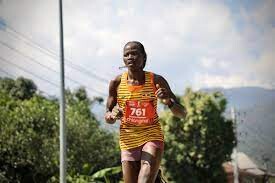
Uganda set out their stall early in the senior men’s race as Kibet formed part of a small lead group alongside compatriots Timothy Toroitich, Leonard Chemonges and Eliud Cherop, with Mexico’s Everado Moreno also trying his best to stick with them. The rest of the field was some 30 metres behind, Friday's uphill gold and silver medallists Patrick Kipngeno and Philemon Kiriago of Kenya leading the chase.
Eight kilometres later, Kibet emerged first from the trees, holding a 19-second advantage over Toroitich and Kipngeno who were locked together in second and third. Kipngeno eventually managed to pull away from Toroitich narrowed the gap to the leader, but it wasn't enough.
Kibet swept across the line to take the title, the sixth for a Ugandan senior man in the past eight World Championships. Kipngeno was 10 seconds behind, becoming the first double medallist at the new expanded championship format. Toroitich held on for bronze ahead of teammates Chemonges and Cherop in fourth and fifth. Spain's Andreu Blanes followed four seconds later, placing sixth.
With four athletes in the top five, Uganda was a clear winner of the team competition. Spain took silver with Italy just a single point behind, both teams placing three athletes inside the top 15.
The Ugandan dominance continued in the final race of the championships as Rispa Cherop, Rebecca Cheptegei and Annet Chelangat pushed the pace from the start with only Saturday's uphill world champion Allie McLaughlin of the USA able to hang on.As was the case with the senior and junior men’s races, it soon became a question of which of the Ugandan athletes would take the title. Cheptegei, still looking remarkably smooth, flew into the race's final kilometre with a 20-second gap over her teammate Chelangat and was jubilant as she tore across the finish line, flag in hand, to become the second Ugandan woman to win a mountain running world title.
Chelangat was no less ecstatic in second and the pair had time pose for the cameras before McLaughlin came in to take bronze, the second medal in a remarkable weekend for the US runner.
Romania's Monica Florea, both knees bleeding, came in fourth, just as she did in Friday's uphill race, confirming herself as one of the most consistent performers in mountain running, as did Britain’s Scout Adkin, who finished a minute further back in fifth.
With Cherop – one of the pre-race favourites – unable to finish, it meant Uganda didn’t have enough finishers to contend for the team title, opening the door for another country. Switzerland, with three finishers in the top 15, stepped up to take the team title, adding to the two sets of team medals they earned in the uphill race on Friday. Britain took team silver, while USA capped a strong championships with bronze.
Just as they did with the senior races on Sunday, Uganda dominated the junior men's event, filling the top four places to sweep the individual medals and earn team gold. Leonard Chemutai was a dominant winner ahead of teammates Caleb Tungwet, Denis Kiplangat and Silas Rotich.
Britain’s Finlay Grant was fifth individually but helped his country to secure team bronze, while France took team silver.
The junior women’s up and down mountain race was the only event on Sunday not won by Ugandan athletes. Jessica Bailey led a British 1-2 from teammate Rebecca Flaherty, also picking up gold in the team standings.
Italy's Axelle Vicari was third individually and a comfortable second in the team contest ahead of France.
Next year the championship heads to Europe and the spectacular trails of the Austrian Alps when the 2023 World Mountain and Trail Running Championships will take place in Innsbruck-Stubai, Tyrol from 6-10 June.
by World Athletics
Login to leave a comment
World Mountain and Trail Running Championships
Welcome all athletes, officials, coaches, and families to THE AMAZING THAILAND WORLD MOUNTAIN & TRAIL RUNNING CHAMPIONSHIPS 2021 (WMTRC2021). The event will feature 80km and 40km trail races, classic up and down and uphill only mountain races. It replaces World Championships previously hosted with World Athletics, WMRA (mountain running) and IAU and ITRA (trail). The Amazing Thailand World Mountain and...
more...2022 World Mountain Running Championships Uphill Results: McLaughlin and Kipngeno Win
It’s finally happening! Years of postponements are done and the first-ever combined World Mountain and Trail Running Championships have started. The festivities are all just outside of Chiang Mai, Thailand, a city of 127,000 people in the mountainous northern part of the country.
Friday’s Uphill race went 8.5 kilometers uphill and with 1,065 meters of gain. Alternately, that’s 5.3 miles and 3,500 feet of elevation gain.
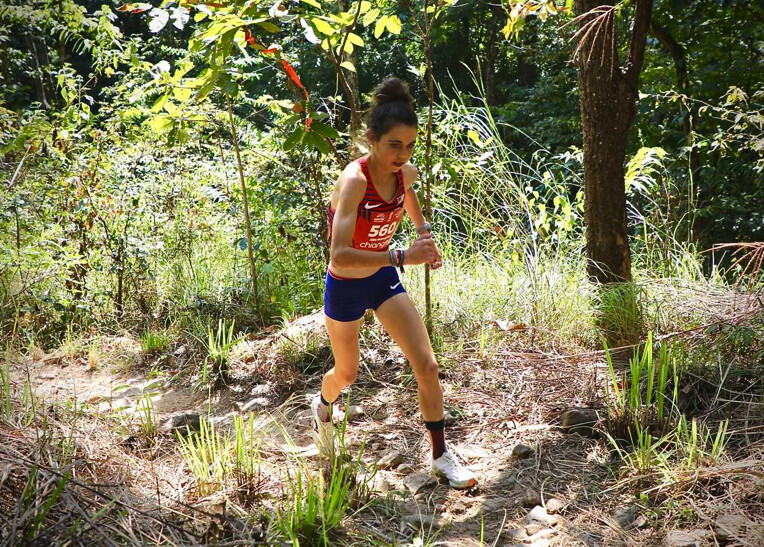
Allie McLaughlin (USA) dethroned Andrea Mayr (Austria) for the women’s crown. The pair raced up in 55:15 and 55:41, and Maude Mathys (Switzerland) was just behind in 56:00 for third.
McLaughlin just came off the Golden Trail World Series Finals in Portugal. Mayr, now 43 years old, is a six-time World Mountain Running Champion, typically excelling in uphill years. All three are expected to double back for the Classic Up and Down race on Sunday.
Monica Madalina Florea (Romania) and Onditz Iturbe (Spain) were fourth and fifth in 57:44 and 57:56.
[In 2015, Maude Mathys received a warning without suspension from the Disciplinary Chamber for Doping Cases of Swiss Olympic for two positive tests for clomifene (previously clomiphene) after it was determined that she was mistakenly taking the drug without first obtaining a World Anti-Doping Agency Therapeutic Use Exemption.]
n the teams competition, Team USA took gold, Great Britain and Northern Ireland took silver, and Switzerland rounded out the podium in third.
by I Run Far
Login to leave a comment
Sierre-Zinal champion Mark Kangogo of Kenya receives three-year doping ban
The trail running community has been rocked after the winner of Sierre-Zinal, a mountain race in the Swiss Alps, was slapped with a three-year ban for two prohibited substances (norandrosterone and triamcinolone acetonide). The Athletics Integrity Unit (AIU) has disqualified all of the results from Mark Kangogo of Kenya, dating to Aug. 13 (the date of the race) and Sierre-Zinal has decided to ultimately disqualify Kangogo.
In the past two months, Kangogo has collected victories at Sierre-Zinal and the Jungfrau Marathon, plus finished second at Thyon-Dixense, a 16.35 km trail race also in Switzerland.
The athlete provided an in-competition urine sample at the Sierre-Zinal, World Mountain Running Association (WMRA) World Cup race, held in Switzerland. The sample reported the presence of norandrosterone and triamcinolone acetonide.
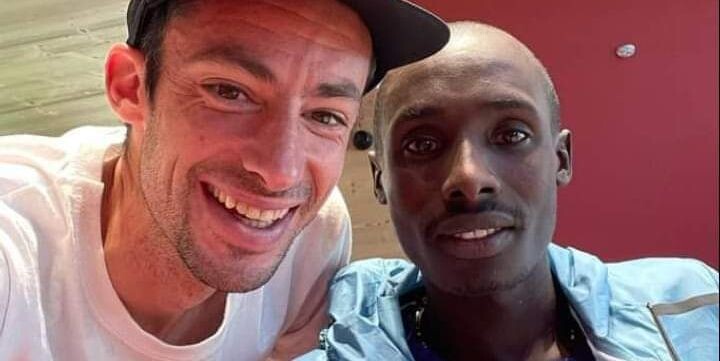
Norandrosterone (19-NA) is the principal metabolite of the anabolic steroid nandrolone, which is used to aid recovery from injuries and increase muscle size, strength and power to help them train harder and longer. Triamcinolone acetonide is a steroid to aid muscle recovery and inflammation.
According to his coach, Julien Lyon, Kangogo has been removed from the On-sponsored Milimani Runners team. This team is a project from On that aims to bring trail running culture closer to athletes in Kenya.
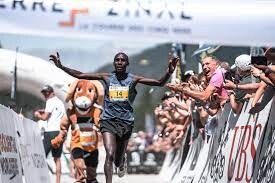
Lyon released a statement that Kangogo will be excluded from the team. “There is no excuse and no possible explanation for doping,” says Lyon. “It will take time for us to heal the painful feeling of being betrayed by a training partner, but we will continue to train with the same motivation and determination.”
Sierre-Zinal released a statement Thursday on the disqualification of Kangogo and including a change in the final men’s results of the 2022 edition: “Andreu Blanes (ESP) has officially become the winner of Sierre-Zinal 2022. He won the race in a time of 2:29:19.”
The race also expressed zero tolerance for doping.
As part of the Golden Trail World Series, Sierre-Zinal has implemented the “Quartz” anti-doping program to preserve the health and fairness of all athletes.
Blanes, who came second to Kangogo, and Kilian Jornet, who finished fifth, both took to social media to comment on the issue.
Kangogo, 31, acknowledged the offence, accepted a sanction and waived his right of appeal. His three-year ban will expire on Aug. 13, 2025.
by Marley Dickinson
Login to leave a comment
IRELAND SHINES AT WORLD MASTERS MOUNTAIN RUNNING CHAMPIONSHIPS
Saturday's (Sept 3) weather may have been overcast in Clonmel but Irish athletes blazed the Comeragh Mountain trails to take an impressive haul of medals at the 21st World Masters Mountain Running Championships.
With a population of just 5.1 million, Ireland produces more than its fair share of strong mountain runners versus much larger countries who sent teams to this world championship for athletes ages 35 to 79. Irish mountain runners took home eight of eighteen available team gold medals and four individual gold medals.
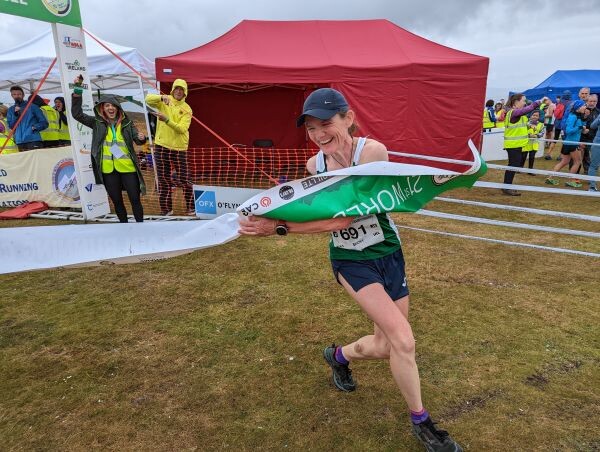
The fastest times of the day were recorded by Thomas Roach (GBR - M40) in 42:00 and Victoria Wilkinson (GBR - W40) in 53:17 on the 10.6km long course with 602 meters of climbing. On the 8.4km short course with 500 meters of climbing it was Franco Torresani (ITA - M60) in 42:09 and Nicoletta Fearari (ITA - W55) in 50:50 who ran the fastest times.
Another performance of note was that of co-race director and course designer Tom Blackburn (IRL) who won a bronze medal in the male 55-59 age group running 44:37, just 20 seconds behind the winner in his age group.Races kicked off in age group waves starting at 10:00 AM under perfect weather conditions for runners; overcast, light breeze and temperatures in the high 50s (F) slowly rising into the low 60s (F).
Only a brief period of light drizzle would interrupt this pattern until the final wave at 1:45 PM.Running on the short course, the W75 race was won by Barbara Prymakowska (POL) in 1:16:40. The W70 gold medal went to Margret Gottnauer (GER) in 1:00:56. The first Irish gold went to Pauline Moran (IRL) who won the W65 age group in 55:50.
Ana Mori Aguado (ESP) won the W60 class in 52:18. Representing a strong Italian contingent, Nicoletta Ferrari (ITA) won gold in the W55 class in 50:50; the fastest women's short course time.Also running the short course, James Patterson (GBR) took gold in the M75 age group in 58:12. Adolfo Accaliai (ITA) led an Italian podium sweep of the M70 age group in 48:49.
The first Irish men's gold medal of the day went to Martin McDonald (IRL) in the M65 class in 48:27. Franco Torresani (ITA) won the M60 class in 42:09. Over 60 runners finished the M55 men's race but it was Tom Tipping (GBR) who bested them all in 44:17.
by Richard Bolt
Login to leave a comment
9-year-old runs a mountain half-marathon barefoot
The Emperor’s Challenge is a 20 km race up and down Babcock Mountain in the Tumbler Ridge UNESCO Global Geopark in northeastern British Columbia. After being cancelled for two years during the pandemic, the race was back in person this year on Aug. 6, with a new, more technical route offering more scenic views. According to the Alaska Highway News, Jacob Funk, who is only nine, completed the race–not the 2K or 4K kids’ race, but the whole 20 km–and he did it in bare feet.
This was Funk’s first half-marathon, and he received a trophy for being the race’s youngest finisher. He doesn’t get to keep it, but it will have his name engraved on it.
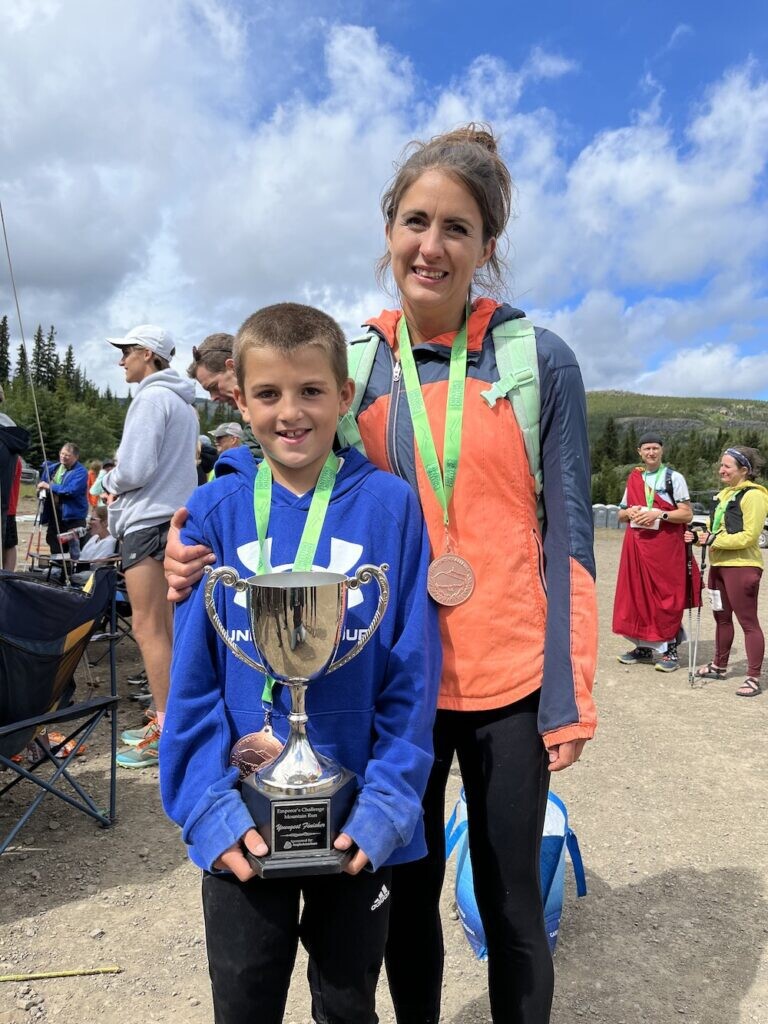
We reached Jacob and his mom, Cara, on a family trip to Newfoundland (they live in Swan Lake, about an hour and a half from Tumbler Ridge). Cara has run the Emperor’s Challenge twice before. She explained that her family are not necessarily proponents of barefoot running; Jacob simply prefers going shoeless (and sockless) most of the time, indoors and out, year-round. “He just really likes the feel of the ground under his feet,” she says.
Jacob told us there was an 8 km section of the course that was loose gravel, which, despite the thick calluses he has built up from going barefoot, was uncomfortable and slowed him down a lot. He plans to return to the race next year, but run it in shoes (at least the gravel parts), to try and improve his time. (He finished in 3:29.) “I did get some times where I was a little bit tired,” says Jacob, “but I never wanted to quit.” For his next race, Jacob is considering That Dam Run, a 16 km race in the mountains at Hudson’s Hope, B.C. on Sept. 25.
Jacob wasn’t the only competitor who achieved something unusual and significant at the race; Rose O’Neill ran it on a running prosthesis. O’Neill, who lives in Quesnel, B.C., took up running as a way to cope with domestic abuse before finally leaving her situation a few years ago. In 2019 she lost her lower right leg to amputation, due to nerve damage resulting from back surgery related to her abuse. This was her first successful race finish using the blade.
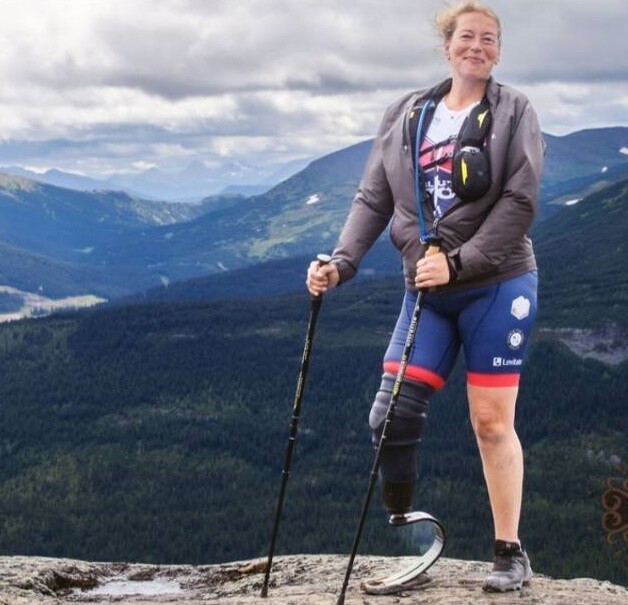
Earlier this year, she made it 30 km into a 50K ultra before her prosthesis broke, forcing her to pull out. At the Emperor’s Challenge, she had to stop and change the sock on her stump six times, due to sweat issues. She had run four times previously–as an able-bodied athlete, before she lost her leg. “Each time I stop, I have to take my leg off, dry it off, change my sock, and put everything back on,” she said, adding that when she races, she carries a pack with a first aid kit and dry socks. She finished about 20 minutes past the five-hour cutoff, but she was still elated with the accomplishment of finishing.
O’Neill, like Funk, hopes to improve her time next year; she says she’s sure she can finish the race 45 minutes faster, once she gets more accustomed to running with the blade. But she has another goal–to get more runners with disabilities to try challenges like this one. “No other adaptive athletes have run that race,” she says. “There’s a reason—it’s tough! But I want other people to see that they can do it, as well.”
The race was won by Kristopher Swanson of Tumbler Ridge in 1:31:47 and Carly Madge of Smithers, B.C., in 1:54:31. (Swanson has won the race every year since 1999, except in 2007, when he finished second, and has represented Canada at multiple World Mountain Running championships.)
by Anne Francis
Login to leave a comment
Kilian Jornet Co-Founds New Brand, NNormal
Mountain running legend Kilian Jornet has announced his newest venture: an apparel and outdoor equipment company called NNormal.
The brand's creation was announced last month, a partnership between Jornet and Spanish footwear company Camper. According to the brand's website, the company name comes from locations of the designing and testing of products in Mallorca, Spain, and Norway, respectively (Nor + Mal). Jornet, who is originally from Spain, now lives in Norway.

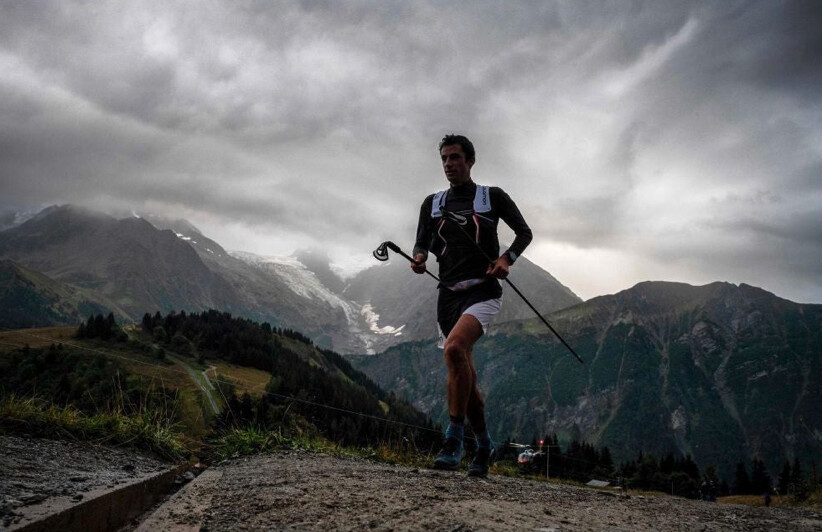
According to the brand's website, the first line of NNormal products - set to include shoes, apparel, and accessories - will launch this fall, both online and in specialty running stores in Europe and North America. Additional members of the NNormal athlete team are also set to be announced in the coming weeks and already include Swedish athlete Emelie Forsberg, Jornet's partner.
While no products have been made available yet, NNormal's website notes that the first line is currently being tested, and that co-founder and first brand ambassador Jornet will wear the gear during his 2022 racing season, ostensibly including his seventh appearance at UTMB this August. Jornet split from longtime sponsor Salomon last year with an announcement that he would be turning toward a new venture, rather than signing with another existing company. Until recently, he had given few other details.
A Focus On Sustainability
NNormal's slogan, "Your path, no trace," alludes to Jornet's activism and dedication to environmental sustainability, and in a video on the website, Jornet outlines the mission and plans for the new company, including that all of its products should be reusable, repairable, or recyclable.
"Whatever we produce, it has a negative impact on the environment," says Jornet in the video. "Transparency is necessary to be honest about what we are doing well and what we should improve. How our company is contributing to climate change, to biodiversity loss, to introducing new chemical elements to nature, to ocean acidification, to land use, and to freshwater consumption, should be studied."
Jornet's partner business, Camper, was founded in Spain in 1975, and is currently headed by Miguel Fluxa, whose family has been crafting shoes for four generations. Camper has laid out ambitious sustainability goals itself, including 100% recycled or circular packaging, 100% of products made with recycled or renewable materials, and 100% ethically trusted and verified supply chain members by 2025, as well as net-zero emissions by 2050.
"So, how do we approach, at NNormal, our environmental responsibility?" said Jornet in the video. "Our DNA is to work on functionality. Our products are made to be used in multiple activities, and to be worn. Durability: to ensure that with this functionality, they can last the maximum. And repairability: to prolong the life of each product. Our end goal is to work toward real, circular products, leaving no trace in our path."
In the video, Jornet goes on to note that the brand's apparel is fully designed and created in Europe with materials from European producers, but that footwear will be manufactured in Asia, at least at first, due to better industrial capacity for producing performance shoes in that area of the world.
"Our goal is to produce more in Europe in the future, and for that we must invest in creating infrastructure and the know-how for it," Jornet says. "We are building long-term relations with our partners and providers to ensure the environmental and social levels of all our supply chain[This] means our internal emissions, but also from our external partners, such as factories, materials, et cetera, and working on reducing it with the goal of having the lowest emissions possible, and compensating the rest of emissions to become carbon neutral."The Goal? Better, not more.
Jornet notes in the video that in the interest of producing less waste and more timeless products, NNormal will include unisex color schemes, emphasize multifunctionality of products so that they can be used for more activities, and limited new releases, creating new designs only if better materials or strategies are identified, rather than releasing revamped editions each year.
The company plans to pursue the highest possible certifications in social and environmental responsibility, notes Jornet, including being a 1% for the Planet member and dovetailing with the work of Jornet's own Kilian Jornet Foundation, which supports environmental projects such as the World Glacier Monitoring Service and the science education work of the Athlete Climate Academy.
by Trail Runner Magazine
Login to leave a comment
Want to Become a Professional Trail Runner? This New Program Might Be Your Chance.
Two weeks ago, The North Face announced the launch of its Athlete Development Program, an initiative to diversify the trail and mountain running community, and outdoor sports more broadly.
The program will provide two-year contracts with The North Face to 15-20 climbers, alpinists, skiers, snowboarders, and trail runners, providing expedition funding, apparel, equipment, education about the roles of a professional athlete (i.e. pitching expedition ideas for funding and engaging with one's community), and one-on-one mentorship with established athletes for the duration of the contract. The program will begin with a three-month onboarding phase, followed by nine months of mentorship with a current North Face athlete, educational sessions, and the potential for additional collaboration opportunities.
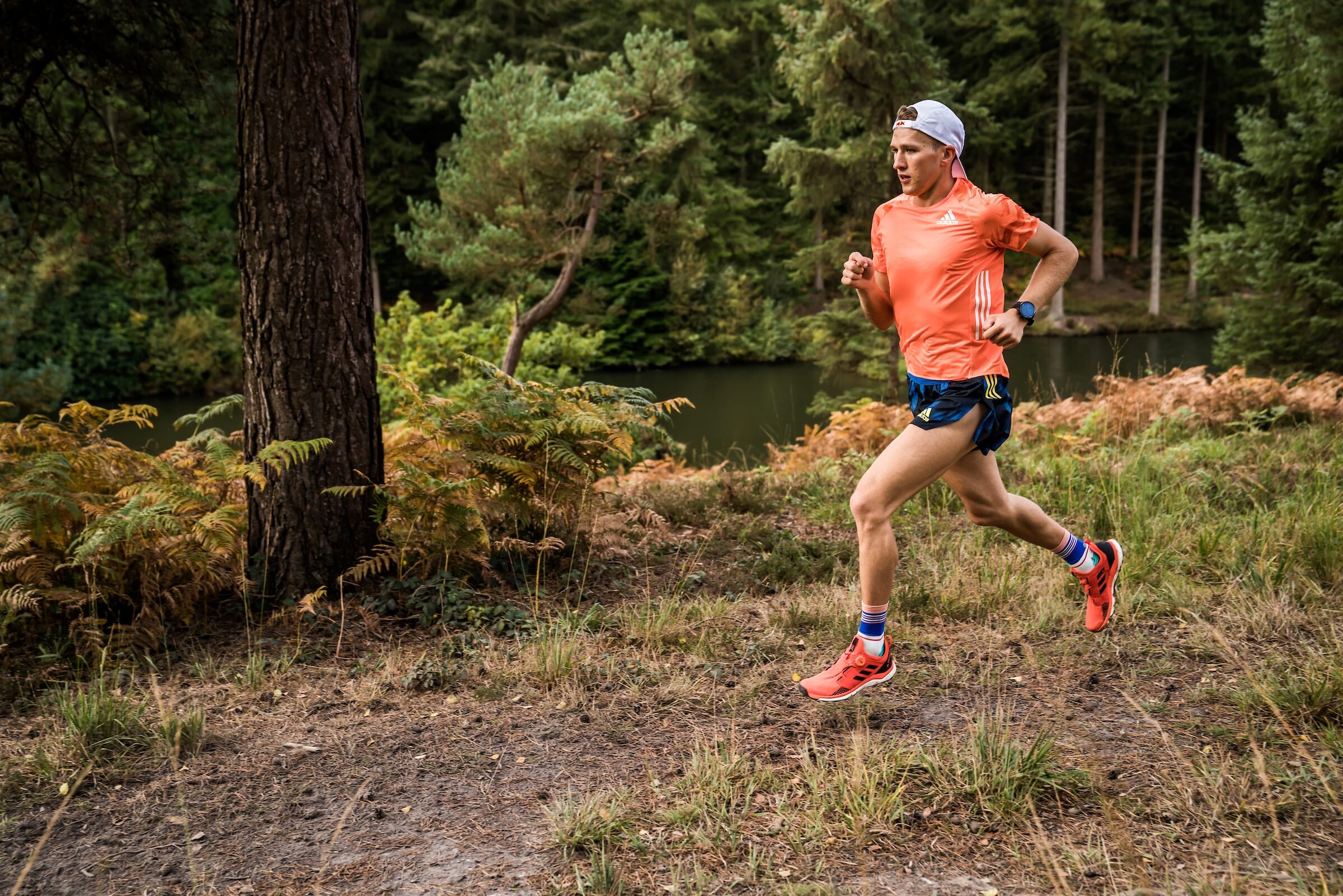
"Today's athlete recruitment process relies heavily on referrals, historically favoring those who are already well-connected and enjoy the privileges that allow them the time and resources to accelerate in their sport," one North Face spokesperson said.
Mike Foote, a long-time professional ultrarunning athlete for The North Face, responded directly to the historical challenges of access within the sport.
"I joined the team because I had good results, but also because Mike Wolfe, who was on the team at the time, lobbied hard for me to get picked up," said Foote. "I'm not sure it would have happened without that relationship."Foote has known about plans for the Athletic Development Program for months now and is excited to see it formally launched. "The whole point of it is to democratize the process of getting access," Foote said. "The Athlete Development Program removes the hurdle of social networking and gives folks a direct path to the brand."
The Athlete Development Program strives to remove these social barriers by introducing an online application portal-eliminating the need for existing networks. The North Face says it will prioritize athletes from "historically excluded or marginalized" groups to create a more inclusive outdoor community.
Applicants must be 16 years of age or older and based in the United States to apply. The application period will remain open until May 19, 2022, and the athletes will be selected in September 2022.
by Trail Runner Magazine
Login to leave a comment
Kilian Jornet partners with Coros wearables
The world-class GPS watch company Coros has partnered with two new athletes to expand their trail and mountain running audience. World sky-running champions Kilian Jornet and Emelie Forsberg are the newest pro-athletes to represent the company.
The strategy behind the partnership is Coros’ commitment to helping athletes train and perform at the highest levels. Coros continues to cement itself as the leader in athletic performance-focused wearables, as Jornet and Forsberg join a growing roster of truly world-class athletes that include marathon world record holder Eliud Kipchoge and Olympic bronze medallist Molly Seidel.
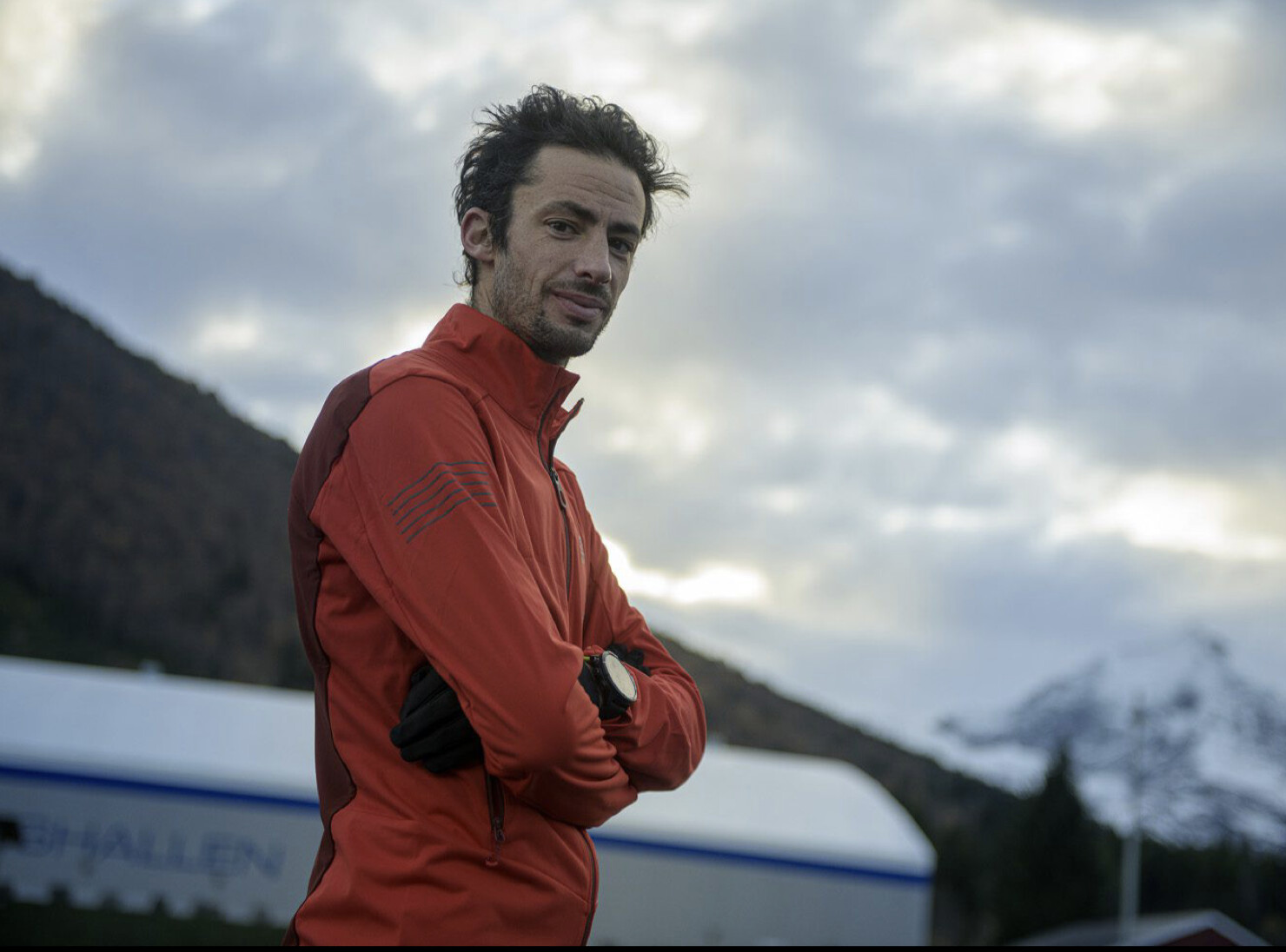
Jornet has significant goals for 2022, as the three-time UTMB champion to returns Chamonix, France, for another crack at glory. Jornet, who recently left his sponsor Salomon, will also be competing at Hardrock, where he is a four-time champion, and Sierra-Zinal, which he has won nine times (including the last five editions).
Forsberg, who is Jornet’s partner, has the women’s FKT up and down from Mont Blanc in 7:53:12. Forsberg was the world sky-running champion in 2014 and is making a comeback to the sport after the birth of her second daughter in April 2021.
Drawn by its light weight, size and the inclusion of mountain-compatible features, both Jornet and Forsberg will wear the Coros Apex Pro as their primary GPS watch. The Coros Apex Pro features Ski Touring mode with auto ascent/descent detection, SpO2 (pulse oximeter) sensor with specially designed altitude mode, trail running mode and more…
by Running Magazine
Login to leave a comment
Inside the War: Dispatches From a Ukrainian Race Director
On February 24, after Russian forces invaded Ukraine and ignited one of the largest conflicts Europe has seen since 1945, Trail Runner Magazine reached out to the country's running community in support, to learn more about what's happening on the ground, and provide a platform in solidarity.
(My Best Runs wanted to share this with our readers. What is happening is terrible and we must tell the world what is going on there.)

We quickly connected with Yaroslav Turenko in Lviv, western Ukraine, who is the race director for one of the country's largest trail races, the Lviv Ultra-Trail series. Turenko is a passionate trail runner, volunteer, and photographer. Here's what he had to say:
Nicholas Triolo for Trail Runner: Can you tell us what it's like on the ground where you are? What is the general sentiment of the Ukrainian people right now?
As you've likely heard, the worst-case scenario in Ukraine is unfolding. We are facing horrible acts of Russian aggression. They have invaded our country and have started to kill innocent people, bombing our cities, military, and civilian infrastructure. Their military is using the most inhumane methods: local populations used as human shields, women and children dropped off when attacking armored vehicles. The occupiers have killed children, shooting them at point blank.
These are war crimes. Crimes against humanity using tactical weapons of mass destruction, prohibited weapons, and ammunition. Many people in the world think this war is far from Central Europe, but a Russian missile was just dropped on a Ukrainian military base, located 24 miles (40 km) from the European Union border.
We've lost unique Ukrainian works of art in fires, along with the largest plane in the world - Ukraine's Antonov-225 cargo plane - destroyed by Russian strikes outside Kyiv.
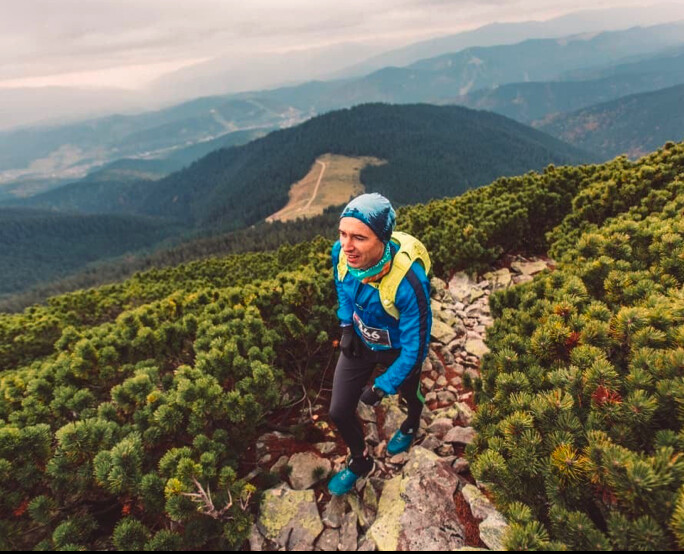
But Ukraine is united like never before; all of our internal political disagreements are in the past. All the Ukrainians inside the country and abroad are doing everything possible to stand up and give a proper fight to Russian forces. We ask the international community to stand with Ukraine. But we need international support. We need shelter for our families. We need to close off air traffic from Russia. We need equipment for our defenders and sanctions for Russia.
Andrii Tkachuk, the world record holder in the 48-hour treadmill race and the national record holder in 24- and 48-hour ultramarathons, is currently defending the country in the Ukrainian Armed Forces.
TR: The city of Lviv, where you are, is located in the western part of Ukraine, far from the Russian border. Are you in any immediate threat? Are you in touch with people in Kyiv and other places currently under fire?
We are supporting each other, yes. Everyone in Ukraine can find shelter here in Lviv (pronounced "Luh-VEEV"). However, there is no guarantee that Lviv is a safe place, but right now we see a significant difference between Lviv and other cities in central and eastern Ukraine.
Lviv is a hidden gem of Europe. It's a charming, bohemian city, a UNESCO World Heritage site. It's the city of cafes and pubs, and some surprisingly awesome trail running. There will be no more Lviv Ultra-Trail until the enemy is defeated. Lviv is amazing, remarkably inexpensive by European and international standards, and I sure hope that the Lviv Ultra-Trail will take place again.
TR: Are you turning to your local trail running community for support right now? What can trail and mountain running do to help promote peace and understanding in the world?
We sent all the money from the Lviv Trail Running Club bank account to raise funds for the Ukrainian Armed Forces. Other organizers and trail communities have done the same. All volunteers involved in initiatives related to this development are working with refugees, blood donation, first aid, and cooking food for large groups of people.
Andrii Tkachuk, the world record holder in the 48-hour treadmill race and the national record holder in 24- and 48-hour ultramarathons, is currently defending the country in the Ukrainian Armed Forces.
We are kindly asking the International Skyrunning Federation (ISF) and International Trail Running Association (ITRA) to ban all Russian race evaluation and certification. As far as we know, the Lviv Ultra-Trail banned Russian runners after the annexation of Crimea, and the war in Donbas and Luhansk regions. We are calling for the ban of all Russians from international events like the UTMB World Series, the Golden Trail series, and others sponsored by ISF and ITRA.
TR: Pivoting away from the invasion for a moment: How would you describe trail running in Ukraine to someone who doesn't know much about your country?
Trail running in Ukraine has been developing extremely fast. Every year, the number of events and participants has grown. Among the most popular trail running events are the Tvoya Prygoda Series, Fun Carpaty, Lviv Ultra-Trail, and Ukrainian Trail League series.
Ukraine is a beautiful country with extraordinary nature and breathtaking landscapes, which makes it possible to run trails in nearly every part of our land, year round. The best place for trails, in my opinion, are the Carpathian Mountains, with some peaks above 6,500 feet (2000m) above sea level, with high humidity in every season. (Mount Hoverla is Ukraine's highest peak at 6,762 feet).
Serhii Popov is considered one of the fastest trail runners in Ukraine. He has won national trail and long distance mountain running championships almost every year since 2015, and took part in nine world championships. He is also an ultrarunner with the best national performance time in the Men's 40+ age group for 50K and 100-mile road races.
On February 24, Popov planned to fly to Spain, to take part in a six-hour ultrarunning event in Barcelona, with the goal to set another national record. But in the morning, he woke to bombing sounds from the Boryspil airport, where he was planning to depart a few hours later.
"The first night we spent in the basement of our friends in Irpin, near Kyiv," said Serhii. "It is right next to the Hostomel airport where fighting with the Russians just started. Explosions were so loud that the walls shook. This continued in the morning and we decided to reach the city of Zhytomyr, where my wife's parents were, and our car. As soon as we got to the city, we realized the return trip was not possible, so we decided to stay there and do what we could.
"I could not join the local defense forces. They are only taking people with appropriate combat experience, which I don't have. So we went to shops and carried food and water to block posts," Serhii said.
"The city of Zhytomyr is preparing to meet the enemy. Everybody in the city is trying to help - building fortifications, collecting all the army needs. We often will hear sirens and sometimes the sounds of explosions. But mostly people are calm and ready to stand up for their land."
by Trail Runner Magazine
Login to leave a comment
Chevrier breaks course record at La Montee du Nid d’Aigle
Italy’s Xavier Chevrier and Kenya’s Lucy Murigi took top honours at the highly anticipated La Montee du Nid d’Aigle, the third stage of the WMRA World Cup series, on Saturday (17).
The race hub in the picturesque Saint-Gervais-Les-Bains, in the Haute-Savoie region of France, combined with a tough course and a field of top runners made for a fantastic mountain running race.
Blue skies greeted the runners at the start, with a few whispy clouds higher up in the mountains. Conditions were hot for the runners, particularly on the exposed parts of the course, making the 19.5km uphill-only race particularly relentless.
The route starts at Le Fayet and heads along the river towards St Gervais, and then to La Villette, climbing gradually. It then heads away from the road and into the trees and begins to climb more steeply all the way up to the finish at Refuge du Nid d’Aigle at 2394m.
With deep fields in both the men’s and women’s races, both podiums were wide open. As expected, the flatter first few kilometres of the race were fast and furious and before too long gaps had opened for the men and women.
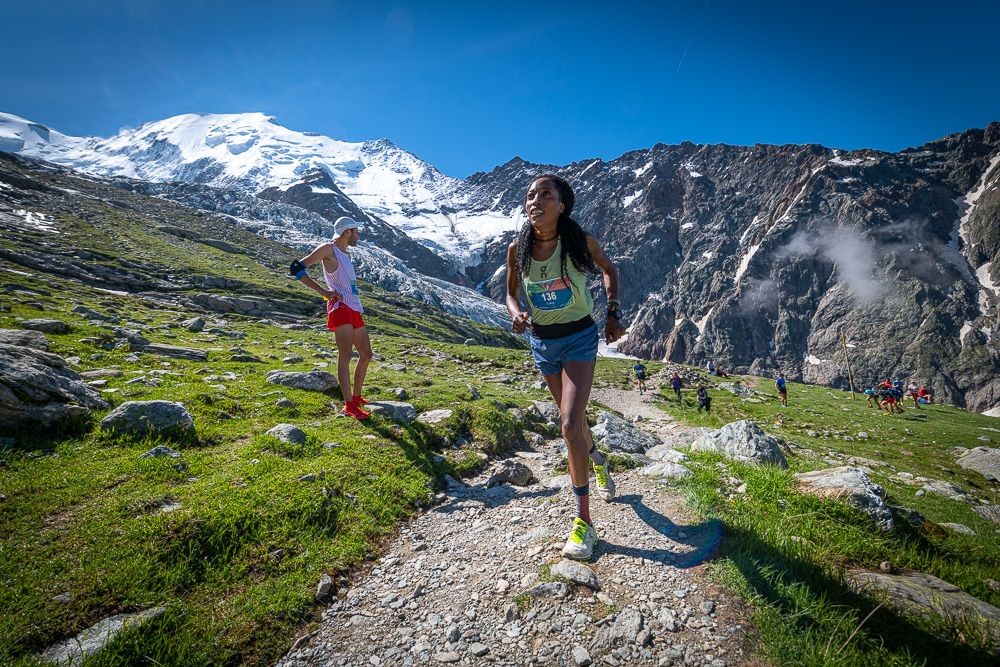
Murigi, who finished third at Grossglockner last weekend, struck out into a lead over French duo Anais Sabrie and Christel Dewalle. Chevrier and Italian teammate Francesco Puppi also made a break for it in the men’s race, but they were hotly pursued by a group including France’s Julien Rancon, Alexandre Fine and Henri Aymonod.
Chevrier and Murigi maintained their leads, though the races remained close. In the closing stages, Chevrier pulled away from Puppi while the chasing runners jostled for third place.
Chevrier went on to win the men’s race in a course record of 1:44:25, followed by Puppi, more than a minute behind (1:45:49). Aymonod completed the all-Italian men’s podium in 1:46:44. Julien Rancon was fourth in 1:48:43 and Remi Lonchampt rounded out the top five in 1:50:18.
Dewalle, who is a 10-time French VK champion and excels on the steeper climbs, chased Murigi hard on the final climb, but couldn’t catch the Kenyan. Murigi won in 2:06:08, just two seconds outside the course record, with Dewalle just 21 seconds behind. Sabrie was a further minute in arrears (2:07:34).
France’s Mathilde Sagnes was fourth in 2:08:37 and Simone Troxler fifth in 2:10:43 with the top five finishing within five minutes of each other.
The next stop on the WMRA World Cup calendar is the Tatra SkyMarathon on 24 July.
Login to leave a comment
Zagori Mountain Running will be held on July 23-25, 2021, at Tsepelovo, Epirus, Greece.
Zagori Mountain Running, the leading ultra trail event in Greece and favorite athletic destination, awaits to welcome you again this summer on 24-25 July.
The Zagori Mountain Running, an integral part of this cultural harmony, offers to the athletes the opportunity to experience through their effort “the place beyond the mountain."
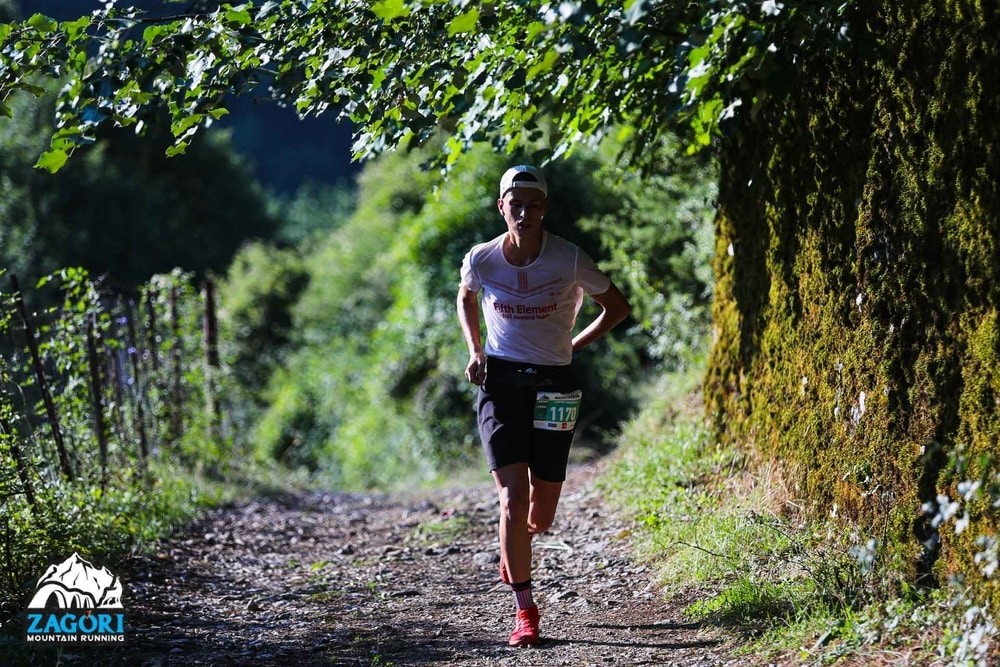
.Zagori Mountain races began in 2011, and they were “built” on the idea of mapping a trail route in the area, which could actually support a mountain race. The route was marked, and the second stage to follow was the implementation of the race that would be called the first Zagori Mountain Running.
Beyond all expectations, registrations exceeded the initial target! The feedback of the participants, the very first moving moments and the warm welcome of the local community, filled us with strength and courage to go on with the project in the following year.From its early years, Zagori Mountain Running has won the hearts of athletes and friends, making this trail event very special and popular.
Of course, the reasons are many, explaining why ZMR has become a leading trail event in Greece. First of all, ZMR offers multiplicity, different levels of difficulty and a wide range of terrain. Every athlete, every person can find the race that suits them best, or even try a new challenge, since there are four (4) categories available, covering distances from 10 to 80km.
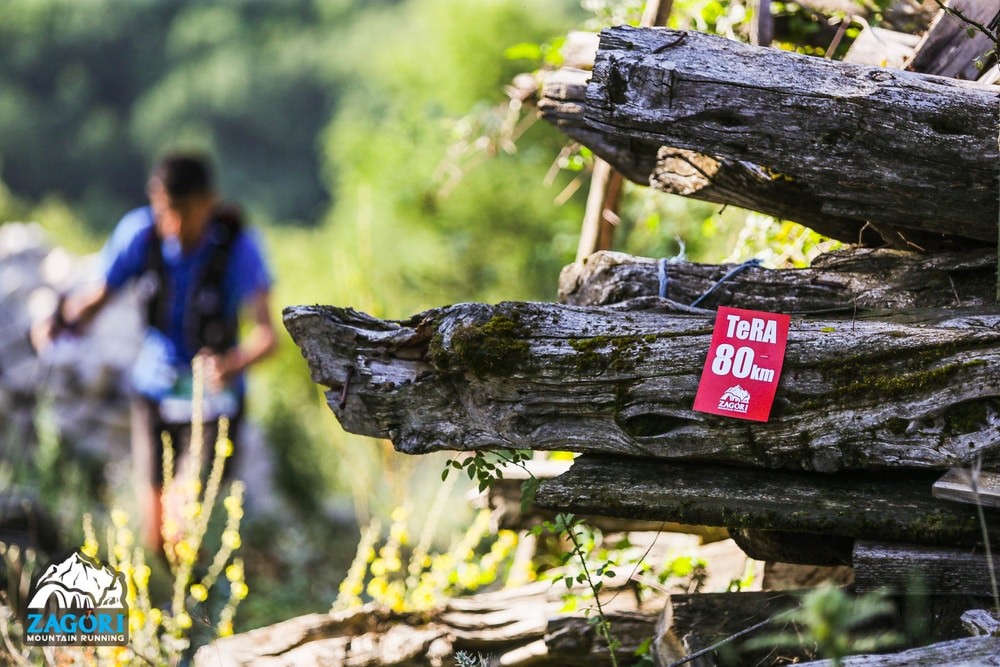
Ideal start is the Entry Race of 10km for new comers in the trail running. The kids’ race called “Zagoraki” concludes the age group, offering to the families the chance to spend quality time altogether, sharing common activities in combination with a summer holiday in Zagorochoria, in Epirus, by the end of July.It has been written that “one life is not enough to experience Zagori”, yet it’s true.
The 46 villages known for their architecture and their outstanding natural beauty, their stone bridges of the famous Epirotic craftsmen, the Vikos canyon, the Vradeto steps, the Voidomatis river, the churches, the mansions, the rich biodiversity, all these captivate the visitor and at the same time give the athletes the thrill and the energy to make it to the finishing line.Zagori Mountain Running manages with total respect this significant heritage.
Our main concern is that all the participants, their friends, the visitors, inspired and delighted of what they have just experienced, make a promise to return!
Login to leave a comment
Well known Kenyan coach Joseph K Ngure joins the Kenyan Athletics Training Academy
Joseph K. Ngure has joined the Kenyan Athletics Training Academy staff as Director of Education and Race Director.
"He comes with lots of experience," says Bob Anderson (pictured with Joseph) managing director of the Academy in Thika. "He is a senior coach and AK certified official. He has been a school teacher and most recently was the head coach at Run2gether. He also brought Mountain Running to Kenya."
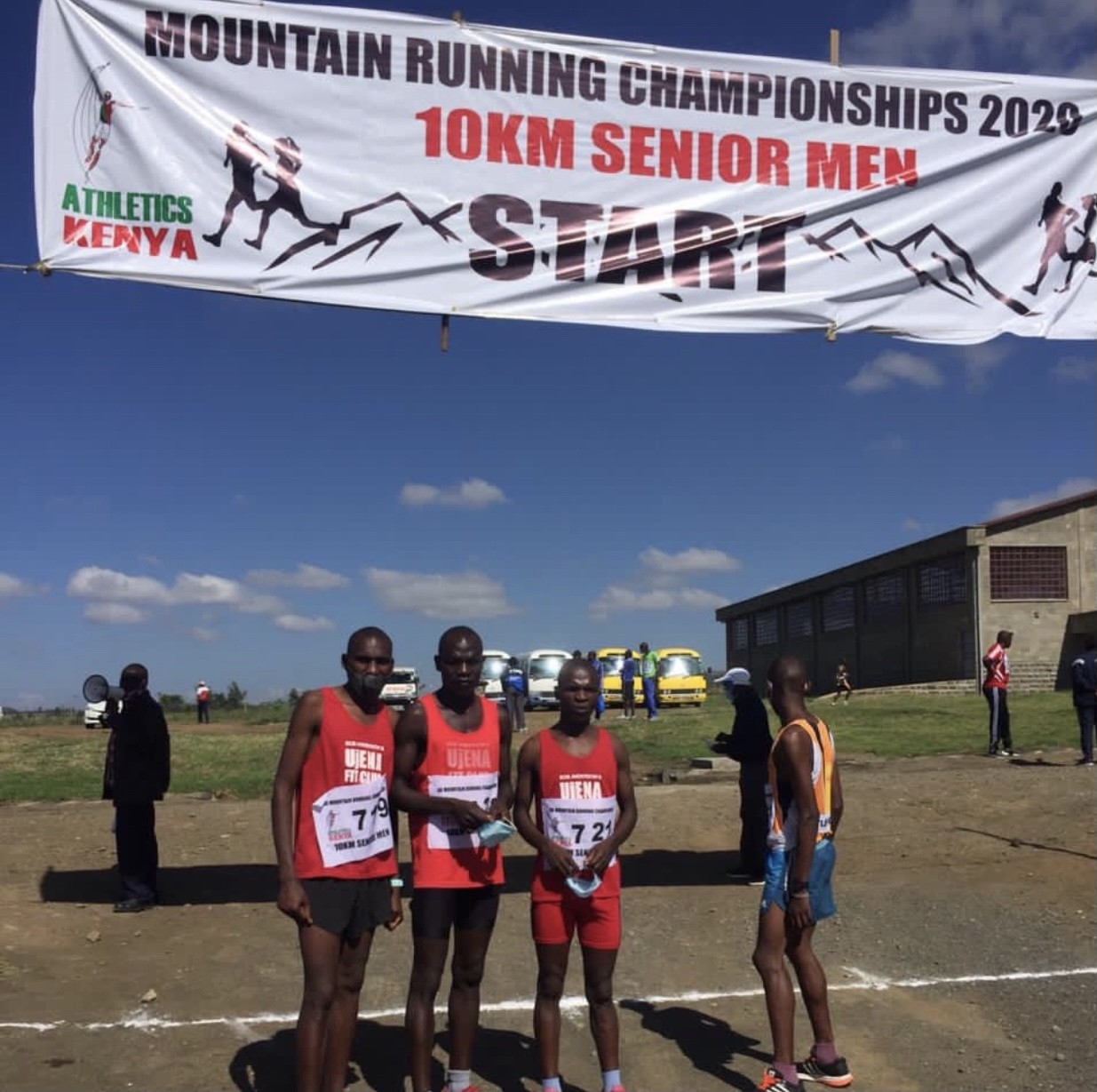
The Kenyan Athletics Training Academy is a unique facility offering training, education and for those living there an excellent meal plan and a pleasant atmosphere so athletes can focus on their running.
The staff and staff-athletes at the Academy welcome other athletes interested in improving, setting new PR's and hopefully winning races. The top athlete currently training at the Academy is Joel Maina, a 1:00:40 half marathoner.
The cost for a shared room is just 10k KES per week for a Kenyan Citizen. Or just $29US per night for non-citizens. Private rooms are also available.

"I met Joseph during our trip in January 2020 to Kenya," says Bob Anderson. "I found him to be very personable and knowledgeable. He was working as head coach for the Run2gether camp at the time."
Joseph left Run2gether earlier this year and contacted Bob Anderson about wanting to join his staff at the unique new project he had going in Thika.
Joseph took the job and says: “I have been involved in athletics on different levels and have learnt a lot. With the evolution and the dynamism in the sport, new approaches and professionalism need to be injected in order to move to the next level.
“I will work with the staff at our Kenyan Athletics Training Academy and offer expertise in competition organisaton, lias with grassroots and national federations to make sure the objectives of the Academy are achieved.”
Several unique and standard races are being planned along with time trials.
Joseph continued, “With the state-of-the-art facility in Thika new talents in the neighboring regions and elite runners will get wholestic training in preparation for local and international competitions
"I wish to lay strong tradition and culture of discipline, team work and integrity in accordance with World Athletics, Athletics Keny and AIU. More so inject the spirit of sportsmanship and respect to the sport and to the individual.”
The Academy is unofficially open now and the official opening date is September 1. A grand opening along with a race is being planned.
Login to leave a comment
Pro tips for hitting the trails this spring
Emma Neigel, member of Team Canada at the World Moutain Running Championships, offers her advice for transitioning from the track and roads to the trails
Canadian summer is officially on its way, and so is trail season. Now is the perfect time to swap out pavement and sidewalks for dirt paths and turn your run into an adventure. If you’re new to trail running and you’re feeling hesitant, we’ve got you covered. We spoke with Emma Neigel, a trackie-turned trail runner who was one of Canada’s top finishers at the 2019 World Mountain Running Championships for her best advice on making the transition from the roads and track to the trails.
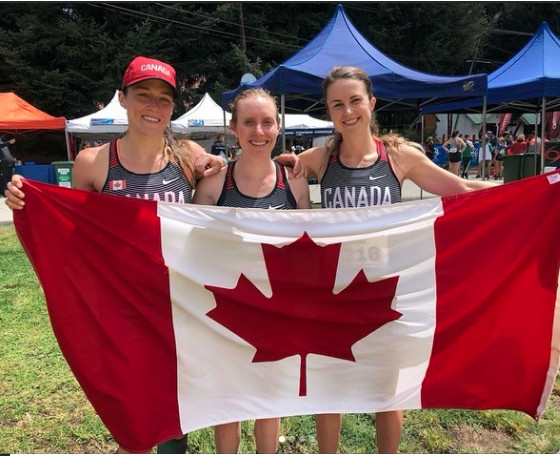
Neigel’s advice for hitting the trails
For runners who are making the transition from the roads or track to the trails, Neigel’s first piece of advice is to invest in a good pair of trail shoes, since road running shoes lack the grip you need when navigating more difficult terrain, and provide little help when you hit a patch of mud. Her second piece of advice is to take the time to enjoy the trail. She suggests leaving the tech at home and simply taking in the sights and sounds of nature.
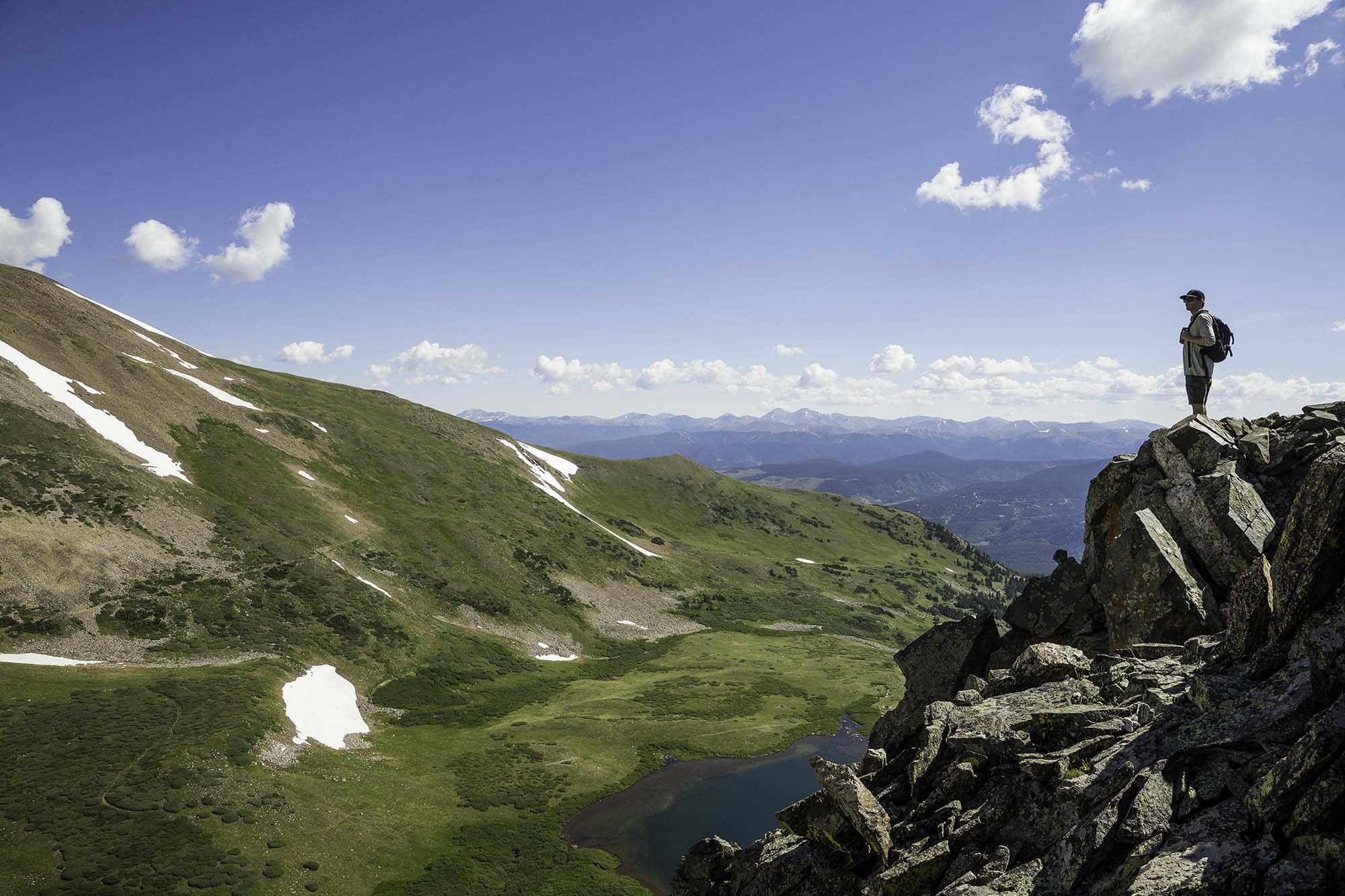
“Trail running is a great escape from the everyday hustle and bustle,” she adds.
Finally, she reminds runners not to forget why they enjoy the sport, and encourages them to run new routes, find running friends and to take advantage of the good weather.
“The hardest part about running is getting your foot out of the door,” she says, “so stay motivated by keeping things fun.”
by Running Magazine
Login to leave a comment
Pikes Peak Marathon legend Arlene Pieper Stine, the first woman to run a sanctioned marathon, has died
Eight years before Kathrine Switzer shocked the world by running the Boston Marathon, Arlene Pieper Stine did her 26 miles in the Pikes Peak Marathon, with a 9-year-old daughter in tow
Arlene Pieper Stine got into the Pikes Peak Marathon in 1959 as a stunt to market her Colorado Springs health club. When she finished, the 29-year-old mother of three was in the record books as the first woman to finish a sanctioned marathon. Unlike the Boston Marathon, the Pikes Peak race never had a prohibition on women participating.
One of Colorado mountain running’s most beloved heroes used to climb up the ladder next to the sign draped across the town of Manitou Springs’s main drag — “Welcome, Pikes Peak Runners” — so that she could send off the hundreds of runners who had packed the narrow street to head off for the summit of the 14,115-foot mountain more than 13 miles and 7,800 of vertical gain in the distance. Then they would turn around for the return trip.
“Runners, ready,” she said into the microphone in the absolute still morning of sun, rain, or even snow of late August. “Go!” said Arlene Pieper Stine.
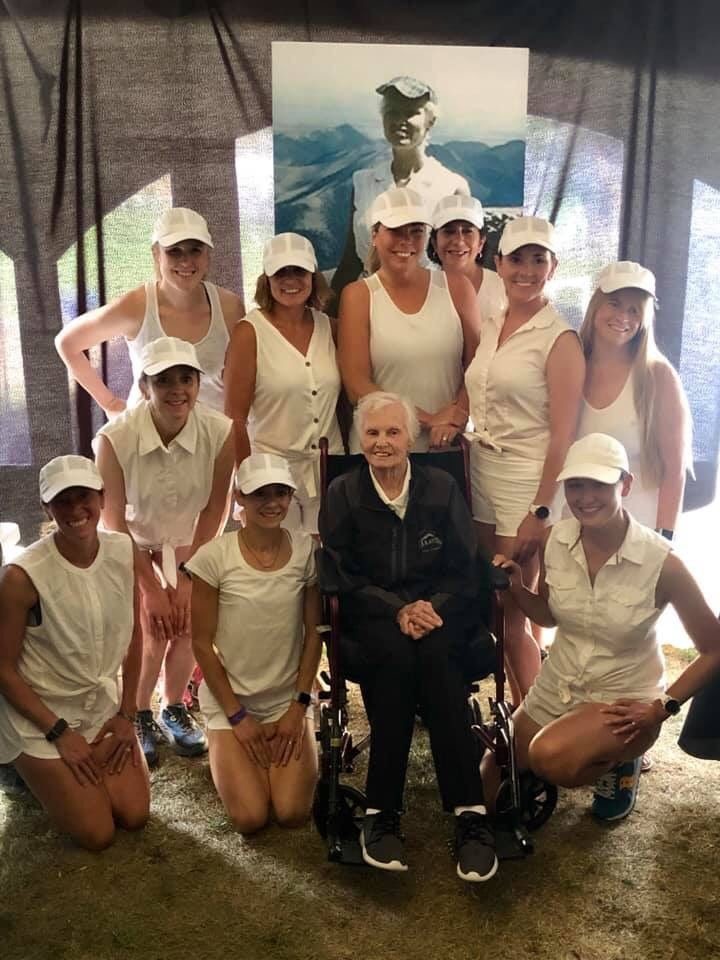
Pieper Stine became the race’s folk hero in 2009 when race officials went looking for the former Colorado Springs resident and health club owner so that they could bring her back to her hometown with some news: Not only had she been the first woman to complete the Pikes Peak Marathon — the punishing switchbacks, rocky single-track, and finally, the last few miles above timberline at over 12,000 feet — but she was the first woman to complete any sanctioned marathon, eight years before Kathrine Switzer became the first woman to complete the Boston Marathon in 1967.
Fifty years after she finished the full “out and back,” as Peak marathon veterans refer to the course, with a time of 9 hours and 16 minutes, Pieper Stine was once again at the start line.
Pieper Stine died Feb. 11, 2021, a month shy of her 91st birthday, as she was trying to build up her strength after battling COVID-19, her daughter Kathy Pieper said.
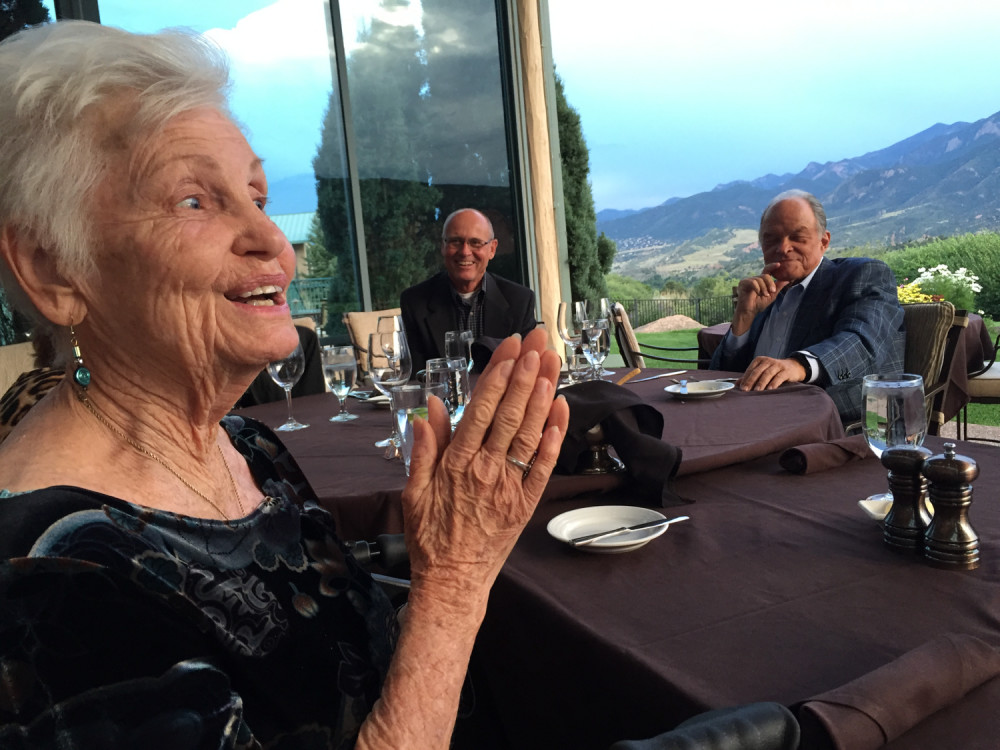
“She got cards and letters from runners and it meant so much to her,” Pieper said. “And I was able to go into her assisted living facility — all covered up — to see her. She ran such a good race.”
She became a role model and inspiration for women runners who looked to her for her boldness and independent spirit — a wife, mother, business owner, and runner who hiked and ran on Pikes Peak with her family in the 1950s, dressed for the race in white sleeveless blouse, white shorts, white headwrap, and tennis shoes from Woolworths.
“We didn’t carry water or have aid stations in those days,” she said in a 2014 interview. “I still remember it like it was yesterday. You can be a wonderful wife and mother, but it showed me that if there’s something you really want to do, you should go for it.”
Year after year, Pieper Stine was as much a part of the race as the unpredictable weather, the friendliness and camaraderie of the runners whether elite or there for a bucket list challenge, or because life wouldn’t be the same without that weekend in late August that turned Manitou Springs into an excited, nervous, and glad-to-be alive running party.
“If I can do it, so can you,” she told the runners who thronged around her in Memorial Park at the Race Expo, at the pre-race spaghetti dinners, or on the streets of town.
From the first time that she and Pieper returned to Manitou Springs in 2009 for the 50th anniversary celebration of the race that they had run together — Arlene at age 29 and Kathy at age 9 — Pieper Stine became living reminders of the beauty and challenge of running the Peak.
“‘It’s a beautiful day for a race,’ I remember her saying as we passed runners that day,” Pieper said of the race she did with her mother in 1959. “And she kept that same attitude every year. She never could believe that runners would come up to her and say ‘Can you just touch my hand for luck?’ or ‘It’s so good to see you again.’ She remembered everyone and had wanted to say something to them all. She could barely walk 10 paces down the sidewalk and people would say, ‘Can I get your picture? Can I get your autograph?’ It was just the thrill of her life when [race organizers] found her.”
In 2019, to mark the 60th anniversary of Pieper Stine’s marathon step for woman runners everywhere, a group of women runners dressed in white sleeveless blouses, white shorts, and headscarves and hats gathered to run up Pikes Peak to mark the occasion. And like the rock star of the trail running world she was for women, Pieper Stine showed up for the celebration.
Four years earlier, in 2015, I had the opportunity to celebrate Pieper Stine myself. The night before the marathon, I joined the Peak Busters gathering at the Manitou Springs City Hall and was reassured by Arlene, as I had come to know her. I had come back from falls and injuries like everyone else on the peak, since my first marathon on the mountain, in 2004.
At that time, Arlene was using a wheelchair after hip surgery. It was my second out and back and I was eager but nervous. “Good luck,” she said. “You’ll have a great time!” I bent down and she took her hand in mine. “OK,” I said, feeling tears about to come, feeling a part of history of this mountain that had both tested me and rewarding my training — or had spit me out during a few memorable Ascents and my first marathon. But I could always count on feeling inspired by the women who had come before me, especially Arlene.
The next morning, she was at the start, shaking hands, giving hugs, and talking to racers through the speakers, to get ready and GO!
“Without pioneering efforts like Arlene’s, we would have no history nor legacy in our sport,” said Nancy Hobbs, executive director of the American Trail Running Association. “Many women — young and old — have been inspired by her.
That includes Pieper, who is planning to train for the Ascent along with one of Pieper Stine’s grandsons, Kyle, 29, who wants to train and qualify for the marathon. She also is survived by daughters Karen, 67, and Linda, 57, and her son, Karl, 66; three other grandchildren and four great-grandchildren.
“Mom wanted to sprinkle some of her ashes on Pikes Peak,” Pieper said. “And I thought, ‘I’d like to go back 60 years later and see if I can do the Ascent.’ Maybe I can finish it, maybe not even do it as a race. And then maybe I could keep her legacy going.”
by Jill Rothenberg
Login to leave a comment
Pike's Peak Marathon
A Journey to the Top and Perhaps Back The Pikes Peak Ascent® and Pikes Peak Marathon® will redefine what you call running. Sure, they start out like a lot of races on Any Street, USA. But your first left turn will have you turning in the direction of up! During the next 10 miles, as you gain almost 6,000...
more...Welsh runner Natasha Cockram has Tokyo in her sights
Cockram won British marathon title in October despite an ankle injury but now goes into Friday’s Olympic trials fully fit
Six months ago Natasha Cockram endured an injury-hit build-up to the Virgin Money London Marathon but still finished first British woman home.
Struggling with an ankle injury, she only managed two training runs of eight and five miles in the final three weeks before the race plus, of course, plenty of cross-training. Yet on that damp, cool morning in the British capital she overtook Naomi Mitchell in the closing stages to take the national title in 2:33:19.
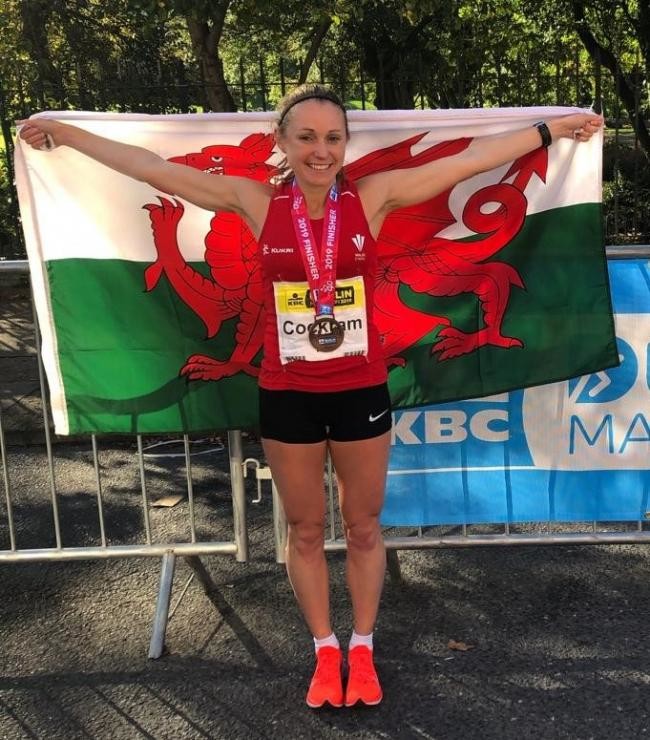
The 28-year-old has enjoyed a much better build-up to the British Olympic marathon trials in Kew Gardens on Friday (March 26), though, which makes her one of the leading contenders for Olympic selection.
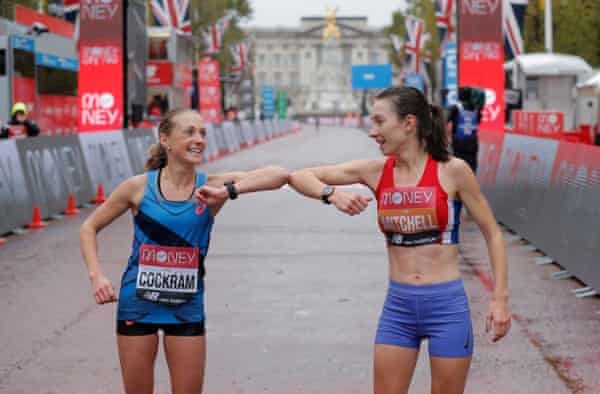
“It’s been a lot smoother than London,” she told AW this week on her preparations for Friday’s big event. “For quite a few weeks after London (last October) I was just focusing getting healthy again.
“But now I’ve got in all the work I wanted to and have had some good consistency. I’m injury free which is the hardest part coming into a race.”
Cockram was a teenage talent who won multiple Welsh titles and the British under-17 indoor 1500m title before going off the boil for a spell until eventually finding her niche in the marathon.
From 2012-15 she studied at Tulsa University in Oklahoma but emerged with a knee injury that was so bad that medics told her “to reconsider her career choice” because running seriously was out of the question.
“I went from 40 miles a week (as a teenager in Wales) to instantly up to 100 miles a week when I went out there and I was constantly burned out and didn’t really perform,” she remembers.
On returning to the UK she realised she needed an operation. “Luckily I had (health) insurance back in the States so I went back there and had knee surgery, which put me out for a year, then I came back just to keep fit initially,” she says.
“I pretty much gave up running after university and then started up again just for fun and did a few mountain running races. But I began training more and in 2017 I ran 2:49 for the marathon in Dublin then 2:45 in Newport in 2018 off cross training. Then I ran 2:35 in Dublin later that year after getting a coach and training more seriously.”
Cockram has been guided by Texas-based coach Tony Houchin for the past four years and the relationship is working. In Dublin in October 2019 she broke Susan Tooby’s long-standing Welsh marathon record with 2:30:49 despite running with a large bruise on her leg after her horse kicked her on the eve of the race.
That performance armed her with the belief that she could beat the Olympic qualifying time of 2:29:30. Conditions in London did not allow it last October but she remains confident she can do it this week at Kew Gardens.
“As a child I wanted to go to the Olympics but I don’t think it was a realistic view back then. Even at university it wasn’t realistic and even going to the Commonwealths didn’t seem realistic back then,” she says.
by Jason Henderson
Login to leave a comment
Tokyo 2020 Olympic Games
Fifty-six years after having organized the Olympic Games, the Japanese capital will be hosting a Summer edition for the second time, originally scheduled from July 24 to August 9, 2020, the games were postponed due to coronavirus outbreak, the postponed Tokyo Olympics will be held from July 23 to August 8 in 2021, according to the International Olympic Committee decision. ...
more...Kiplimo set to star at Campaccio cross country
Reigning world half-marathon champion Jacob Kiplimo from Uganda will be in the spotlight at the 64th edition of the Campaccio in San Giorgio su Legnano when the first leg of the World Athletics Cross Country Permit series takes place on Sunday (21).
The popular Northern Italian cross-country race was originally scheduled for its traditional 6 January date, but it was postponed until the end of March due to the global Covid-19 pandemic. For the first time in its long history, the Campaccio will be held in spring.
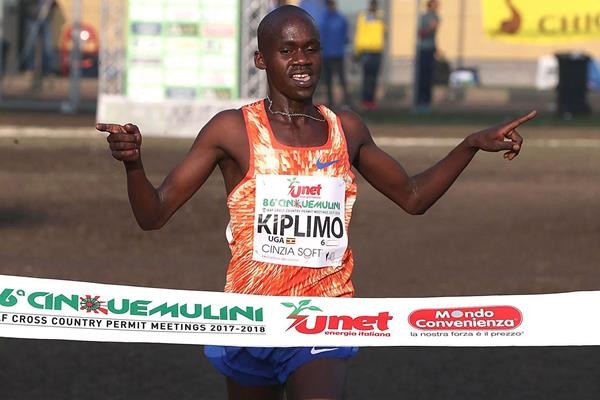
Kiplimo won the world half-marathon title in Gdynia in 58:49 last October and ran the second-fastest time in history over the 21.1km distance with 57:37 in Valencia last December. The 20-year-old also set PBs on the track last year, clocking 7:26.64 in the 3000m in Rome and 12:48.63 in the 5000m in Ostrava. In 2019 he won the world cross-country silver medal in Aarhus. In the build-up to the Campaccio, Kiplimo dominated the men’s race at the Italian Cross Country Club Championships in Campi Bisenzio near Florence in rainy conditions.
Kiplimo will race against his younger brother Oscar Chelimo, who won the BOclassic 5km World Athletics Label road race in Bolzano last December. In 2018 Chelimo finished seventh in the 5000m at the World Athletics U20 Championships in Tampere and won the 3000m at the Olympic Youth Games in Buenos Aires. One year later, the 19-year-old won the world under-20 cross-country bronze medal in Aarhus and finished fifth in the 5000m at the African Games in Rabat.
Another Ugandan runner in the line-up is 2017 and 2018 world mountain running silver medallist Joel Ayeko.
Last year’s surprise Campaccio winner Mogos Tuemay will return to San Giorgio su Legnano to defend his title. The Ethiopian runner set his 10,000m PB in Hengelo in 2019 with 27:23.49 and finished 18th at the World Athletics Cross Country Championships in Aarhus in 2019.
The top Italian runner is Eyob Faniel, who broke Stefano Baldini’s national marathon record with 2:07:19 in Seville last year. Faniel improved Rachid Berradi’s long-standing Italian half-marathon record with 1:00:07 at the Tuscany Camp Half Marathon in Siena at the end of February. Faniel also won the 2019 BOclassic road race and equalled Daniele Meucci’s 10km national record with 28:08 at the San Silvestre Vallecana in Madrid last December.
“I have always used cross-country competitions as preparation for the marathon,” said Faniel. “I finished ninth in 2017 and 10th in 2018 in my previous two appearances at the Campaccio. This year I am in different form, as I trained for shorter distances to prepare for the half-marathon. The turning point in my career was my win at the Boclassic in Bolzano in 2019.”
Faniel will battle for top place among Italian runners against Iliass Aouani, who won the national individual cross country title in Campi Bisenzio last week. Aouani, who graduated in engineering at the Syracuse University in New York, finished fourth at the 2019 World University Games in Naples in the 10,000m and equalled the national indoor mile record with 4:00.07 last year in Boston.
Other Italian runners to watch out for are Yohanes Chiappinelli, who won the European bronze medal in the 3000m steeplechase in Berlin in 2018, plus 2017 European indoor 3000m finalist Yassin Bouih, 2019 world mountain running silver medallist Cesare Maestri and 2017 world mountain running gold medallist Francesco Puppi.
In the women’s race, Lilian Kasait Rengeruk from Kenya will be bidding to win the Campaccio title for the second time, three years after her triumph in 2018. Rengeruk won the world cross country bronze medal in 2017 and finished fifth in the 5000m at the 2019 World Athletics Championships in Doha with her PB of 14:36.05.
Rengeruk will take on Winfred Mutile Yavi, who finished fourth in the 3000m steeplechase in Doha and won the past two editions of the Cinque Mulini Cross Country Permit race in San Vittore Olona in 2019 and 2020. Yavi clocked a world all-time best in the indoor 2000m steeplechase with 5:45.09 in Lievin last February.
The line-up also features Ethiopia’s Tsehay Gemechu, who finished sixth at the 2019 World Athletics Cross Country Championships in Aarhus.
Nadia Battocletti leads the Italian contingent. Battocletti won two consecutive European under-20 cross-country gold medals and the European under-20 silver medal in the 5000m in 2019. The daughter of former Italian cross-country star Giuliano Battocletti finished sixth in last year’s edition of the Campaccio. She won her first national senior cross-country title in Campi Bisenzio last weekend after being sidelined by an injury problem at the end of January.
The other top Italian runners are Ludovica Cavalli, who won the Italian under-23 titles in the 1500m and 5000m last year and in the 3000m indoors in 2021, plus 3000m steeplechase specialist Martina Merlo (PB 9:41.06).
“Despite the restrictions due to the global pandemic, we managed to put together a world-class field. We are proud to announce that the special guest will be fresh European 60m champion Marcell Jacobs, who will offer his support for all athletes,” said Campaccio Technical Director Marcello Magnani.
Claudio Pastori, President of the local Unione Sportiva Sangiorgese, said: “We are determined to organise the Campaccio race this year. It is important to give a message of hope to the younger generation in this difficult period.”
by World Athletics
Login to leave a comment
Ugandan Jacob Kiplimo is set to star at Campaccio cross country the first leg of the World Athletics Cross Country Permit series takes place on Sunday
Reigning world half-marathon champion Jacob Kiplimo from Uganda will be in the spotlight at the 64th edition of the Campaccio in San Giorgio su Legnano when the first leg of the World Athletics Cross Country Permit series takes place on Sunday.
The popular Northern Italian cross-country race was originally scheduled for its traditional 6 January date, but it was postponed until the end of March due to the global Covid-19 pandemic. For the first time in its long history, the Campaccio will be held in spring.
Kiplimo won the world half-marathon title in Gdynia in 58:49 last October and ran the second-fastest time in history over the 21.1km distance with 57:37 in Valencia last December. The 20-year-old also set PBs on the track last year, clocking 7:26.64 in the 3000m in Rome and 12:48.63 in the 5000m in Ostrava. In 2019 he won the world cross-country silver medal in Aarhus. In the build-up to the Campaccio, Kiplimo dominated the men’s race at the Italian Cross Country Club Championships in Campi Bisenzio near Florence in rainy conditions.
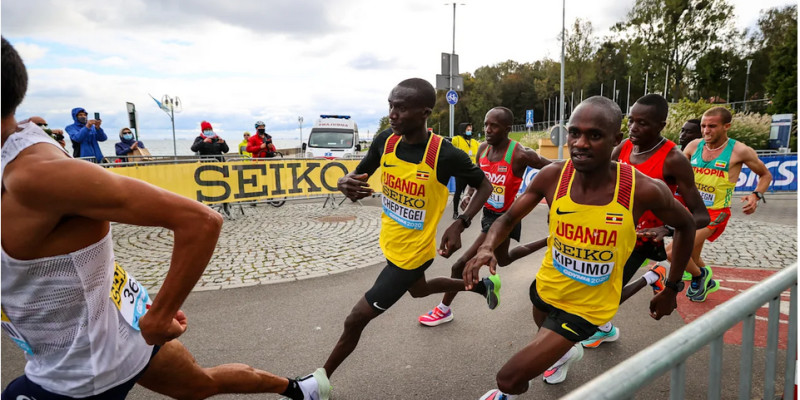
Kiplimo will race against his younger brother Oscar Chelimo, who won the BOclassic 5km World Athletics Label road race in Bolzano last December. In 2018 Chelimo finished seventh in the 5000m at the World Athletics U20 Championships in Tampere and won the 3000m at the Olympic Youth Games in Buenos Aires. One year later, the 19-year-old won the world under-20 cross-country bronze medal in Aarhus and finished fifth in the 5000m at the African Games in Rabat.
Another Ugandan runner in the line-up is 2017 and 2018 world mountain running silver medallist Joel Ayeko.
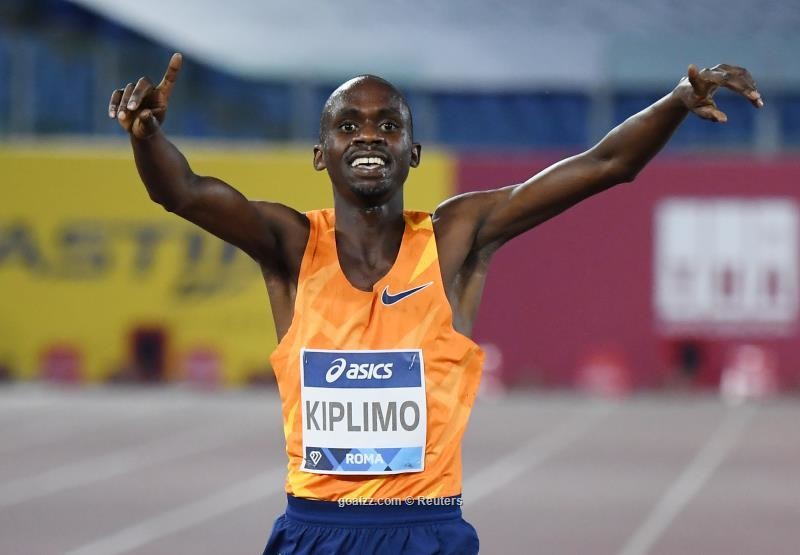
Last year’s surprise Campaccio winner Mogos Tuemay will return to San Giorgio su Legnano to defend his title. The Ethiopian runner set his 10,000m PB in Hengelo in 2019 with 27:23.49 and finished 18th at the World Athletics Cross Country Championships in Aarhus in 2019.
The top Italian runner is Eyob Faniel, who broke Stefano Baldini’s national marathon record with 2:07:19 in Seville last year. Faniel improved Rachid Berradi’s long-standing Italian half-marathon record with 1:00:07 at the Tuscany Camp Half Marathon in Siena at the end of February. Faniel also won the 2019 BOclassic road race and equalled Daniele Meucci’s 10km national record with 28:08 at the San Silvestre Vallecana in Madrid last December.
“I have always used cross-country competitions as preparation for the marathon,” said Faniel. “I finished ninth in 2017 and 10th in 2018 in my previous two appearances at the Campaccio. This year I am in different form, as I trained for shorter distances to prepare for the half-marathon. The turning point in my career was my win at the Boclassic in Bolzano in 2019.”
Faniel will battle for top place among Italian runners against Iliass Aouani, who won the national individual cross country title in Campi Bisenzio last week. Aouani, who graduated in engineering at the Syracuse University in New York, finished fourth at the 2019 World University Games in Naples in the 10,000m and equalled the national indoor mile record with 4:00.07 last year in Boston.
Other Italian runners to watch out for are Yohanes Chiappinelli, who won the European bronze medal in the 3000m steeplechase in Berlin in 2018, plus 2017 European indoor 3000m finalist Yassin Bouih, 2019 world mountain running silver medallist Cesare Maestri and 2017 world mountain running gold medallist Francesco Puppi.
by World Athletics
Login to leave a comment
Joseph Gray, Lee Troop and many more will be inducted into the Colorado Running Half of Fame
Joseph Gray, Lee Troop, Deborah Conley, Lyndon Ellefson, Alan Lind, and Peter de la Cerda will be inducted into the Colorado Running Half of Fame. The Colorado Running Hall of Fame recognizes Coloradans for remarkable achievement and influence on the sport of distance running. Each year nominees are accepted, and in January the inductee class is selected and notified. In February the class is announced. The year 2020 forced the delay of honoring the Class of 2020 in May 2020. As a result, this year we will celebrate the six 2020 honorees plus three additional members will be selected for 2021.
Joseph Gray is an American world champion runner who competes mostly in trail, mountain and snowshoe races. He won the World Mountain Running Championships in 2016 and 2019. He is the first Black American to not only make the Team USA World Mountain Running Team, but also the first Black American to win the USA National Mountain Running Championships and the World Mountain Running Championships.
Joseph has been a 31-time Team USA national team member. He is the only Black American to be part of the U.S. Mountain Running Team at any level. He is an 18-Time USA National Champion and is a 5-time Xterra World Trail Running Champion.
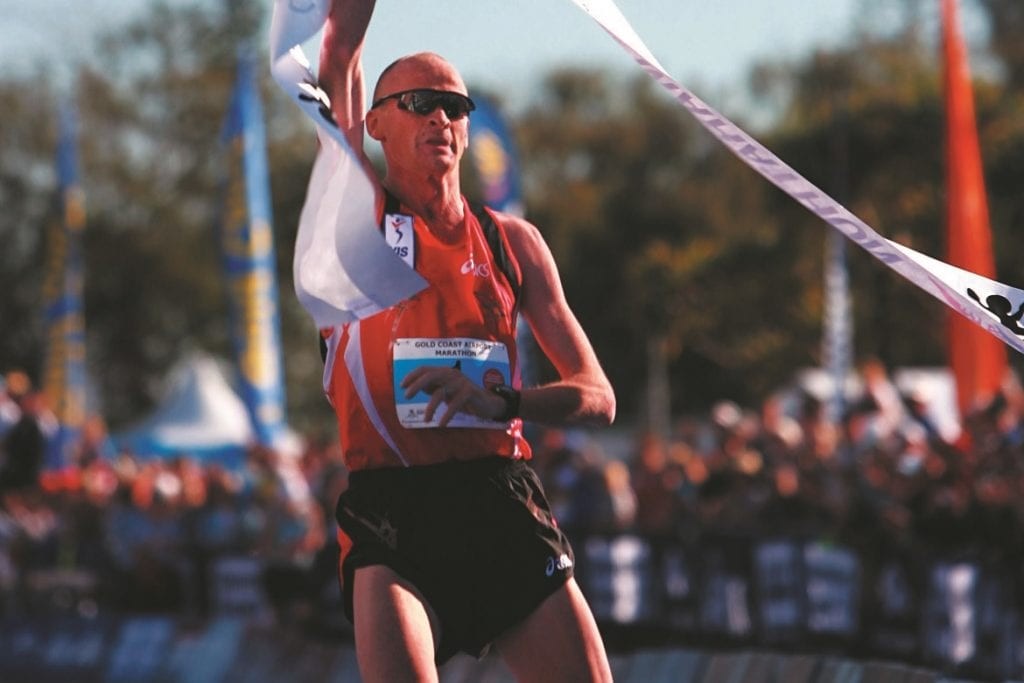
Lee Troop started out as a long-distance track runner and represented Australia in the 5000m at the 1998 Commonwealth Games and attended his first World Athletics Championships the following year. He was a 4X national 10,000m champion and broke the Australian record in the 5000m in 1999. He competed for Australia two times in the World Cross Country Championships and moved up to the marathon distance in 1999 with a 2:11 performance.

Deborah Conley is a Colorado native, and former University of Colorado runner. She was a member of the first women’s Cross Country team to win a conference title. As a master runner, she has been on multiple Cross Country teams that have medaled at USATF Cross Country National Championships and USATF National Club Cross Country Championships.
Peter de la Cerda lives with his wife and five children in Alamosa, CO, where he teaches 7th grade social studies and has coached at Alamosa High School (15 years XC and 7 years track). He is a 2X NCAA Individual National Champion (5000m Indoor ’93, 10,000m Outdoor ’93) and 11X All American.
Alan Lind’s 47 year career in running began at Poudre HS where he achieved a 13th place finish at the ‘76 Colorado State Cross Country meet and 6th in the mile at the State Track meet in the spring of ‘77. At Colorado State University he lettered all four years and ran his 1st marathon in 1978 and followed this with a 2:37 effort in 1980 and ran 2:26 in the next three years.
Lyndon Ellefson lived an adventurous life ending tragically in mid stride as he fell through a glacier crevasse near Cervinia, Italy, 1998. He was there as a member of the original, international Fila Skyrunners Team and was on a high-altitude training run in preparation for the Skyrunning Marathon.
by Colorado Runner
Login to leave a comment
Yes, Walking Is Sometimes Faster than Running Uphill
Top trail runners mix running and walking on steep terrain, but even scientists aren't sure how we choose which is better
There was a time, in my younger days, when I thought I would never walk during a run. I abandoned that philosophy about two-thirds of the way up a mountain in Slovenia, where I was competing in the 2010 World Mountain Running Championships. The course climbed a little over 4,000 feet in 7.5 relentless miles. During one particularly steep section, I finally gave in and started to walk. To my surprise, I didn’t lose any ground to the runners around me. Lesson learned, and I’ve been less dogmatic ever since.
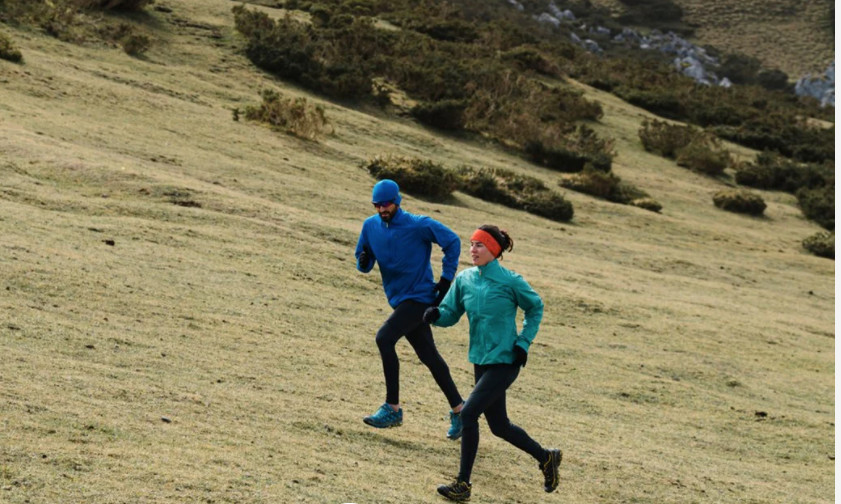
I’m not alone, though. Even among serious trail runners, there’s sometimes a tendency to keep running at all costs, according to Jackson Brill, a Salomon-sponsored trail runner and graduate student in Rodger Kram’s Locomotion Laboratory at the University of Colorado. But when the hills get steep enough, walking becomes inevitable—and the decision about when to switch back and forth between gaits is among the key tactical choices trail competitors have to make. As it happens, Brill and his colleagues have been researching this problem for several years, and a pair of recent studies offer some interesting new insights. The bottom line: “Our research,” Brill says with tongue in cheek, “gives people permission to walk if they want.”
Yes, It’s Running
To understand the transition between running and walking, you have to start with a simpler question: is there really any difference between them on the steepest slopes? Under normal circumstances, one of the key distinctions between the two gaits is that you always have at least one foot on the ground when you’re walking, whereas you leave the ground between each step when you’re running. But that rule of thumb breaks down on steep hills: even when you’re “running,” you never fully lose contact with the ground.
Not convinced? Take a look at this 2015 video of former Locomotion Lab researcher Wouter Hoogkamer running on the world’s steepest treadmill, which is jury-rigged to go all the way up to 45 degrees (i.e. a 100 percent grade). He looks to me like he’s running, but he always has one foot on the ground.
Kram and his team broke out this same treadmill, which has been used for a bunch of previous uphill running research, for a study published over the summer in the European Journal of Applied Physiology. Led by first author Clarissa Whiting, a former Penn track star, the researchers recruited ten elite trail runners and had them run or walk on level ground and with the treadmill set to 30 degrees. That’s steep: typical gym treadmills only go up to about nine degrees, and black diamond ski runs tend to be around 30 degrees.
Sure enough, even though the runners always had one foot on the ground, there were distinctive differences between uphill running and walking. One clue was the stride pattern: on the slope, cadence was 40 percent quicker for running than walking, and feet stayed on the ground for 40 percent less time—a similar pattern, though less pronounced, to what you’d see on level ground.
But the smoking gun came from an accelerometer clipped to the subjects’ waistbands, which measured the rise and fall of their center of mass. On level ground, walking produces two distinct acceleration peaks, one as you land and one as you push off. Running, in contrast, is a series of hops from one leg to the next, producing just one acceleration peak as you land and take off. The accelerometers found exactly the same patterns on the inclined treadmill, confirming that steep uphill running really is running, and not just some sort of bouncy fast-walk.
The Transition
That’s intellectually interesting, but in practice you’ll almost certainly be walking up any 30-degree hills you encounter. So in a separate study that’s currently under review (but available online as a preprint), Brill and Kram recruited another ten elite trail runners to run at zero, five, ten, and 15-degree slopes. The goal was to understand what prompts people to switch from a run to a walk or vice-versa, and determine whether our natural inclinations also correspond to the most efficient approach.
There’s been lots of research on the walk-run transition on level ground. At slow speeds, we burn less energy walking than running; at fast speeds, it’s the other way around. Scientists used to assume that the decision to switch from walking to running was simply a matter of sticking with the most efficient stride. But a series of studies since the 1990s have found that we actually tend to break into a run at slightly slower-than-expected speeds, when walking would actually be more energetically efficient.
There’s no consensus on why this happens, but one theory is that certain muscles in the calves or shin get fatigued or have trouble producing enough force during fast walking, so it’s more comfortable to run even if it costs a bit of extra energy. This makes intuitive sense: think about the feeling of walking so fast that you decide to break into a run. You switch because it’s uncomfortable, not because you’re out of breath.
Brill and Kram found that this pattern persisted at slopes up to ten degrees: the subjects switched from walking to running at a slower speed than the energetically optimal transition. But at the steepest slope of 15 degrees, the difference disappeared and they started running precisely when it became more efficient than walking. Once you’re going up a steep enough hill, it’s hard work regardless of whether you’re walking or running, so it appears that the desire to save energy and be as efficient as possible takes over.
Into the Wild
There’s another more subtle difference between level ground and steep uphills, Kram points out. On the flats, there’s not much ambiguity about whether you should walk or run. At any given speed, one feels right and the other feels wrong. In the mountains, on the other hand, there’s a pretty broad range of conditions where the decision is ambiguous. When you’re walking, you get the feeling that you’d probably be more comfortable running. And that may be true for a brief period of time after you switch, but pretty soon you get the sense that walking might have been more comfortable after all. There’s no stable equilibrium; you oscillate back and forth.
Another detail from Whiting’s study offers some possible insight on this. She attached electrodes to four different leg muscles in her subjects to compare muscle activation under the various testing conditions. The soleus, one of two main calf muscles, showed 36 percent less activity per stride during steep uphill running than during steep uphill walking, which is consistent with the idea that local muscle fatigue triggers the transition. You walk until your legs—and perhaps the calves in particular—get too uncomfortable. Then you start running, which initially feels better but eventually leaves you more out of breath, so you switch back to walking, and the cycle repeats.
For a competitive trail runner like Brill, it would be nice to take away some practical insights about when to switch. In his study, he also tested heart rate as a proxy for figuring out the most efficient transition point. While the heart rate values did correlate with energy consumption, there was too much individual variation to make it useful in the real world. Brill’s next study, when pandemic, fire, and other disruptions permit, will involve trail runners walking, running, or choosing their own mix of the two while climbing an actual mountain. The goal, after all, is to be as fast as possible, not as efficient as possible.
For now, Brill will stick to the approach he’s figured out through trial and error, relying on his intuition about which gait feels best at any given moment. He tries not to switch back and forth too frequently, sticking with each gait for at least 15 to 30 seconds. He doesn’t consult a heart-rate monitor. “It’s great that we’ve done all this research,” he says. “But when I hit the trail I pretty much throw it out the window.”
For more Sweat Science, join me on Twitter and Facebook, sign up for the email newsletter, and check out my book Endure: Mind, Body, and the Curiously Elastic Limits of Human Performance.
by Outside Online
Login to leave a comment
Kilian Jornet drops out of 24-hour running world record attempt, feeling dizzy and seeking medical evaluation
The mountain running superstar swapped trails for tracks in an attempt to beat Yainnis Kouros’ 303.506km record set in 1985
Jornet completes 134km before doctors advise him to seek help for dizzinessKilian Jornet has dropped out of his 24-hour running record due to dizziness. The famous mountain runner did continuous loops of a track in Norway in an attempt to set a new distance covered in a day.
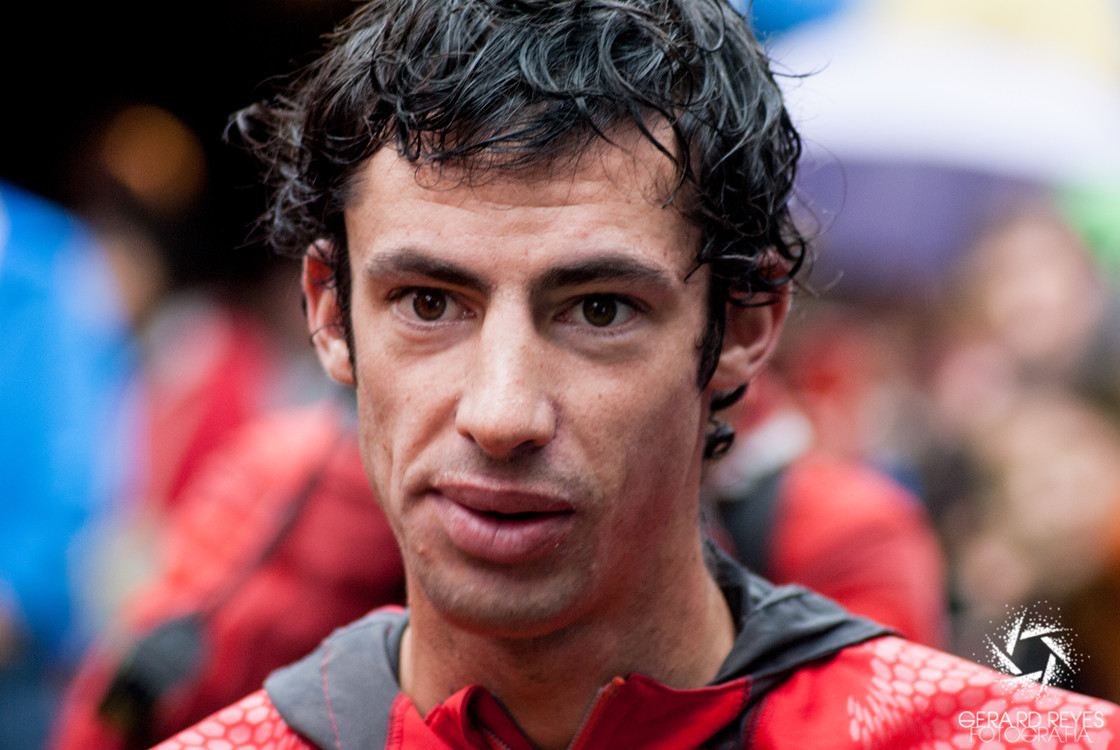
Jornet had run 134km after 337 laps. The record he was going for is Yainnis Kouros’s 303.506km set in 1985.
The Salomon team shared an Instagram story, firstly showing Jornet receiving physio on his knee, then announcing he dropped out and finally explaining: “Kilian was feeling dizzy, so he received medical attention on the track. Although he was feeling better, the medical professionals decided it was best for him to go for further evaluation.”
Kouros, from Greece, is considered the best road ultra runner of all time. His 24-hour record has stood for an incredible 35 years. He also holds the 48-hour record on a track (473km), set in 1996 and the six-day record (1,036km) set in 2005.
Jornet is no stranger to turning over historical records. He set the record on the 106km Bob Graham Round in England in 2018, beating Billy Bland’s time that had stood for 36 years.
Kilian Jornet has dropped out of his 24-hour running record due to dizziness. The famous mountain runner did continuous loops of a track in Norway in an attempt to set a new distance covered in a day.
Jornet had run 134km after 337 laps. The record he was going for is Yainnis Kouros’s 303.506km set in 1985.
The Salomon team shared an Instagram story, firstly showing Jornet receiving physio on his knee, then announcing he dropped out and finally explaining: “Kilian was feeling dizzy, so he received medical attention on the track. Although he was feeling better, the medical professionals decided it was best for him to go for further evaluation.”
Kouros, from Greece, is considered the best road ultra runner of all time. His 24-hour record has stood for an incredible 35 years. He also holds the 48-hour record on a track (473km), set in 1996 and the six-day record (1,036km) set in 2005.
Jornet is no stranger to turning over historical records. He set the record on the 106km Bob Graham Round in England in 2018, beating Billy Bland’s time that had stood for 36 years.
However, the 24-hour record presented a challenge out of Jornet’s comfort zone. He is best known for his domination in the mountains. He has won nearly every high profile trail race, and holds the records at many of them.
He has won the Ultra Trail du Mont Blanc three times, Hardrock 100 four times, setting the course record in 2015 and winning with a dislocated shoulder in 2017.
Jornet has six 31km Sierre Zinal titles, setting the record on his latest win in 2019. He won the Western States in 2011. He also holds seven 42km Zegama-Aizkorri wins in Spain.
“For me it’s an unknown terrain,” Jornet said before his 24-hour record attempt. “If I tell you some predictions I will be lying because I really don’t have a clue. I’ve never ran a race on a track and the longest distance I’ve trained on flat is 90km.”
Login to leave a comment
The Kenya’s National Mountain Running Championship will be Sunday with 500,000KES of prize money confirmed
Athletics Kenya (AK) have set aside Sh500,000 ($4672US) as prize money for the National Mountain Running Championships due Sunday in Naivasha.
AK Mountain Running coordinator, Peter Angwenyi, disclosed Tuesday that the prize money will be for the senior men 10km, senior women 8km and junior men's 8km races.
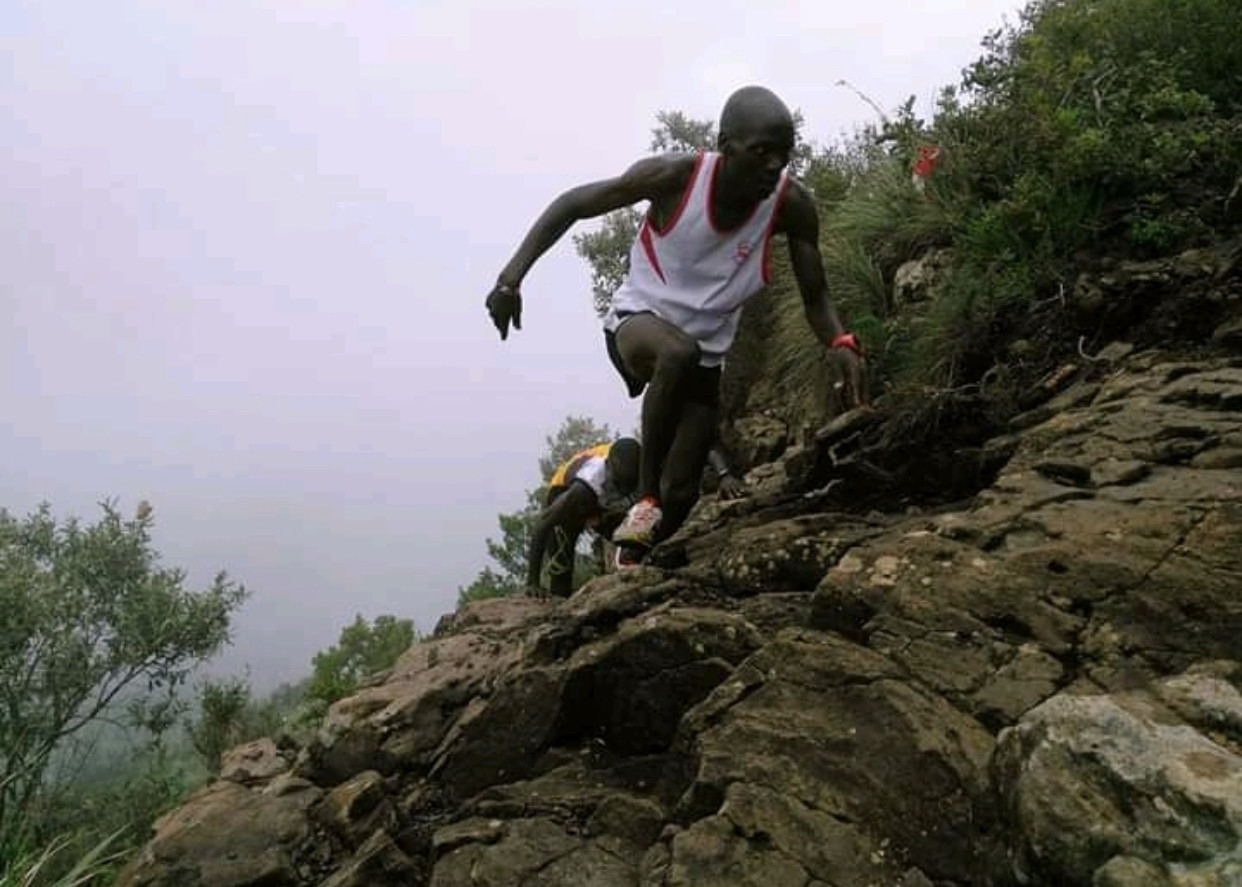
The winner in the men's race will pocket Sh 50,000, second-place athletes Sh25,000 and third-placed Sh20,000 in a prize fund that covers top 10 finishers.
The athlete winning the women's race will get Sh30,000, while second and third-placed athletes will go home with Sh24,000 and Sh19,000 respectively. All those finishing in top 10 vanguard will get cash awards.
Junior men winners will get Sh20,000 with those finishing second and third going home Sh15,000 and Sh 10,000 richer respectively.
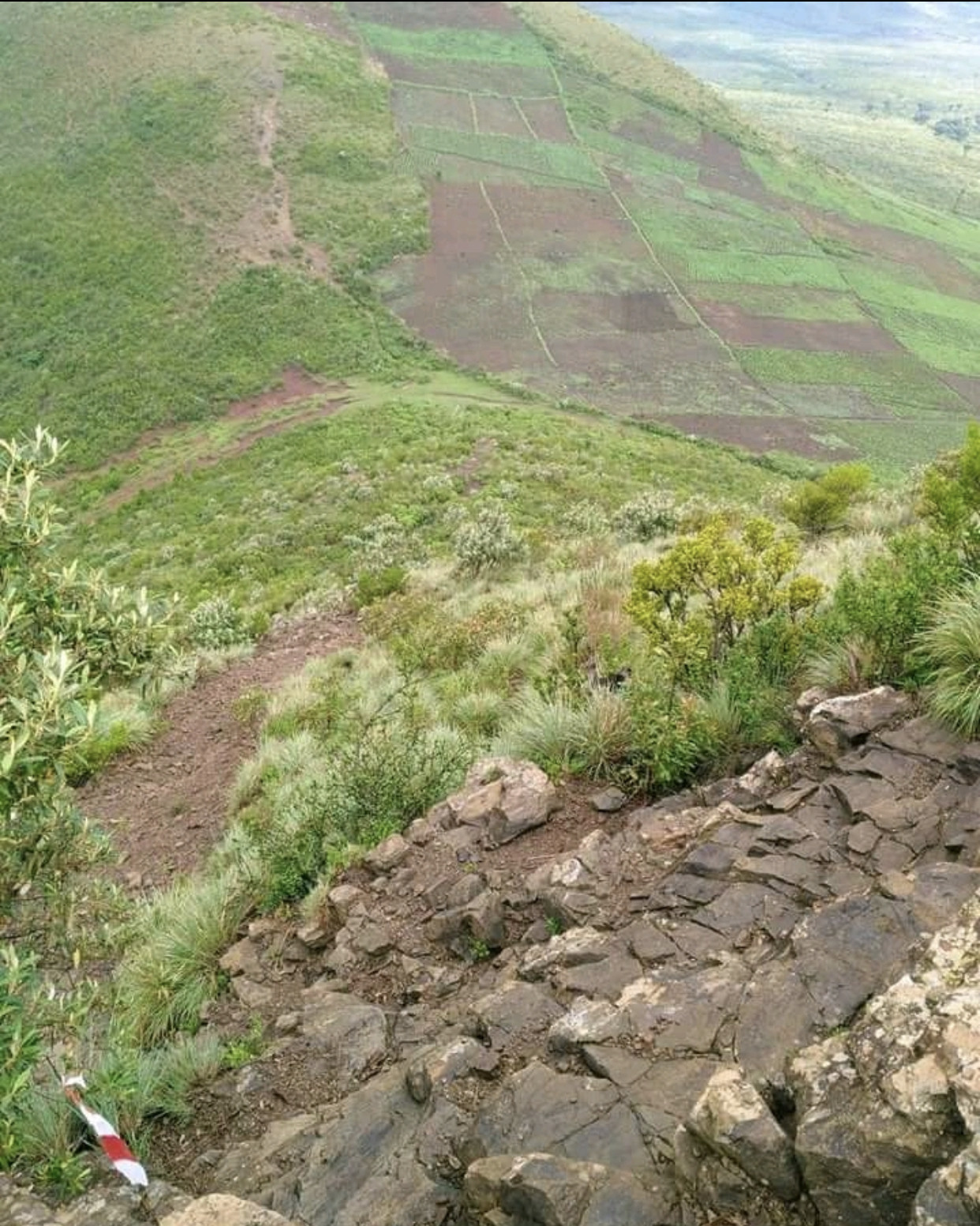
The races that have attracted 300 athletes will start at Cornerstone Preparatory Academy on Mai Mahiu - Naivasha and end at Flyover.
The demanding course will consist of flat track and steep climbing of 930m and downhill of 330m.
Two-time world champion Lucy Murigi is among the athletes expected for the inaugural National Mountain Championships
Also expected in the women's 8km race is the inaugural 2020 Mount Kenya Mountain Running champion Purity Gitonga from Meru, Esther Waweru, who finished second at the Mount Kenya event, and Theresa Omosa from Kisii among others.
It was during the 2018 World Championships where Murigi, Gitonga, Viola Jelagat (silver) and Joyce Njeru teamed up to win the team title.
Geoffrey Gikoni, who has taken part in a series of mountain running circuits in Europe, is the favourite in the men's 10km race that will have the likes of Mount Kenya Mountain Running champion Emmanuel Bor and Dickson Simba.
Also heading to Longonot are Martin Magu and Denis Kemboi.
Interestingly, World Under-20 3,000m steeplechase silver medallist Leonard Bett has registered for the race.
Also UjENA Fit Club from Thika will field a team of ten.
Angwenyi said registration of the event will be done on Saturday at Kamunyaka Mini Supermarket in Longonot, Beryn Hotel in Naivasha, Run2gether Training Camp in Kiambogo and Kobil Petrol Station in flyover.
All the Covid-19 protocols will be maintained during the one day event.
by Ayumba Ayodi
Login to leave a comment
Des Linden and Grayson Murphy to Run in 2020 Mississippi Gulf Coast Half Marathon
The FRESHJUNKIE Racing team has announced that running champions Des Linden and Grayson Murphy will be traveling to Coastal Mississippi to participate in the 2020 Mississippi Gulf Coast Half Marathon on Sunday, December 13, 2020.
In 2018, Des Linden was the first American female to win the Boston Marathon in 33 years and then participated in the Margaritaville 5K, part of the Mississippi Gulf Coast Marathon weekend. Grayson Murphy is the 2019 World Mountain Running Champion as well as the XTERRA Trail Run World Champion.
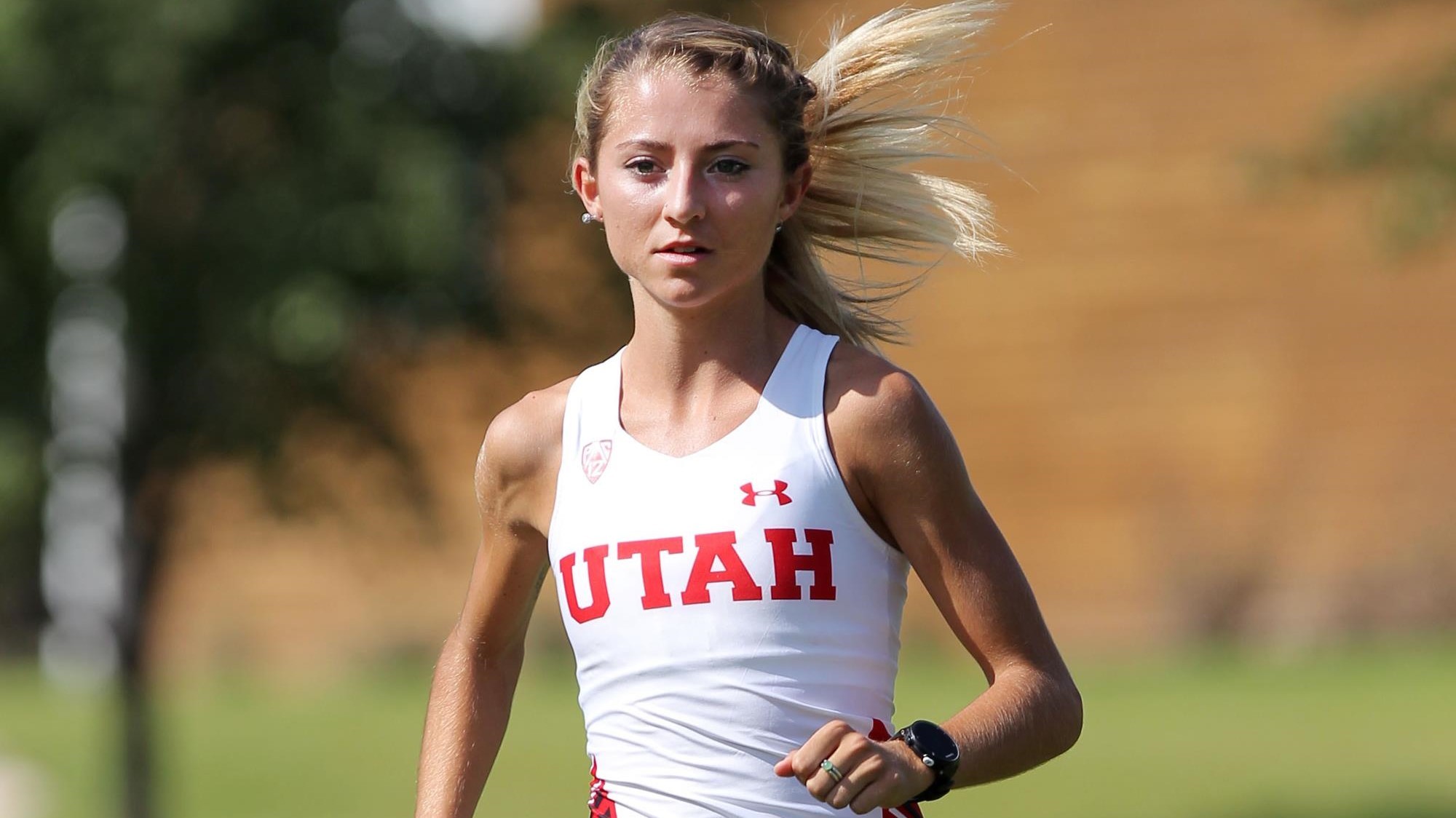
Founded in 2015, the Mississippi Gulf Coast Marathon, a “Coastal Running Fest,” offers participants and spectators an opportunity to explore the rich culture and stunning scenery of The Secret Coast. With a beautiful beach-side run between Pass Christian, Mississippi and Biloxi, Mississippi, runners are invited to participate while enjoying unobstructed views of the nation’s longest man-made beach and the Mississippi Sound.
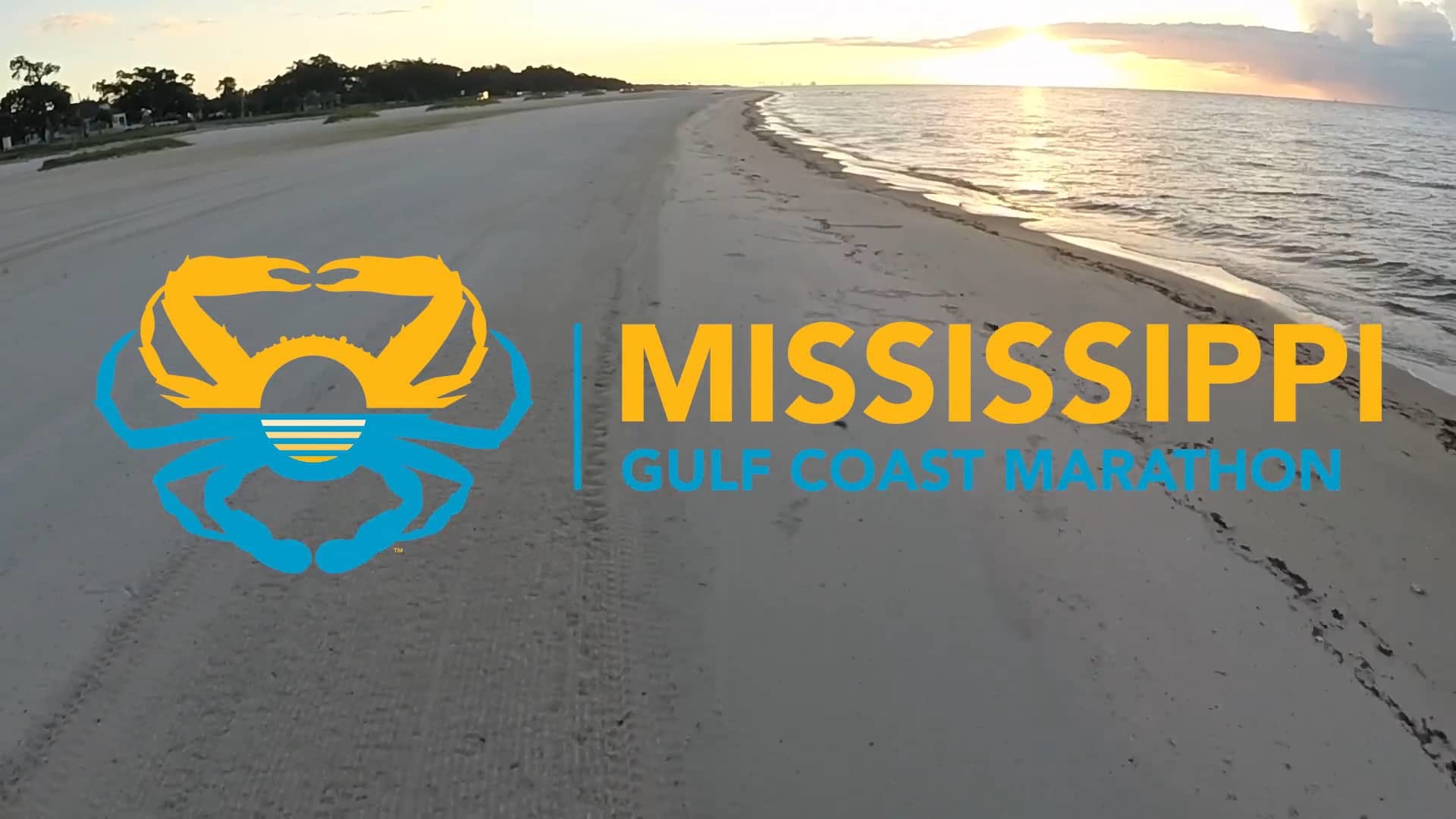
With health and safety as top priority, and in accordance with the Coastal Mississippi Promise of health and safety, the Mississippi Gulf Coast Marathon team continues to closely monitor the COVID-19 situation and guidance from the CDC and other leading health authorities. FRESHJUNKIE Racing is committed to open communication with participants, volunteers, partners, and the racing community, and will continue to update the status of the event with any new information.
"We are thrilled to welcome Des back to the Coast and excited that she is returning to race the Half Marathon alongside Grayson Murphy,” said Craig Sweeney, co-founder of the Mississippi Gulf Coast Marathon. “We are fortunate to have committed partners like Coastal Mississippi who helped to make this opportunity happen."
“It is an incredible honor to welcome such accomplished, world-renowned athletes to our beautiful Secret Coast,” said Milton Segarra, CEO of Coastal Mississippi. “The Mississippi Gulf Coast Marathon is a phenomenal event that truly showcases Coastal Mississippi’s exceptional offerings and unparalleled scenery. With additional plans in place to execute the safest, most enjoyable experience for participants and spectators alike, we look forward to another greatly successful event this year, and for many years to come.”
Login to leave a comment
Mississippi Gulf Coast Marathon
Founded in 2015, the Mississippi Gulf Coast Marathon, a Coastal Running Fest, celebrates the local flare and beauty of running along the scenic beaches from Pass Christian to Biloxi. Races include a marathon (26.2 miles), half marathon (13.1 miles), 5K (3.1 miles) and kids marathon race program (a 1.2 mile fun run). The Coors Light Finish Festival will be held...
more...Competition updates for some of the best races around the world
Here is a round-up of updates relating to international competitions, from cancellations to postponements and confirmations.
This page covers announcements made since the start of July. Up until the end of June, most other significant announcements were incorporated into our 'new normal' reporting pages.
If you're a competition organiser and have news to share regarding the staging of your event, please share it with us.
Boston Marathon (was 19 Apr 2021, now autumn 2021) - postponed
The Boston Athletic Association announced that the 125th Boston Marathon, traditionally held on the third Monday in April — Patriots’ Day in the Commonwealth of Massachusetts — will be postponed until at least the fall of 2021 due to the ongoing Covid-19 pandemic.Announcement (28 October)
Tokyo Marathon (was 7 Mar 2021, now 17 Oct 2021) - rescheduled
The 2021 Tokyo Marathon will be held on Sunday 17 October 2021 with the intention of having an elite and mass race. Further details will be released in due course.Announcement (9 October)
Cross Internacional de Soria (22 Nov 2020) - cancelled
“The current situation in our territory, although much more favorable than in recent times, makes it impossible for us to stage the Cross Internacional de Soria. This Soriana Athletics Delegation, fully supported in its activities by the Soria City Council and the Soria Provincial Council, has therefore decided to cancel the 2020 Cross Internacional de Soria."(8 October)
Athens Authentic Marathon (8 Nov 2020) - cancelled
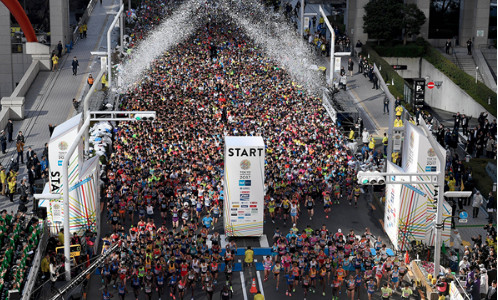
"Even by following a strict manual of rules and regulations - staging only the marathon race and not the shorter races, reducing the number of participants and having all participants to go through a Covid-19 test before the race - it was not enough. It seems that such measures would not secure the absolute safety of runners’ health, which is and will be the top priority in our minds."Announcement (1 October)
Cross de Atapuerca (15 Nov 2020) - cancelled
“Given the evolution of the Covid-19 pandemic and the impossibility of guaranteeing the safety of participants and the general public, it has been decided to cancel the Cross de Atapuerca for this year. We look forward to enjoying this outstanding sporting event again next year."(23 September)
European Cross Country Championships (13 Dec 2020) - cancelled
European Athletics has confirmed the cancellation of the European Cross Country Championships that was due to take place in Dublin, Ireland, on 13 December. As a part of an Executive Board meeting held in Lausanne, European Athletics spoke with the Fingal-Dublin 2020 local organising committee concerning the current Covid-19 situation in Ireland and the impact that this may have on the 2020 European Cross Country Championships. It soon became clear that, due to the overall uncertainty on hosting mass sporting events, the existing sanitary restrictions in Ireland, and the travel restrictions imposed across Europe due to the coronavirus pandemic, it would not be possible to host the event as scheduled.
Valencia Marathon (6 Dec 2020) - UPDATE
Update: The mass race has been cancelled, but the elite races will take place.
World Mountain Running Championships (13-14 Nov 2020) - cancelled
"Together with our friends in the organisation team (Arista events), the local Haria government on Lanzarote and the Spanish Athletics Federation (RFEA), we have decided that this is the best action to take. It is regrettable that our mountain running community and family can not meet and share the experiences together that we have grown to love over the past 36 years of WMRA competitions."Announcement (4 September)
Meeting Città di Padova (12 Sep 2020) - cancelled
"With the impossibility of guaranteeing a competition programme with the presence of a sufficient number of international athletes, due to the global continuation of the Covid-19 pandemic, we are forced to cancel the event."Announcement (31 August)
Amsterdam Marathon (18 Oct 2020) - cancelled
"The 45th edition of the TCS Amsterdam Marathon scheduled for Sunday 18 October 2020 has been cancelled. Despite the significantly modified programme, the Municipality of Amsterdam has decided not to grant a permit to the organiser, Le Champion, in light of the rising numbers of coronavirus infections in the capital. The international nature of the marathon and increasingly complex travel options have also been deciding factors behind the decision."Announcement (21 August)
IAU 50km World Championships (27 Nov 2020) - cancelled
"Following the development of the coronavirus situation in Jordan and across the region, it is with regret that we have to inform you of the cancellation of the 2020 IAU 50 km World Championships that was planned for 27th November in Aqaba, Jordan."Announcement (15 August)
Marathon des Alpes Maritimes Nice-Cannes (29 Nov 2020) - cancelled
"Unfortunately, after having tried everything to keep the race going, we find ourselves obliged to cancel the 2020 edition of the Marathon des Alpes Maritimes Nice-Cannes. To stem the spread of the coronavirus epidemic which is currently affecting France, the Mayor of Nice, Christian ESTROSI has just decided to cancel the sporting events which bring together more than 300 competitors scheduled in Nice on the calendar for this end of year 2020."Announcement (15 August)
Paris Marathon (15 Nov 2020) - cancelled
"Faced with the difficulty that many runners, especially those coming from abroad, had in making themselves available for the 14th / 15th November, it was decided that it would be better and simpler for those concerned if we organised the Schneider Electric Marathon de Paris in 2021."Announcement (12 August)
Frankfurt Marathon (25 Oct 2020) - cancelled
The race organisers have decided to cancel the Mainova Frankfurt Marathon 2020. The 39th edition of Germany’s oldest city marathon was to have taken place on 25 October. "We have not taken this step of cancellation lightly and have done our utmost to find solutions and alternatives," says race director Jo Schindler. "Now we have to face the cold reality that cancellation is inevitable."Announcement (11 August)
Nairobi Continental Tour Gold Meeting (was 26 Sep 2020, now 3 Oct 2020) - rescheduled
The Kip Keino Classic, a World Athletics Continental Tour Gold meeting which was moved to 26 September, was rescheduled once again and will take place on 3 October.
Doha Diamond League (25 Sep 2020) - rescheduled
The 2020 Wanda Diamond League today announced a further change to its 2020 calendar, with the date for the Doha Diamond League brought forward by around a fortnight. The fifth meeting of the season was scheduled for 9 October after it could not be held as the traditional season opener in April, but will now take place instead on 25 September. The plan is to stage 12 disciplines. A list of athletes who will compete in the Qatari capital will be announced in due course.Annoucement (3 August)
Valencia Half Marathon 2020 - cancelled
The 2020 Medio Marathon Valencia Trinidad Alfonso EDP, scheduled for Sunday 25 October has been cancelled due to the ongoing COVID-19 situation. In a statement, the organisers said: "SD Correcaminos (running club), the organiser of the Valencia Half-Marathon Trinidad Alfonso EDP, after fully appraising the health situation and consulting all the authorities involved, hereby announces the cancellation of the 30th edition of the race. The results of the appraisal and consultation showed that it was impossible to go ahead with the race, which was scheduled for the 25th of October 2020."Announcement (30 July)
Great Ethiopian Run (15 Nov 2020) - postponed
"The 20th edition of TOTAL Great Ethiopian Run International 10km was scheduled to be held on 15 November 2020. However, due to the current situation of Covid-19, we are forced to postpone the race. We will announce the new date on a later date. Please bear with us while we work through the details to deliver the 20th edition of our flagship race."Announcement (27 July)
Nanjing Continental Tour Gold Meeting 2020 - cancelled
Following the decision taken by China's National Administration of Sports to suspend all international sporting events until next year, organisers of the World Athletics Continental Tour Gold meeting in Nanjing have announced that the competition will not go ahead this year.Announcement (25 July)
Shanghai Diamond League (19 Sep 2020) - cancelled
Following the decision taken by the National Administration of Sports to suspend all international sporting events until next year, we are sorry to announce that the 2020 Shanghai Diamond League will not go ahead as planned on 19th September. The meeting will return next year, taking its traditional place as one of the early-season events in the Diamond League calendar.Announcement (24 July)
Müller Grand Prix, Gateshead (12 Sep 2020) - cancelled
The Wanda Diamond League today announced a further change to its 2020 calendar. The Müller Grand Prix in Gateshead, UK, scheduled for 12 September to have been the fifth competitive meeting of the season, has been cancelled.Announcement (23 July)
ISTAF (13 Sep 2020) - confirmed
“With 3500 spectators instead of 45,000, the ISTAF will certainly be different this time, but it may be a first small step back to normal," said meeting director Martin Seeber. "We want to set an example for sport and be a beacon for athletics."Announcement (21 July)
Hamburg Marathon (13 Sep 2020) - cancelled
Major sporting events in Hamburg, which have been postponed until late summer and autumn 2020 due to the Covid-19 pandemic that has been raging since spring 2020, will no longer take place this year, but will be postponed until 2021.Announcement (21 July)
Madrid Half Marathon (4 Oct 2020) - cancelled
"The organisation of the Movistar Madrid Half Marathon and the ProFuturo Race announce the cancellation of the 2020 edition, originally scheduled for 29 March and which, due to the coronavirus health emergency, was postponed to 4 October. The circumstances are still not ideal for the celebration of these two sporting events with a joint participation of close to 20,000 people, and the prospect for the coming months does not offer security guarantees for participants, spectators, volunteers and the organisation team either."Announcement (21 July)
Rotterdam Marathon (was 24-25 Oct 2020, now 10-11 April 2021) - postponed
"With pain in our hearts we have decided to reschedule the event due to the ongoing COVID-19 situation. The NN Marathon Rotterdam is now scheduled to take place on the 10th and 11th of April 2021. Every individual runner with a place in the 2020 edition will be able to use their place in the rescheduled event."Announcement (20 July)
Kagawa Marugame Half Marathon (7 Feb 2021) - cancelled
"The 75th anniversary running of the Kagawa Marugame International Half Marathon scheduled for 7 February 2021 will not take place. After careful consideration we determined that, with no visible end to the coronavirus crisis in sight, for the health and safety of participants, volunteers, staff, medical and rescue personnel, fans along the course and everyone else involved with our event, our 75th running must be postponed for one year."Announcement (20 July)
Meeting Liege (9 Sep 2020) - cancelled
"There will be no 19th edition of the Meeting International d'Athlétisme de la Province de Liège this year. The applicable corona measures meant it is not possible to organise the event properly later this summer. The 19th edition can take place in July 2021 and we are also looking forward to the 20th anniversary of this international event in 2022."Announcement (16 July)
Youth Olympic Games Dakar 2022 - postponed
Senegal and the International Olympic Committee have mutually agreed to postpone the Youth Olympic Games Dakar 2022 to 2026. This postponement meets the requirement of responsibility and the concern for efficiency imposed by current circumstances.Announcement (15 July)
Great Birmingham Run (11 Oct 2020) - cancelled
"There’s no option to stage the event as planned, or at a later date in the year."Announcement (15 July)
Chicago Marathon (11 Oct 2020) - cancelled
Event organisers and the City of Chicago announced the decision to cancel the 2020 Bank of America Chicago Marathon and all race weekend activities in response to the ongoing public health concerns brought on by the coronavirus pandemic.Announcement (13 July)
Toronto Marathon (18 Oct 2020) - cancelled
Working closely with the City of Toronto and Mayor John Tory, event organisers Canada Running Series have made the decision to cancel the event due to Covid-19 related health and safety concerns. "We are pleased to announce that we will be transitioning to a virtual event this year, to continue to offer the best possible running and fundraising goals in these challenging times."Announcement (13 July)
Seiko Golden Grand Prix Tokyo (was 10 May 2020, now 23 Aug 2020) - postponed
Originally set to take place on 10 May, the Seiko Golden Grand Prix – a World Athletics Continental Tour Gold meeting – will now be held on Sunday 23 August. “Only domestic athletes will participate,” read a statement on the meeting’s website. “We are also considering allowing high school athletes to play a role. Details will be announced once they are confirmed.”Announcement (13 July)
by World Athletics is
Login to leave a comment
A body was found in search for missing GB mountain runner Chris Smith
The British international athlete was last seen on Tuesday when he left to go running in Perthshire
A body has been found in the search for GB international mountain runner Chris Smith, who went missing while on a run in Perthshire, Scotland, on Tuesday (October 27).
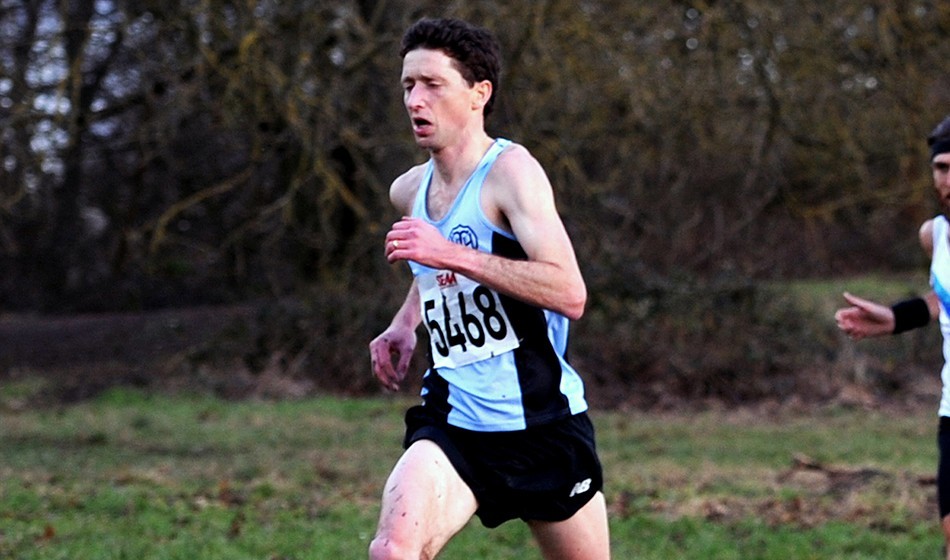
Police Scotland said that formal identification has yet to take place, but the 43-year-old athlete’s family has been informed.
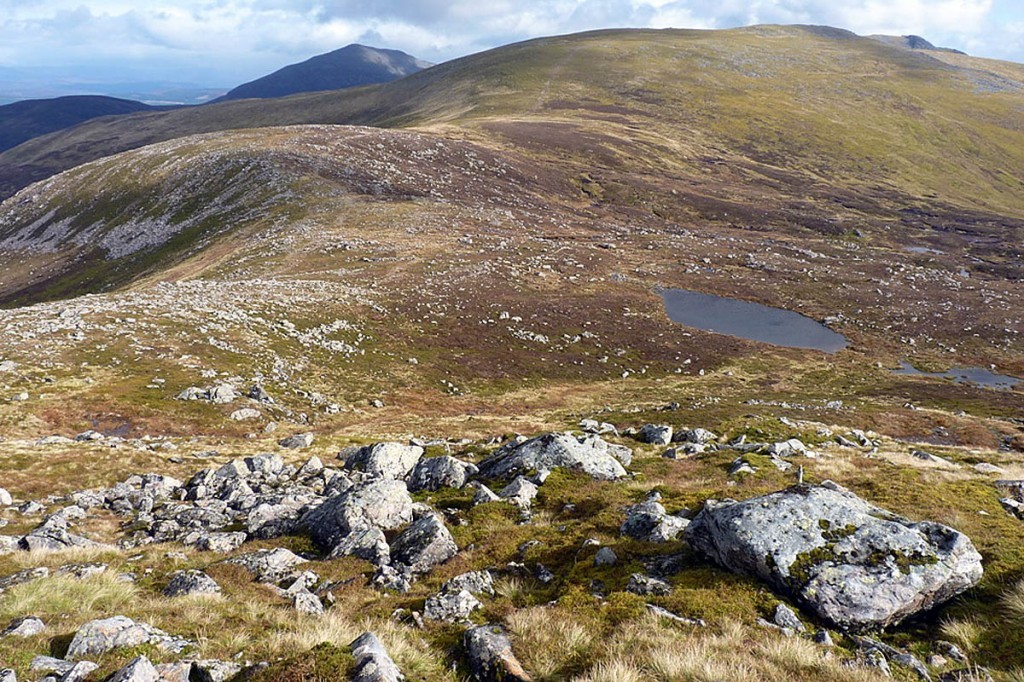
Smith had left from Invervar to run Meall nan Aighean, Carn Mairg, Meall Garbh and Carn Gorm on Tuesday at 3pm but did not return as expected a couple of hours later.
The discovery of a man’s body was made near to Meall Garbh in the Glenlyon area at around 11:50am on Thursday (October 29).
Thames Valley Harrier Smith has raced at multiple world and European mountain running championships, finishing eighth at the European event in 2013 and 10th at the world event in Wales in 2015.
Police Scotland had been working with local mountain rescue teams, with assistance of the Coastguard helicopter, in the search.
“Enquiries remain ongoing and a report will be submitted to the Procurator Fiscal in due course,” a Police Scotland statement added.
On Thursday a fundraising page was created by Smith’s fellow GB international athlete Marc Scott, raising money for Scottish Mountain Rescue.
by Athletics Weekly
Login to leave a comment
The 35th edition of the Swissalpine finds success with new safety concept
The 35th edition of the traditional Swissalpine running spectacle was the acid test for larger running events since the coronavirus struck.
The relief was clear to see for Andrea Tuffli, the Founder and President of Swissalpine. “The concept, which we had completely redeveloped within two months and coordinated with the cantonal administration and the municipality of Davos, has proven itself.
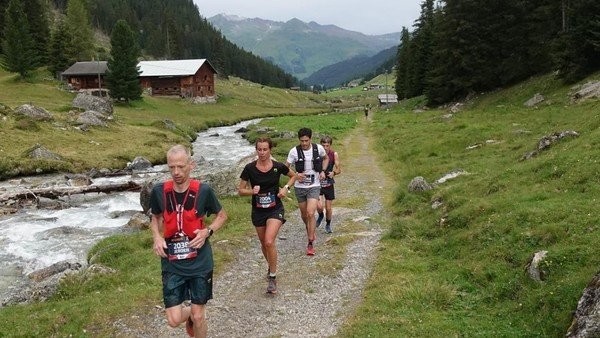
The start and finish area is the most important sector; here we were able to sign the maximum number clearly with block starts of 300 runners and a minimum of helpers from the organization,” said the 78-year-old, pioneer of the Swiss mountain running and trail scene.
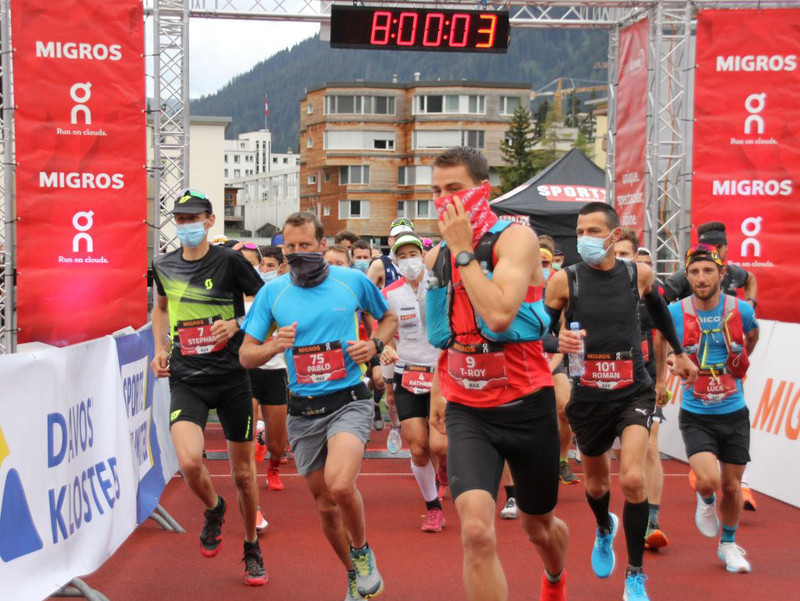
“The block start system with a responsible protection concept worked well, not least because of the discipline of the participants. I can imagine using this system next year, hopefully without masks.”
Swiss Athletics President Christoph Seiler came to get an idea of ​​a major event in which almost 2000 runners competed over the two days of the event. “Davos sets an important example in the running calendar, which has been severely affected by the corona pandemic. It is impressive what Andrea Tuffli and his team have accomplished in a short time.”
by Wilfried Raatz
Login to leave a comment
Swiss Alpine Marathon
The Swissalpine Davos is not only the oldest marathon in Grisons but also the second-largest ultra-marathon in Switzerland. However, it is no longer just the races that are the main attraction. The point is to be part of the mountain-runner community that meets for the annual running event in the Alpine town of Davos. We call it «Swissalpine Spirit». ...
more...2020 Mountain Running Championship in Golden BC Canada have been canceled
The 2020 NACAC Mountain Running Championship in Golden, BC, Canada has been cancelled due to the coronavirus pandemic. Limits on the number of participants in events to no more than 50 imposed by the British Columbia government means the host Golden Ultra will have to be cancelled.
The 17th annual North American, Central American & Caribbean (NACAC) Mountain Running Championships was to be held in conjunction with the Golden Ultra in Kicking Horse Resort in Golden, British Columbia, Canada on Friday, September 18, 2020. The uphill course was 10.3 kilometers with a total of 1205 meters of ascent and 135 meters of descent.
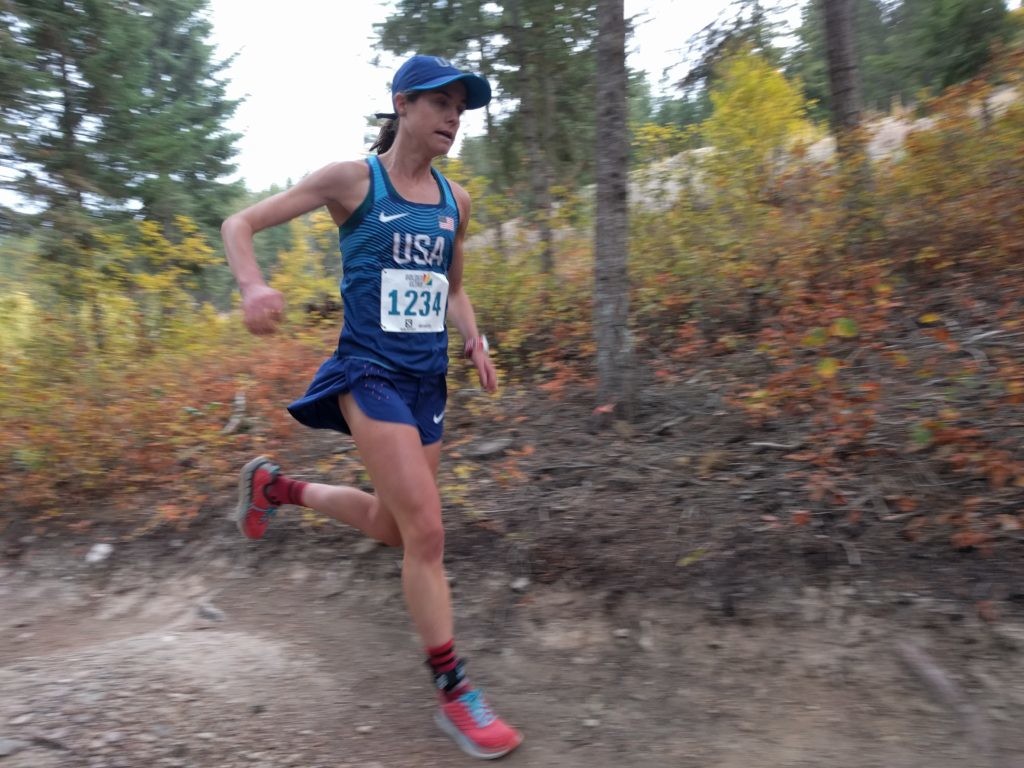
Meghan Roche (second photo) at the 2017 NACAC Mountain Running Championships in Golden, Canada.
This race would also have served as the 2020 Canadian Mountain Running Championships and their selection race for the 2020 World Mountain Running Championships.
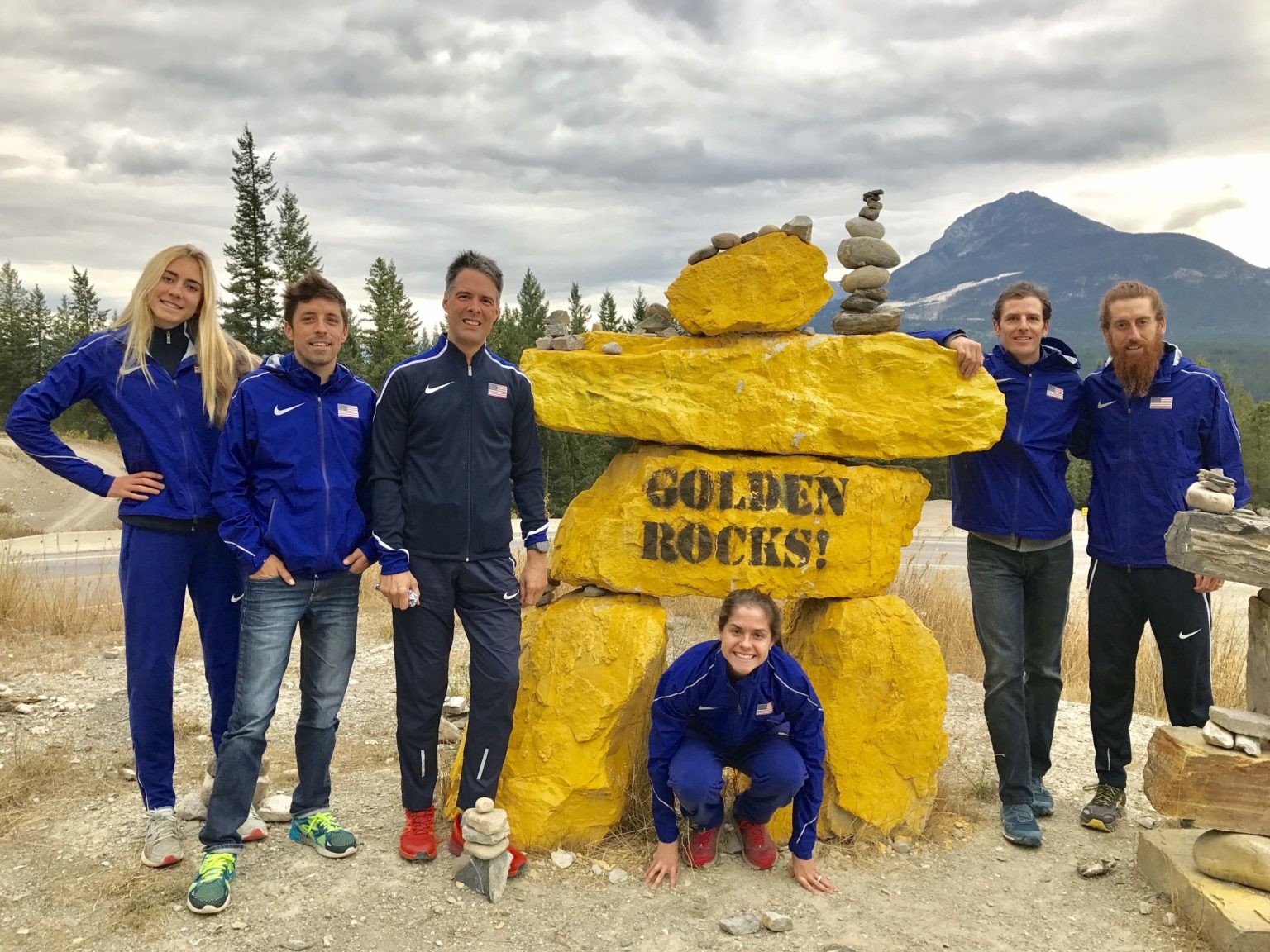
Team leaders from the participating NACAC countries (U.S., Canada, Mexico and El Salvador) deemed it impractical to find a new host race and date by which a safe championship could be held in 2020.
The participating countries are planning to organize a 2021 NACAC Mountain Running Championship to be held in Canada with the host event and date TBD. Selection criteria for the 2021 U.S. team will be announced later in 2020.
Login to leave a comment
To Run or Walk the Hills, That Is The Question
Those old enough to have learned to drive with a manual transmission were probably told they had to shift gears when the tachometer reached a certain RPM. Once you became proficient at it, you simply knew when to shift, by feel or sound, and didn’t need to look at the gauge much less think about it. The same is true of changing between running and walking uphill, but, surprisingly, it isn’t as simple, involving many variables. In fact, it is so complex that the choice of when to run or walk up a hill was the focus of a mountain runner student’s recent honors thesis.
Jackson Brill, a Salomon-sponsored runner and soon-to-be-graduate of the University of Colorado-Boulder, wrote his thesis on “To Run or Walk Uphill: A Matter of Inclination” toward earning his degree in Integrative Physiology. In researching it, he worked with his advisor, prominent CU faculty member, Dr. Roger Kram, Ph.D., Integrative Physiology, who runs the locomotion lab that did the original Nike 4% testing.
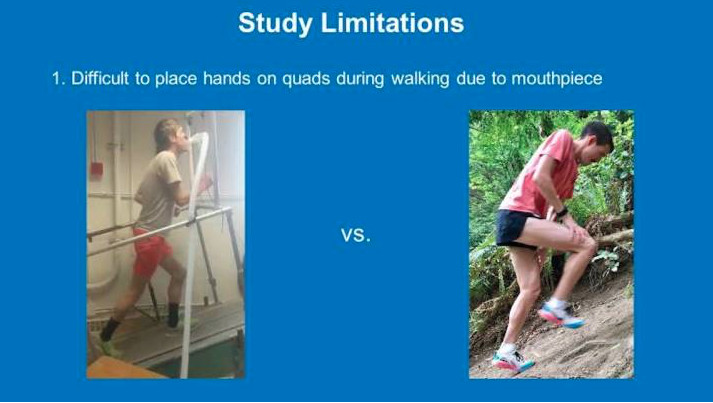
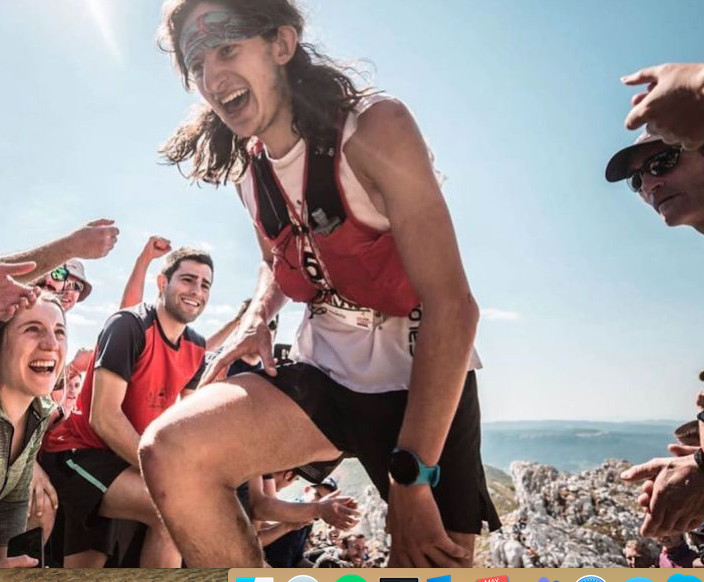
The Study
Brill’s thesis centers on the point at which uphill trail and mountain runners transition to walkers. He measured three different speeds at which this can occur. First is the “Preferred Transition Speed” (PTS), where people prefer to switch—any slower, humans prefer to walk, any faster, they prefer to run. The second is the “Energy Optimal Transition Speed,” (EOTS), where exercise economy — the cost required to maintain a certain speed — indicates transitioning to walking is mechanically better. (Note: Brill shies away from saying “more efficient” as there is no way to truly measure mechanical power in runners.) Finally, there is the heart rate optimal transition speed (HROTS); a third measure that is basically the same idea as EOTS but using heart rate as the efficiency indicator. At HROTS, heart rate is the same between walking and running. Slower than this speed, walking heart rate is lower than running heart rate. Faster than HROTS, vice versa.
Brill’s study set out to examine the effect that incline had on PTS and EOTS, and to determine “how heart rate is influenced by gait selection.” Brill’s hypothesis was that at certain speeds it would be more efficient to walk on steeper inclines and that both speed and incline play into PTS and EOTS. In other words, that both measures would get slower at steeper inclines.
“I thought this would occur because both walking and running are more metabolically demanding at steeper inclines and, thus, there would be greater drive to minimize energetic cost,” he says. “Finally, I hypothesized that HROTS and EOTS would be equal at each incline. I thought this would occur because heart rate generally correlates with energetic cost during steady state endurance exercise.”
Brill based his study on testing ten “healthy, high-caliber, male trail and mountain runners.” He tested the runners in two sessions, one where the treadmill was set at 0 degrees and 15 degrees and a second at 5 degrees and 10 degrees. PTS and EOTS were determined from metabolic cost data for walking and running at three or four speeds per incline near the expected EOTS.
Expected and Unexpected Research Findings
Image Courtesy Jackson Brill
Brill’s study and analysis produced expected and unexpected results. Consistent with prior research, the study showed that at all inclines walking generally required less metabolic power at slow speeds and running required less at faster speeds, and that the transition would arrive at a slower speed on steeper inclines. Also consistent with prior research was that PTS would be less than EOTS at shallow inclines. The reasons we transition sooner than what would be most metabolically efficient is unclear, but theories point to biomechanical factors, such as sparing fatigue on specific muscles.
This changed at a higher incline, however. At 15 degrees, PTS and EOTS were the same. Since this was only on average (not all of the subjects showed this change), Brill is cautious with drawing conclusions “especially because no prior research looked at PTS and EOTS on these steep inclines and, thus, nobody else has validated such a finding,” he says. However, he observes: “There’s physiological plausibility for PTS and EOTS to converge at steeper inclines since the greater intensity of the steeper inclines means that subjects are closer to their VO2 max and energetic cost or oxygen consumption begins to become a limiting factor at higher intensities, unlike lower intensities on the more gradual inclines.”
Unexpectedly, the study determined that HROT did not equal EOTS at all inclines and, accordingly, that heart rate is not a reliable predictor of when a runner will shift to walking. Therefore, athletes and coaches shouldn’t rely on heart rate monitors to govern gait.
Further Questions
As part of Brill’s written conclusion, he states: “Energetic, biomechanical, and neuromuscular factors may influence gait transition, and these should be studied in further detail, especially on inclines commonly experienced by trail and mountain runners, where the question of gait transition has large performance implications.” He says he’d love to delve into the effects of fuel utilization and carb sparing, local fatigue and the relative strength and weakness of specific lower leg muscles.
Image courtesy: Jackson Brill
Brill points out that the study was limited by the fact that the subjects weren’t able to place their hands on their quadriceps or knees to facilitate knee extension during late stance due to the constraints of the mouthpiece and breathing tube that collected expired air. This may have influenced metabolic cost and discomfort, especially at 10 and 15 degrees, and thus artificially distorted the results. Brill’s thesis also recognizes that the limitations of lab-based research eliminated a variety of relevant factors such as the steepness of the incline, length of the climb, ground surface, and the overall duration of the effort, which all weigh on an individual’s gait selection. Those factors are crucial, along with fueling choices, a runner’s unique leg strengths and weaknesses, use of poles or no poles, at what point in the run the incline comes, and, perhaps most importantly, whether there are other runners to pass or be passed by, or observers to cheer or jeer.
Impact of the Study
Brill says he thought this study was “important because many trail and mountain running coaches and athletes believe that deciding whether to walk or run uphill is solely determined by speed or solely determined by incline.” He wants runners and coaches to understand the “nuance and complexity of gait selection.” Additionally, many trail and mountain running coaches and athletes rely on cardiovascular or energetic models in their training—in the sense of VO2 max and anaerobic threshold workouts—and he wanted to determine whether that reliance was well founded. “Furthermore,” he says, “since coaches and athletes often utilize heart rate monitors to approximate cardiovascular stress or energetic cost, I also wanted to learn if this was a useful tool for approximating EOTS.”
Beyond heart rate, Brill says, “The practical importance of this finding is that if someone says ‘I always switch to walking if I’m going slower than 12 minutes per mile’ or, alternatively, ‘I always switch to walking if I’m going steeper than 10 degrees,’ they’re dumb, because ultimately the speed of transition—whether we’re talking PTS, EOTS, or the unknown transition speed that optimizes performance—is a function of both incline and speed, not just one or the other.”
Expected and Unexpected Research Findings
Brill’s study and analysis produced expected and unexpected results. Consistent with prior research, the study showed that at all inclines walking generally required less metabolic power at slow speeds and running required less at faster speeds, and that the transition would arrive at a slower speed on steeper inclines. Also consistent with prior research was that PTS would be less than EOTS at shallow inclines. The reasons we transition sooner than what would be most metabolically efficient is unclear, but theories point to biomechanical factors, such as sparing fatigue on specific muscles.
This changed at a higher incline, however. At 15 degrees, PTS and EOTS were the same. Since this was only on average (not all of the subjects showed this change), Brill is cautious with drawing conclusions “especially because no prior research looked at PTS and EOTS on these steep inclines and, thus, nobody else has validated such a finding,” he says. However, he observes: “There’s physiological plausibility for PTS and EOTS to converge at steeper inclines since the greater intensity of the steeper inclines means that subjects are closer to their VO2 max and energetic cost or oxygen consumption begins to become a limiting factor at higher intensities, unlike lower intensities on the more gradual inclines.”
Unexpectedly, the study determined that HROT did not equal EOTS at all inclines and, accordingly, that heart rate is not a reliable predictor of when a runner will shift to walking. Therefore, athletes and coaches shouldn’t rely on heart rate monitors to govern gait.
Further Questions
As part of Brill’s written conclusion, he states: “Energetic, biomechanical, and neuromuscular factors may influence gait transition, and these should be studied in further detail, especially on inclines commonly experienced by trail and mountain runners, where the question of gait transition has large performance implications.” He says he’d love to delve into the effects of fuel utilization and carb sparing, local fatigue and the relative strength and weakness of specific lower leg muscles.
Brill points out that the study was limited by the fact that the subjects weren’t able to place their hands on their quadriceps or knees to facilitate knee extension during late stance due to the constraints of the mouthpiece and breathing tube that collected expired air. This may have influenced metabolic cost and discomfort, especially at 10 and 15 degrees, and thus artificially distorted the results. Brill’s thesis also recognizes that the limitations of lab-based research eliminated a variety of relevant factors such as the steepness of the incline, length of the climb, ground surface, and the overall duration of the effort, which all weigh on an individual’s gait selection. Those factors are crucial, along with fueling choices, a runner’s unique leg strengths and weaknesses, use of poles or no poles, at what point in the run the incline comes, and, perhaps most importantly, whether there are other runners to pass or be passed by, or observers to cheer or jeer.
Impact of the Study
Brill says he thought this study was “important because many trail and mountain running coaches and athletes believe that deciding whether to walk or run uphill is solely determined by speed or solely determined by incline.” He wants runners and coaches to understand the “nuance and complexity of gait selection.” Additionally, many trail and mountain running coaches and athletes rely on cardiovascular or energetic models in their training—in the sense of VO2 max and anaerobic threshold workouts—and he wanted to determine whether that reliance was well founded. “Furthermore,” he says, “since coaches and athletes often utilize heart rate monitors to approximate cardiovascular stress or energetic cost, I also wanted to learn if this was a useful tool for approximating EOTS.”
Beyond heart rate, Brill says, “The practical importance of this finding is that if someone says ‘I always switch to walking if I’m going slower than 12 minutes per mile’ or, alternatively, ‘I always switch to walking if I’m going steeper than 10 degrees,’ they’re dumb, because ultimately the speed of transition—whether we’re talking PTS, EOTS, or the unknown transition speed that optimizes performance—is a function of both incline and speed, not just one or the other.”
by Podium Runner
Login to leave a comment
For more than a decade, Briton Sarah Tunstall has been among the most successful and visible runners on the World Mountain Running Association
A bronze medal at the 2008 European Championships at 22 and World Championships the following year thrust her into the scene's spotlight. In 2015, she won the WMRA World Cup and in 2017 raced to European silver and took a second world bronze. A fourth place finish in the World Cup standings last year at 33 showed that she's not disappearing from the circuit any time soon, even as the New coronavirus pandemic wreaks havoc with the mountain running season calendar as well.
"2020 looks like it is going to be a strange and stilted season," Tunstall says. "Many races I would run have already been cancelled throughout France, Italy and Switzerland, and rightly so. I’d love to think we could be racing towards the end of the summer but after having the winter off I was in no rush to race anyway and I was already playing the early season by ear."
That also means that she isn't currently based in her usual early season training base in the French Alps, a regular part of her routine since 2015, when she was drawn to the region by a stubbornness to finally get back into the shape of her early career successes after a string of injury setbacks derailed her ambitions.
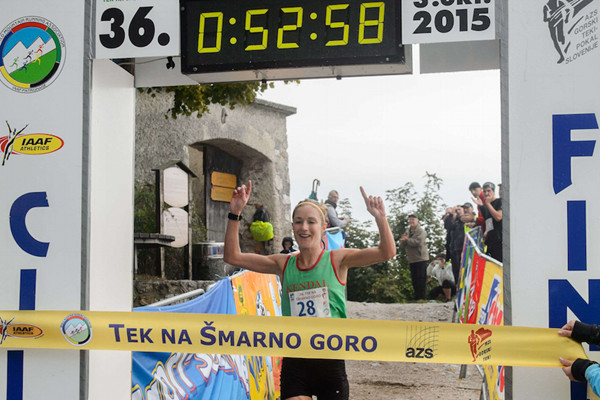
“I was citing the World Championships in Wales as my main excuse to be there - which it was - but having spent so much time there it became very difficult to return to the UK. We've been spending time in the Alps regularly ever since and will try to make it last as long as we can.”
She probably didn’t foresee that alpine lifestyle when she competed in regional and national cross country competitions and fell races as a junior athlete.
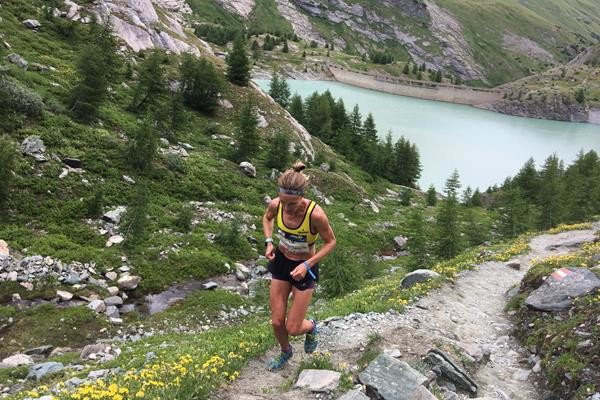
“I would make County cross country and England Fell teams but my best result - which I was delighted with - was finishing 10th at the English National Cross Country in my final year. It sounds like a cliché but I think that enjoying the sport is the main factor that will ensure a good transition (from junior to senior competition). Luckily this should be more likely in the fell/mountain scene as it can be less regimented or monotonous compared to track or road training.”
“If you’re still enjoying running,” she says, “that can be a big part of making the jump up to senior as running becomes more of a personal choice and if you enjoy it you will choose to keep running.”
She made two national teams as a senior in cross country, finishing second in the U23 race at the 2008 European Cross Country Championships and 55th at the World Cross Country Championships the following year. Yet her career and strongest interest still gravitated towards the mountains.
“On a selfish front I’d love them to stay that way so I can enjoy the simplicity of the beautiful races but I don’t want them to die out or get lost amongst the big brands or long, gnarly and overhyped races. I may be a traditionalist, but I find it quite conflicting to the understated sport of mountain running and think that the mountains should be able to sell themselves without excessive marketing."
by World Athletics
Login to leave a comment
In challenging times, Of all the communities within the sport of athletics, mountain runners spend more time outdoors than most
So when restrictions for outdoor activities and exercise are introduced, as has been the case in recent weeks during the coronavirus pandemic, it has been particularly challenging to maintain a decent level of fitness for runners who routinely log anywhere between 100 to 200 kilometres per week.
The World Mountain Running Association (WMRA) spoke to some of the world’s leading mountain runners and found that what united them all was a stronger sense of community and a feeling that this crisis puts running into perspective.
Francesco Puppi, the 2017 world long distance mountain-running champion, describes the situation in Italy.

“Life has changed drastically,” he said. “Everyone is supposed to stay at home and avoid social contacts as much as possible: it's the only weapon we have to fight the virus, and we don’t know how long all this will go on.
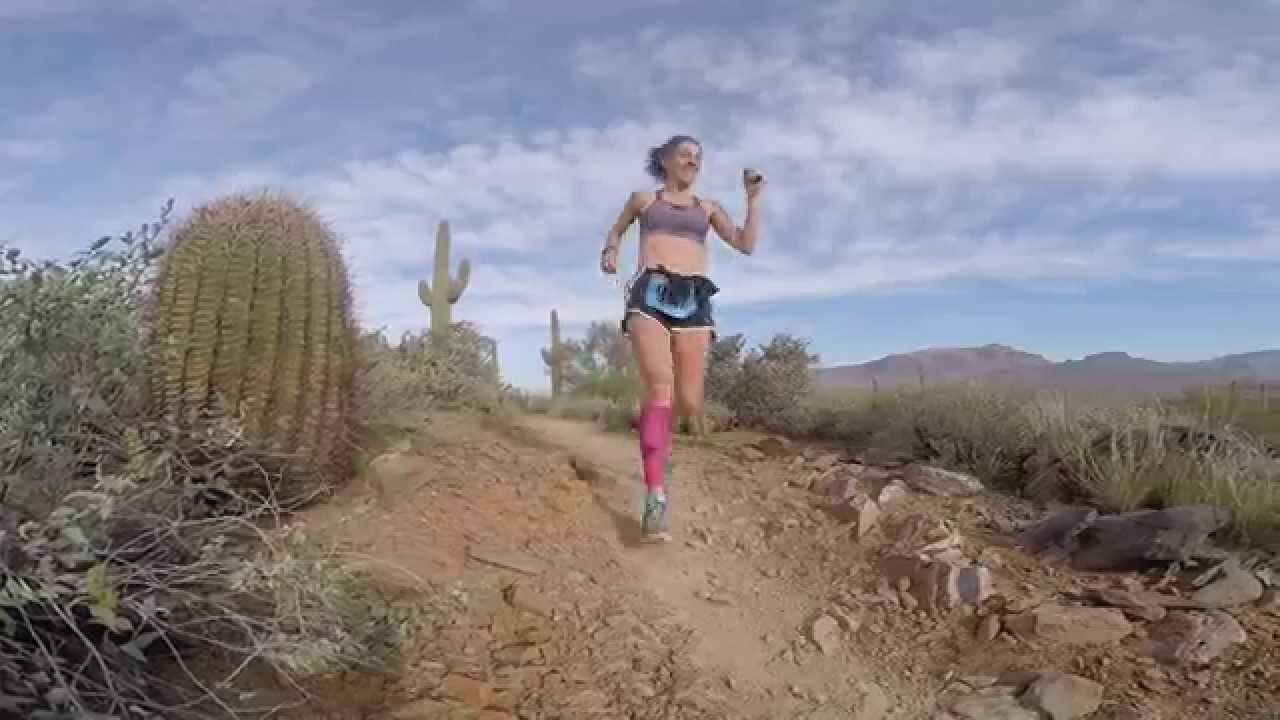
“Running is permitted but only under particular circumstances. I am currently training, just at a slightly lower intensity than before. I think everyone in this situation should have the sensibility to understand if, when and how to run. It should be done with discretion and care. This is a form of respect for those who are suffering.
“It doesn’t mean that all the work I did has been wasted,” adds Puppi, who had been due to compete at the Rotterdam Marathon. “I am still proud of what I managed, of the big effort I put into those 110-mile weeks, the sore legs, the long workouts, of the improvements and setbacks I’ve experienced on this journey. It’s just a matter of re-thinking our goals.
“Keep on running because this is something we love and makes us feel good, even in the worst situation.”
For 2019 WMRA World Cup winner Andrew Douglas, the situation in the UK, and in his home nation of Scotland, is ‘rapidly changing’.
“I’m just trying to appreciate every chance I get at the moment to put my trainers on and head out for a run,” said Douglas, who is anticipating the introduction of stricter measures like those in Spain, France and Italy.
“Undoubtedly it’s disappointing to see this having such a profound impact on races, but personally the effect it has on me pales in comparison to the much bigger issues facing society, so ultimately it’s just about getting some perspective. I had my best ever season last year so that’s something I’m fortunate to be able to have at the back of my mind.
“Like most people, I have not experienced anything like this in my lifetime, so as much as my working environment is changing, my training at the moment is the one ordinary thing I can rely on for the moment in these extraordinary times.”
“When pubs are closed in Ireland, then it's definitely serious,” said Irish runner Zak Hanna.
“The mountains aren't going anywhere any time soon, so just keep calm, weather the storm and we will all come through this. As the Irish Taoiseach Leo Varadkar said, ‘Let it be said that when things were at their worst, we were at our best’.”
Mimmi Kotka, who is from Sweden but lives in France, is into her third day of confinement. The 2018 Marathon du Mont Blanc winner is allowed to exercise outdoors but must stay close to home. “You have to carry a certificate for this too, stating where you live and what your errand outside is,” she says. “Adjusting to new circumstances is part of being human; we need to deal with it. If you’re healthy, be grateful for that. And this is about doing what’s right; after all, running is a leisure activity.”
“In order not to clog up extra resources in hospitals, we're not allowed to go very high up into the mountains,” adds Britain’s Sarah Tunstall, who is based in France. “The mountain rescue teams and workers who control the avalanches at this time of the year are also isolating so it makes the mountains especially dangerous.”
British mountain runner Natalie White, who is currently based in northern Italy, one of the hardest hit areas, says: “Doing our part is going to help not just ourselves but others. Some areas are allowing runners to go out, but close to home and solo. That in itself is a positive to be grateful for.”
It’s not just the athletes who are affected either. Competition organisers have also been hit by the crisis. US runner Max King, who is also race director of the recently cancelled Bend Marathon, asks his fellow athletes for their understanding in these difficult times.
WMRA Council member Nancy Hobbs urges runners to practise social distancing. “It is challenging when running with someone else to not speak, of course, and the further apart you get from someone, the harder it is to communicate,” she says. “However, doing track workouts with friends can be modified. Being creative is the key.
“One of the most important things is to check in with your running friends,” adds Hobbs. “It’s crucial to support one another.”
by World Athletics
Login to leave a comment
How Japanese-Style Training Inspired Jim Walmsley’s Olympic Trials Approach
The Western States 100 record holder has been putting in 175-mile weeks to prepare for Atlanta.
For Jim Walmsley, the 2020 Olympic Marathon Trials will be less about outcome and more about process.
Walmsley, 30, is well-known for his success in ultrarunning as the Western States 100 record holder and four-time Ultrarunner of the Year honoree. On February 29 in Atlanta, he’ll carry that distinction into the championship with the goal of bridging the gap between ultra and marathon runners.
“In a lot of ways I feel like I’m bearing a torch for ultrarunners,” Walmsley told Runner’s World. “The stereotype of most trail or ultra races is that it’s all really slow and you can either take them on for fun or after you’re really done running. [Training for Trials] feels like a responsibility [to show] we work pretty hard and we can hold our own as well.”
By embracing an incredibly high-mileage approach, competing in a variety of races, and being transparent about the highs and lows of training on Strava, Walmsley hopes to shift the conversation.
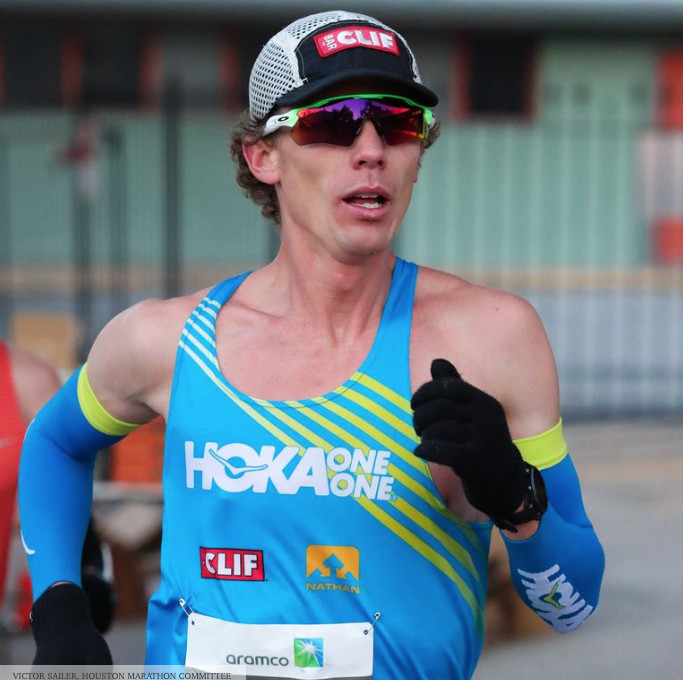
“I think there’s a lot of mutual respect that can be gained,” Walmsley said. “Getting ultrarunners to watch the marathon and marathoners to watch ultrarunning, [we’re] making it about running rather than distance.”
The Flagstaff, Arizona, native started his running career on the track, where he honed his speed in the steeplechase at the U.S. Air Force Academy. As a senior, he finished 12th at the 2012 NCAA championships. In the NCAA semifinal, he ran a personal best of 8:41.05—nine seconds slower than the Olympic standard—and just missed qualifying for the 2012 Olympic Trials.
After graduation, Walmsley said he went through a difficult time in his life. He was charged with a DUI and later discharged from the military when his unit was caught in a cheating scandal. The events caused Walmsley to sink into a deep depression. Eventually, following the advice of his therapist, he began ultrarunning to feel like himself again.
“Ultrarunning doesn’t take special talent,” he told Runner’s World in 2017. “It takes motivation and the will to achieve something extraordinary. A lot of people are sparked to get into the sport when they are in a low spot.”
His breakout year came in 2016 when he shattered course records at the Bandera 100K and the Lake Sonoma 50 miler. After two missed attempts at winning the Western States 100-Mile Endurance Run, Walmsley finally accomplished his goal in 2018, when he broke the course record with a time of 14 hours and 30 minutes. That same year, he logged nearly 5,000 miles on Strava.
In the fall of 2018, Walmsley shared a surprising goal: He wanted to qualify for the 2020 Olympic Marathon Trials. Rather than try to OTQ in the marathon—which seemed like a more natural fit for the ultrarunner—he decided to aim for the standard in the half marathon (1:04). Many admired Walmsley’s bold aspiration, especially given he had to average 4:53-mile pace to qualify.
At the 2019 Houston Marathon on January 20, Walmsley finished 27th overall in exactly 1:04:00. Afterward, he told Runner’s World that his performance gave him confidence to work toward his goals in the marathon.
“I have some plans up my sleeve to give myself a chance to do something exciting [in Atlanta]—to really push the envelope for myself and make things exciting for people to watch and cheer for an ultra guy,” he said in Houston.
Walmsley carried his momentum from Houston through the rest of 2019. He set the world best in the 50-mile distance (while averaging a 5:48-minute mile), shaved more than 20 minutes off his Western States 100 record, and won the World Mountain Running Championship 14K race.
“It’s probably been my most versatile year of different types of races I’ve tried to take on,” he said.
by Runners World
Login to leave a comment


